Pipturus argenteus
Pisonia aculeata
Pisonia grandis
Pisonia umbellifera
Pittosporum angustifolium
Pittosporum lancifolium
Pittosporum multiflorum
Pittosporum phylliraeoides
Pittosporum revolutum
Pittosporum undulatum
Pittosporum venulosum
Planchonella australis
Planchonella chartacea
Planchonella eerwah
Planchonella myrsinifolia
Planchonella myrsinodendron
Planchonella pohlmaniana
Planchonia careya
Plantago debilis
Plantago gaudichaudii
Plantago hispida
Platycerium bifurcatum
Platycerium hillii
Platycerium superbum
Platycerium veitchii
Platylobium formosum
Platysace ericoides
Platysace heterophylla
Platysace lanceolata
Platysace linearifolia
Platysace stephensonii
Plectorrhiza tridentata
Pleiogynium timorense
Pleioluma papyracea
Pleioluma queenslandica
Pleogyne australis
Pleomele angustifolia
Plumbago zeylanica
Pneumatopteris sogerensis
Poa billardierei
Poa labillardierei
Podocarpus elatus
Podocarpus lawrencei
Podocarpus spinulosa
Podolepis jaceoides
Podolepis neglecta
Podolobium aciculiferum
Podolobium aestivum
Podolobium ilicifolium
Podolobium scandens
Pollia crispata
Polyalthia nitidissima
Polycarpaea corymbosa
Polygala japonica
Polygala linariifolia
Polymeria calycina
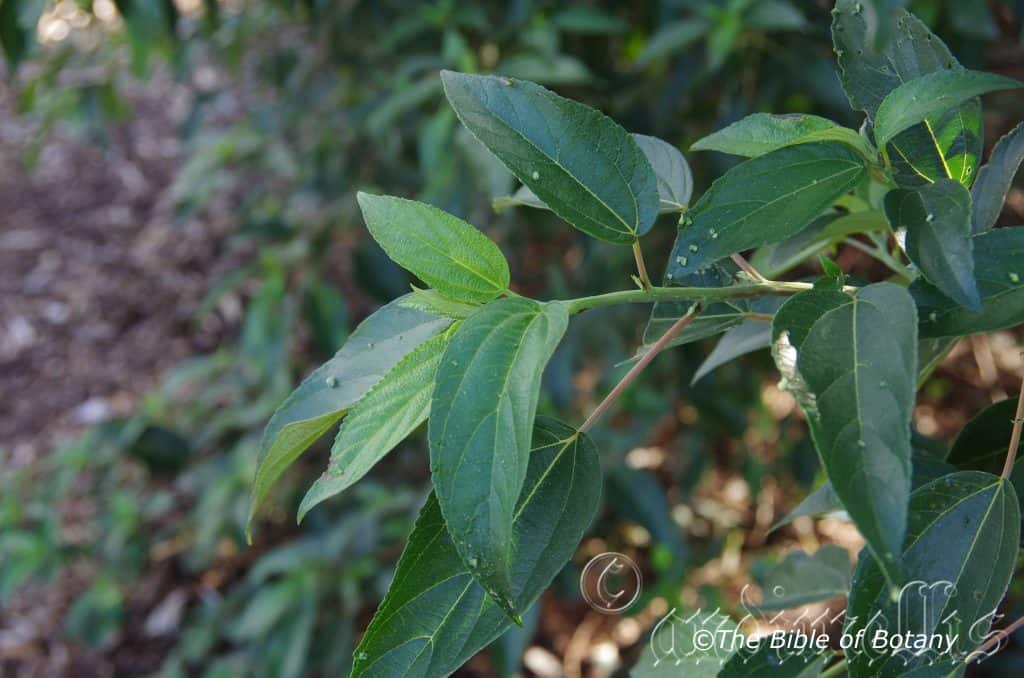
Rosser Park Qld.
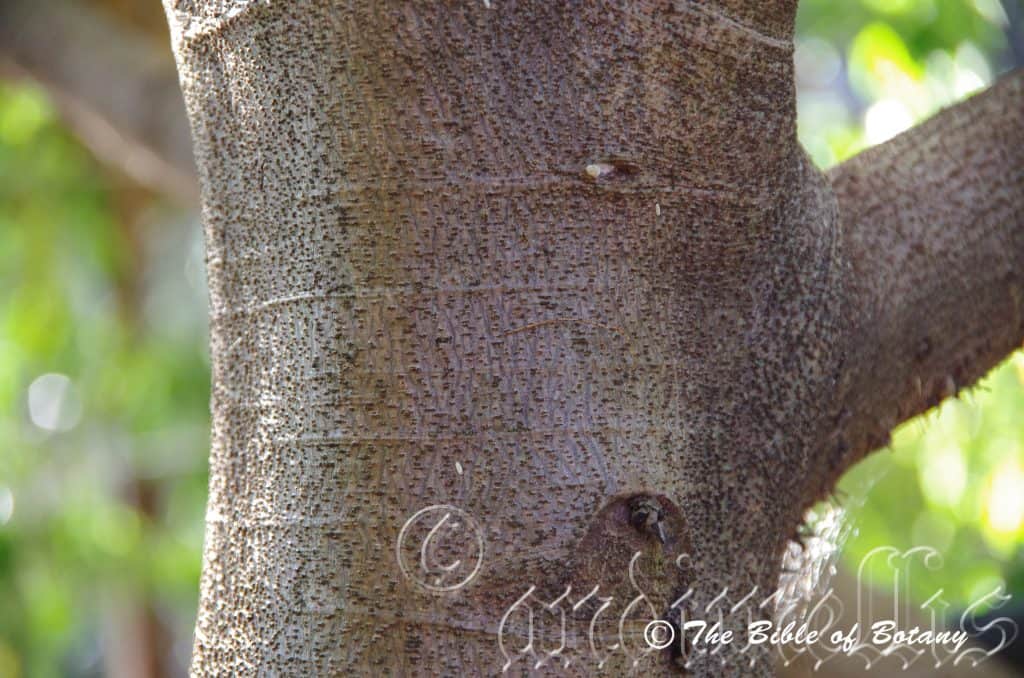
Indigiscapes Capalaba Qld.
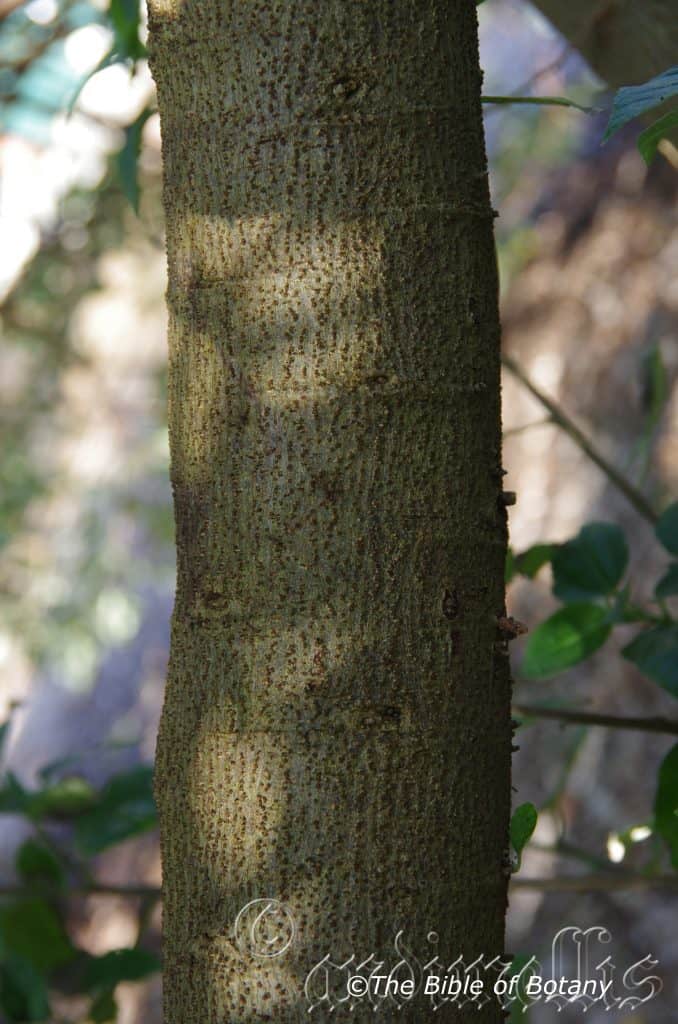
Rosser Park Qld.

Indigiscapes Capalaba Qld.
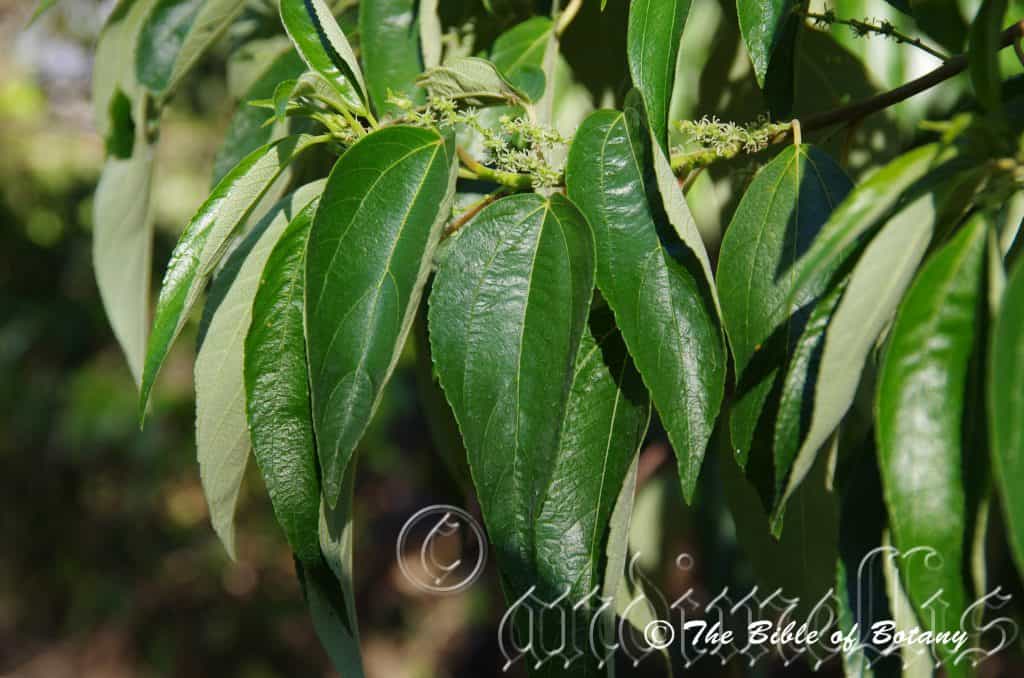
Indigiscapes Capalaba Qld.
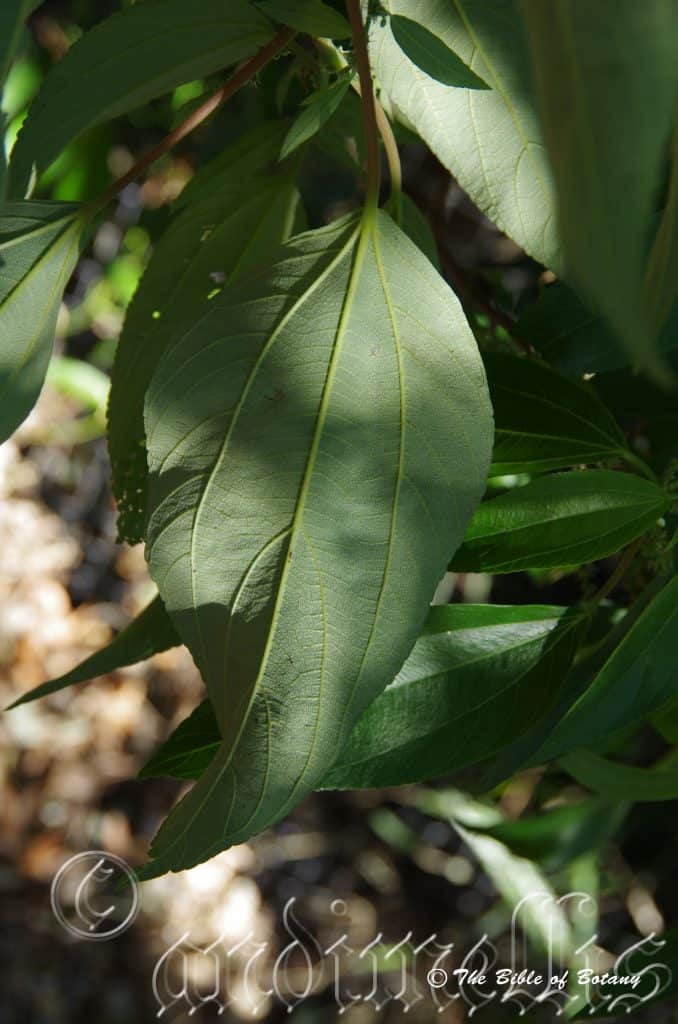
Indigiscapes Capalaba Qld.
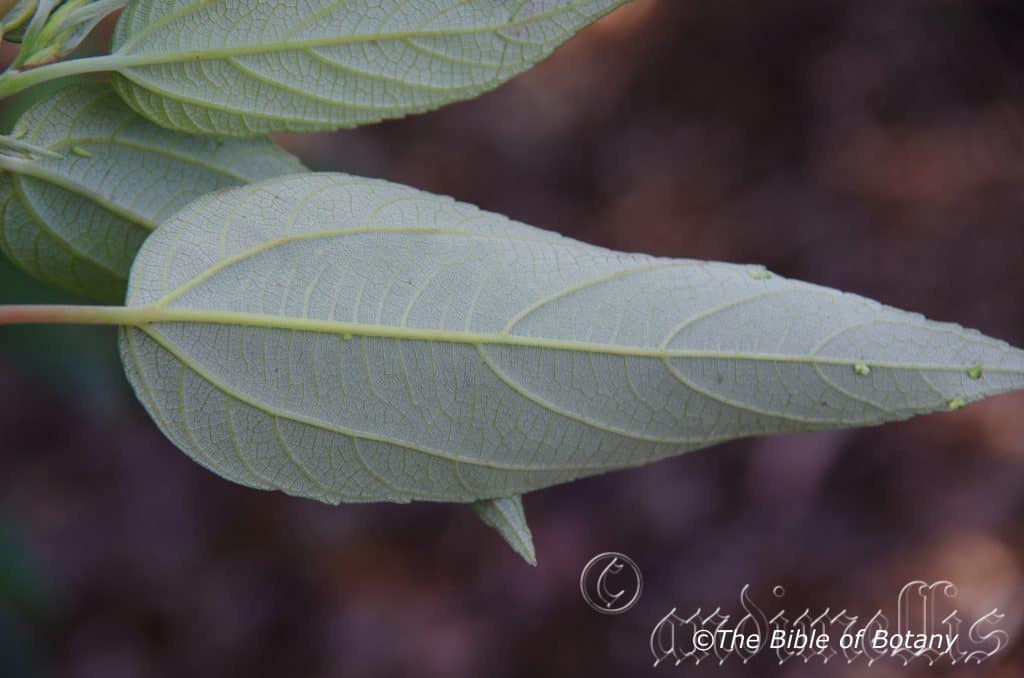
Rosser Park Qld.
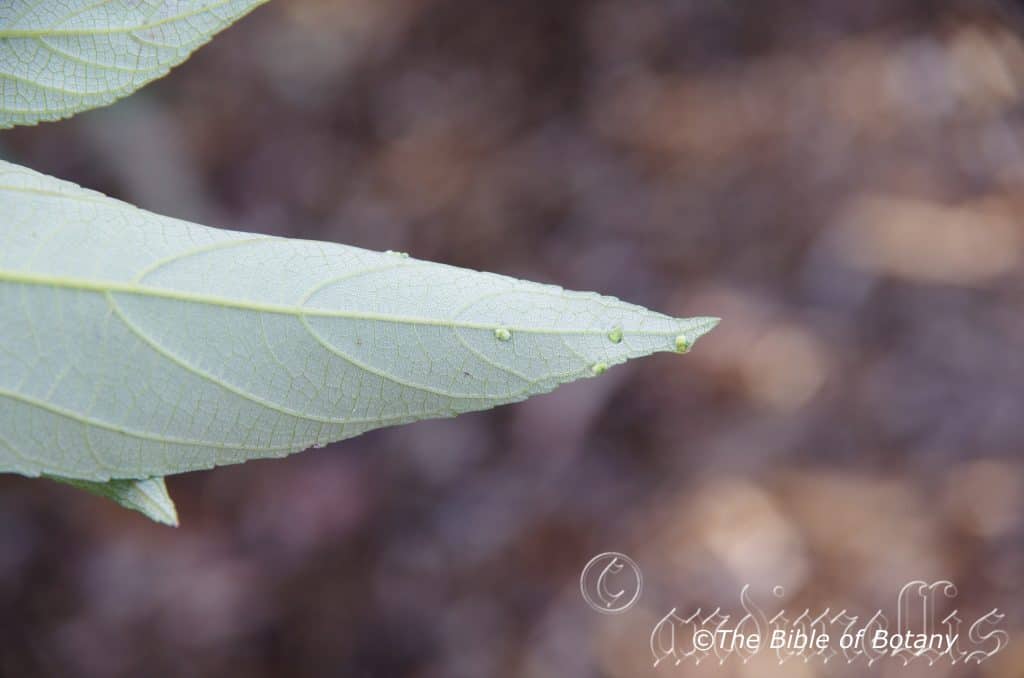
Rosser Park Qld.
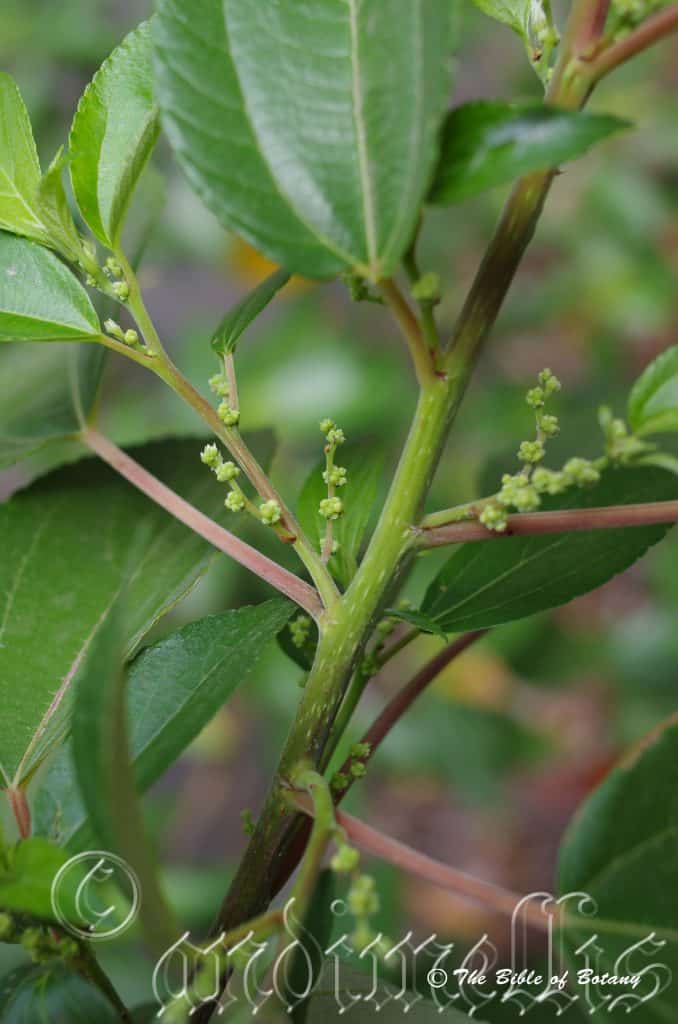
Indigiscapes Capalaba Qld.
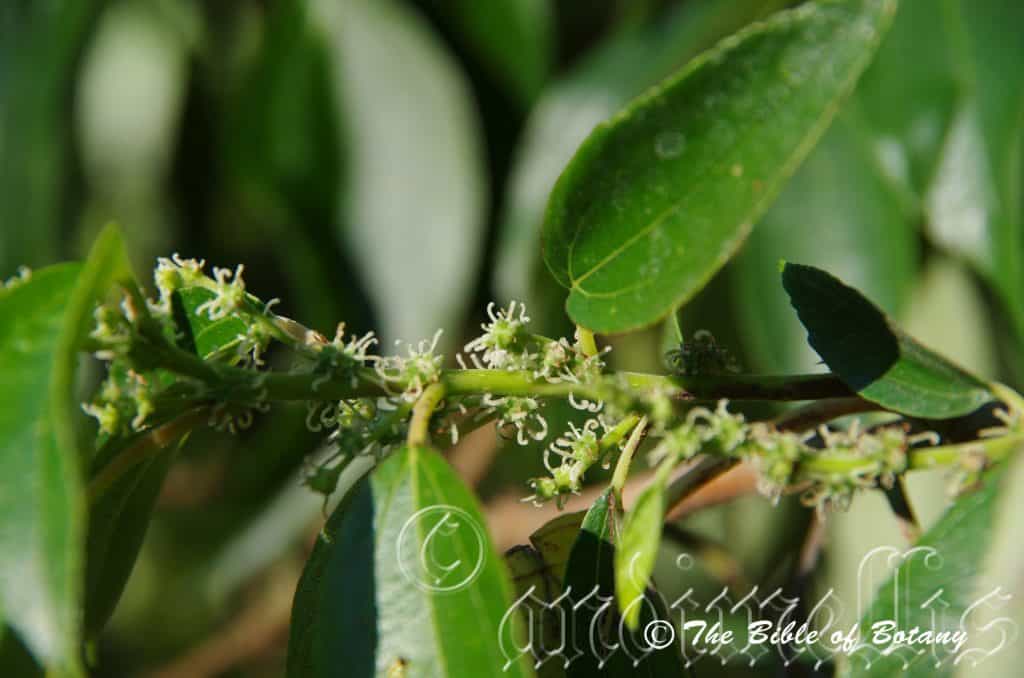
Indigiscapes Capalaba Qld.
Pipturus argenteus
Classification:
Unranked: Eudicots
Unranked: Rosids
Order: Roslales
Family: Urticaceae
Genus: From Pipptos, which is Ancient Greek for to fall and Oura, which is Ancient Greek for a tail. It refers to styles and stigmas, which are deciduous shortly after anthesis.
Specie: From Aárgillos, which is Greek and later Latin for silver. It refers to structures or organs, which is silvery in colour.
Sub specie:
Common Name: Native Mulberry.
Distribution:
Pipturus argenteus is found east from Darwin to near Nhulunbuy on the far north east coast of the Northern Territory.
In the east it is found south from the Torres Straight Islands in far north east Queensland to Lismore in far north eastern New South Wales. It is mainly found on and east of the Great Dividing Range.
https://avh.ala.org.au/occurrences/search?taxa=Pipturus+argenteus#tab_mapView
Habitat Aspect Climate:
Pipturus argenteus prefers dappled shade to full sun. It grows in the mountains in and adjacent to warm well developed rainforests, littoral rainforests, monsoonal forests or moist Eucalyptus forests. The altitude ranges from 5 meters to 900 meters ASL.
The temperatures range from minus 2 degrees in July to 36 degrees in January.
The rainfall ranges from lows of 1400mm to 3200mm average per annum.
Soil Requirements:
Pipturus argenteus prefers better quality light loams to medium clays with a high percentage of leaf litter. The soils are usually derived from decomposed brown or black basalts. The soils pH ranges from 5.5pH to 7pH. It does not tolerate water logged soils. Non saline soils to moderately saline soils are tolerated.
Height & Spread:
Wild Plants:5m to 8m by 4m to 6m
Characteristics:
Pipturus argenteus grows as an erect small open canopy tree. The stems are whippy, pale grey-brown and glabrous. Young shoots are grass-green and glabrous. The ne shoots are sparsely covered in non-stinging hirtellous hairs.
The alternate to almost opposite ovate leaves of Pipturus argenteus measure 80mm to 150mm in length by 45mm to 80mm in width. The base is rounded while the apex is acuminate. The discolourous lamina is sea-green and glabrous on the upper lamina while the lower lamina is off white due to a very dense covering of pale blue to white, fine, soft hairs. The leaf margins are finely and bluntly toothed and flat or curve upwards from the mid vein. The mid vein and 2 main lateral veins are prominent on the lower lamina and are clearly visible on the upper lamina. There is a pair of triangular stipules which measure 6mm to 7mm in length. The petioles are covered in white hirtellous hairs and measure 20mm to 60mm in length.
Inflorescences of Pipturus argenteus are born as globular clusters from the leaf axils. The dioecious spikes measure 10mm to 50mm in length.
The perianths on the male flowers measure 1mm to 1.5mm in length while the anthers are exserted and extend to 2mm on anthesis. The rudimentary ovary and pistillate measure 2mm in length.
The perianths on the male flowers measure 1mm to 1.5mm in length. The pistils are covered in white puberulent hairs and measure 2.2mm in length. The flowers appear from late September to early November.
Pipturus argenteus’s fruits are a succulent spherical aggregate. The aggregates turn white when ripe and measure 5mm to 7mm in length by 5mm to 7mm in diameter. Individual fruits in the aggregate are pyriform and measure 1mm in length. The brown seeds are spindle shape and measure 0.7mm in length.
Wildlife:
Pipturus argenteus is the host plant for the Pencilled Blue Butterfly, Candalides absimilis and the common white migrant butterfly, Catopsilia Pomona.
Cultivation:
Pipturus argenteus is a beautiful shape small tree for the small garden but unfortunately the leaves are often severely eaten and damaged by the above butterflies. In cultivation they will grow from 5 meters to 8 meters in height by 5 meters to 6 meters in diameter.
It grows just as well on medium to heavy soils where deep leaf litter keeps the soil cool and moisture at an even level. If these requirements are met it can cope with temperatures as low as minus 3 degrees and up to 37 degrees. It is moderately drought resistant in their rainfall zones.
Add to the above, if it is given an adequate supply of water and a little native fertilizer on a regular basis the plants will respond with spectacular flowering and copious quantities of fruit.
Be imaginative when planting in mass. Use the plants in different configurations and use curves. Light pruning after flowering or tip pruning will enhance the shrubs bushiness and provide longer stronger flower stems in the following season.
It is best used adjacent to small areas of bush close to paths or the house so their pink flowers can be viewed regularly. It is great in small to large rockeries as a fill in plant. Here they can be planted in small groups of 2 or 3 scattered as you would find them in nature to give a great bush scene. It is best used in the mid ground surrounded by shorter plants with fine foliages with white or red flowers so they will dominate at the center of the bed especially when It is in flower.
Propagation:
Seeds:
The seeds can be removed easily from the plants as they dry. Once Pipturus argenteus has finished flowering and the fruits have swollen place an old sheet below the plants and keep a close eye on it. Peg it down so it doesn’t blow around. When the seeds start to disperse, it can be all over in one day; especially if the weather turns hot, with the seeds being scattered on the ground. Clean the rubbish off and sieve the material for the seeds.
Seeds need to be treated by rubbing between fine sandpaper. Another method is to drop them into hot water and allow it to cool. I have also laid the rubbish out at the time of collecting and burnt it with the seeds still amongst the rubbish. No one method has proven better than the other, with all producing erratic results but better than if I did not treat the seeds.
Sow freshly treated seeds directly into a seed raising mix, keeping them moist not wet. When the seedlings are 20mm to 25mm tall, prick them out and plant them into 50mm native tubes using a good organic mix.
As the seedlings roots reach the bottom of the tubes plant them out into their permanent position. Do not delay.
Cuttings:
Fortunately Pipturus argenteus cuttings strike easy. Use 100mm to 200mm long tip cuttings or lateral shoots from the present season’s growth. Take them in warmer months of the year. Remove half the leaves from the bottom section being careful not to tear the bark.
1 Prepare the cutting mix by adding two thirds sharp clean river sand, one third peat or one third perlite. These ingredients must be sterilized,
2 Select good material from non diseased plants,
3 Select semi green stems for cuttings. Look for a stem with two or three nodes,
4 Place the cutting on a flat, hard surface, and make a clean cut down one side of the cutting at the base for 10mm with a sharp sterile knife or razor blade. – This scarification of the node will increase the chances of roots emerging from this spot. Now remove all but one or two the leaves, leaving the apex leaves in tact. If the leaves are very large in proportion to the stem, cut off the apical halves.
5 Fill a saucer with water, and place a little medium strength rooting hormone into another container like a milk bottle top. Dip the node end of the cutting into the water and then into the rooting hormone. Tap off any excess hormone,
6 Use a small dipple stick or old pencil to poke a hole into the soilless potting mix. Ensure the hole is slightly larger than the stem diameter and be careful not to wipe the rooting hormone off the cuttings base. Place 2 to 4 cuttings in each of the 50mm native tubes,
7 I like to place the tubes in bucket with holes drilled in the bottom to allow excess water to drain out. A plastic bag that fits over the bucket is ideal to help maintain temperature and moisture. Place in a semi shaded, warm position like under 50mm shade cloth.
8 When the cuttings have struck, open the bag to allow air circulation for a few days to a week,
9 Once hardened off remove the cuttings from the bag and allow to further hardening for a few more days to a week,
10 Transplant into a good potting mix to grow on.
Fertilize using seaweed, fish emulsion or organic chicken pellets soaked in water on an alternate basis. Fertilize every two months until the plants are established then twice annually in early September or March to maintain health, vitality and better flowering.
Further Comments from Readers:
“Hi reader, it seems you use The Bible of Botany a lot. That’s great as we have great pleasure in bringing it to you! It’s a little awkward for us to ask, but our first aim is to purchase land approximately 1,600 hectares to link several parcels of N.P. into one at The Pinnacles NSW Australia, but we need your help. We’re not salespeople. We’re amateur botanists who have dedicated over 30 years to saving the environment in a practical way. We depend on donations to reach our goal. If you donate just $5, the price of your coffee this Sunday, We can help to keep the planet alive in a real way and continue to bring you regular updates and features on Australian plants all in one Botanical Bible. Any support is greatly appreciated. Thank you.”
In the spirit of reconciliation we acknowledge the Bundjalung, Gumbaynggirr and Yaegl and all aboriginal nations throughout Australia and their connections to land, sea and community. We pay our respect to their Elders past, present and future for the pleasures we have gained.
Pisonia aculeata
Classification:
Unranked: Eudicots
Unranked: Core Eudicots
Order: Caryophyllales
Family: Pittosporcaceae
Genus: Is named in honour of Dr. William Piso; 15..-1648, who was a Dutch physician who worked in South America and noted the use of the plant Cephaelis Ipecacuanha in the treatment of dysentery.
Specie: From Ac?le?ta, which is Latin for prickly or barbed. It refers to leaves, which have short, sharp points.
Sub specie:
Common Name: Thorny Pisonia.
Distribution:
It is a widespread species found along the coast, off shore Islands, coral cays or along the coastal ranges within 120 kilometres of the coast except for a single isolated population near Hughenden. It is found from Mount Talbot to Derby in the north western, Western Australian coast around the coast to the Clarence River in north eastern New South Wales.
https://avh.ala.org.au/occurrences/search?taxa=Pisonia+aculeata#tab_mapView
Habitat Aspect Climate:
Pisonia aculeata prefers dappled light to bright sun light. It grows close to the water’s edge along the coast, in or adjacent to well-developed Rainforests, dry rainforests especially littoral rainforests and riparian rainforests. The altitude ranges from 5 meters to 750 meters ASL.
The temperatures range from minus 1 degree in July, August to 43 degrees in January.
The rainfall ranges from lows of 520mm to 3200mm average per annum.
Soil Requirements:
Pisonia aculeata prefers soils that are course sands, sandy loams to light clays with or without a high proportion of gravel. The soils are usually derived from decomposed sandstones, basalts, granites, metamorphic rocks as alluvial deposits, accumulated beach sands or accumulated coral sands. The soils pH ranges from 6.5pH to 8pH. It tolerates water logged soils and seasonal water logged soils from tidal surges and floods. Non saline soils to very saline soils are tolerated as are salt laden winds.
Height & Spread:
Wild Plants:8m to 10m by 3m to 5m.
Characteristics:
Pisonia aculeata grows as a small woody climber or scrambling shrub with auxiliary, retrorse prickles. The branches are pale grey-brown and smooth. The main stems are pale grey while the stems are brown and glabrous. The new growth and young shoots are olive-green, glabrous or densely covered in short white pulverulent hairs.
The opposite or almost opposite leaves of Pisonia aculeata are disjunct along the branchlets. The petioles measure 10mm to 20mm in length. The petioles measure 10mm to 20mm in length. The ovate to elliptic leaves measure 20mm to 100mm in length by 10mm to 50mm in width. The bases are broad cuneate to rounded while the apexes are obtuse to broadly acuminate. The concolourous or discolourous laminas are grass-green to mid grass-green and glabrous on the upper laminas while the lower laminas are paler. The laminas are flat while the margins are entire. The mid vein is prominent on the lower lamina and is glabrous to densely covered in fawn pulverulent hairs. The 8 to 10 lateral veins are very slightly prominent on the lower lamina. The midvein is clearly visible on the upper lamina being yellowish-green. The laminas are slightly convex between the lateral veins.
Inflorescences of Pisonia aculeata are born dense, unisexual, axillary cymes. The round to angular peduncles and pedicels are densely covered in fawn pulverulent hairs. The peduncles measure 4mm to 6mm in length while the pedicels measure 0.5mm to 1mm in length.
The pale yellow-green male perianth tubes measure 4mm to 4.5mm in length while the 5 pale yellow-green broad triangular teeth measure 0.5mm to 1mm in length.
The pale yellow-green female perianth tubes measure 3.5mm to 4mm in length while there are 5 obscure broad triangular teeth. The flowers appear from late October to February.
Pisonia aculeata’s fruits are elongated fleshy capsules with 5 distinct longitudinal ribs. The capsules measure 10mm to 12mm in length by 3mm to 4.8mm in diameter. The 5 longitudinal ribs are covered in thick, stiff, sticky glandular hairs. The capsules ripen from December to April or sometimes as late as May.
Wildlife:
Pisonia aculeata’s do not appear to have any predators though the fruits may be sparingly eaten by sea birds flying foxes and native rats.
Cultivation:
Pisonia aculeata is not the vine to plant close to paths. It is an interesting addition for the rainforest or moist gullies deep within a rainforest garden. In cultivation they will grow from 8 meters to 12 meters in height by 8 meters to 12 meters in diameter when grown in the open shady position.
It responds very quickly when a small amount of fertilizer is given.
Propagation:
Seeds:
The seeds of Pisonia aculeata can be removed easily from the plants as they dry. Once Pisonia aculeata has finished flowering and the fruits have swollen place and start to split they can be harvested quite easily but be aware of the prickles.
Sow the seeds directly into a seed raising mix, keeping them moist not wet. Place the trays beneath 30mm shade cloth. When the seedlings are 20mm to 25mm tall, prick them out and plant them into 50mm native tubes using a good organic mix.
As the seedlings roots reach the bottom of the tubes plant them out into their permanent position. Do not delay and keep moist until established.
Fertilize using seaweed, fish emulsion or organic chicken pellets soaked in water on an alternate basis. Fertilize every two months until the plants are established then twice annually in early September and March to maintain better health, vitality and flowering.
Further Comments from Readers:
“Hi reader, it seems you use The Bible of Botany a lot. That’s great as we have great pleasure in bringing it to you! It’s a little awkward for us to ask, but our first aim is to purchase land approximately 1,600 hectares to link several parcels of N.P. into one at The Pinnacles NSW Australia, but we need your help. We’re not salespeople. We’re amateur botanists who have dedicated over 30 years to saving the environment in a practical way. We depend on donations to reach our goal. If you donate just $5, the price of your coffee this Sunday, We can help to keep the planet alive in a real way and continue to bring you regular updates and features on Australian plants all in one Botanical Bible. Any support is greatly appreciated. Thank you.”
In the spirit of reconciliation we acknowledge the Bundjalung, Gumbaynggirr and Yaegl and all aboriginal nations throughout Australia and their connections to land, sea and community. We pay our respect to their Elders past, present and future for the pleasures we have gained.
Pisonia grandis
Classification:
Unranked: Eudicots
Unranked: Core Eudicots
Order: Caryophyllales
Family: Pittosporcaceae
Genus: Is named in honour of Dr. William Piso; 15..-1648, who was a Dutch physician who worked in South America and noted the use of the plant Cephaelis Ipecacuanha in the treatment of dysentery.
Specie: From Grandis which is Latin for large and spectacular. It refers to plants, which are rather larger and more spectacular than other species in the genus.
Sub specie:
Common Name: Bird Lime Tree.
Distribution:
Pisonia grandis is a widespread species found along the coast, off shore Islands and coral cays especially along the Great Barrier Reef. It is also found on the coast of Wellesley Island and Mornington Island. In the Northern Territory It is found around Mooroongga Island, Croker Island and Cobourg Peninsular in the Arafura Sea. It may be more widespread; than the map indicates, in the Northern Territory and the Gulf Islands.
https://avh.ala.org.au/occurrences/search?taxa=Pisonia+grandis#tab_mapView
Habitat Aspect Climate:
Pisonia grandis prefers bright sun and will be found growing close to the water’s edge along the coast and on coral atolls. The altitude ranges from 5 meters to 900 meters ASL.
The temperatures range from 3 degrees in July to 40 degrees in January.
The rainfall ranges from lows of 1550mm to 3600mm average per annum.
Soil Requirements:
Pisonia grandis prefers course sands, fine sands, and sandy loams to light clays with or without a high proportion of gravel. The soils are usually derived from decomposed sandstones, basalts as alluvial deposits or accumulated coral sands. The soils pH ranges from 5pH to 8pH. It does not tolerate water logged soils though seasonal tidal surges are tolerated. Non saline soils to extremely saline soils are tolerated as are salt laden winds.
Height & Spread:
Wild Plants:8m to 20m by 8m to 10m
Characteristics:
Pisonia grandis grows as a small, erect, open, canopy shrub. The trunk is pale grey-brown and smooth. The branches are pale grey-brown tending to olive green then to grass-green and glabrous. Young shoots are grass-green, glabrous and have the scars of fallen leaves. The trunk, branches and stems are frequently covered in white lime from sea bird droppings.
The opposite or almost opposite leaves are crowded near the end of the branchlets. The asymmetrical broad elliptical to elliptical-oblong leaves measure 160mm to 300mm in length by 70mm to 160mm in width. The petioles measure 20mm to 50mm in length. The bases are broad cuneate to rounded while the apexes are broadly acuminate. The concolourous laminas are grass-green to deep grass-green and glabrous. The leaf margins are entire and slightly undulating. The mid vein and the 14 to 18 lateral veins are slightly prominent on the lower lamina and are clearly visible on the upper lamina. The laminas are slightly convex between the lateral veins.
Inflorescences of Pisonia grandis are born as helicoid cymes from the terminals. The terete to angular rachises measure 15mm to 20mm in length while the peduncles measure 5mm to 8mm in length and the pedicels measure 3mm to 6mm in length. The green perianth tubes measure 3.5mm to 5mm in length while the 5 white obtuse lobes measure 0.5 to 1mm in length. There are 5 longitudinal rows of black glands. Between the glands are minute white pilose hairs.
The 6 to 10 creamy yellow exserted stamens are free and measure 5mm to 6mm in length.
The inserted style has a fimbriate stigma. The styles measure 2.5mm to 3mm in length. Pisonia grandis flowers from throughout the year.
Pisonia grandis’s fruits are elongated to clavate fleshy capsules. The capsules measure 6mm to 12mm in length by 2.5mm to 3mm in diameter. The 5 longitudinal ribs are covered in 0.8mm to 1mm stiff, sticky glandular hairs. The seeds measure 5mm to 10mm in length by 1.5mm to 2mm in diameter.
Wildlife:
Pisonia grandis’s do not appear to have any predators though the fruits maybe sparingly eaten by sea birds flying foxes and native rats.
The leaves and young shoots can be harvested and steamed for a culinary delight. Slightly reminiscent of Wong Bok are quiet suitable for stir fries, stews and soups. Aborigines in the north use to place the seeds in a circle around coloured fruits to entrap small birds that landed to fest on the coloured fruits.
Cultivation:
Pisonia grandis is a magnificent medium sized spreading tree that deserves a place in hot coastal gardens and would be worthwhile trying in semi-arid areas where adequate moisture is assured near septic trenches or channels. It is ideal at the edge of a rain forest deep within a rainforest garden or as coastal shade trees. In cultivation they will grow from 8 meters to 12 meters in height by 8 meters to 12 meters in diameter when grown in the open.
It responds very quickly when a small amount of fertilizer is given.
The bark is very suitable for growing epiphytic orchids and ferns. Because of their quick growth it would be a great starter tree for beginners wanting to grow epiphytic orchids and epiphytic ferns.
The trees also make great bonsai plants and I have seen trees in China which are a meter high with trunks over 300mm in diameter.
Propagation:
Seeds:
The seeds of Pisonia grandis has finished flowering and the fruits have swollen place and start to split they can be harvested quite easily but be aware of the prickles.
Sow the seeds directly into a seed raising mix, keeping them moist not wet. Place the trays beneath 30mm shade cloth. When the seedlings are 20mm to 25mm tall, prick them out and plant them into 50mm native tubes using a good organic mix.
As the seedlings roots reach the bottom of the tubes plant them out into their permanent position. Do not delay and keep moist until established.
Fertilize using seaweed, fish emulsion or organic chicken pellets soaked in water on an alternate basis. Fertilize every two months until the plants are established then twice annually in early September and March to maintain better health, vitality and flowering.
Further Comments from Readers:
“Hi reader, it seems you use The Bible of Botany a lot. That’s great as we have great pleasure in bringing it to you! It’s a little awkward for us to ask, but our first aim is to purchase land approximately 1,600 hectares to link several parcels of N.P. into one at The Pinnacles NSW Australia, but we need your help. We’re not salespeople. We’re amateur botanists who have dedicated over 30 years to saving the environment in a practical way. We depend on donations to reach our goal. If you donate just $5, the price of your coffee this Sunday, We can help to keep the planet alive in a real way and continue to bring you regular updates and features on Australian plants all in one Botanical Bible. Any support is greatly appreciated. Thank you.”
In the spirit of reconciliation we acknowledge the Bundjalung, Gumbaynggirr and Yaegl and all aboriginal nations throughout Australia and their connections to land, sea and community. We pay our respect to their Elders past, present and future for the pleasures we have gained.
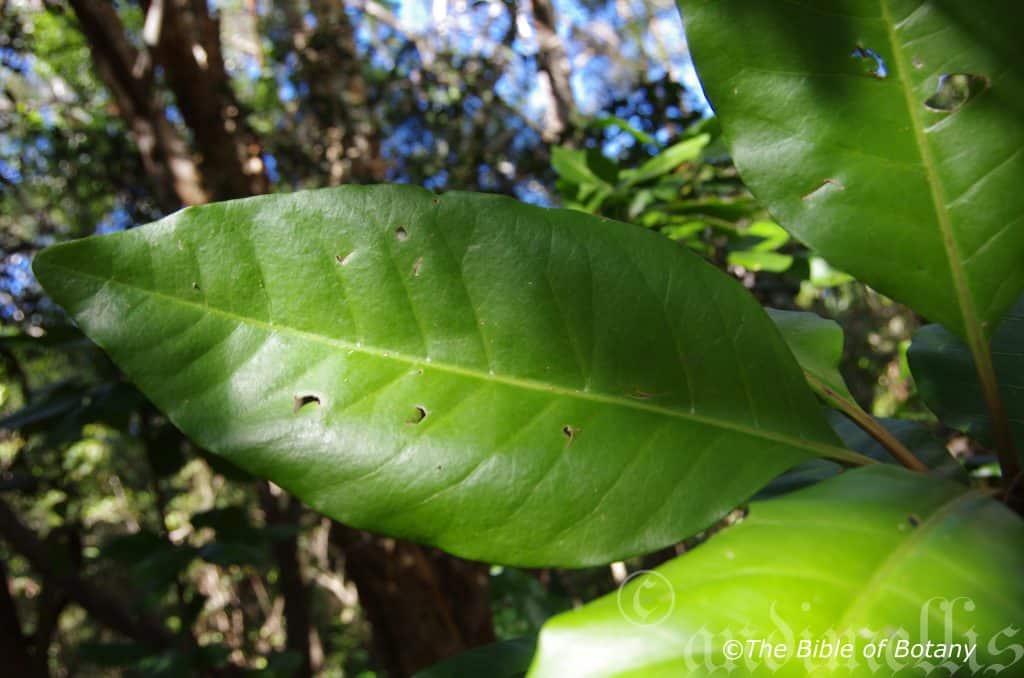
NCBG Coffs Harbour NSW

NCBG Coffs Harbour NSW
Pisonia umbellifera
Classification:
Unranked: Eudicots
Unranked: Core Eudicots
Order: Caryophyllales
Family: Pittosporcaceae
Genus: Is named in honour of Dr. William Piso; 15..-1648, who was a Dutch physician who worked in South America and noted the use of the plantCephaelis Ipecacuanha in the treatment of dysentery.
Specie: From Umbella/Umbra, which is Latin for a parasol or umbrella and Ferae/Fer?rum, which is Latin for to bear or bearing. It refers to plants, which bear floral cluster of flowers where the flower stems all branch from the same level on the stalk axis and terminate at the same level.
Sub specie:
Common Name: Sticky Lime Tree.
Distribution:
Pisonia umbellifera is a widespread species found along the eastern coast line of northern Australia particularly from Rockhampton north. There are several disjunct populations from Coolangatta to the Shoalhaven River in New South Wales.
https://avh.ala.org.au/occurrences/search?taxa=Pisonia+umbellifera#tab_mapView
Habitat Aspect Climate:
Pisonia umbellifera prefers dappled shade to full sun. It grows in moist warm coastal rainforests and littoral rain forests close to the coast. The altitude ranges from 5 meters to 750 meters ASL.
The temperatures range from 1 degree in July to 40 degrees in January.
The rainfall ranges from lows of 1000mm to 3600mm average per annum.
Soil Requirements:
Pisonia umbellifera prefers soils that are sandy loams to light clays with or without a high proportion of gravel. The soils are derived from decomposed sandstones, basalts as alluvial deposits or accumulated coral sands. The soils pH ranges from 6.5pH to 8pH. It does not tolerate water logged soils though seasonal tidal surges are tolerated. Non saline soils to extremely saline soils are tolerated as are salt laden winds.
Height & Spread:
Wild Plants: 8m to 16m by 8m to 10m.
Characteristics:
Pisonia umbellifera grows as an erect small open shrub. The trunk is pale grey-brown and smooth. The branches are pale grey-brown tending to olive green then to grass-green and glabrous. Young shoots are grass-green, glabrous and have the scars of fallen leaves. The trunk, branches and stems are frequently covered in white lime from bat and bird droppings.
The opposite or almost opposite leaves of Pisonia umbellifera are crowded near the end of the branchlets. The elliptical leaves measure 60mm to 200mm in length by 40mm to 120mm in width. The base is cuneate, oblique while the apex is broadly acuminate. The concolourous laminas are grass-green to deep grass-green and glabrous while the new growth is a bronze green and sparsely covered in caduceus brown hirtellous to hispid hairs. The leaf margins are entire, slightly undulating and curve slightly upwards or downwards from the mid vein. The mid vein and the 14 to 18 lateral veins are slightly prominent on the lower lamina and are clearly visible on the upper lamina. The laminas are finely convex between the lateral veins. The petioles measure 20mm to 50mm in length.
Inflorescences of Pisonia umbellifera are born as cymose panicles from the terminals. The circular rachis measures 20mm to 25mm in length while the peduncles measure 6mm to 8mm in length and the pedicels measure 6mm to 8mm in length. The green perianth tubes measure 5.5mm to 6mm in length while the 5 white obtuse lobes measure 1mm to 1.5mm in length. The lobes are covered in white hirtellous hairs. There are 5 longitudinal rows of brown hairy glands.
The 6 to 14 white exserted stamens are united near the base, free thereafter and measure 6mm to 7mm in length.
The inserted style has a fimbriate or papillose stigma. The styles measure 2.5mm to 3mm in length. The sweetly scented flowers appear from September to February.
Pisonia umbellifera fruits are elongated to fusiform fleshy capsules. The capsules are constricted near the apex before swelling again at the apex and measure 20mm to 40mm in length by 4.5mm to 5.5mm in diameter. The 5 longitudinal ribs are covered in short grey viscid, glandular hairs. The seeds measure 1.5mm to 2.5mm in length by 1mm to 2mm in diameter.
Wildlife:
Pisonia umbellifera’s do not appear to have any predators though the fruits maybe eaten by flying foxes and native rodents.
The leaves and young shoots can be harvested and steamed for a culinary delight. Slightly reminiscent of Wong Bok are quiet suitable for stir fries, stews and soups. Aborigines in the north use to place the seeds in a circle around coloured fruits to entrap small birds that landed to fest on the coloured fruits. The variegated leaf forms could enhance the colour in a Greek salad or other tossed salads.
Cultivation:
Pisonia umbellifera is a magnificent fast growing medium sized spreading tree that deserves a place in hot coastal gardens and would be worthwhile trying in semi-arid areas where adequate moisture is assured near septic trenches or channels. It is an ideal at the edge of a rain forest deep within a rainforest garden or as coastal shade trees. In cultivation they will grow from 8 meters to 12 meters in height by 6 meters to 8 meters in diameter when grown in the open.
It responds very quickly when a small amount of fertilizer is given.
The bark is very suitable for growing epiphytic orchids and ferns. Because of their quick growth it would be a great starter tree for beginners wanting to grow epiphytic orchids and epiphytic ferns.
There are variegated forms of this plant in cultivation however I am not sure whether It is from local sources or are an exotic cultivar.
The trees also make great bonsai plants developing there thick trunk at an early stage.
Propagation:
Seeds:
The seeds of Pisonia umbellifera can be removed easily from the plants as they dry. Once Pisonia umbellifera has finished flowering and the fruits have swollen place and start to split they can be harvested quite easily but be aware of the prickles.
Sow the seeds directly into a seed raising mix, keeping them moist not wet. Place the trays beneath 30mm shade cloth. When the seedlings are 20mm to 25mm tall, prick them out and plant them into 50mm native tubes using a good organic mix.
As the seedlings roots reach the bottom of the tubes plant them out into their permanent position. Do not delay and keep moist until established.
Fertilize using seaweed, fish emulsion or organic chicken pellets soaked in water on an alternate basis. Fertilize every two months until the plants are established then twice annually in early September and March to maintain better health, vitality and flowering.
Further Comments from Readers:
“Hi reader, it seems you use The Bible of Botany a lot. That’s great as we have great pleasure in bringing it to you! It’s a little awkward for us to ask, but our first aim is to purchase land approximately 1,600 hectares to link several parcels of N.P. into one at The Pinnacles NSW Australia, but we need your help. We’re not salespeople. We’re amateur botanists who have dedicated over 30 years to saving the environment in a practical way. We depend on donations to reach our goal. If you donate just $5, the price of your coffee this Sunday, We can help to keep the planet alive in a real way and continue to bring you regular updates and features on Australian plants all in one Botanical Bible. Any support is greatly appreciated. Thank you.”
In the spirit of reconciliation we acknowledge the Bundjalung, Gumbaynggirr and Yaegl and all aboriginal nations throughout Australia and their connections to land, sea and community. We pay our respect to their Elders past, present and future for the pleasures we have gained.

NCBG Coffs Harbour NSW
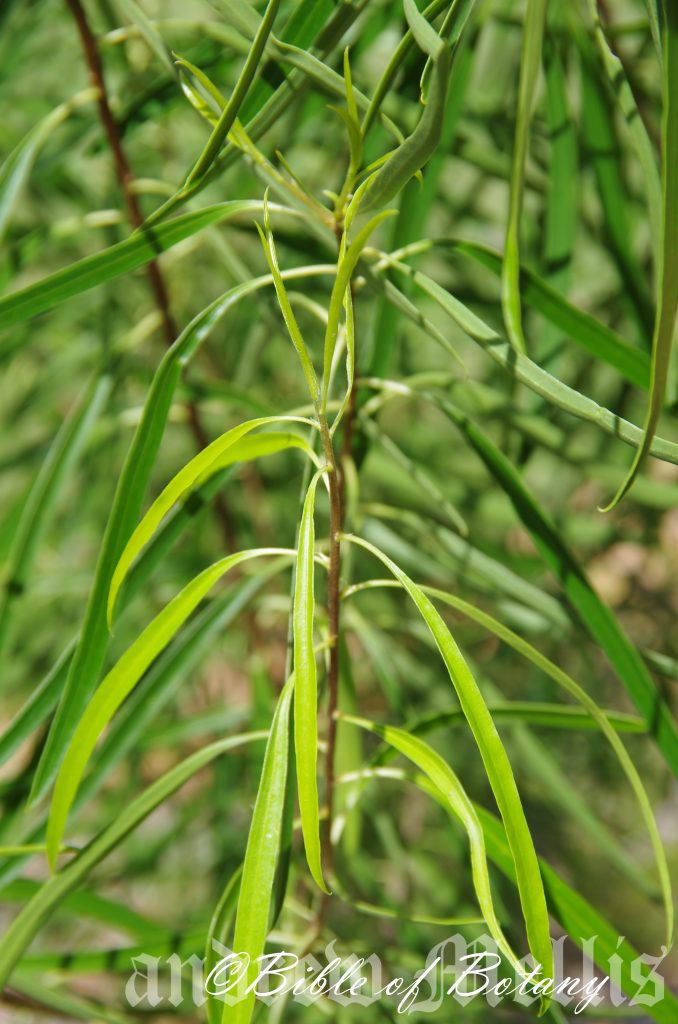
NCBG Coffs Harbour NSW

NCBG Coffs Harbour NSW
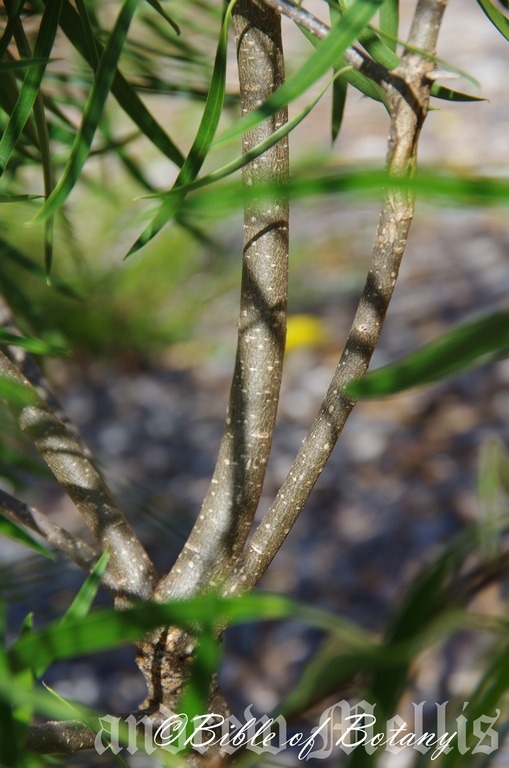

NCBG Coffs Harbour NSW
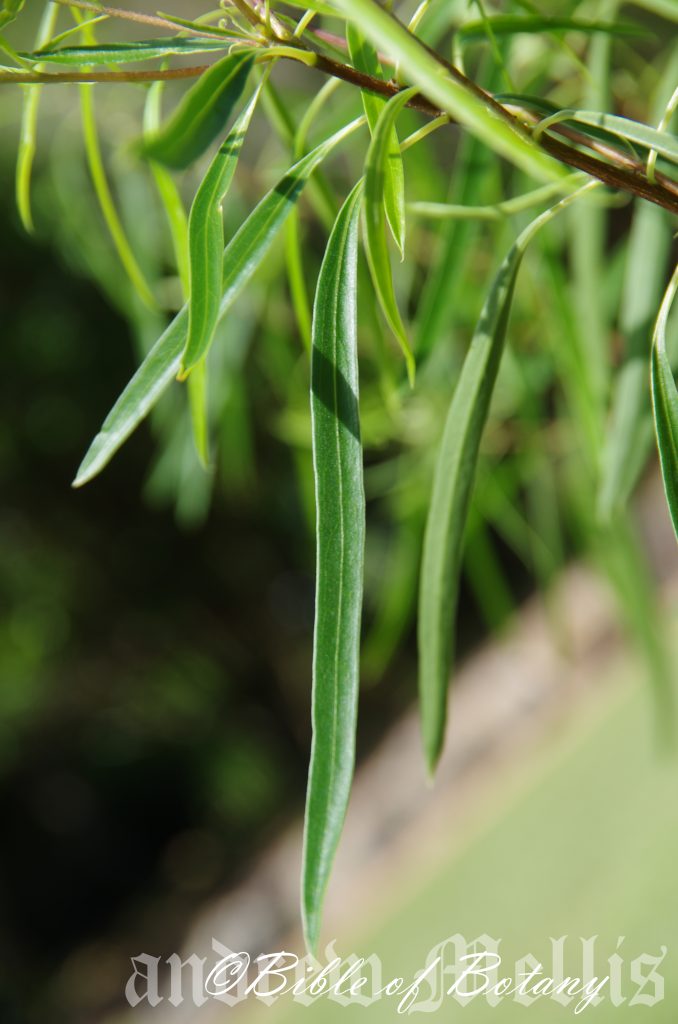
NCBG Coffs Harbour NSW

NCBG Coffs Harbour NSW

NCBG Coffs Harbour NSW
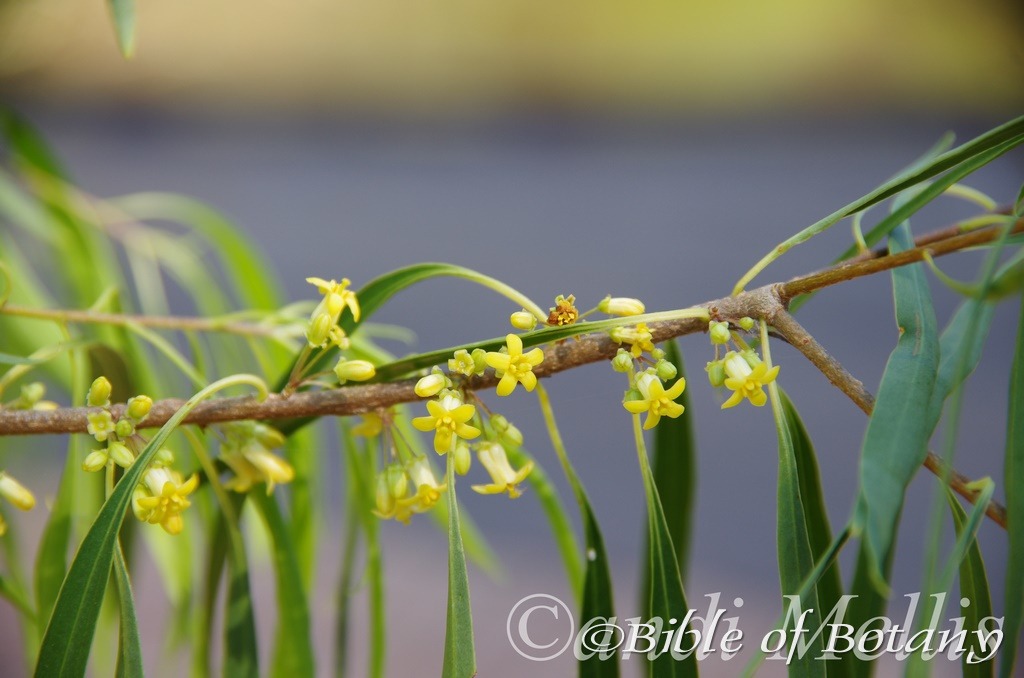
NCBG Coffs Harbour NSW

NCBG Coffs Harbour NSW
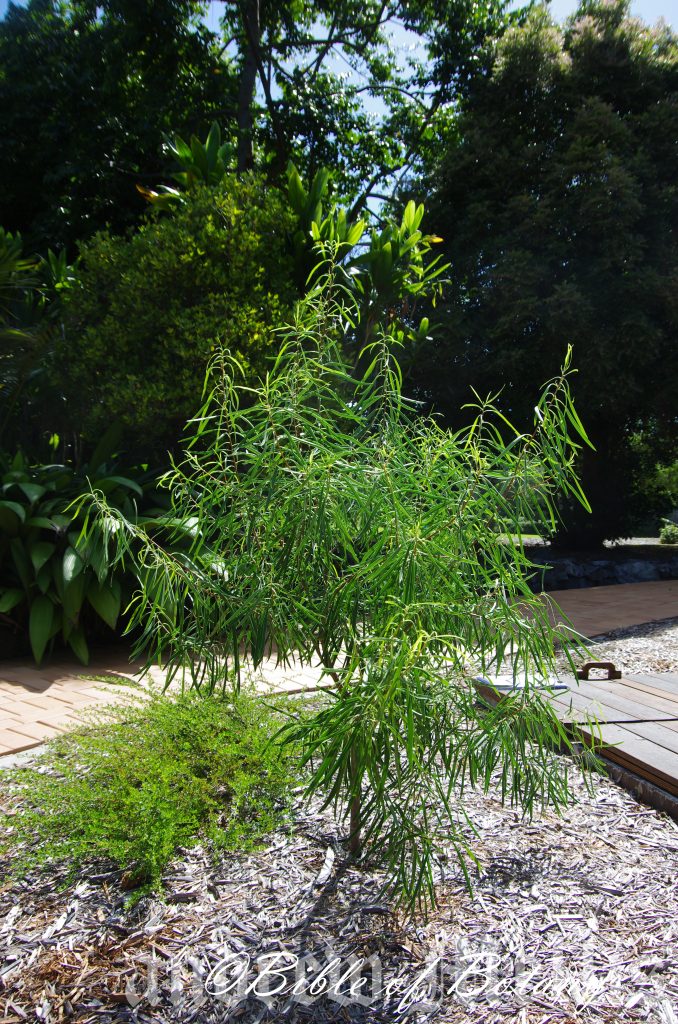
NCBG Coffs Harbour NSW
Pittosporum angustifolium
Classification:
Unranked: Eudicots
Unranked: Asterids
Order: Apiales
Family: Pittosporcaceae
Genus: From Pitta, which is Ancient Greek for resinous pitch and Spora, which is Ancient Greek for a seed. It refers to seeds, which are held onto the fruits, when ripe by a sticky resin until retrieved by birds or other small animals.
Specie: From Angusta, which is Latin for narrow and Folium, which is Latin for foliage. It refers to leaves, which are rather narrow or much narrower than other species in the genus.
Sub specie:
Common Name: Weeping Pittosporum or Butterbush.
Distribution:
Pittosporum angustifolium is found as a widespread species west of the Great Dividing Range, mainly in the southern two thirds of the mainland particularly in central and southern South Australia.
https://avh.ala.org.au/occurrences/search?taxa=Pittosporum+angustifolium#tab_mapView
Habitat Aspect Climate:
Pittosporum angustifolium prefers full sun. It grows in most semi-arid areas, on the margins of the true deserts in open savannah woodlands hummock grasses, in mallee communities chiefly on plains or along creek lines. The altitude ranges from 40 meters to 850 meters ASL.
The temperatures range from minus 3 degrees in July to 40 degrees in January.
The rainfall ranges from lows of 150mm to 1050mm average per annum.
Soil Requirements:
Pittosporum angustifolium prefers soils that are clay loams to medium clays with or without a high proportion of gravel. The soils are derived from decomposed sandstones, basalts, laterites or granites. The soils pH ranges from 5.5pH to 7pH. It does not tolerate water logged soils though seasonal flooding may be experienced in riparian zones. Non saline soils to very saline soils are tolerated.
Height & Spread:
Wild Plants: 3m to 10m by 5m to 10m.
Characteristics:
Pittosporum angustifolium grows as an erect small open shrub with a pale grey-brown, smooth, crooked trunk. The branches and branchlets are thin grey to olive green and glabrous. Young shoots are olive-green and glabrous. The plants have a tendency to sucker if damaged or if the major roots are severed.
The alternate falcate leaves are narrow oblong, linear to narrow elliptical. The leaves measure 40mm to 120mm in length by 4mm to 12mm in width. The petioles measure 8mm to 12mm in length. The bases are narrow tapering into an indefinite attenuate petiole while the apexes are acute with a distinct hooked tip. The concolourous laminas are deep grey-green to olive green, dull and glabrous. The leaf margins are entire and flat. The mid vein is slightly prominent on the upper lamina and is clearly visible on the lower lamina.
Inflorescences of Pittosporum angustifolium are born singularly or few flowered from the leaf axils or are born in small terminal clusters. The flowers are sessile to 1.5mm in length. The creamy yellow calyxes measure 2mm to 3.5mm in length while the 5 broadly obtuse calyx lobes measure 0.8mm to 1mm in length. The lobes often have red or burgundy margins. The corolla tubes measure 7mm to 10mm in length while the 5 oblong lobes have obtuse apexes and measure 5 to 6.5mm in length. The lobes are divaricate to recurve.
The 5 creamy yellow stamen’s filaments are attached to the perianth adjacent to the lobes. The exserted stamens measure 7.5mm to 11mm in length. The anthers are creamy yellow while the filaments are creamy yellow, ochre, red or burgundy.
The pale green styles have distinctly enlarged green stigmas which measure 1mm to 1.5mm in diameter. The glabrous ovary tapers evenly to the stigma. Pittosporum angustifolium sweetly scented appear from late June to early September.
Pittosporum angustifolium’s fruits are compressed ovoidal capsules. The green, glabrous capsules turn bright yellow-orange on ripening to reveal the red sticky seeds within. They measure 8mm to 18mm in length by 6mm to 16mm in diameter at the widest point. The style is persistent on the capsules. The pedicels lengthen to 5mm to 9mm in length. The 6 to 8 ovate seeds measure 3mm to 4mm in diameter. The fruits ripen during March and hang on the trees for several months.
Wildlife:
Pittosporum angustifolium’s do not appear to have any predators though the flowers are visited by many small butterflies and beetles. Native bees find the trees particularly attractive when in flower. The perfume would indicate that the flowers are fertilized by night flying insects as well.
Cultivation:
Pittosporum angustifolium is a magnificent small tree that deserves a place in every temperate to semi-arid native or exotic garden. It is ideal in almost every setting near ponds, at the edge of bush gardens, in court yards, around swimming pools or larger rockeries where their size is balanced. In cultivation it grows from 5 meters to 8 meters in height by 5 meters to 6 meters in diameter.
It grows exceptionally well on lighter soils where deep leaf litter keeps the soil cool and moisture at an even level. If these requirements are met it can cope with temperatures as low as minus 5 degrees and up to 40 degrees. It is drought resistant and fungal resistant even on the coast in subtropical gardens.
Add to the above, if it is given an adequate supply of water and a little native fertilizer on a regular basis the plants will respond with spectacular flowering and fruiting over a long period.
It often reaches its full potential in just 10 years and flowers from the third year from seed. Plants will live naturally for over 30 years.
Be imaginative when planting in mass. Use the plants in different configurations and use curves. Light pruning after flowering or tip pruning when young will enhance the trees bushiness, ensure the trees are smaller and provide longer stronger flower stems in the following season.
It is best used adjacent to small areas of bush close to paths or the house so their sweetly scented pale yellow flowers and orange fruits can be viewed regularly.
It looks great scattered around the perimeter of a homes in arid areas where they soften hard architectural lines and help cool the buildings, protecting them from the hot sun. From here gardens can be expanded outwards to have a warm friendly feeling to travellers, relations or friends. Here they can be under planted with prostrate or small Grevillea specie, Hakea specie, Lomandra specie or Ptilotus exaltatus give colour and texture to the garden.
Pittosporum angustifolium make great bonsai plants which are easy to maintain and work.
Propagation:
Seeds:
The seeds can be removed easily from the plants as they split and dry. Sow the cleaned seeds directly into a seed raising mix, keeping them moist not wet. Place the trays beneath 30mm shade cloth. When the seedlings are 20mm to 25mm tall, prick them out and plant them into 50mm native tubes using a good organic mix.
As the seedlings roots reach the bottom of the tubes plant them out into their permanent position.
Fertilize using seaweed, fish emulsion or organic chicken pellets soaked in water on an alternate basis. Fertilize every two months until the plants are established then twice annually in early September or March to maintain better health, vitality and flowering.
Further Comments from Readers:
“Hi reader, it seems you use The Bible of Botany a lot. That’s great as we have great pleasure in bringing it to you! It’s a little awkward for us to ask, but our first aim is to purchase land approximately 1,600 hectares to link several parcels of N.P. into one at The Pinnacles NSW Australia, but we need your help. We’re not salespeople. We’re amateur botanists who have dedicated over 30 years to saving the environment in a practical way. We depend on donations to reach our goal. If you donate just $5, the price of your coffee this Sunday, We can help to keep the planet alive in a real way and continue to bring you regular updates and features on Australian plants all in one Botanical Bible. Any support is greatly appreciated. Thank you.”
In the spirit of reconciliation we acknowledge the Bundjalung, Gumbaynggirr and Yaegl and all aboriginal nations throughout Australia and their connections to land, sea and community. We pay our respect to their Elders past, present and future for the pleasures we have gained.

Anderson Gardens Townsville Qld.

Anderson Gardens Townsville Qld.
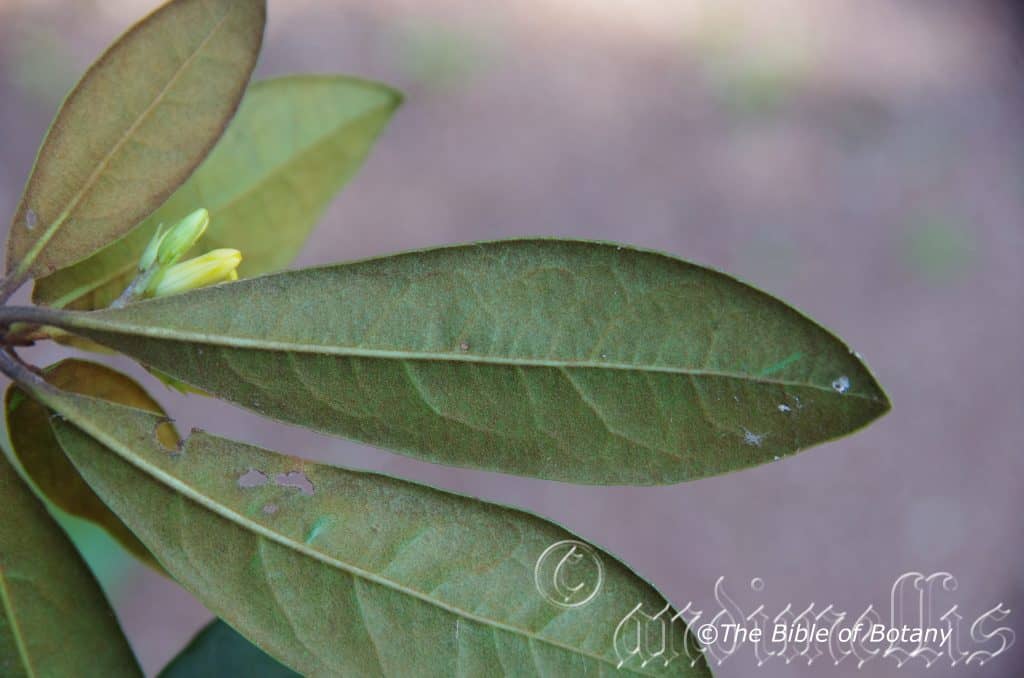
Anderson Gardens Townsville Qld.
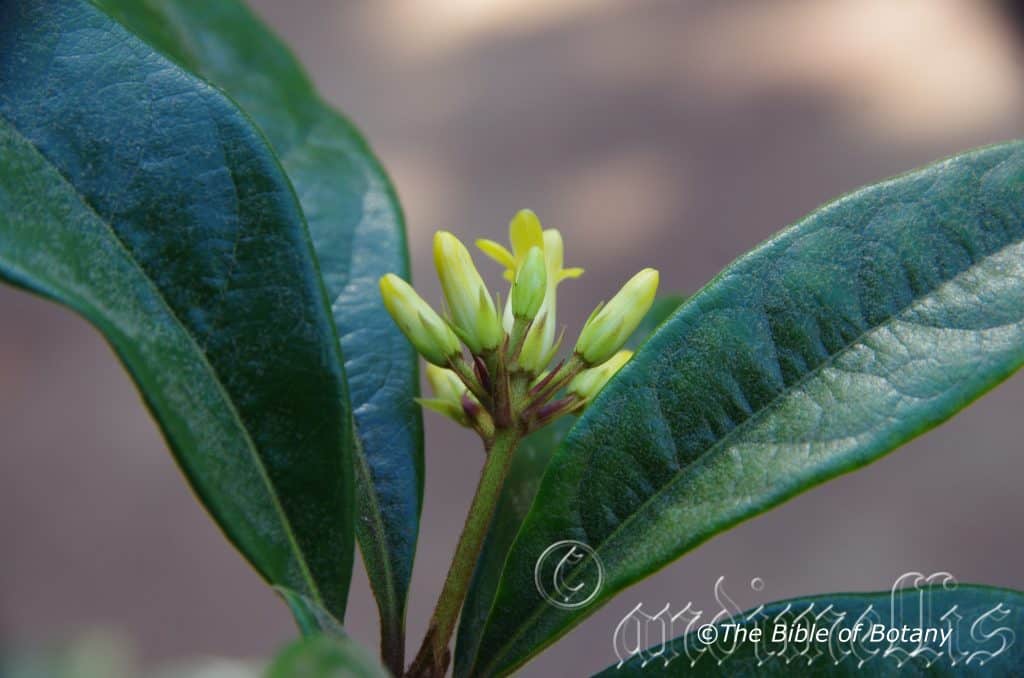
Anderson Gardens Townsville Qld.
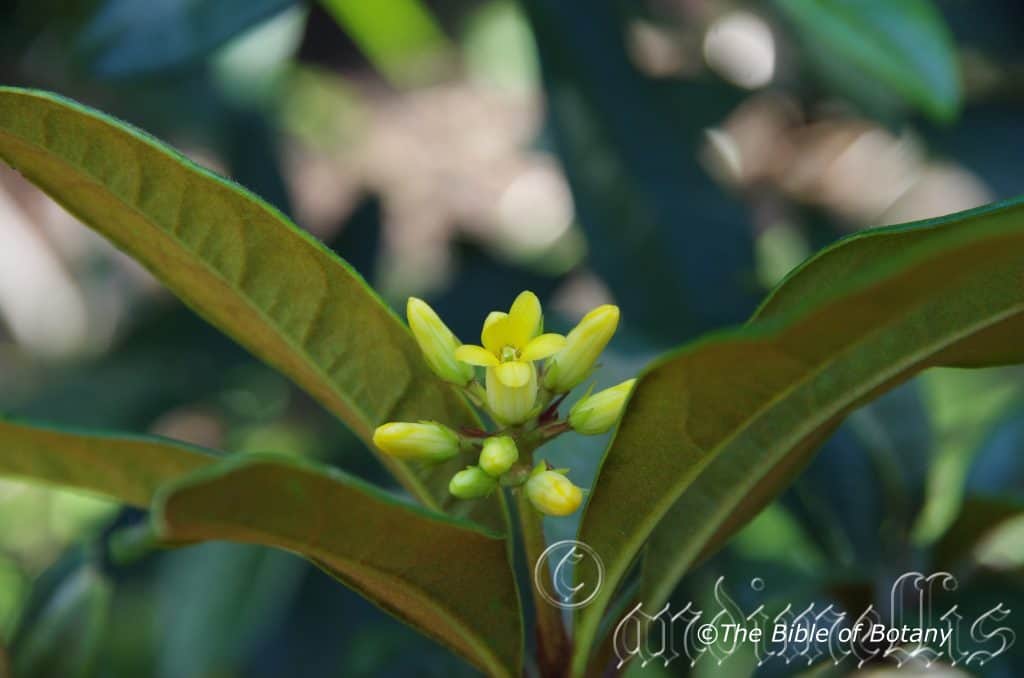
Anderson Gardens Townsville Qld.

Anderson Gardens Townsville Qld.
Pittosporum ferrugineum
Classification:
Unranked: Eudicots
Unranked: Asterids
Order: Apiales
Family: Pittosporcaceae
Genus: From Pitta, which is Ancient Greek for resinous pitch and Spora, which is Ancient Greek for a seed. It refers to seeds, which are held onto the fruits, when ripe by a sticky resin until retrieved by birds or other small animals.
Specie: From ferr?gineum, which is Latin for iron, rusty or ferric oxide. It refers an organs colour being rusty red. Here it refers to the pubescent hairs, which are rusty red in colour.
Sub specie:
Common Name: Rusty Pittosporum.
Distribution:
Pittosporum ferrugineum is found in far north eastern Quensland north to south eastern Queensland.
It is also found from Bougainville, Indonesia, New Guinee, Papua, Singapore and the Solomn Island.
https://avh.ala.org.au/occurrences/search?taxa=Pittosporum+ferrugineum#tab_mapView
Habitat Aspect Climate:
Pittosporum ferrugineum prefers full sun to partial shade. It grows in monsoonal rainforests, riverine rainforests close to the coast, dry rainforests in higher rainfall areas and littoral rainforests. The altitude ranges from 1 meters to 600 meters ASL.
The temperatures range from minus 6 degrees in July to 36 degrees in January.
The rainfall ranges from lows of 1100mm to 3200mm average per annum.
Soil Requirements:
Pittosporum ferrugineum prefers soils that are close to rills, streams and rivers that are rocky to sandy seashores. It also grows in limestone locations and soils with a high proportion of gravel. The soils are derived from decomposed sandstones, basalts, laterites or granites. The soils pH ranges from 6pH to 9pH. It does not tolerate water logged soils though seasonal flooding may be experienced in riparian zones. Non saline soils to very saline soils are tolerated as are salt laden winds.
Height & Spread:
Wild Plants:9m to 22m by 3m to 6m.
Characteristics:
Pittosporum ferrugineum grows as an erect small to medium tree with a pale grey-brown, smooth, straight trunk. The branches and branchlets are thin grey-brown to olive greenand smooth. Young shoots are olive-green and densely covered in rusty-red to rusty-brown pubescent hairs. The plants have a tendency to sucker if damaged or if the major roots are severed.
The alternate usually elliptical or at times broad elliptical leaves measure 50mm to 150mm in length by 15mm to 55mm in width. The petioles measure 8mm to 12mm in length. The bases are narrow tapering into an indefinite attenuate petiole while the apexes are broad accuminate or at times have a small notch. The petiole has a broad depression on the upper surface and measures 5mm to 12mm in length. The midvein is raised on both surfaces on the basal half and to the apex on the lower lamina. The discolourous laminas are deep green and semi glossy to glossy on the upper lamina and much paler on the lower lamina. The leaf margins entire, slightly undulate and decurve close to the margin. Both laminas are densely covered in short rusty-red to rusty-brown pubescent hairs.
The white, cream to yellow inflorescences of Pittosporum ferrugineum are born as a few to many in clusters from the upper leaf axils or in loose terminal clusters. The flowers’ pedicles measure 5mm to 7mm in length. The reddish-brown caducous stipules are narrow lanceolate to linear and measure 2.5mm to 3.5mm in length by 0.6mm to 1mm in width. The pale green narrow lanceolate calyxe lobes measure 2.5mm to 3.5mm in length by 0.6mm to 1.3mm in width. The corolla tubes measure 6mm to 8mm in length while the 5 oblong lobes have obtuse apexes and measure 1.3mm to 2mm in diameter. The lobes are divaricate to recurve.
The inserted to slightly exerted cream to yellow stamen’s filaments are attached to the perianth adjacent to the lobes. The stamens measure 4mm to 8.5mm in length. The anthers are creamy yellow to fawnish.
The stout pale-green style has a distinctly enlarged pale-green stigma which measure 1mm to 1.5mm in diameter. Pittosporum ferrugineum’s sweetly scented flowers appear from mid August to mid September.
Pittosporum ferrugineum‘s fruits are compressed ovoidal to globose capsules. The green, capsules are moderately to densely covered in short rusty-red to rusty-brown, caducous, pubescent hairs. The bi valved capsules turn bright orange on ripening to reveal the 8 to 20 bright red sticky seeds within. They measure 5mm to 10mm in length by 6mm to 12mm in diameter at the widest point. The style is persistent on the capsules. The individual black glossy seeds measure 3mm to 4mm in diameter.
Wildlife:
Pittosporum ferrugineum’s do not appear to have any predators though the flowers are visited by many small butterflies and beetles. Native bees find the trees particularly attractive when in flower. The perfume would indicate that the flowers are fertilized by night flying insects as well.
Cultivation:
Pittosporum ferrugineum is a beautiful small tree that deserves a place in every sub-tropical to tropical native or exotic garden. It is ideal in almost every setting near ponds, at the edge of bush gardens, in court yards, or larger rockeries where their size is balanced. In cultivation it grows from 5 meters to 10 meters in height by 5 meters to 6 meters in diameter when grown in the open.
It grows exceptionally well on lighter soils where deep leaf litter keeps the soil and where the soil moisture can be maintained at an even level. If these requirements are met it can cope with temperatures as low as 5 degrees and up to 40 degrees.
Add to the above, if it is given an adequate supply of water and a little native fertilizer on a regular basis or mulched regularly the plants will respond with spectacular flowering and fruiting over a long period.
It often reaches its full potential in just 8 years and flowers from the third or fourth year from seed. Plants will live naturally for over 30 years.
Be imaginative when planting in mass. Use the plants in different configurations and use curves. It is ideal along long driveways. Light pruning after flowering or tip pruning when young will enhance the trees bushiness, ensure the trees are smaller and provide longer stronger flower and fruiting stems in the following season.
It would look great scattered around the perimeter of homes in semi arid areas where it softens hard architectural lines and help cool the buildings, protecting them from the hot sun. From here gardens can be expanded outwards to have a warm friendly feeling to travellers, relations or friends. Here it can be under planted with prostrate or small Grevillea specie, Hakea specie, Lomandra specie or Ptilotus exaltatus togive colour and texture to the garden.
Pittosporum ferrugineum wouldmake a great bonsai plant which is easy to maintain and work.
Propagation:
Seeds:
The seeds of Pittosporum ferrugineum can be removed easily from the plants as they split and dry. Sow the cleaned seeds directly into a seed raising mix, keeping them moist not wet. Place the trays beneath 30mm shade cloth. When the seedlings are 20mm to 25mm tall, prick them out and plant them into 50mm native tubes using a good organic mix.
As the seedlings roots reach the bottom of the tubes plant them out into their permanent position.
Fertilize using seaweed, fish emulsion or organic chicken pellets soaked in water on an alternate basis. Fertilize every two months until the plants are established then twice annually in early September or March to maintain better health, vitality and flowering.
Further Comments from Readers:
“Hi reader, it seems you use The Bible of Botany a lot. That’s great as we have great pleasure in bringing it to you! It’s a little awkward for us to ask, but our first aim is to purchase land approximately 1,600 hectares to link several parcels of N.P. into one at The Pinnacles NSW Australia, but we need your help. We’re not salespeople. We’re amateur botanists who have dedicated over 30 years to saving the environment in a practical way. We depend on donations to reach our goal. If you donate just $5, the price of your coffee this Sunday, We can help to keep the planet alive in a real way and continue to bring you regular updates and features on Australian plants all in one Botanical Bible. Any support is greatly appreciated. Thank you.”
In the spirit of reconciliation we acknowledge the Bundjalung, Gumbaynggirr and Yaegl and all aboriginal nations throughout Australia and their connections to land, sea and community. We pay our respect to their Elders past, present and future for the pleasures we have gained.
Pittosporum lancifolium
Classification:
Unranked: Eudicots
Unranked: Asterids
Order: Apiales
Family: Pittosporcaceae
Genus: From Pitta, which is Ancient Greek for resinous pitch and Spora, which is Ancient Greek for a seed. It refers to seeds, which are held onto the fruits, when ripe by a sticky resin until retrieved by birds or other small animals.
Specie: From Lancea which is Latin for a lance and Folium, which is Latin for foliage. It refers to leaves, which are several times longer than it is wide and tapering after the broadest point in the middle to a sharp point similar to a sword.
Sub specie:
Common Name: Boxthorn or Sticky Orange.
Distribution:
Pittosporum lancifolium is found in a restricted area between Tallebucgera, Yarraman and Warwick in southern Queensland and Kyogle to Lismore in northern New South Wales.
https://avh.ala.org.au/occurrences/search?taxa=Pittosporum+lancifolium#tab_mapView
Habitat Aspect Climate:
Pittosporum lancifolium prefers full sun. It grows in open Eucalyptus forests or warm sub-tropical rainforests. The altitude ranges from 80 meters to 650 meters ASL.
The temperatures range from minus 3 degrees in July to 36 degrees in January.
The rainfall ranges from lows of 800mm to 1700mm average per annum.
Soil Requirements:
Pittosporum lancifolium prefers soils that are sandy loams to medium clays with or without a high proportion of gravel. The soils are usually derived from decomposed black basalts or granites. The soils pH ranges from 5pH to 6pH. It does not tolerate water logged soils. Non saline soils to moderately saline soils are tolerated.
Height & Spread:
Wild Plants: 2m to 4.5m by 3m to 4m.
Characteristics:
Pittosporum lancifolium grows as an erect shrub or small spreading tree. The pale grey to off white trunk is smooth and crooked. The slender branches and branchlets are off white to mid green and glabrous. Young shoots are olive-green, glabrous and spinose.
The alternate, narrow-ovate to elliptic or broad-lanceolate leaves of Pittosporum lancifolium measure 15mm to 40mm in length by 5mm to 20mm in width. The petiole measures 1mm to 3mm in length. The bases are cuneate while the apexes are acute or obtuse. The concolourous laminas are mid lime-green to mid olive-green, glossy, glabrous and covered in minute translucent, orange oil dots. The laminas are flat while the margins are entire. The mid vein is slightly prominent on the upper lamina and is clearly visible on the lower lamina.
Inflorescences are born singularly or in pairs from the leaf axils. The petioles measure 0mm to 1.5mm in length. The 5 or rarely 6 greenish sepals measure 2mm to 3mm in length. The white to pale cream, corolla tubes measure 2mm to 4mm in length while the 5 or rarely 6 oblong divaricate lobes have obtuse apexes. The lobes measure 1.5mm to 5mm in length.
The 5 creamy yellow stamen’s filaments are attached to the perianth adjacent to the lobes. The inserted filaments measure 2mm to 3mm in length. The anthers are creamy yellow.
The pastel green, stout styles have distinctly enlarged palpitate stigma and measure 2.5mm to 5mm in length. The ovary is glabrous. The sweetly scented flowers appear from late September to early January.
The fruits are globose, glabrous capsules. The green capsules turn bright yellow-orange when ripe and split to reveal the red sticky seeds within. They measure 8mm to 12mm in length by 6mm to 10mm in diameter at the widest point. The style remnant is persistent on the apex of the capsules. The 8 to 15 ovate seeds are immersed in a clear viscous fluid admeasure 3mm to 4mm in diameter.
Wildlife:
Pittosporum lancifolium’s do not appear to have any predators though the flowers are visited by many small butterflies and beetles. Native bees find the trees particularly attractive when in flower.
Cultivation:
Pittosporum lancifolium is a magnificent small tree that deserves a place in every temperate to sub-tropical native or exotic garden. It is ideal in almost every setting near ponds, at the edge of bush gardens, in court yards, around swimming pools or larger rockeries where their size is balanced. In cultivation it will grow from 2 meters to 2.5 meters in height by 2 meters to 2.5 meters in diameter when grown as a shrub or if trained as a tree by trimming the lower stems will grow 4 meters to 5 meters in height by 3 meters to 3.5 meters in diameter as a neat small tree.
It grows exceptionally well on lighter clays where deep leaf litter keeps the soil cool and moisture at an even level. If these requirements are met they can cope with temperatures as low as minus 3 degrees and up to 40 degrees once established. It is drought resistant and fungal resistant even on the coast in subtropical gardens.
Add to the above, if it is given an adequate supply of water and a little native fertilizer on a regular basis the plants will respond with spectacular flowering and fruiting over a long period.
It often reaches its full potential in just 10 years and flower from the second or third year from seed. Plants will live naturally for over 30 years.
Be imaginative when planting in mass. Use the plants in different configurations and use curves. Light pruning after flowering or tip pruning when young will enhance the trees bushiness, ensure the trees are smaller and provide longer stronger flower stems in the following season.
It is best used adjacent to small areas of bush close to paths or the house so their sweetly scented pale yellow flowers and orange fruits can be viewed regularly.
It is great scattered around the perimeter of a homes in arid areas where they soften hard architectural lines and help cool the buildings, protecting them from the hot sun. From here gardens can be expanded outwards to have a warm friendly feeling to travellers, relations or friends. Here it can be under planted with prostrate or small Grevillea specie, Hakea specie, Lomandra specie or Ptilotus exaltatus give colour and texture to the garden.
Pittosporum angustifolium make great bonsai plants which are easy to maintain and work.
Propagation:
Seeds:
Seeds can be removed easily from the plants as they split and dry.
Sow freshly treated seeds directly into a seed raising mix, keeping them moist not wet. When the seedlings are 20mm to 25mm tall, prick them out and plant them into 50mm native tubes using a good organic mix.
As the seedlings roots reach the bottom of the tubes plant them out into their permanent position.
Fertilize using seaweed, fish emulsion or organic chicken pellets soaked in water on an alternate basis. Fertilize every two months until the plants are established then twice annually in early September or March to maintain better health, vitality and flowering.
Further Comments from Readers:
“Hi reader, it seems you use The Bible of Botany a lot. That’s great as we have great pleasure in bringing it to you! It’s a little awkward for us to ask, but our first aim is to purchase land approximately 1,600 hectares to link several parcels of N.P. into one at The Pinnacles NSW Australia, but we need your help. We’re not salespeople. We’re amateur botanists who have dedicated over 30 years to saving the environment in a practical way. We depend on donations to reach our goal. If you donate just $5, the price of your coffee this Sunday, We can help to keep the planet alive in a real way and continue to bring you regular updates and features on Australian plants all in one Botanical Bible. Any support is greatly appreciated. Thank you.”
In the spirit of reconciliation we acknowledge the Bundjalung, Gumbaynggirr and Yaegl and all aboriginal nations throughout Australia and their connections to land, sea and community. We pay our respect to their Elders past, present and future for the pleasures we have gained.

Washpool National Park NSW
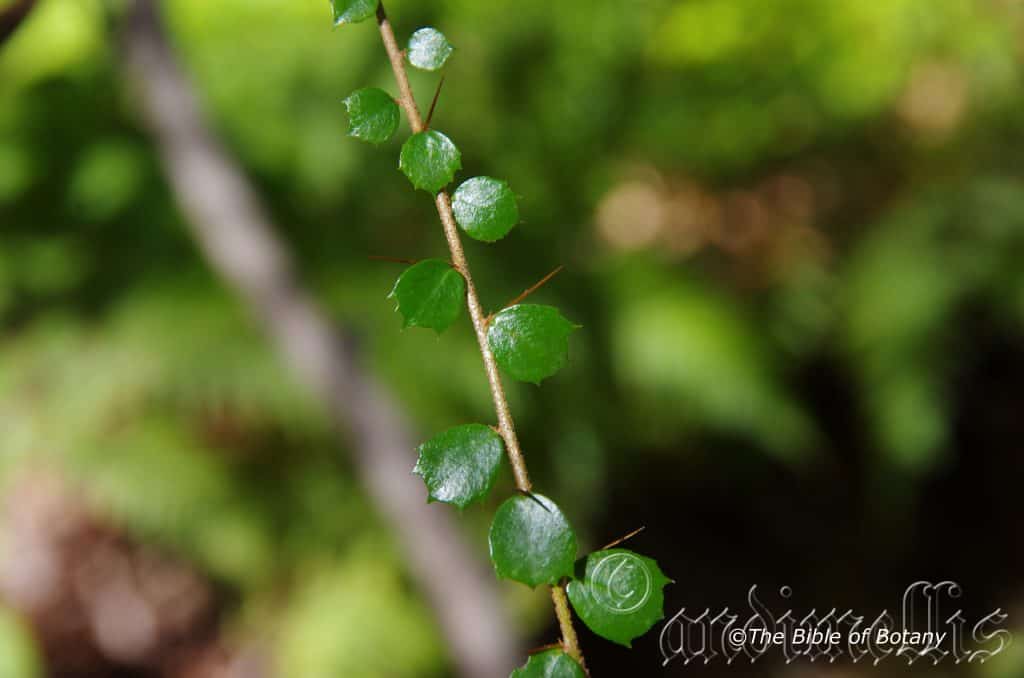
Washpool National Park NSW
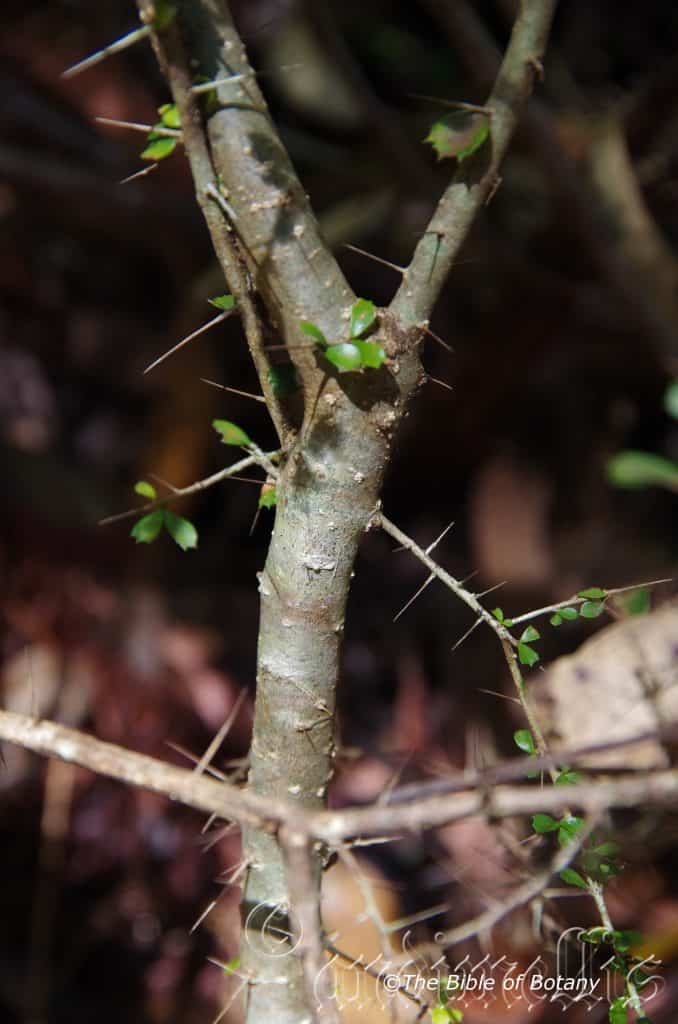
Washpool National Park NSW
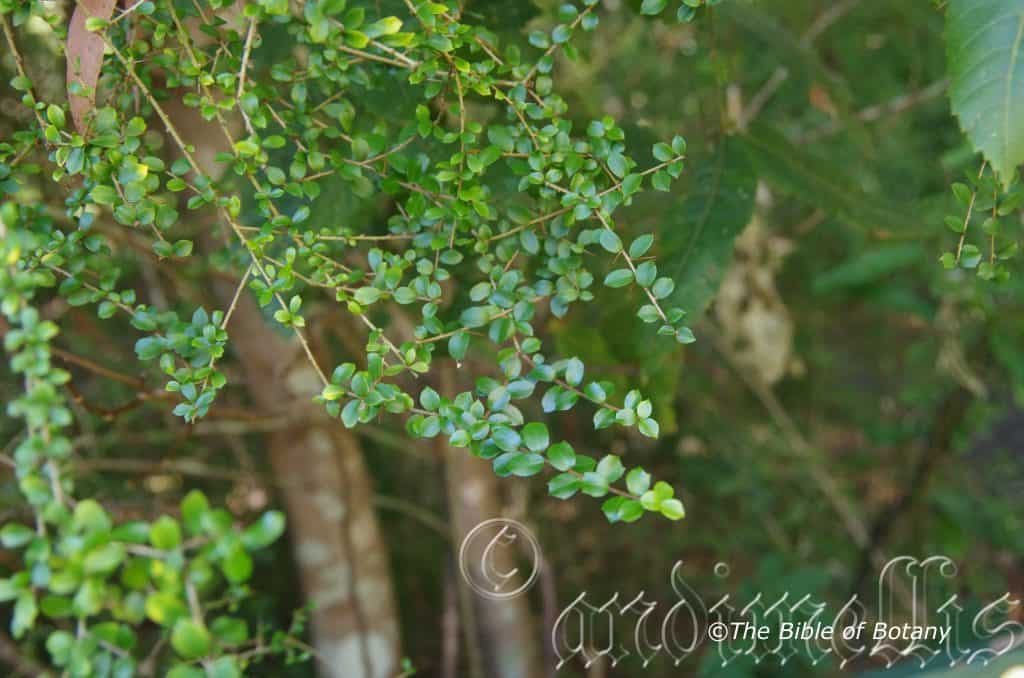
Washpool National Park NSW
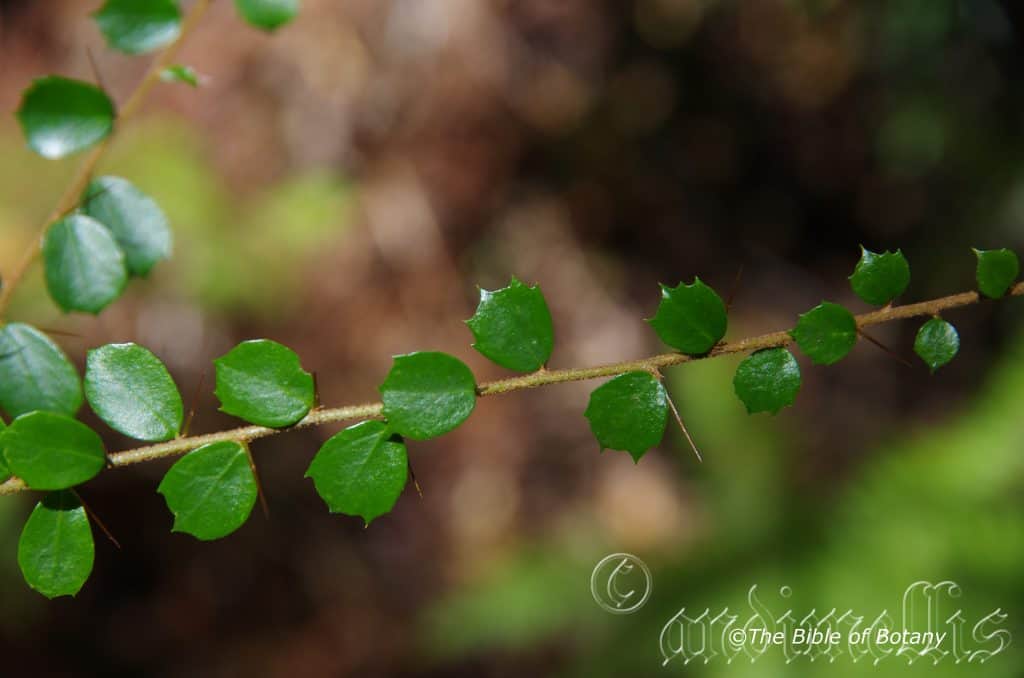
Washpool National Park NSW
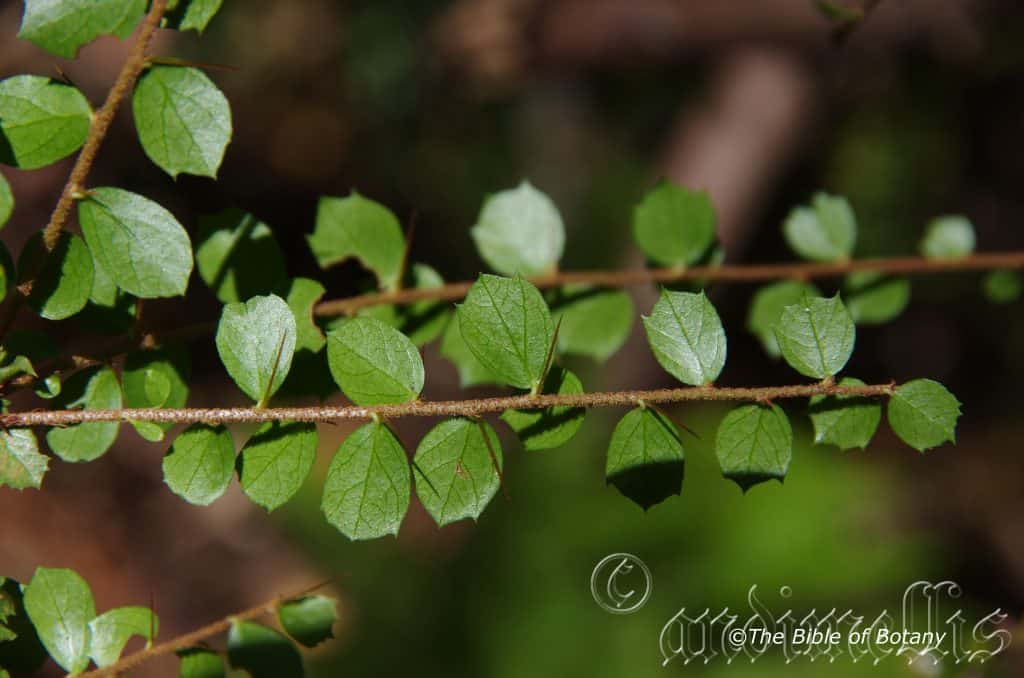
Washpool National Park NSW
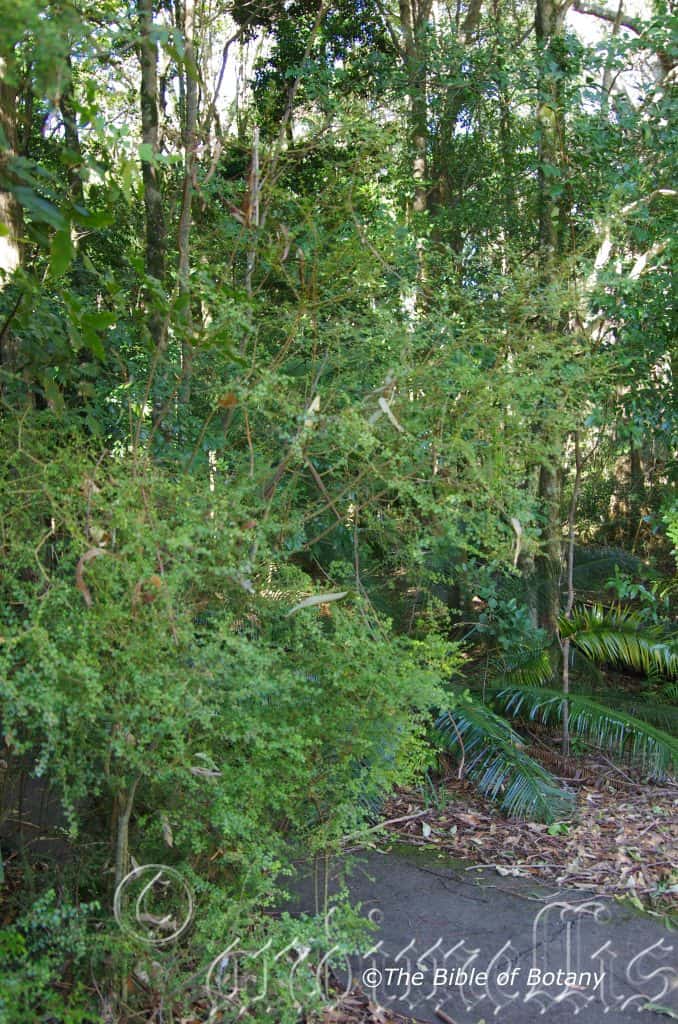
NCBG Coffs Harbour NSW
Pittosporum multiflorum
Classification:
Unranked: Eudicots
Unranked: Asterids
Order: Apiales
Family: Pittosporcaceae
Genus: From Pitta, which is Ancient Greek for resinous pitch and Spora, which is Ancient Greek for a seed. It refers to seeds, which are held onto the fruits, when ripe by a sticky resin until retrieved by birds or other small animals.
Specie: From Multus, which is Latin for many and Fl?ris, which is Latin for a flower or Fl?s, which is Roman for the goddess of spring and flowers. It refers to plants, which produce many more flowers than other species in the genus.
Sub specie:
Common Name: Orange Thorn.
Distribution:
Pittosporum multiflorum is found south from Childers in southern Queensland to Bega in southern coastal New South Wales. There is also a population further north from Tannum sands to Kunnawarra. It is mainly found on and east of the Great Dividing Range.
https://avh.ala.org.au/occurrences/search?taxa=Pittosporum+multiflorum#tab_mapView
Habitat Aspect Climate:
Pittosporum multiflorum prefers dappled shade to full sun. It usually grows high in the mountains in and adjacent to warm well developed rainforests, littoral rainforests, moist Eucalyptus forests or at times adjacent to coastal wallums. The altitude ranges from 5 meters to 900 meters ASL.
The temperatures range from minus 3 degrees in July to 36 degrees in January.
The rainfall ranges from lows of 850mm to 1600mm average per annum.
Soil Requirements:
Pittosporum multiflorum prefers soils that are sandy light clays to medium clays with or without a high proportion of forest litter. The soils are usually derived from decomposed sandstones, basalts, laterites or granites. The soils pH ranges from 5pH to 6pH. It does not tolerate water logged soils though seasonal flooding may be experienced in riparian zones. Non saline soils to moderately saline soils are tolerated.
Height & Spread:
Wild Plants:1m to 3m by 1m to 3m
Characteristics:
Pittosporum multiflorum grows as an erect, rigid, medium open shrub. Main stems are grey-brown glabrous and sparsely covered in persistent spines from the old leaf axils. Only the youngest shoots are grass-green to deep sea-green and covered in the long, thin, and flexible to rigid spines at the leaf bases. The stems are brittle and break easily but are difficult to completely snap off.
The opposite broad ovate to obovate or orbicular leaves measure 4mm to 12mm in length by 3mm to 8mm in width. The petioles measure 0.4mm to 1mm in length. The bases are rounded while the apexes are obtuse to acute obtuse. The concolourous laminas are deep sea-green and glabrous. The new growth is a deep bronze colour. The leaf margins are irregularly toothed on the apical half with 2 to 7 teeth or rarely entire. The laminas are flat or curve slightly upwards from the mid vein to the margins including the apex. The mid vein is slightly prominent on the lower lamina and is visible on the upper lamina.
Inflorescences of Pittosporum multiflorum are born singularly or on rare occasions in pairs from the leaf axils. The tan calyxes measure 0.2mm while the 4 tan, acute calyx lobes measure 1.2mm to 1.5mm in length. The globose, white corollas measure 6mm to 7.5mm in length by 3.5mm to 4mm in diameter at the widest section. The 5 elliptical lobes measure 4mm to 4.5mm in length by 2mm in width near the base. The lobes are divaricate with an acute apex while the margins are covered in fine white ciliate hairs. The flowers are sessile.
The 5 stamens are free at the base and wider than the anthers. It is white while the anthers are ochre. The inserted stamens measure 5.5mm to 7mm in length.
The style has a distinctly swollen yellow to yellow-lime stigma. Pittosporum multiflorum flowers from late August to early February.
Pittosporum multiflorum fruits are ovate capsules which are flattened where It is attached to the stems. The flowers are sessile. The capsules turn from lime green to deep yellow orange to deep orange when ripe. They measure 5mm to 10mm in length by 5mm to 10mm in diameter. The style is persistent on the capsules. The brown seeds are covered in a small quantity of viscous fluid.
Wildlife:
Pittosporum multiflorum do not appear to have any predators though the flowers are occasionally visited by many small butterflies, native bees and beetles.
The fruits are edible but are for those of us with distinguished taste buds.
Cultivation:
Pittosporum multiflorum is a magnificent small shrub that deserves a place in every temperate native or exotic garden. It is ideal in almost every setting near ponds, at the edge of a rain forest in court yards, around swimming pools or larger rockeries where their size is balanced. In cultivation it can be grown in heavy shade as in a rainforest setting or in the open. In cultivation it will grow from 1 meter to 2 meters in height by 1 meter to 2 meters in diameter when grown in the open.
It can be tipped pruned regularly to maintain a small compact bushy shrub which looks excellent against a dark coloured back ground. Another method is to grow them as a standard with a singular trunk with an umbrella shape crown. It is slow in their establishment but once established grow quickly and when given an adequate supply of water, a little native fertilizer on a regular basis and copious quantities of leaf litter the plants will respond with spectacular flowering and fruiting over a long period.
Be imaginative when planting in mass. Use the plants in different configurations and use curves. Light pruning after flowering using some plants as standards and some as small shrubs offer the gardener a multitude of expressions and ideas. Because of the abundance of white flowers in late winter through to late summer red, lilac or pink flowers are a great contrast then in late summer to early winter flowers that contrast the vivid orange fruits can be utilized. The only restriction with selecting companion plants is they really need to have large leaves unless you decide to use the plants in a heath scenario.
Pittosporum multiflorum would make outstanding contribution to a moist heath garden. Here it can be used as the taller growing plant scattered throughout the heath scene. When you design a flat heath garden which Pittosporum multiflorum is well suited don’t use contours to display the plants as heath lands are almost always flat or have a slight rise. Plants must be planted close together and be short so you can see over the tallest ones with the exception of one or two plants at the most. These will be feature plants. The idea is to achieve a feeling of expansive flatness. This can be achieved with using the Pittosporum multiflorum’s small green ovate leaves and having them contrasting with finer lime green or soft grey to glaucous coloured foliages. Use a lot of procumbent plants like Hibbertia linearis or Grevillea sericea. Mix them with other smaller shrubs so none of them dominate the scene but blend in to give a mosaic of foliage colours that you oversee. Here I immediately think of Actinotis helianthi or most the small Grevillea specie which prefer drier conditions on lighter soils. Select plants that offer a great contrast in foliages. Again think outside the square and completely cover the ground and use Pittosporum multiflorum as a standard growing up out of the heath.
It is best used adjacent to small areas of bush close to paths or the house so their white flowers and orange fruits can be appreciated regularly. It is great in small to large rockeries as a fill in plant. Here it can be planted in small groups of 2 or 3 scattered as you would find them in nature to give a great bush scene. It is best used in the mid ground surrounded by shorter plants with fine foliages with white or red flowers so it will dominate at the center of the bed especially when It is in flower. This is one plant that benefits highly from being mass planted or planted in scattered clumps. There small size enables this to be achieved and their open habit allows for planting closer together so the branches intertwine with themselves. This type of planting should have centers of 0.4 meters to 1.5 meters.
Try using them in a court yard where the only other feature is a large rock, stump or formal or informal frog or fish pond. Next to such features their small leaves, small flowers and small fruit are never overpowering but certainly noticed. I am surprised that they have never been used in commercial entrances and foyers to break the ice and give a feeling of business as usual but somehow make the business more relaxing.
Another feature of the plant is that they can be successfully grown as a bonsai.
This is truly a magnificent shrub that has really gone unnoticed by horticulturalists and gardeners alike.
Propagation:
Seeds:
Seeds can be removed easily from the plants as they dry. Once Pittosporum multiflorum has finished flowering and the fruits have begun to split they can be harvested by hand but beware of the spines.
Sow freshly treated seeds directly into a seed raising mix, keeping them moist not wet. When the seedlings are 20mm to 25mm tall, prick them out and plant them into 50mm native tubes using a good organic mix.
As the seedlings roots reach the bottom of the tubes plant them out into their permanent position. Do not delay.
Fertilize using seaweed, fish emulsion or organic chicken pellets soaked in water on an alternate basis. Fertilize every two months until the plants are established then twice annually in early September or March to maintain better health, vitality and flowering.
Further Comments from Readers:
“Hi reader, it seems you use The Bible of Botany a lot. That’s great as we have great pleasure in bringing it to you! It’s a little awkward for us to ask, but our first aim is to purchase land approximately 1,600 hectares to link several parcels of N.P. into one at The Pinnacles NSW Australia, but we need your help. We’re not salespeople. We’re amateur botanists who have dedicated over 30 years to saving the environment in a practical way. We depend on donations to reach our goal. If you donate just $5, the price of your coffee this Sunday, We can help to keep the planet alive in a real way and continue to bring you regular updates and features on Australian plants all in one Botanical Bible. Any support is greatly appreciated. Thank you.”
In the spirit of reconciliation we acknowledge the Bundjalung, Gumbaynggirr and Yaegl and all aboriginal nations throughout Australia and their connections to land, sea and community. We pay our respect to their Elders past, present and future for the pleasures we have gained.
Pittosporum phylliraeoides
Classification:
Unranked: Eudicots
Unranked: Asterids
Order: Apiales
Family: Pittosporcaceae
Genus: From Pitta, which is Ancient Greek for resinous pitch and Spora, which is Ancient Greek for a seed. It refers to seeds, which are held onto the fruits, when ripe by a sticky resin until retrieved by birds or other small animals.
Specie: From Phyllárion, which is the diminutive of Phullon/Phýllon, which is Ancient Greek for a leaf. It refers to the specialized leaves surrounding the flowers.
Sub specie:
Common Name: Leafy Pittosporum or Weeping Pittosporum.
Distribution:
Pittosporum phylliraeoides is found along central coastal headlands, beaches or sandy rivers further inland in far central western coastal Western Australia and Islands off the west coast.
https://avh.ala.org.au/occurrences/search?taxa=Pittosporum+phylliraeoides#tab_mapView
Habitat Aspect Climate:
Pittosporum phylliraeoides prefers full sun. It grows in semi-arid areas in mallee communities to open Eucalyptus woodlands chiefly on plains and along creek lines and rocky outcrops. The altitude ranges from 5 meters to 200 meters ASL.
The temperatures range from 3 degrees in July to 40 degrees in January.
The rainfall ranges from lows of 150mm to 300mm average per annum.
Soil Requirements:
Pittosporum phylliraeoides prefers soils that are sandy loams to light sandy clays with or without a high proportion of gravel. The soils are derived from decomposed sandstones, basalts, laterites and granites. The soils pH ranges from 5pH to 8.5pH. It does not tolerate water logged soils. Non saline soils to moderately saline soils are tolerated.
Height & Spread:
Wild Plants:1m to 8m by 2m to 9m.
Characteristics:
Pittosporum phylliraeoides grows as a pendulant small open tree. The grey-brown trunk is rough. The thin branches and branchlets are grey-grey to olive green and glabrous with a sparse covering of lenticels. Young shoots are deep sea green and glabrous.
The alternate semi falcate leaves of Pittosporum phylliraeoides are narrow oblong, linear to narrow elliptical. The leaves measure 40mm to 120mm in length by 6mm to 12mm in width. The petioles measure 9mm to 18mm in length. The bases are narrow tapering into an indefinite attenuate petiole while the apexes are acute with a distinct hooked tip. The concolourous laminas are deep grey-green to olive green, dull and glabrous. The leaf margins are entire, flat and slightly thickened compared to the rest of the lamina. The mid vein is slightly prominent on the upper lamina and is clearly visible on the lower lamina.
Inflorescences of Pittosporum phylliraeoides are born as cluster flowers from the leaf axils or are born in small terminal clusters. The petioles measure 7mm to 12mm in length. The white to cream calyxes measure 2mm to 3.5mm in length while the 5 broadly obtuse calyx lobes measure 0.8mm to 1mm in length. The white or pale cream corolla tubes measure 7mm to 10mm in length while the 5 white, cream or lemon yellow oblong lobes have obtuse apexes and measure 5 to 6.5mm in length. The lobes are divaricate to recurve.
The 5 creamy yellow to yellow stamen’s filaments are attached to the perianth adjacent to the lobes. The stamens measure 7.5mm to 11mm in length. The exserted anthers are yellow while the filaments are white to creamy yellow.
The pale green styles have distinctly enlarged green stigmas which measure 1mm to 1.5mm in diameter. The glabrous ovary tapers evenly to the stigma. Pittosporum angustifolium sweetly scented appear from late June through to mid-October.
Pittosporum phylliraeoides fruits are compressed ovoidal capsules. The green, glabrous capsules turn bright yellow-orange and split on ripening to reveal the red sticky seeds within. They measure 12mm to 18mm in length by 9mm to 14mm in diameter at the widest point. The style is persistent on the capsules. The 6 to 8 ovate seeds measure 3mm to 4mm in diameter.
Wildlife:
Pittosporum phylliraeoides’s do not appear to have any predators though the flowers are visited by many small butterflies and beetles. Native bees find the trees particularly attractive when in flower. The perfume would indicate that the flowers are fertilized by night flying insects as well.
Cultivation:
Pittosporum phylliraeoides is a magnificent small tree that deserves a place in every temperate to semi-arid native or exotic garden. It is ideal in almost every setting near ponds, at the edge of bush gardens, in court yards, around swimming pools or larger rockeries where their size is balanced. In cultivation it grows from 6 meters to 9 meters in height by 6 meters to 10 meters in diameter.
It grows exceptionally well on lighter soils where deep leaf litter keeps the soil cool and moisture at an even level. If these requirements are met they can cope with temperatures as low as minus 5 degrees and up to 40 degrees. It is drought resistant and fungal resistant even on the coast in subtropical gardens.
Add to the above, if it is given an adequate supply of water and a little native fertilizer on a regular basis the plants will respond with spectacular flowering and fruiting over a long period.
It often reaches its full potential in just 10 years and flower from the second or third year from seed. Plants will live naturally for over 30 years.
Be imaginative when planting in mass. Use the plants in different configurations and use curves. Light pruning after flowering or tip pruning when young will enhance the trees bushiness, ensure the trees are smaller and provide longer stronger flower stems in the following season.
It is best used adjacent to small areas of bush close to paths or the house so their sweetly scented pale yellow flowers and orange fruits can be viewed regularly.
It is great scattered around the perimeter of a homes in arid areas where they soften hard architectural lines and help cool the buildings, protecting them from the hot sun. From here gardens can be expanded outwards to have a warm friendly feeling to travellers, relations or friends. Here it can be under planted with prostrate or small Grevillea specie, Hakea specie, Lomandra specie or Ptilotus exaltatus give colour and texture to the garden.
Pittosporum angustifolium make great bonsai plants which are easy to maintain and work.
Propagation:
Seeds:
The seeds of Pittosporum phylliraeoides can be removed easily from the plants as they split and dry.
Sow freshly treated seeds directly into a seed raising mix, keeping them moist not wet. When the seedlings are 20mm to 25mm tall, prick them out and plant them into 50mm native tubes using a good organic mix.
As the seedlings roots reach the bottom of the tubes plant them out into their permanent position.
Fertilize using seaweed, fish emulsion or organic chicken pellets soaked in water on an alternate basis. Fertilize every two months until the plants are established then twice annually in early September or March to maintain better health, vitality and flowering.
Further Comments from Readers:
“Hi reader, it seems you use The Bible of Botany a lot. That’s great as we have great pleasure in bringing it to you! It’s a little awkward for us to ask, but our first aim is to purchase land approximately 1,600 hectares to link several parcels of N.P. into one at The Pinnacles NSW Australia, but we need your help. We’re not salespeople. We’re amateur botanists who have dedicated over 30 years to saving the environment in a practical way. We depend on donations to reach our goal. If you donate just $5, the price of your coffee this Sunday, We can help to keep the planet alive in a real way and continue to bring you regular updates and features on Australian plants all in one Botanical Bible. Any support is greatly appreciated. Thank you.”
In the spirit of reconciliation we acknowledge the Bundjalung, Gumbaynggirr and Yaegl and all aboriginal nations throughout Australia and their connections to land, sea and community. We pay our respect to their Elders past, present and future for the pleasures we have gained.

Kedron Brook Qld.
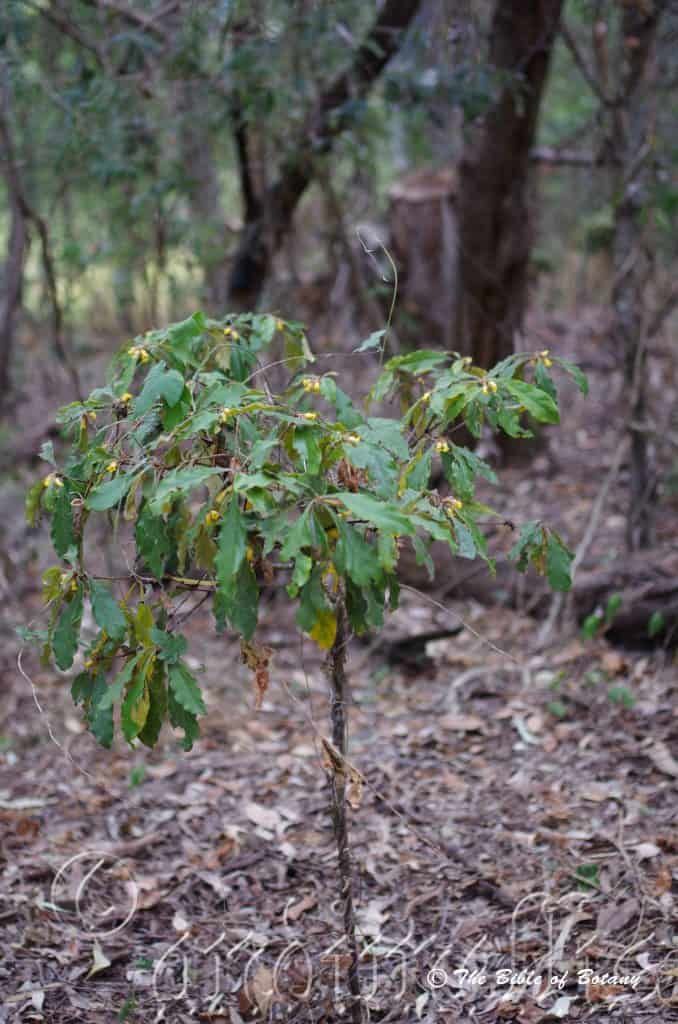
Kedron Brook Qld.

Kedron Brook Qld.
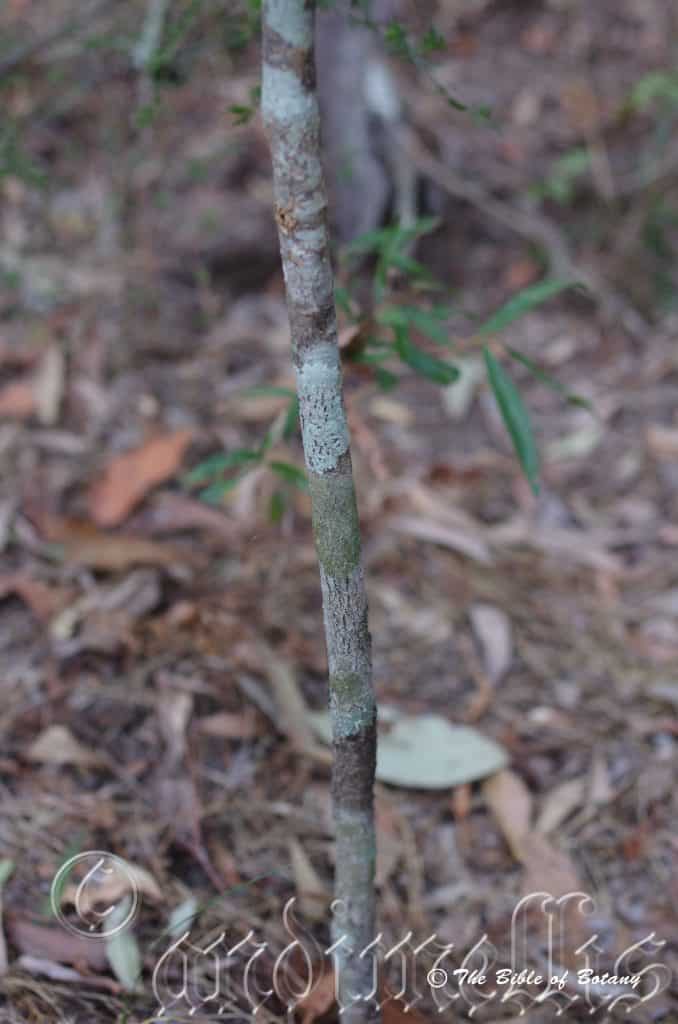
Kedron Brook Qld.

Kedron Brook Qld.
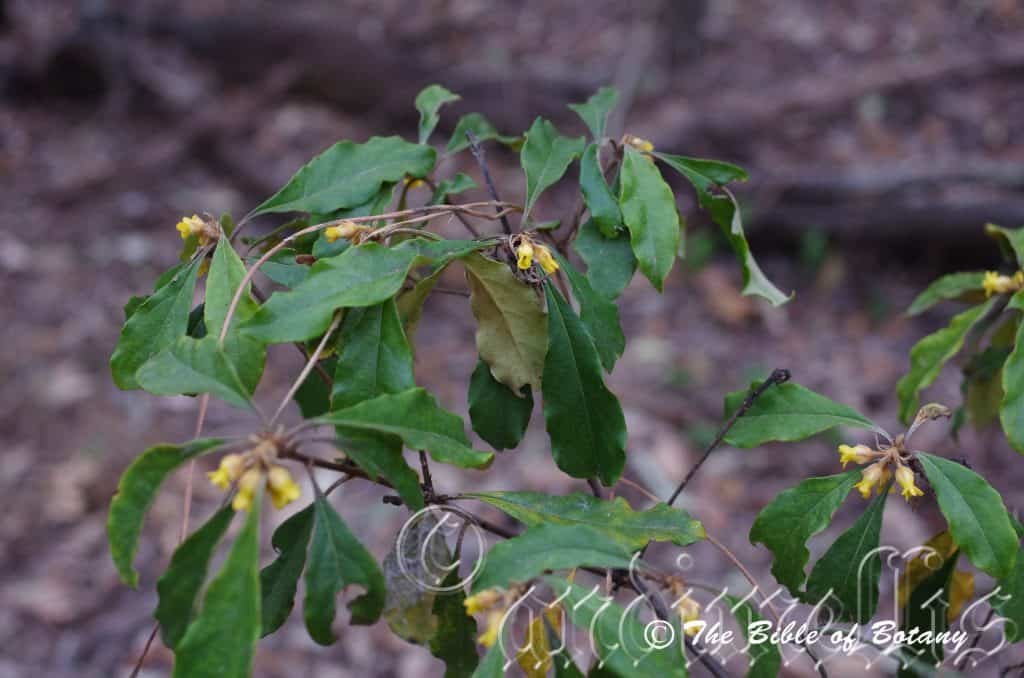
Kedron Brook Qld.

Kedron Brook Qld.
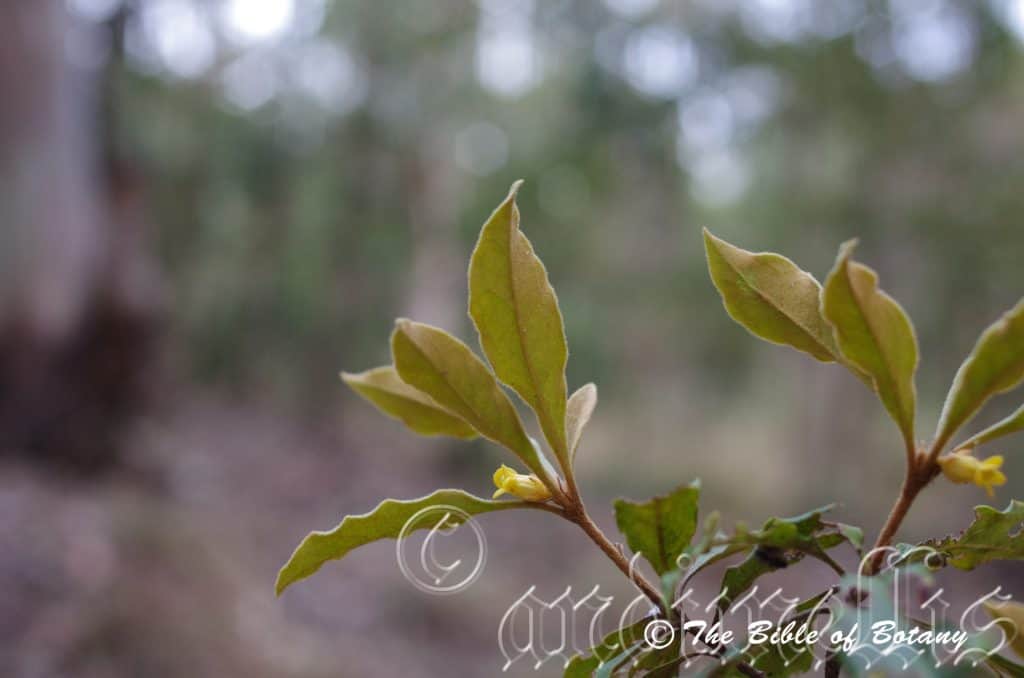
Kedron Brook Qld.

Kedron Brook Qld.
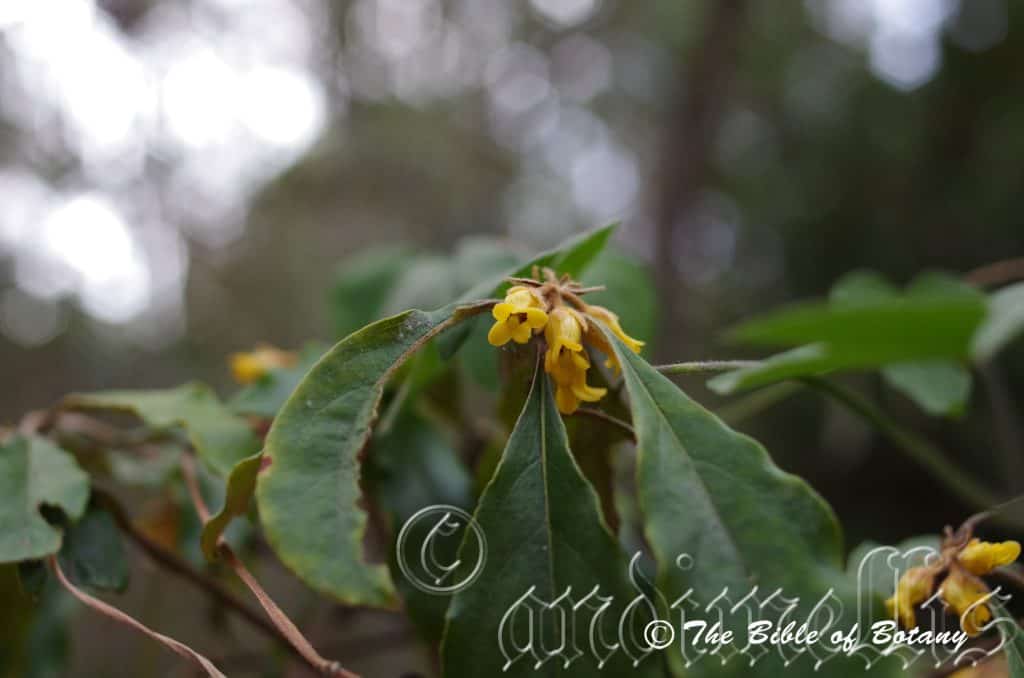
Kedron Brook Qld.
Pittosporum revolutum
Classification:
Unranked: Eudicots
Unranked: Asterids
Order: Apiales
Family: Pittosporcaceae
Genus: From Pitta, which is Ancient Greek for resinous pitch and Spora, which is Ancient Greek for a seed. It refers to seeds, which are held onto the fruits, when ripe by a sticky resin until retrieved by birds or other small animals.
Specie: From Revol?tum, which is Latin for to make a full turn. It refers to leaves or flowers, which have margins that curl in a full circle towards the underside of the leaf.
Sub specie:
Common Name: Yellow Jasmine or Rough Fruited Pittosporum or Rusty Pittosporum.
Distribution:
Pittosporum revolutum is found south from Cooktown in north eastern Queensland to Orbost in north eastern Victoria. It is found on the Western Slopes, on and east of the Great Dividing Range to the coast.
https://avh.ala.org.au/occurrences/search?taxa=Pittosporum+revolutum#tab_mapView
Habitat Aspect Climate:
Pittosporum revolutum prefers dappled shade to full sun. It grows on hills and mountains in openings and adjacent to warm well developed rainforests, littoral rainforests or moist Eucalyptus forests. The altitude ranges from 5 meters to 700 meters ASL.
The temperatures range from minus 5 degrees in July to 36 degrees in January.
The rainfall ranges from lows of 850mm to 3200mm average per annum.
Soil Requirements:
Pittosporum revolutum prefers soils that are sandy loams to medium clays. The soils are derived from decomposed sandstones, basalts, laterites or granites. The soils pH ranges from 5.5pH to 7pH. It does not tolerate water logged soils. Non saline soils to moderately saline soils are tolerated.
Height & Spread:
Wild Plants:1m to 3m by 0.5m to 2m.
Characteristics:
Pittosporum revolutum grows as an erect small open shrub. The pale dusky brown main stem is glabrous. Stems are thin grey and glabrous. Young shoots grow out in flushes of 3 or 4 at a time. These flushes are rusty to dusky brown and are densely covered in rusty brown to dusky brown pubescent hairs.
The alternate leaves are clustered at the ends of the stems almost forming tightly packed whirls. The ovate-elliptical to oblong-elliptical leaves measure 50mm to 150mm in length by 16mm to 60mm in width. The base is broad cuneate while the apex is acuminate or at times acute. The discolourous laminas are deep sea-green and almost glabrous to densely covered in rusty to dusky brown pubescent hairs on the upper lamina while the lower lamina is slightly paler to much paler and moderately covered to densely in rusty to dusky brown pubescent hairs. The leaf margins are entire, undulating and curve upwards from the mid vein. The mid vein is strongly prominent on the lower lamina and is clearly visible on the upper lamina. The mid vein curves downwards towards the apex. The petioles measure 5mm to 13mm in length.
Inflorescences of Pittosporum revolutum are clusters born from the terminals. The calyx measures 0.5mm to 1mm in length while the 4 narrow, triangular recurve lobes measure 4mm to 4.5mm in length. The olive green pedicels are sparsely to densely covered in pale rusty to dusky brown pubescent hairs and measure 7mm to 10mm in length. The yellow corollas measure 9mm to 10mm in length while the lobes measure 4.5mm to 5.5mm in length. The lobes recurve with the apexes being obtuse to acute-obtuse.
The 5 yellow stamens are free for their entire length and measure 7mm to 12mm in length. The filaments are yellow and broader than the anthers at the base while the anthers are ochre to pale brown. The anthers are exserted and measure 2mm to 2.5mm in length by 0.8mm to 1mm in width.
The yellow style has a yellow disc like stigma. The pistil measures 7mm to 12mm in length while the stigma measures 1mm to 1.2mm in diameter. Pittosporum revolutum flowers from early September through to late November.
The fruits are ellipsoidal to obovate capsules. The capsules are coarsely rugose externally and glabrous internally. The walls are hard, leathery and measure 2mm to 3mm in thickness. The green capsules turn bright yellow externally and internally on ripening and measure 15mm to 28mm in length by 11mm to 21mm in diameter. The capsules split to reveal the 20 to 76 scarlet red seeds which are lightly covered in an opaque viscous liquid. The angular-round glossy glabrous seeds measure 3mm to 3.5mm in diameter.
Wildlife:
Pittosporum revolutum’s do not appear to have any predators though the flowers are prolific and attract many small butterflies, native bees including Tetragonula carbonaria and the Blue banded bee Amegilla cingulata and beetles.
Cultivation:
Pittosporum revolutum is a magnificent small shrub that deserves a place in every temperate native or exotic garden. It is ideal in almost every setting near ponds, at the edge of a rain forest in court yards, around swimming pools or larger rockeries where their size is balanced. In cultivation they will grow from 0.5 meters to 2 meters in height by 0.7 meters to 1.5 meters in diameter.
It grows just as well on light or heavy soils where deep leaf litter keeps the soil cool and moisture at an even level. If these requirements are met they can cope with temperatures as low as minus 5 degrees and up to 38 degrees. It is moderately drought resistant in their rainfall zones.
Add to the above, if it is given an adequate supply of water and a little native fertilizer on a regular basis the plants will respond with better flowering over a long period and set more fruit.
They often reach their full potential in just 5 years and flower from the third year from seed.
Be imaginative when planting in mass. Use the plants in different configurations and use curves. Light pruning after flowering or tip pruning will enhance the shrubs bushiness and provide longer stronger flower stems in the following season.
It is best used adjacent to small areas of bush close to paths or the house so their large yellow fruits can be viewed regularly. It is great in small to large rockeries as a fill in plant. Here they can be planted in small groups of 2 or 3 scattered as you would find them in nature to give a great bush scene. It is best used in the mid ground surrounded by shorter plants with fine foliages with white or pink flowers so they will dominate at the center of the bed especially when It is in flower. This is one plant that benefits highly from being mass planted or planted in scattered clumps. There small size enables this to be achieved and their open habit allows for planting closer together so the branches intertwine. This type of planting should have centers of 0.4 meters to 1.5 meters.
Pittosporum revolutum would make an interesting contribution to a moist heath garden. Here they can be used as the taller growing plant scattered throughout the heath scene in a home garden or as the taller feature shrub in the heath. When you design a flat heath garden which Pittosporum revolutum is well suited don’t use contours to display the plants as heath lands are almost always flat or have a slight rise. Plants must be planted close together and be short so you can see over the tallest ones with the exception of one or two plants at the most. The idea is to achieve a feeling of expansive flatness. This can be achieved with using the Pittosporum revolutum’s large deep green linear leaves and having them contrasting with finer pale green or soft grey to glaucous coloured foliages. Use a lot of procumbent plants like Carpobrotus edulis or Hibbertia. Mix them with other smaller shrubs so none of them dominate the scene but blend in to give a mosaic of foliage colours that you oversee. Actinotis helianthi, Grevillea obtusifolia, Grevillea baueri, Grevillea stenomera or Grevillea nana for six great contrasting foliages.
Propagation:
Seeds:
Seeds can be removed easily from the plants as they dry. Once Pittosporum revolutum has finished flowering and the fruits have swollen place an old sheet below the plants and keep a close eye on it. Peg it down so it doesn’t blow around. When the seeds start to disperse, it can be all over in one day; especially if the weather turns hot, with the seeds being scattered on the ground. Clean the rubbish off and sieve the material for the seeds.
Seeds need to be treated by rubbing between fine sandpaper. Another method is to drop them into hot water and allow it to cool. I have also laid the rubbish out at the time of collecting and burnt it with the seeds still amongst the rubbish. No one method has proven better than the other, with all producing erratic results but better than if I did not treat the seeds.
Sow freshly treated seeds directly into a seed raising mix, keeping them moist not wet. When the seedlings are 20mm to 25mm tall, prick them out and plant them into 50mm native tubes using a good organic mix.
As the seedlings roots reach the bottom of the tubes plant them out into their permanent position.
Fertilize using seaweed, fish emulsion or organic chicken pellets soaked in water on an alternate basis. Fertilize every two months until the plants are established then twice annually in early September or March to maintain better health, vitality and flowering.
Further Comments from Readers:
“Hi reader, it seems you use The Bible of Botany a lot. That’s great as we have great pleasure in bringing it to you! It’s a little awkward for us to ask, but our first aim is to purchase land approximately 1,600 hectares to link several parcels of N.P. into one at The Pinnacles NSW Australia, but we need your help. We’re not salespeople. We’re amateur botanists who have dedicated over 30 years to saving the environment in a practical way. We depend on donations to reach our goal. If you donate just $5, the price of your coffee this Sunday, We can help to keep the planet alive in a real way and continue to bring you regular updates and features on Australian plants all in one Botanical Bible. Any support is greatly appreciated. Thank you.”
In the spirit of reconciliation we acknowledge the Bundjalung, Gumbaynggirr and Yaegl and all aboriginal nations throughout Australia and their connections to land, sea and community. We pay our respect to their Elders past, present and future for the pleasures we have gained.

Moonee Beach NSW

Moonee Beach NSW
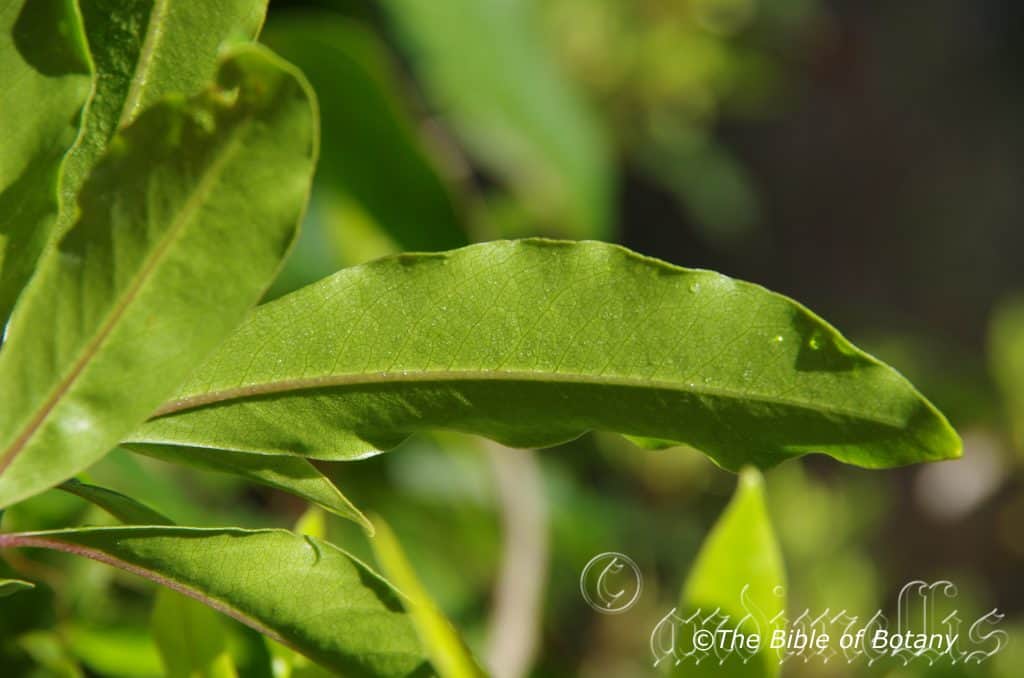
Moonee Beach NSW
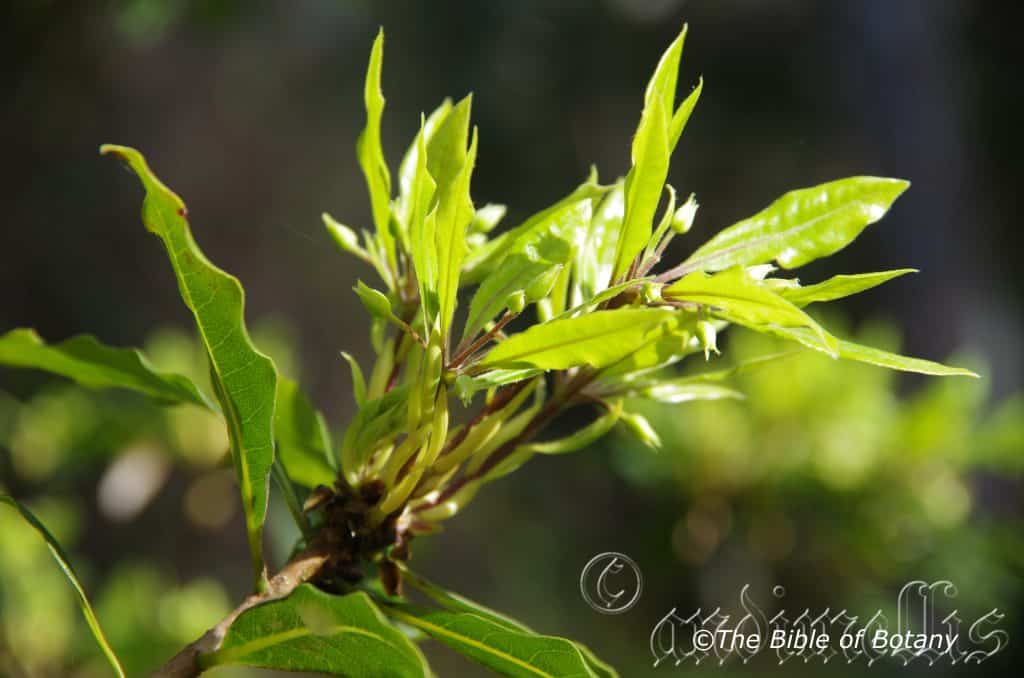
Moonee Beach NSW

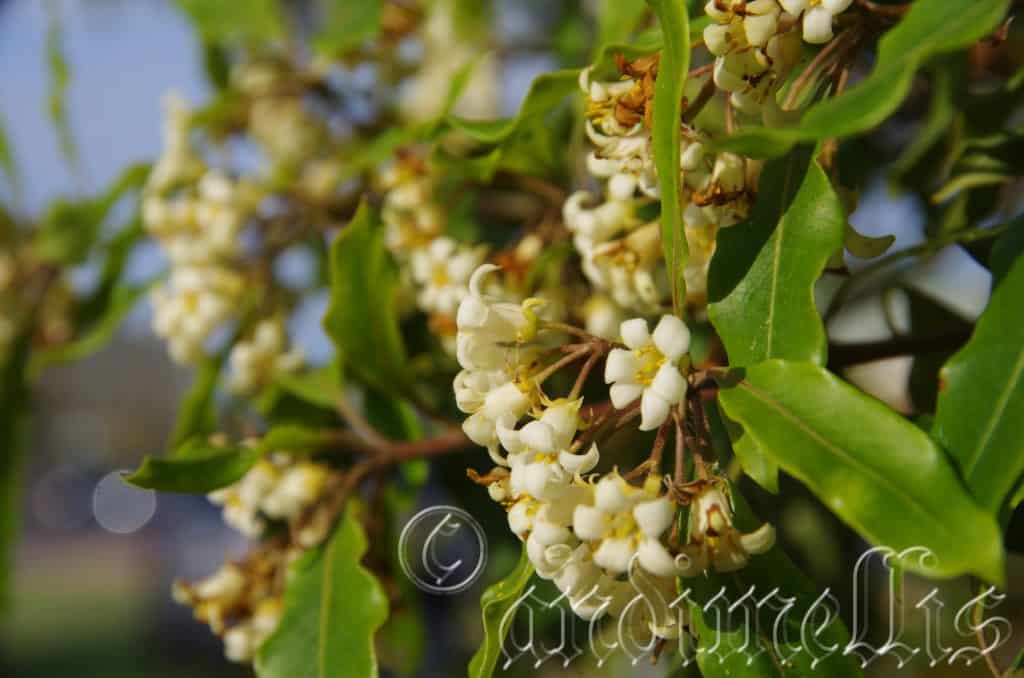
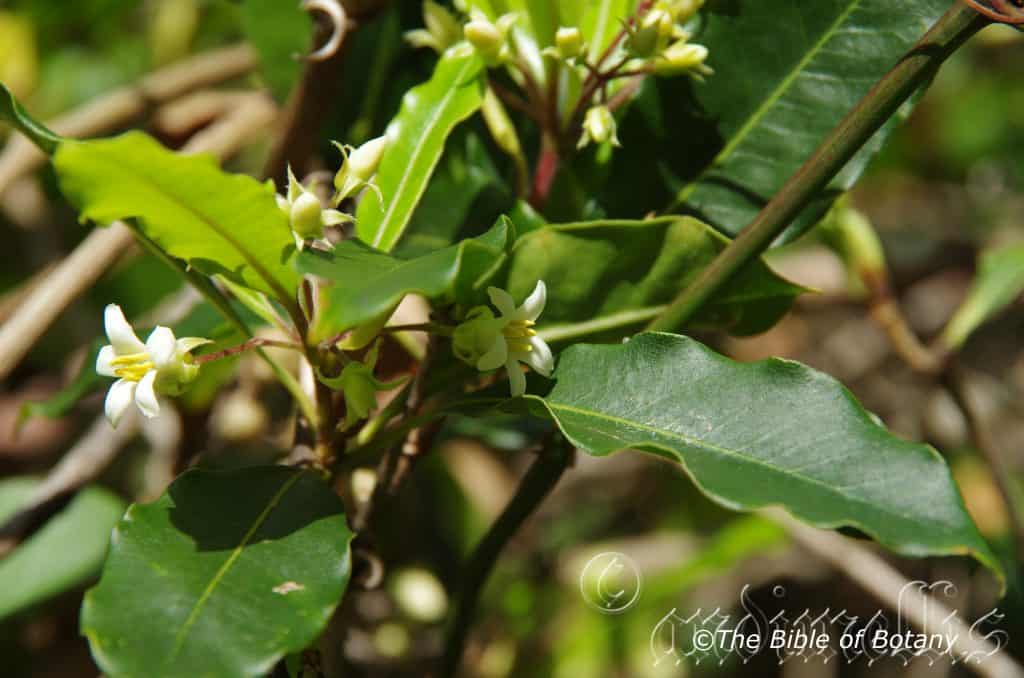
Moonee Beach NSW

Moonee Beach NSW
Pittosporum undulatum
Classification:
Unranked: Eudicots
Unranked: Asterids
Order: Apiales
Family: Pittosporcaceae
Genus: From Pitta, which is Ancient Greek for resinous pitch and Spora, which is Ancient Greek for a seed. It refers to seeds, which are held onto the fruits, when ripe by a sticky resin until retrieved by birds or other small animals.
Specie: From Undul?tum, which is Latin for wavy. It refers to structures or organs, which have margins or surfaces which are very wavy or undulating.
Sub specie:
Common Name: Native Daphne or Sweet Pittosporum.
Distribution:
Pittosporum undulatum is found south from Childers in southern Queensland to Kangaroo Island and Port Lincoln in South Australia. It is found on the Western Plains, Western Slopes, on and east of the Great Dividing Range to the coast.
It is found on the east coast of Tasmania south from Bekino lookout to Brunny Island, around Devonport with a disjunct population near Macquarie heads on the central west coast.
https://avh.ala.org.au/occurrences/search?taxa=Pittosporum+undulatum#tab_mapView
Habitat Aspect Climate:
Pittosporum undulatum prefers dappled shade to full sun. It grows in openings and adjacent to warm well developed rainforests, littoral rainforests, gallery forests, open Eucalyptus woodlands or sheltered moist Eucalyptus forests. The altitude ranges from 5 meters to 900 meters ASL.
The temperatures range from minus 3 degrees in July to 36 degrees in January.
The rainfall ranges from lows of 450mm to 1800mm average per annum.
Soil Requirements:
Pittosporum undulatum prefers soils that are sandy loams to medium clays. The soils are usually derived from decomposed sandstones, basalts, laterites, granites or metamorphic rocks. The soils pH ranges from 5pH to 6.5pH. It does not tolerate water logged soils. Non saline soils to moderately saline soils are tolerated.
Height & Spread:
Wild Plants:8m to 12m by 6m to 10m
Characteristics:
Pittosporum undulatum grows as a wide spreading densely foliaged small tree. The trunk is tall, straight, grey, glabrous and usually covered in green lichens and especially mosses in cooler moist terrains. The stems are thin deep brown and becoming green-brown only near the apex with newer leaf growth. These stems are sparsely covered in lighter coloured lenticels. The new growth is deep sea-green and sparsely covered in white lenticels and fine white hirsute hairs.
The alternate, clustered, ovate to elliptical or at times narrowly obovate leaves measure 60mm to 150mm in length by 15mm to 40mm in width. The petiole measures 12mm to 15mm in length. The bases are cuneate while the apexes are broadly acuminate to caudate. The discolourous laminas are deep sea-green and glabrous to sparsely covered in white puberulent hairs on the upper lamina while the lower lamina paler. The leaf margins are entire, undulating or rarely flat and curve upwards from the mid vein. The mid vein is slightly prominent on the lower lamina and is not visible on the upper lamina.
Inflorescences of Pittosporum undulatum are born as terminal clusters. The purple pedicels are glabrous to moderately covered in white soft pulverulent hairs and measure 6mm to 9mm in length. The calyxes are yellow and red externally and yellow internally and measure 0.8mm to 1mm in length. The 4 triangular recurve lobes are densely covered in short silky white pubescent hairs externally and glabrous internally and measure 5.5mm to 9.5mm in length. The white corollas turn cream to pale creamy yellow after anthesis and measure 6mm to 8mm in length while the lobes measure 6mm to 8mm in length. The oblong lobes recurve with the apexes being obtuse to acute-obtuse.
The 5 yellow stamens are free for their entire length and measure 7mm to 9mm in length. The filaments are yellow and broader than the anthers at the base while the anthers are deep yellow. The sagittate anthers are exserted and measure 2mm to 2.5mm in length by 0.8mm to 1mm in width.
The yellow style has a yellow-green disc like stigma is glabrous while the ovary is covered in white hirtellous hairs. The pistil measures 6mm to 8mm in length while the stigma measures 0.8mm to 1mm in diameter. Pittosporum undulatum sweet scented flowers appear from early September through to late November.
Pittosporum undulatum’s fruits are globose to ovoidal capsules. The capsules are glabrous to sparsely covered in white pulverulent hairs and measure 10mm to 15mm in length by 10mm to 11mm in diameter. The green capsules turn pale orange-brown to pale yellow-brown. The style is persistent on the ripe fruit. The 8 to 26 red-brown seeds are coated by a clear viscous fluid.
Wildlife:
Pittosporum undulatum’s do not appear to have any predators though the proliferation of flowers visited by hundreds of small native nectar eating flies, native bees like Tetragonula carbonaria and the Blue banded bee Amegilla cingulate and beetles.
Cultivation:
Pittosporum undulatum is a magnificent small tree that should be grown with care in southern areas as it has a tendency to go feral, where it will compete aggressively with other native species. It is ideal at the edge of a rain forest or as the pioneer trees for a rainforest garden. It also makes a great park tree offering quick growth, and good shade. In cultivation it grows from 10 meters to 12 meters in height by 8 meters to 10 meters in diameter when grown in the open or taller and narrower if grown closer together as a rainforest tree.
It grows exceptionally well on lighter soils where deep leaf litter keeps the soil cool and moisture at an even level. If these requirements are met they can cope with temperatures as low as minus 5 degrees and up to 36 degrees. It is moderately drought resistant.
Add to the above, if it is given an adequate supply of water and a little native fertilizer on a regular basis the plants will respond with spectacular flowering over a long period.
It often reaches its full potential in just 12 to 15 years and flower from the fourth year from seed.
Pittosporum undulatum can be used in bonsai work where it is very responsive.
Propagation:
Seeds:
Seeds can be removed easily from the plants as the capsules split.
Sow freshly treated seeds directly into a seed raising mix, keeping them moist not wet. When the seedlings are 20mm to 25mm tall, prick them out and plant them into 50mm native tubes using a good organic mix.
As the seedlings roots reach the bottom of the tubes plant them out into their permanent position. Do not delay.
Fertilize using seaweed, fish emulsion or organic chicken pellets soaked in water on an alternate basis. Fertilize every two months until the plants are established then twice annually in early September or March to maintain better health, vitality and flowering.
Further Comments from Readers:
“Hi reader, it seems you use The Bible of Botany a lot. That’s great as we have great pleasure in bringing it to you! It’s a little awkward for us to ask, but our first aim is to purchase land approximately 1,600 hectares to link several parcels of N.P. into one at The Pinnacles NSW Australia, but we need your help. We’re not salespeople. We’re amateur botanists who have dedicated over 30 years to saving the environment in a practical way. We depend on donations to reach our goal. If you donate just $5, the price of your coffee this Sunday, We can help to keep the planet alive in a real way and continue to bring you regular updates and features on Australian plants all in one Botanical Bible. Any support is greatly appreciated. Thank you.”
In the spirit of reconciliation we acknowledge the Bundjalung, Gumbaynggirr and Yaegl and all aboriginal nations throughout Australia and their connections to land, sea and community. We pay our respect to their Elders past, present and future for the pleasures we have gained.

Mount Cootha Botanical Gardens Qld.
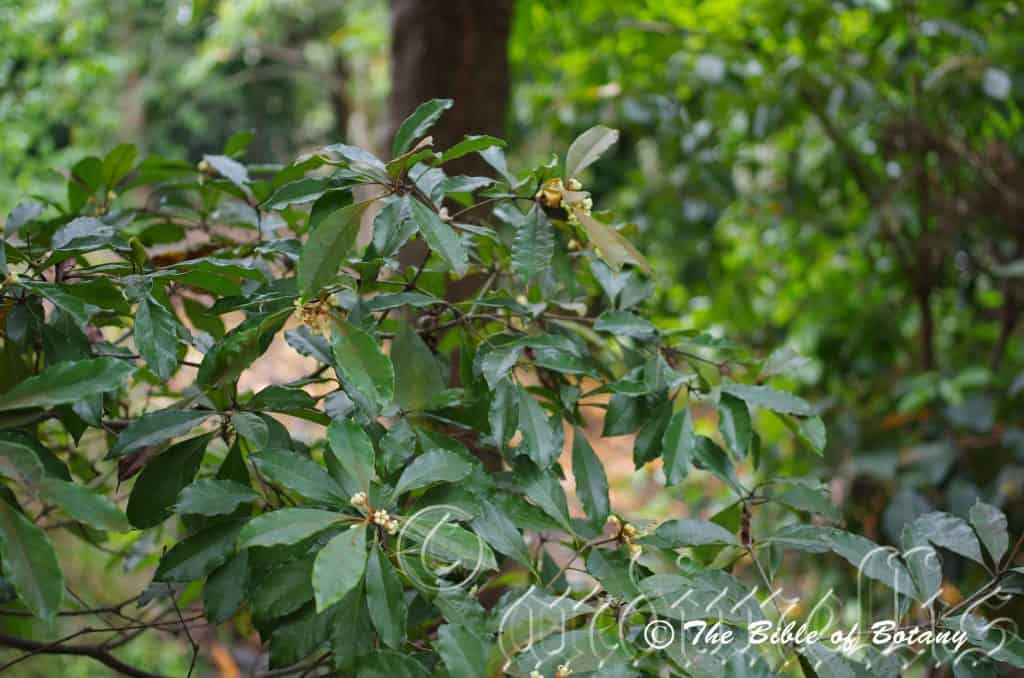
Mount Cootha Botanical Gardens Qld.
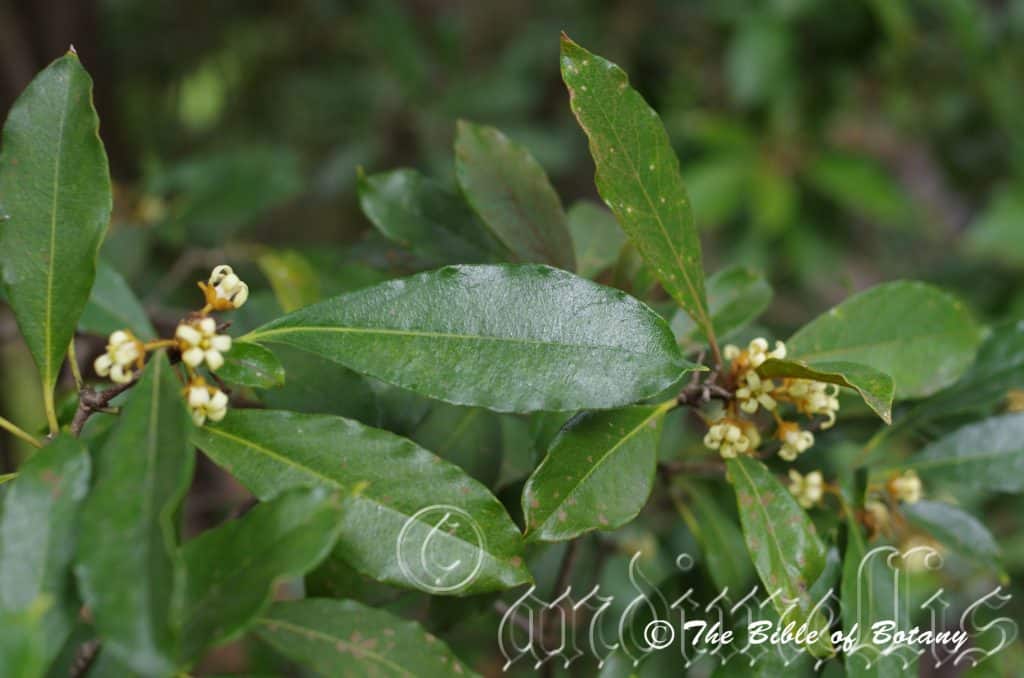
Mount Cootha Botanical Gardens Qld.
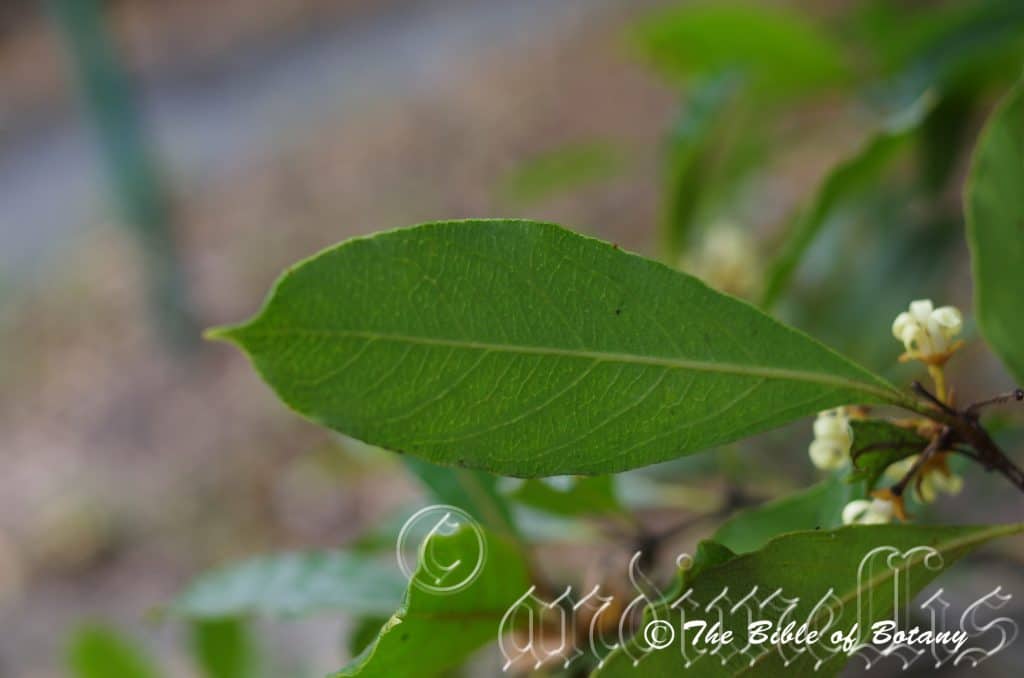
Mount Cootha Botanical Gardens Qld.
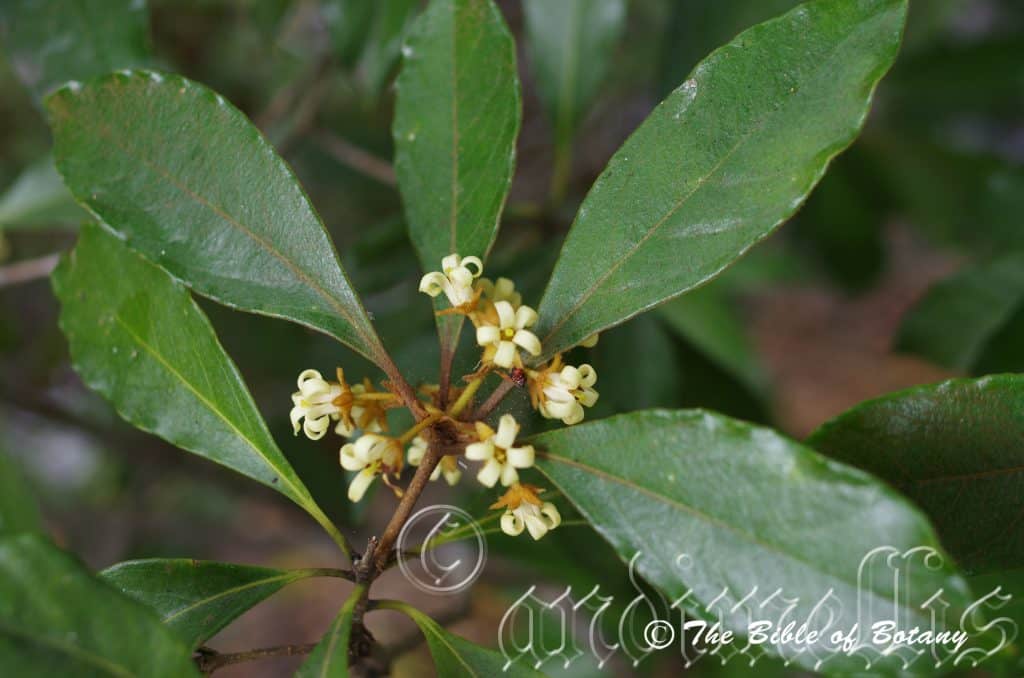
Mount Cootha Botanical Gardens Qld.

Mount Cootha Botanical Gardens Qld.

Mount Cootha Botanical Gardens Qld.
Pittosporum venulosum
Classification:
Unranked: Eudicots
Unranked: Asterids
Order: Apiales
Family: Pittosporcaceae
Genus: From Pitta, which is Ancient Greek for resinous pitch and Spora, which is Ancient Greek for a seed. It refers to seeds, which are held onto the fruits, when ripe by a sticky resin until retrieved by birds or other small animals.
Specie: From Venula, which is Latin for a small channel. It refers to the lateral veins on the leaves, which are very faint.
Sub specie:
Common Name: Rusty Pittosporum or Velvet Pittosporum or Brown Pittosporum or Veiny Pittosporum.
Distribution:
Pittosporum venulosum is found south from Dowling’s Hill in far north Queensland to Miriam Vale in southern coastal Queensland. It is found on the coastal plain to the coastal ranges. There is an isolated population on Murray Island (Reynold Island) in the Torres Straight Island group.
https://avh.ala.org.au/occurrences/search?taxa=Pittosporum+venulosum#tab_mapView
Habitat Aspect Climate:
Pittosporum venulosum prefers dappled shade to full sun. It grows as an understorey tree in well-developed rainforest, dry rainforests or monsoonal rainforest. The altitude ranges from 550 meters to 980 meters ASL except for the population on the Torres Straight Islands that is around 25 meters ASL.
The temperatures range from 6 degrees in July to 36 degrees in January.
The rainfall ranges from lows of 850mm to 3200mm average per annum.
Soil Requirements:
Pittosporum venulosum prefers soils that are sandy loams to medium clays. The soils are usually derived from decomposed brown basalts, black basalts or granites. The soils pH ranges from 5pH to 6.5pH. It does not tolerate water logged soils. Non saline soils to moderately saline soils are tolerated.
Height & Spread:
Wild Plants:16m to 20m by 6m to 10m.
Characteristics:
Pittosporum venulosum grows as a wide spreading densely foliaged small tree. The trunk is often multitrunked, straight or crooked, deep greyish-brown, glabrous and usually covered in horizontal lenticel. The stems are mid greyish-brown. The new growth is olive-green and densely covered in rusty-brown to rusty-ochre sericeous hairs with some longer tomentose hairs.
The alternate elliptical or at times narrow ovate leaves of Pittosporum venulosum measure 65mm to 120mm in length by 20mm to 58mm in width. The petioles are densely covered in rusty-brown to rusty-ochre sericeous hairs with some longer tomentose hairs. The petioles measure 5mm to 10mm in length. The bases are cuneate while the apexes are broadly acuminate to caudate. The discolourous laminas are deep green to sea-green and glabrous to sparsely covered in caduceous rusty-brown to rusty-ochre sericeous hairs on the upper lamina while the lower lamina is much paler and glabrous to sparsely covered in caduceous rusty-brown to rusty-ochre sericeous hairs. The laminas are flat and decurve slightly at the apex while the margins are entire and undulating. The mid vein is prominent on the lower lamina and moderately covered in caduceous rusty-brown to rusty-ochre sericeous hairs and the upper lamina is densely covered in caduceous rusty-brown to rusty-ochre sericeous hairs.
Inflorescences of Pittosporum venulosum are born as terminal clusters. The purple pedicels are glabrous to moderately covered in white soft pulverulent hairs and measure 6mm to 9mm in length. The yellow-green sepals are oblong with obtuse apexes and measure 4mm to 4.5mm in length by 1.5mm to 2mm in width. The sepals are covered in rusty tomentose hairs with longer ciliate hairs on the margins. The white, reflexed petals form a tube for half their length and measure 8mm to 12mm in length by 1.5mm to 2mm in width.
The 5 white filaments have deep red-maroon anthers and are inserted or slightly exserted.
The pastel yellowish-green style has a pastel yellowish-green disc like stigma, is glabrous and exserted. The pistil measures 6mm to 8mm in length while the stigma measures 1mm to 1.2mm in diameter. The sweet scented flowers appear from early September through to late November.
Pittosporum venulosum fruits are 2 or rarely 3 valve, sub globose capsules with an apiculate apex. The capsules are glabrous and rugose. The green capsules turn yellow-orange when ripe. They measure 10mm to 20mm in length by 10mm to 14mm in diameter. The green capsules turn pale orange-brown to pale yellow-brown. The style is persistent on the ripe fruit. The valves are 1mm to 2mm thick while the placentas with funicles are attached at about the middle of the capsules. The 6 to 14 scarlet-red seeds are surrounded by a sticky, thick viscous fluid and are attached to an aril or more often a sticky sarcotesta.
Wildlife:
Pittosporum venulosum’s do not appear to have any predators though the flowers are visited by hundreds of small native nectar eating flies, native bees including Tetragonula carbonaria and the Blue banded bee Amegilla cingulate and beetles.
Cultivation:
Pittosporum venulosum is a lovely small tree that is easily grown in warm frost free temperate to cool tropical gardens. It is ideal at the edge of a rain forest or as the pioneer trees for a rainforest garden. It also makes a great park tree offering relatively quick growth, and good shade. In cultivation it grows from 10 meters to 12 meters in height by6 meters to 8 meters in diameter when grown in the open or taller and narrower if grown closer together as a rainforest tree.
It grows exceptionally well on lighter soils where deep leaf litter keeps the soil cool and moisture at an even level. If these requirements are met they can cope with temperatures as low as minus 1 degree and up to 39 degrees. It is moderately drought resistant once established.
Add to the above, if it is given an adequate supply of water and a little native fertilizer on a regular basis the plants will respond with spectacular flowering over a long period.
Pittosporum venulosum can be used in bonsai work where it is very responsive.
Propagation:
Seeds:
The seeds can be removed easily from the plants as the capsules split.
Sow freshly collected seeds directly into a seed raising mix, keeping them moist not wet. When the seedlings are 20mm to 25mm tall, prick them out and plant them into 50mm native tubes using a good organic mix.
As the seedlings roots reach the bottom of the tubes plant them out into their permanent position. Do not delay.
Fertilize using seaweed, fish emulsion or organic chicken pellets soaked in water on an alternate basis. Fertilize every two months until the plants are established then twice annually in early September or March to maintain better health, vitality and flowering.
Further Comments from Readers:
“Hi reader, it seems you use The Bible of Botany a lot. That’s great as we have great pleasure in bringing it to you! It’s a little awkward for us to ask, but our first aim is to purchase land approximately 1,600 hectares to link several parcels of N.P. into one at The Pinnacles NSW Australia, but we need your help. We’re not salespeople. We’re amateur botanists who have dedicated over 30 years to saving the environment in a practical way. We depend on donations to reach our goal. If you donate just $5, the price of your coffee this Sunday, We can help to keep the planet alive in a real way and continue to bring you regular updates and features on Australian plants all in one Botanical Bible. Any support is greatly appreciated. Thank you.”
In the spirit of reconciliation we acknowledge the Bundjalung, Gumbaynggirr and Yaegl and all aboriginal nations throughout Australia and their connections to land, sea and community. We pay our respect to their Elders past, present and future for the pleasures we have gained.
Planchonella australis
Classification:
Unranked: Eudicots
Unranked: Asterids
Order: Ericales
Family: Sapotaceae
Subfamily: Chrysophylloideae
Genus: Is named in Honour of L. Planchon; 1858-1915, who was a French pharmacist and botanical author.
Specie: From Terra Australis, which is Latin for land of the south. It refers to plants, which were first discovered from the land down under.
Sub specie:
Common Name: Black Apple.
In the Gumbaynggirr language it is known as Wilgulga, or Wiigulga while the fruits were called Wiigul. The township of Woolgoolga is named after the tree.
Distribution:
Planchonella australis is found in several disjunct populations south from Yandina Creek in south eastern Queensland to the Illawarra district on the central coast of New South Wales. It is found on and east of the Great Dividing Range to the coastal ranges
https://avh.ala.org.au/occurrences/search?taxa=Planchonella+australis#tab_mapView
Habitat Aspect Climate:
Planchonella australis prefers dappled shade to full sun. It grows on the eastern slopes of the Great Dividing Range in openings and adjacent to warm well developed rainforests, littoral rainforests, gallery forests and sheltered moist Eucalyptus forests. The altitude ranges from 5 meters to 700 meters ASL.
The temperatures range from minus 3 degrees in July to 36 degrees in January.
The rainfall ranges from lows of 900mm to 1800mm average per annum.
Soil Requirements:
Planchonella australis prefers soils that are sandy loams to light fatty clays with a high proportion of forest litter. The soils are derived from decomposed sandstones, metamorphic rocks or metasandstones mixed with shale. The soils pH ranges from 5pH to 6pH. It does not tolerate water logged soils though seasonal flooding may be experienced in riparian zones. Non saline soils to moderately saline soils are tolerated.
Height & Spread:
Wild Plants: 14m to 20m by 6m to 10m
Characteristics:
The trunk of Planchonella australis grows as a tall tree with straight, pinkish-brown, scabrous, scaly bark usually with creepers like Pothos longipes or Microsorum scandens growing on the bark. The branches are pale grey and only becoming green near the apex where the newer leaf growth occurs. The branchlets are sparsely covered in lighter coloured lenticels.
The alternate, ovate, elliptical or obovate leaves of Planchonella australis measure 80mm to 160mm in length by 20mm to 50mm in width. The petiole measures 5mm to 10mm in length. The bases are broad cuneate to tapering attenuate while the apexes are obtuse or bluntly acuminate. The discolourous laminas are deep sea-green, semi glossy and glabrous on the upper lamina while the lower lamina is paler and dull. The leaf margins are entire, flat and curve downwards near the apex. The mid vein and main laterals are slightly prominent on both laminas.
Inflorescences of Planchonella australis are born singularly or a few in loose clusters from the leaf axils. The fawn pedicels are glabrous to sparsely covered in fawn pulverulent hairs and measure 6mm to 13mm in length. The 5 fawn to pale brown calyxes lobes are erect, glabrous and measure 4mm to 8mm in length. The pale lavender corollas turn cream to pale creamy yellow after anthesis and measure 2mm to 3mm in length while the lobes measure 3mm to 6mm in length.
The inserted 5 filaments are free for their entire length and measure 2mm to 4mm in length. The filaments are white and broader than the anthers at the base while the anthers are deep pale fawn. The triangular anthers measure 1.5mm to 2mm in length by 0.6mm to 0.8mm in width at the base.
The white style and stigma are glabrous while the ovary is green. The pistil measures 6mm to 10mm in length. Planchonella australis’s sweet scented flowers appear from early June through to late August.
The fruits of Planchonella australis are globose to obovoidal berries. The large berries are glabrous and covered in white film and measure 20mm to 52mm in length by 22mm to 52mm in diameter. The green capsules turn deep purple black externally and pale creamy yellow to creamy yellow and red or deep burgundy internally when ripe. The calyx lobes are persistent on the ripe fruit. The 3 to 5 glossy brown seeds are flattened ellipsoidal and woody. There is a cream to white longitudinal scar on one side. The fruit ripen from September to November.
Wildlife:
Planchonella australis’s do not appear to have any predators though the ripe fallen fruits are usually heavily infested with Queensland fruit fly. The fruits are also eaten by the grey headed and red headed flying foxes and native rats.
The fruits have a taste reminiscent of apples crossed with an apricot. The texture is that of an apricot. To eat the fruit it is best to have the stomach to consume the freshly fallen fruit and fruit fly maggots at the same time as finding good clean fallen fruit is rare.
If the fruit fly problem can be overcome then this tree would have good commercial opportunities as the fruit is of good size and quality and has a reasonable shelf life. Trees can produce good quantities of fruit naturally in good seasons so with good maintenance practices this could be duplicated on the farm.
Cultivation:
Planchonella australis is a magnificent small tree that should be grown in association with other rainforest specie. It is ideal at the edge of a rain forest or deep in the center of the rainforest. It also makes a great park tree offering quick growth, and good shade. In cultivation it grows from 12 meters to 15 meters in height by 8 meters to 10 meters in diameter when grown in the open or taller and narrower if grown closer together as a rainforest tree.
It grows exceptionally well on lighter soils where deep leaf litter keeps the soil cool and moisture at an even level. If these requirements are met it can cope with temperatures as low as minus 5 degrees and up to 36 degrees. It is moderately drought resistant.
Add to the above, if it is given an adequate supply of water and a little native fertilizer on a regular basis the plants should respond with good flowering and fruit over a long period.
It often reaches its full potential in just 12 to 15 years and flower from the seventh or eighth year from seed.
This tree could be used a s bonsai plant as I have seen some trees in the forest that have grown in some very difficult conditions take on some weird shapes.
Propagation:
Seeds:
Seeds of Planchonella australis can be removed easily from the fruits.
Sow freshly treated seeds directly into a seed raising mix, keeping them moist not wet. Do not over water as the seeds will rot off before germination takes place. Place the trays in a cool shaded area with 50mm shade cloth in the bush house. When the seedlings are 20mm to 25mm tall, prick them out and plant them into 50mm native tubes using a good organic mix.
As the seedlings roots reach the bottom of the tubes plant them out into their permanent position. Do not delay.
Fertilize using seaweed, fish emulsion or organic chicken pellets soaked in water on an alternate basis. Fertilize every two months until the plants are established then twice annually in early September or March to maintain better health, vitality and flowering.
Further Comments from Readers:
“Hi reader, it seems you use The Bible of Botany a lot. That’s great as we have great pleasure in bringing it to you! It’s a little awkward for us to ask, but our first aim is to purchase land approximately 1,600 hectares to link several parcels of N.P. into one at The Pinnacles NSW Australia, but we need your help. We’re not salespeople. We’re amateur botanists who have dedicated over 30 years to saving the environment in a practical way. We depend on donations to reach our goal. If you donate just $5, the price of your coffee this Sunday, We can help to keep the planet alive in a real way and continue to bring you regular updates and features on Australian plants all in one Botanical Bible. Any support is greatly appreciated. Thank you.”
In the spirit of reconciliation we acknowledge the Bundjalung, Gumbaynggirr and Yaegl and all aboriginal nations throughout Australia and their connections to land, sea and community. We pay our respect to their Elders past, present and future for the pleasures we have gained.
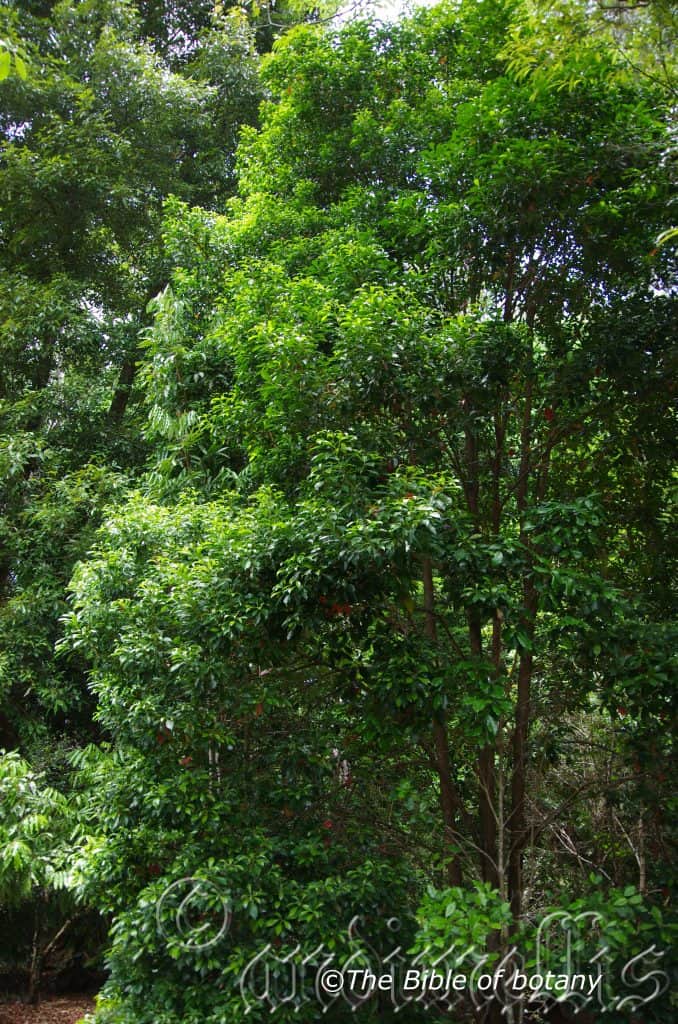
Mount Cootha Botanic gardens Qld.

NCBG Coffs Harbour NSW
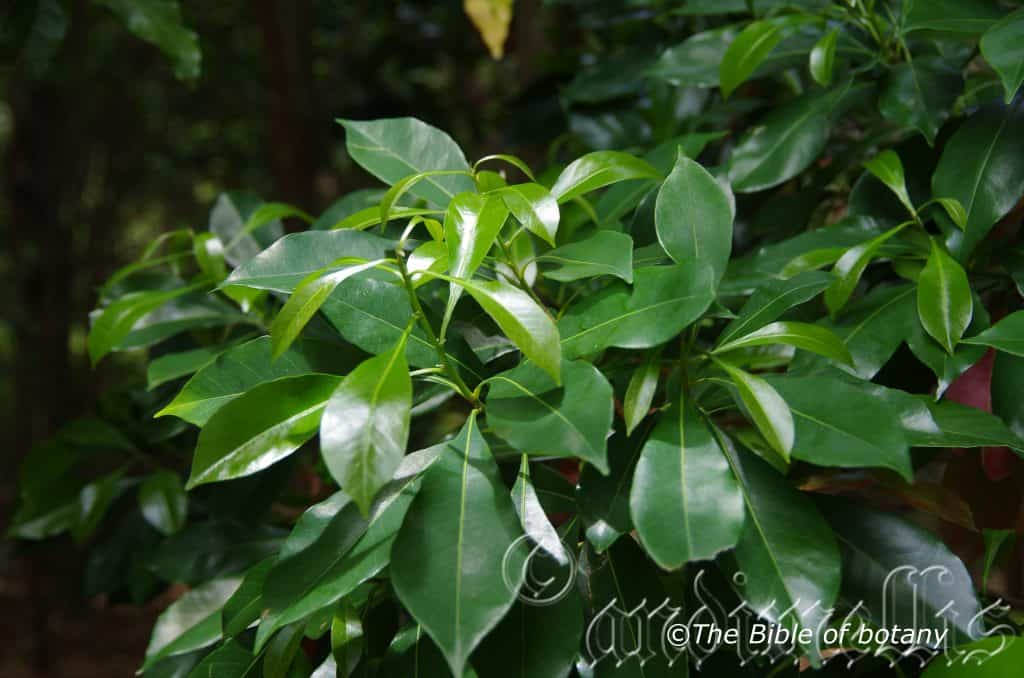
Mount Cootha Botanic gardens Qld.
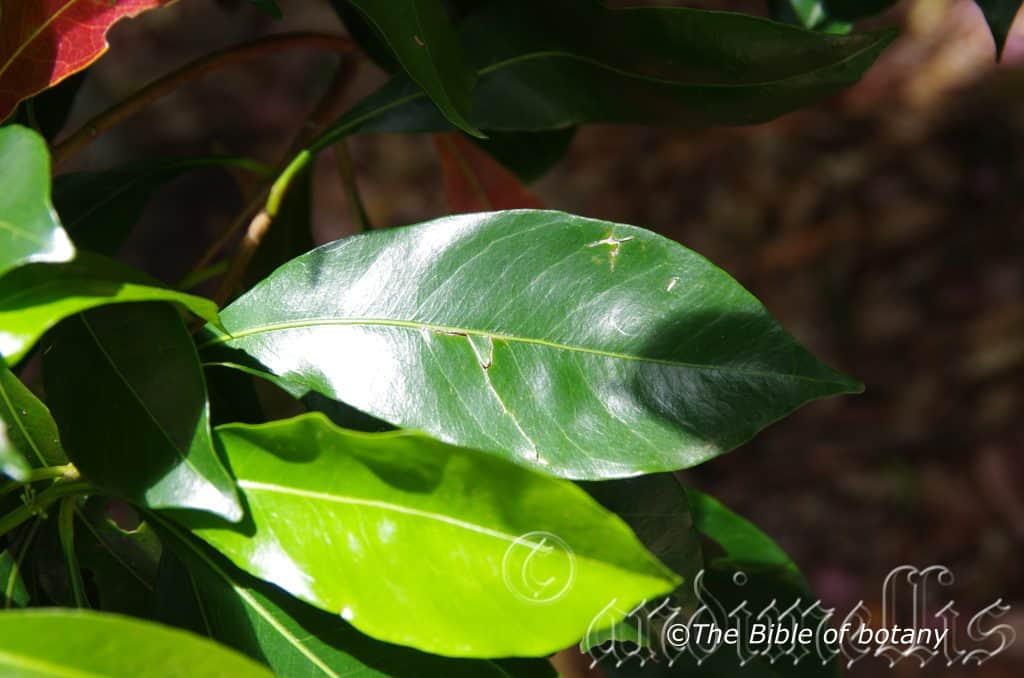
NCBG Coffs Harbour NSW
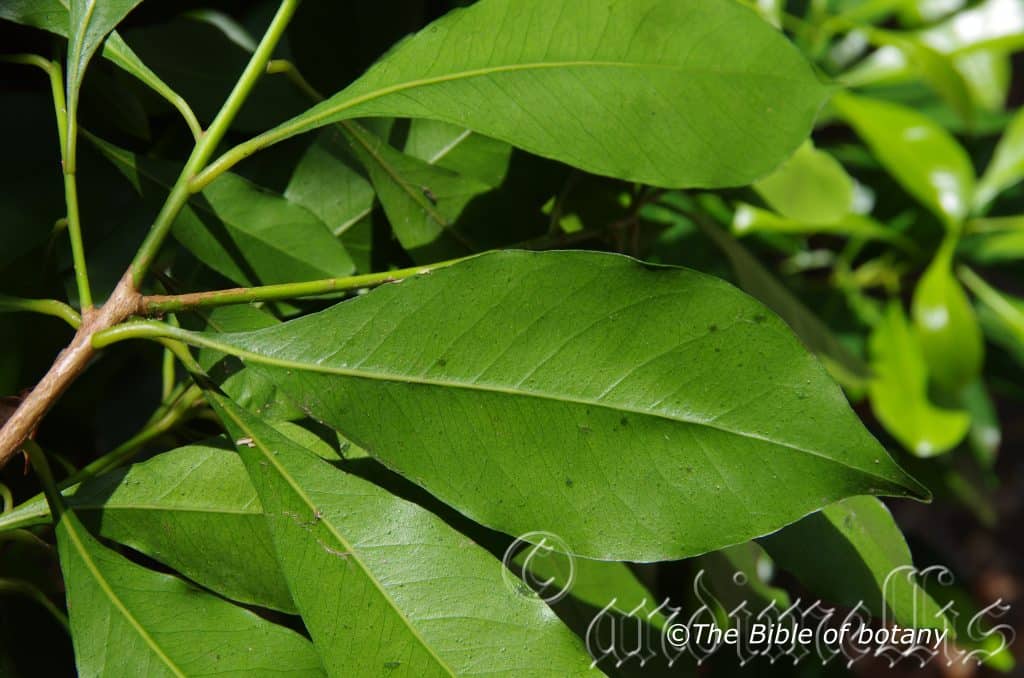
NCBG Coffs Harbour NSW

NCBG Coffs Harbour NSW
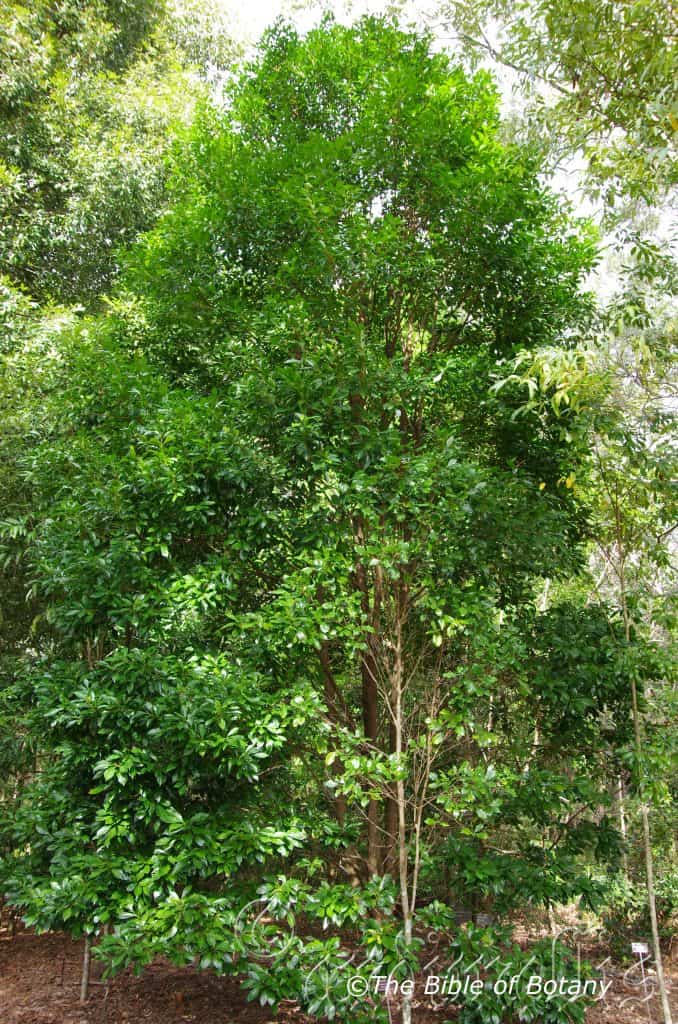
NCBG Coffs Harbour NSW
Planchonella chartacea
Classification:
Unranked: Eudicots
Order: Ericales
Family: Sapotaceae
Subfamily: Chrysophylloideae
Genus: Is named in Honour of L. Planchon; 1858-1915, who was a French pharmacist and botanical author.
Specie: From Chartacea, which is Latin for papery. It refers to a physical structure, which has a papery appearance and or touch.
Sub specie:
Common Name: Thin Leaved Coondoo or Thin Leaved Plum.
In the Gumbaynggirr language it is known as Dugulla.
Distribution:
Planchonella chartacea is found south from Carnegie Range on Cape York Peninsular in far North eastern Queensland to Tyalgum on the Clarence River in northern New South Wales.
https://avh.ala.org.au/occurrences/search?taxa=Planchonella+chartacea#tab_mapView
Habitat Aspect Climate:
Planchonella chartacea prefers dappled shade to full sun. It grows on the eastern slopes of the Great Dividing Range, on the coastal plains and off shore Islands. It grows in well-developed lowland rainforests, well developed littoral rainforests, montane rainforests close to the coast or monsoonal rainforests. The altitude ranges from 10 meters to 760 meters ASL.
The temperatures range from 1 degree in July to 38 degrees in January.
The rainfall ranges from lows of 900mm to 3200mm average per annum.
Soil Requirements:
Planchonella chartacea prefers peaty sands, sandy loams to light fatty clays to medium clays and medium old silts with a high proportion of forest litter. The soils are derived from decomposed sandstones, granites, basalts, alluvial deposits, accumulated peaty beach sands or accumulated coral sands. The soils pH ranges from 5pH to 7pH. It does not tolerate water logged soils though seasonal flooding may be experienced in riparian zones and on flood plains for short periods. Non saline soils to moderately saline soils are tolerated.
Height & Spread:
Wild Plants: 14m to 20m by 6m to 10m
Characteristics:
Planchonella chartacea grows as a tall tree with straight, pinkish-brown, scabrous, scaly bark. The branches are pale grey and only becoming green near the apex where the newer leaf growth occurs. The branchlets are sparsely covered in lighter coloured lenticels.
The alternate obovate to oblanceolate leaves measure 80mm to 180mm in length by 20mm to 50mm in width. The petiole produces a milky sap and measures 6mm to 12mm in length. The bases are tapering attenuate while the apexes are bluntly acuminate. The discolourous laminas are deep green to sea-green, semi glossy and glabrous on the upper lamina while the lower lamina is paler and dull. The laminas are convex from the mid vein to the near the margins and decurve strongly at the margins while the margins are entire and undulating. The yellowish-green mid vein is prominent on both laminas.
The inflorescences are born in small clusters of 3 to 7 flowers from the leaf axils. The pale green pedicels are glabrous to covered in fine, soft, white sericeous hairs and measure 5mm to 8mm in length.
The ovate sepals are covered in covered in fine, soft, white sericeous hairs externally and internally especially near the apexes and measure 3.5mm to 4.5mm by 2.5mm to 3.2mm in width. The corolla measures 3.4mm to 4.5mm in length.
The 5 stamens are inserted in the middle of the corolla. The white filaments measure 0.9mm to 1.1mm in length while the anthers measure 1 mm to 1.1mm in length. The staminodes are lanceolate, linguiforme and measure 1mm to 1.5mm in length. The ovary measures 3.5mm to 4.5mm in length while the disk is adnate to the ovary and is densely covered in rusty-brown hirsute hairs. The style measures 1mm to 1.2mm in length. Planchonella australis’s sweet scented flowers appear from August to September.
The fruits of Planchonella chartacea are obovoidal to globose berries. The large berries are glabrous and measure 15mm to 20mm in length by 10mm to 15mm in diameter. The green berries turn deep purple to deep purple-black externally and yellow to creamy-yellow or reddish internally when ripe. The calyx lobes are persistent at the base while the style is persistent at the apex of the ripe fruit. The 2 to 5 laterally compressed ellipsoidal seeds and woody. There is a cream to white longitudinal narrow elliptical hilum scar that measures 1mm in width and about half the length of the seed. The seeds measure 9mm to 20mm in length by 5mm to 10mm in width and 4mm to 7mm in thickness. The fruits ripen from May to October.
Wildlife:
Planchonella chartacea’s do not appear to have any predators though the ripe fallen fruits are usually heavily infested with Queensland fruit fly (Bactrocera tryoni). The fruits are also eaten by the Grey Headed Flying Fox (Pteropus poliocephalus) and Little Red Flying Fox (Pteropus scapulatus) and the Native Bush Rat (Rattus fuscipes).
The fruits have a taste reminiscent of apples crossed with a plum. The texture is that of an apricot. To eat the fruit it is best to have the stomach to consume the freshly fallen fruit and fruit fly maggots at the same time.
If the fruit fly problem can be overcome then this tree would have good commercial opportunities as the fruit is of good size and quality and has a reasonable shelf life. Trees can produce good quantities of fruit naturally in good seasons so with good maintenance practices this can be duplicated on the farm and turned into handsome profits.
Cultivation:
Planchonella chartacea is a magnificent medium tree that should be grown in association with other rainforest specie. It is ideal at the edge of a rain forest or deep in the center of the rainforest. They also make great park trees offering quick growth, and good shade. In cultivation they will grow from 12 meters to 15 meters in height by 8 meters to 10 meters in diameter when grown in the open or taller and narrower if grown closer together as a rainforest tree.
It grows exceptionally well on lighter sandy soils where deep leaf litter keeps the soil cool and moisture at an even level. If these requirements are met they can cope with temperatures as low as minus 5 degrees and up to 36 degrees. It is moderately drought resistant.
Add to the above, if It is given an adequate supply of water and a little native fertilizer on a regular basis the plants should respond with good flowering and fruit over a long period.
They often reach their full potential in just 12 to 15 years and flower from the seventh or eighth year from seed.
This tree could be used a s bonsai plant as I have seen some trees in the forest that have grown in some very difficult conditions take on some weird shapes.
Propagation:
Seeds:
Seeds of Planchonella chartacea can be removed easily from the fruits.
Sow freshly cleaned, nicked seeds directly into a seed raising mix in 50mm native tubes, keeping them moist not wet. Do not over water as the seeds will rot off before germination takes place. Place the trays with the tubes in a cool shaded area beneath 50mm shade cloth in the bush house. When the seedlings are 50mm to 100mm tall or the seedlings roots reach the bottom of the tubes plant them out into their permanent position. Do not delay as setback will rapidly occur.
Fertilize using seaweed, fish emulsion or organic chicken pellets soaked in water on an alternate basis. Fertilize every two months until the plants are established then twice annually in early September or March to maintain better health, vitality and flowering.
Further Comments from Readers:
“Hi reader, it seems you use The Bible of Botany a lot. That’s great as we have great pleasure in bringing it to you! It’s a little awkward for us to ask, but our first aim is to purchase land approximately 1,600 hectares to link several parcels of N.P. into one at The Pinnacles NSW Australia, but we need your help. We’re not salespeople. We’re amateur botanists who have dedicated over 30 years to saving the environment in a practical way. We depend on donations to reach our goal. If you donate just $5, the price of your coffee this Sunday, We can help to keep the planet alive in a real way and continue to bring you regular updates and features on Australian plants all in one Botanical Bible. Any support is greatly appreciated. Thank you.”
In the spirit of reconciliation we acknowledge the Bundjalung, Gumbaynggirr and Yaegl and all aboriginal nations throughout Australia and their connections to land, sea and community. We pay our respect to their Elders past, present and future for the pleasures we have gained.
Planchonella eerwah
Classification:
Unranked: Magnoliophyta
Unranked: Magnoliopsida
Order: Ebonales
Family: Sapotaceae
Genus: Is named in Honour of L. Planchon; 1858-1915, who was a French pharmacist and botanical author.
Specie: From Eewah, which is Latinized from the vernacular from the local Gabbi Gabbi aboriginal tribal word for an eagle. It is named after the area in where the first plant was discovered near Mount Eerwah in south east Queensland.
Sub species:
Common Name: Shinny Leaf Condoon.
The local Gumbaynggirr know it as Wiigulga and Wiigul.
Distribution:
Pouteria eerwah is found in several disjunct populations from the Glass House Mountains, Bribie Island and Caloundra to the Macpherson Ranges on the border in southern eastern Queensland.
https://avh.ala.org.au/occurrences/search?taxa=Planchonella+eerwah#tab_mapView
Habitat Aspect Climate:
Planchonella eerwah prefers light dappled shade to full sun. It grows in subtropical rainforests and dry rainforests usually associated with Hoop pines Araucaria cunninghamii, Crows Ash Flindersia australis or Tulip wood Harpullia pendula. The altitude ranges from 50 meters ASL to 850 meters ASL.
The temperatures range from minus 2 degree in August to 34 degrees in January.
The rainfalls range from lows of 800mm to an average of 1200mm.
Soil Requirements:
Planchonella eerwah prefers better quality light sandy clays to medium clays often with copious quantities of leaf litter. The soils are deep or on rare occasions on shallow soils close to the parent bedrock. The soils are derived from decomposed black basalts, or metamorphic rocks. The soils pH ranges from 4.5pH to 7pH. It does not tolerate water logged soils. Non saline soils to moderately saline soils are tolerated.
Height & Spread:
Wild Plants: 20m to 40m by 6m to 8m.
Characteristics:
Planchonella eerwah grows as a tall trunked tree with pale grey to mid grey with shallow longitudinal furrowed, scaly bark with flaky patches. The trunks develop a small, wide spreading buttress from 500mm to 1 meter above the ground. The branches and branchlets are dull powdery grey to pinkish-grey and glabrous. Young branchlets exude clear milky latex when damaged.
Planchonella eerwah’s dense, alternate broad elliptical, oblanceolate leaves measure 40mm to 140mm in length by 10mm to 35mm in width. The bases are cuneate to slightly attenuate while the apexes are broadly acute to obtuse. The concolourous laminas are mid grass-green to deep grass-green, glabrous and glossy on the upper lamina while the lower lamina is semi glossy. The margins are entire, flat to curving slightly upwards from the midvein and decurve near the apex. The mid vein is strongly prominent on both laminas of the leathery leaves.
The infloresecence of Planchonella eerwah are born from the leaf axils. The sepals and obtuse sepal lobes are mid grass-green and covered in white hirsute hairs. They measure less than 0.5 mm in length. The creamy green corolla measures 4mm to 5mm in length. The pedicels measure 4mm to 5mm in length.
The inserted stamens measure 2.5mm to 3mm in length.
The ovary and style are covered in white sericeous hairs. The pistil measures 5mm to 5.6mm in length. The flowers appear throughout the year with peak flowering occurring from August to January.
Pouteria eerwah’s fruit is a flattened spherical berry. The berries measure 30mm to 60mm in length by 35mm to 45mm in diameter. The grass-green berries turn deep reddish-purple on ripening. The internal flesh is creamy fawn.
The woody ovoidal seeds are laterally compressed and are pale brown. There are usually 3 sometimes 4 or 5 seeds per fruit which measure 18mm to 25mm in length by 8mm to 10mm in width and 6mm to 7mm in depth. The hilum scar runs the length of the seed and measures 3mm in width.
Wildlife:
Planchonella eerwah’s fruit probably hosts the Queensland fruit fly similar to other members of the genus. Fruits are edible however I have not had the pleasure of eating any fruit.
Cultivation:
Planchonella eerwah is an excellent medium tree for starting a small, dry rainforest garden. It always looks green and fresh especially where adequate ground moisture is retained and some shade is provided. In cultivation they will probably grow 16 meters to 20 meters in height by 8 meters to 12 meters in diameter when grown in the open, based on the shape of plants growing in the open in nature.
It is most suitable where semi shade occurs on drier soils. Use them adjacent to pathways, rockeries, along sandy clay banks or along drive ways or adjacent to natural rainforest gardens. Because of the buttressing of the trunk near the base on mature trees, plant them at least 2 meters back from paths and 10 meters from utilities.
The fruits are a real bonus on this plant and can be used for indoors decorations.
The trees would make very good accent trees in front of low set commercial or industrial sheds where they will break up hard rigid architectural lines and give warmth and breadth to a building. In front of high rise buildings they would give balance especially where they could be grown in curves meandering to the entry doors or for something different used from the front of the path and meander back to the far corners with shrubs or flowers planted between the trees and the building and the trees and the nature strip. Another method would be to plant those using trees with contrasting barks like Eucalyptus citriodora, Acacia melanoxylon or Araucaria cunninghamii remembering that this tree will grow a lot taller than the others.
They would make good container plants for verandas and well-lit areas indoors and courtyards.
Propagation:
Seeds: The seeds of Planchonella eerwah can be removed easily from the fruits as they ripen though large quantities are difficult to collect. If collecting seed from wild plants consider the rarity and other wildlife when taking the seeds and ask the owners of the properties for permission to enter their land. The seeds of this genus have a good strike rate so only a few would be required.
The side of the seeds need to be scarified prior to sowing. Be careful not to damage the hilum in the process.
Sow the freshly treated seeds directly into a seed raising mix in 50mm native tubes keeping them moist not wet. When the seedlings are 100mm to 125mm tall, prick them out and plant them into 200mm buckets using a good organic mix or plant them out directly into their permanent position.
Fertilize using seaweed, fish emulsion or organic chicken pellets soaked in water on an alternate basis. Fertilize every two months until the plants are established then twice annually in early September and March to maintain better colour, health, vitality and flowering.
Further Comments from Readers:
“Hi reader, it seems you use The Bible of Botany a lot. That’s great as we have great pleasure in bringing it to you! It’s a little awkward for us to ask, but our first aim is to purchase land approximately 1,600 hectares to link several parcels of N.P. into one at The Pinnacles NSW Australia, but we need your help. We’re not salespeople. We’re amateur botanists who have dedicated over 30 years to saving the environment in a practical way. We depend on donations to reach our goal. If you donate just $5, the price of your coffee this Sunday, We can help to keep the planet alive in a real way and continue to bring you regular updates and features on Australian plants all in one Botanical Bible. Any support is greatly appreciated. Thank you.”
In the spirit of reconciliation we acknowledge the Bundjalung, Gumbaynggirr and Yaegl and all aboriginal nations throughout Australia and their connections to land, sea and community. We pay our respect to their Elders past, present and future for the pleasures we have gained.

NCBG Coffs Harbour NSW
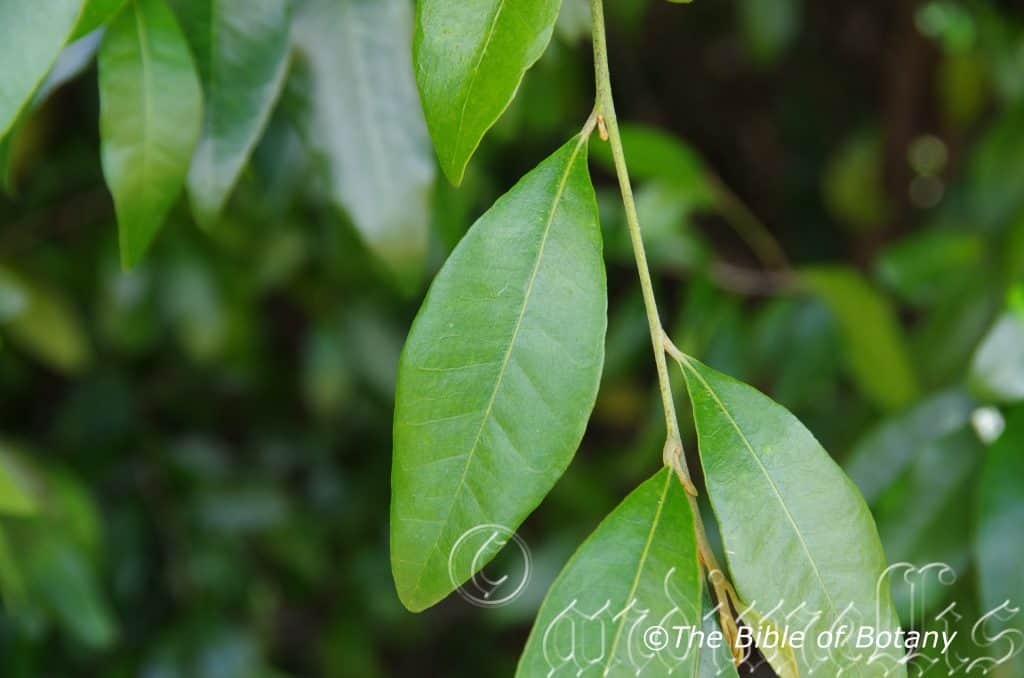
NCBG Coffs Harbour NSW
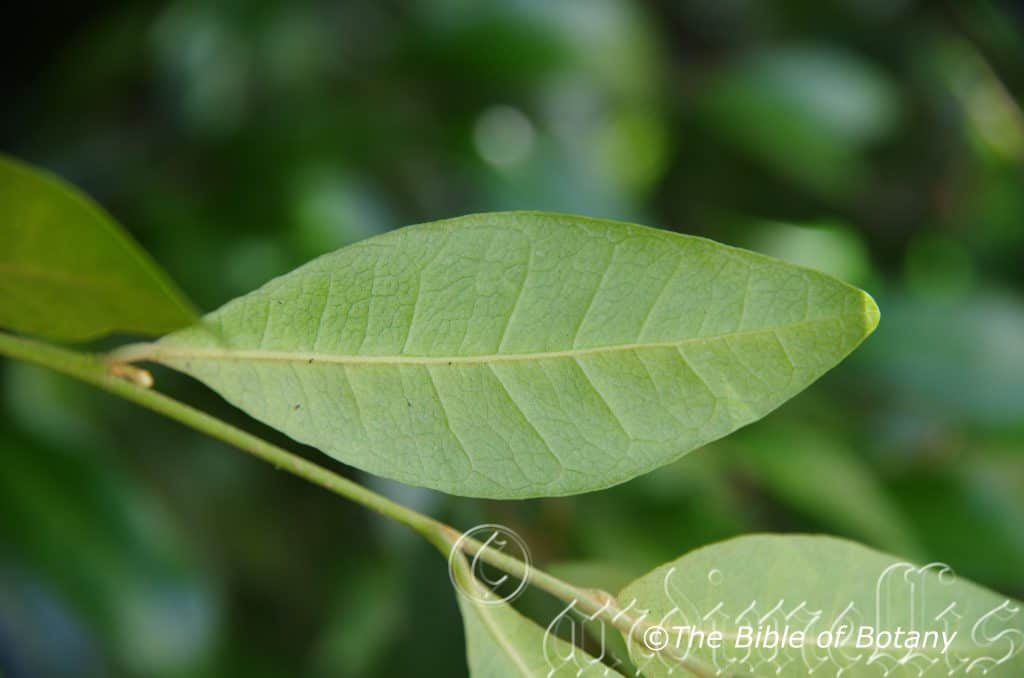
NCBG Coffs Harbour NSW
Planchonella myrsinifolia
Classification:
Unranked: Magnoliophyta
Unranked: Magnoliopsida
Order: Ebonales
Family: Sapotaceae
Genus: Is named in Honour of L. Planchon; 1858-1915, who was a French pharmacist and botanical author.
Specie: From Mursín?, which is Ancient Greek for the old name of a myrtle and Folium, which is Latin for a foliage or leaves. It refers to plants, which have leaves, which are very typical of the myrtle family.
Sub species:
Common Name: Yellow Plumwood, Axehandle Wood or Blunt Leaved Coondoo.
Distribution:
Planchonella myrsinifolia is found in several disjunct populations from Bridge Creek National park in coastal northern Queensland south to Sawtell in coastal north eastern New South Wales.
It is also found on Lord howe Island.
https://avh.ala.org.au/occurrences/search?taxa=Planchonella+myrsinifolia#tab_mapView
Habitat Aspect Climate:
Planchonella myrsinifolia prefers dappled shade to full sun. It grows on and east of the Great Dividing Range especially on the coastal plains and off shore Islands. It grows in well-developed lowland rainforests and well developed littoral rainforests. The altitude ranges from 5 meters to 700 meters ASL.
The temperatures range from 3 degrees in July to 38 degrees in January.
The rainfall ranges from lows of 700mm to 1220mm average per annum.
Soil Requirements:
Planchonella myrsinifolia prefers better quality medium clays, peaty sands, sandy loams and alluvial silt deposits with a high proportion of forest litter. The soils are usually derived from decomposed sandstones, granites, brown and black basalts, alluvial deposits, accumulated peaty beach sands or accumulated coral sands. The soils pH ranges from 5pH to 7pH. It does not tolerate water logged soils though seasonal flooding may be experienced in riparian zones and on flood plains for short periods. Non saline soils to moderately saline soils are tolerated.
Height & Spread:
Wild Plants:8m to 12m by 4m to 6m.
Characteristics:
Planchonella myrsinifolia grows as a tall shrub or small bushy tree with straight, pinkish-brown, scabrous, scaly bark. The trunk and main branches are tan to brown. The crooked branchlets turn pale green on the smaller stems and are densely covered in short, pale fawn to creamy tan “T” shaped caducous hairs. The twigs and stems produce a copious or at times scant milky or watery latex.
The alternate, elliptic to obovate or rarely ovate leaves of Planchonella myrsinifolia measure 20mm to 100mm in length by 8mm to 50mm in width. The petioles are densely covered in short, pale fawn to creamy tan “T” shaped caducous hairs. The petioles are moderately to densely covered in produce a copious or at times scant milky or watery latex and measures 2mm to 10mm in length.
The bases taper somewhat to being rounded, while the apexes are obtuse, rarely acuminate or acute to with a blunt point. The discolourous laminas are deep green, semi glossy to glossy and glabrous on the upper lamina, while the lower lamina is pale, dull grey-green and sparsely covered in very fine short, pale fawn to creamy tan, somewhat appressed pubescent hairs especially near the veins. The margins are entire. The yellowish-green mid vein is prominent on the lower lamina and clearly visible on the upper lamina, while the 6 to 10 lateral veins are prominent on the lower laminaand are set at 60 to 65 degrees and form loops well inside the margin. The reticulated lateral veins are finely prominent on the lower lamina.
The inflorescences of Planchonella myrsinifolia are born solitary or in small clusters axillary or at times ramiflorous. The terete, pedicels and measure 8mm to 15mm in length and lengthen in fruit.
The 5 green, broadly ovate to orbicular sepals are moderately to densely covered in white to golden appressed antrorse hairs externally and are glabrous internally and measure 2mm to 2.5mm in length by 2mm to 3mm in width. The white corolla tube measures 2mm to 3mm in length and has broad, shallow obtuse lobes.
The 5 stamens are inserted on the basal half of the corolla. The white filaments measure 1mm to 1.5mm in length, while the flattened, ovate, creamy to pale creamy-pink, abaxially connected anthers measure 1mm in length. The staminodes are lanceolate and measure 0.5mm to 1mm in length.
The bisexual flowers are actinomorphic, 5 merous. The 5 sepals are fused at base, while the 5 petals are fused to about 50mm of their length. The off greenish-white petals measure 5mm to 10 mm in length. The 5 stamens alternate with the 5 staminodes and alternating with the corolla lobes. The sweet scented flowers appear from July to November.
The fruits of Planchonella myrsinifolia are fusiform to ovoid, firm and fleshy and measure 15mm to 30mm by 8mm to 25mm in diameter. The green berries turn deep purple to deep purple-black externally and yellow to creamy-yellow or reddish internally when ripe. The calyx lobes are persistent at the base while the style is persistent at the apex of the ripe fruit. The single glossy brown, compressed ovoidal seed is somewhat woody and measures 10mm to 30mm in length by 8mm to 20mm in width. The cream hylum is as long as the seed and meaures 3mm to 5mm in width.
Wildlife:
Planchonella myrsinifolia’s does not appear to have any predators though the ripe fallen fruits are usually heavily infested with Queensland fruit fly, Bactrocera tryoni. The fruits are also eaten by the Grey Headed Flying Fox, Pteropus poliocephalus and Little Red Flying Fox, Pteropus scapulatus, the Native Bush Rat, Rattus fuscipes and fruitigrove pigeons like Ptilinopus magnificus.
The fruits have a taste reminiscent of dried apples crossed with a plum. The texture is that of an apricot. To eat the fruit it is best to have the stomach to consume the freshly fallen fruit and fruit fly maggots at the same time.
If the fruit fly problem can be overcome then this tree would have good commercial opportunities as the fruit is of good size and quality and has a reasonable shelf life and is most suitable for jams and jellies. Trees can produce good quantities of fruit naturally in good seasons so with good maintenance practices this can be duplicated on the farm and turned into handsome profits.
Cultivation:
Planchonella myrsinifolia is a magnificent small tree that should be grown in association with other small rainforest trees. It is ideal at the edge of a rain forest or deep in the center of the rainforest. It also makes great small park tree offering quick growth or a good hedging shrub. In cultivation it will grow from 8 meters to 10 meters in height by 4 meters to 6 meters in diameter when grown in the open.
It grows exceptionally well on lighter sandy soils where deep leaf litter keeps the soil cool and moisture at an even level. If these requirements are met it can cope with temperatures as low as minus 3 degrees and up to 36 degrees. It is moderately drought resistant.
Add to the above, if it is given an adequate supply of water and a little native fertilizer on a regular basis the plants should respond with good flowering and fruit over a long period.
It often reaches a moderate height in just 12 to 15 years and flower from the seventh or eighth year from seed.
Propagation:
Seeds:
The seeds of Planchonella myrsinifolia can be removed easily from the fruits.
Sow freshly cleaned, nicked seeds directly into a seed raising mix in 50mm native tubes, keeping them moist not wet. Do not over water as the seeds will rot off before germination takes place. Place the trays with the tubes in a cool shaded area beneath 50mm shade cloth in the bush house. When the seedlings are 50mm to 100mm tall or the seedlings roots reach the bottom of the tubes plant them out into their permanent position. Do not delay as setback will rapidly occur.
Fertilize using seaweed, fish emulsion or organic chicken pellets soaked in water on an alternate basis. Fertilize every two months until the plants are established then twice annually in early September or March to maintain better health, vitality and flowering.
Further Comments from Readers:
“Hi reader, it seems you use The Bible of Botany a lot. That’s great as we have great pleasure in bringing it to you! It’s a little awkward for us to ask, but our first aim is to purchase land approximately 1,600 hectares to link several parcels of N.P. into one at The Pinnacles NSW Australia, but we need your help. We’re not salespeople. We’re amateur botanists who have dedicated over 30 years to saving the environment in a practical way. We depend on donations to reach our goal. If you donate just $5, the price of your coffee this Sunday, We can help to keep the planet alive in a real way and continue to bring you regular updates and features on Australian plants all in one Botanical Bible. Any support is greatly appreciated. Thank you.”
In the spirit of reconciliation we acknowledge the Bundjalung, Gumbaynggirr and Yaegl and all aboriginal nations throughout Australia and their connections to land, sea and community. We pay our respect to their Elders past, present and future for the pleasures we have gained.

Anderson Gardens Townsville Qld.
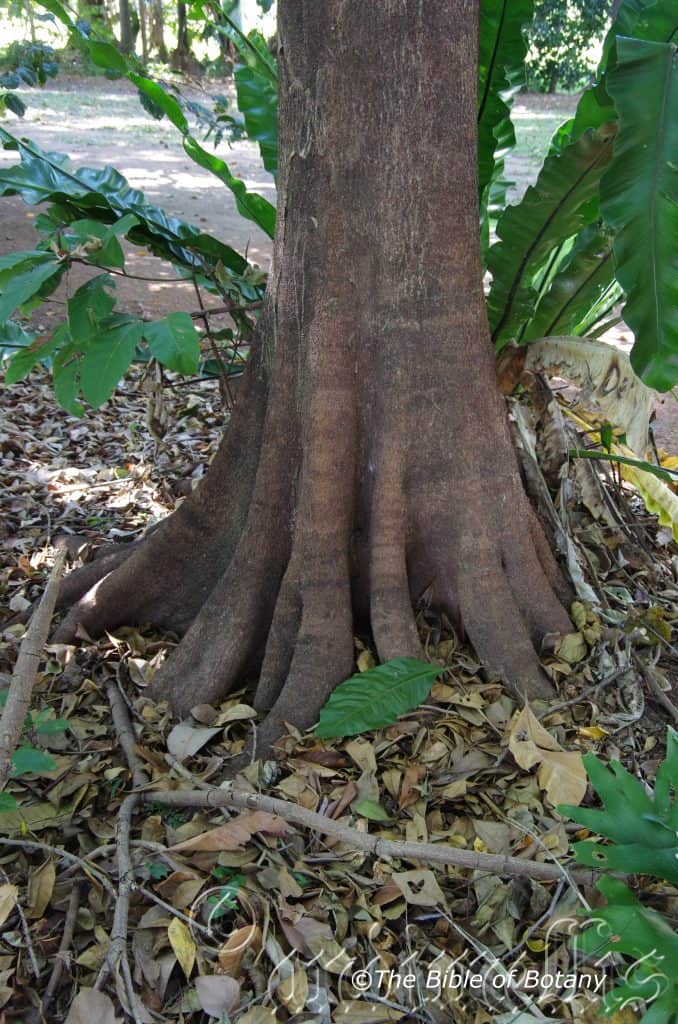
Anderson Gardens Townsville Qld.
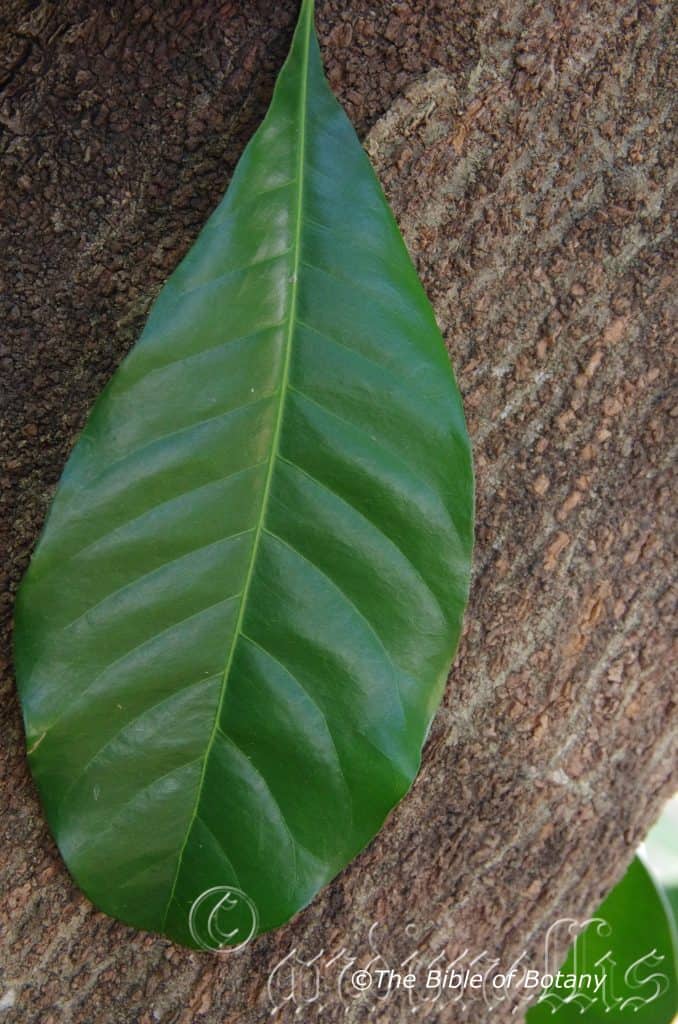
Anderson Gardens Townsville Qld.
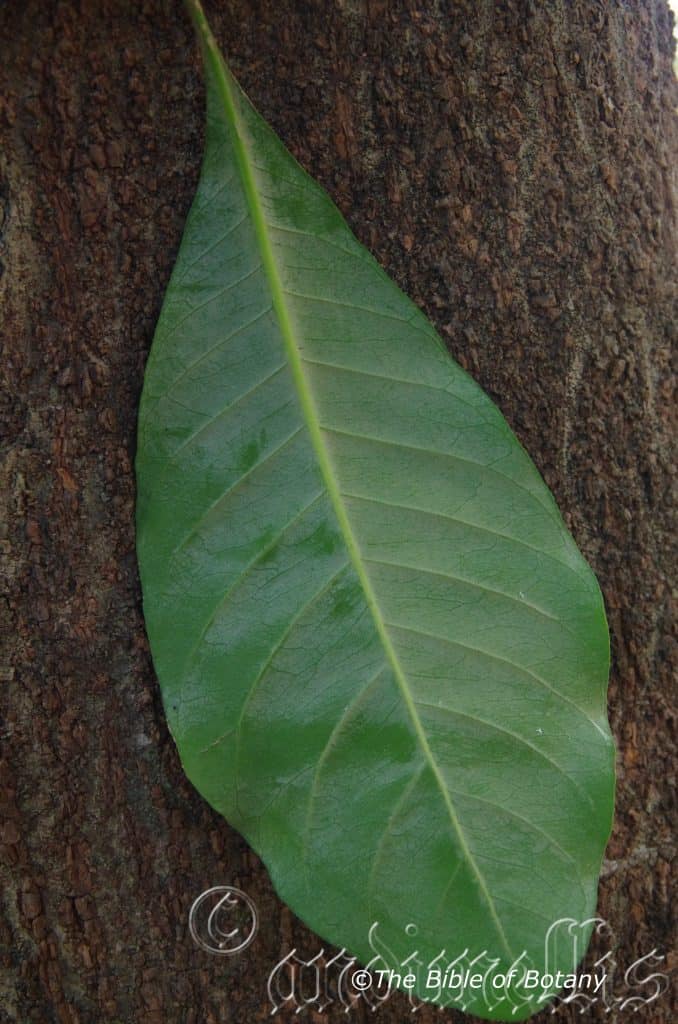
Anderson Gardens Townsville Qld.
Planchonella myrsinodendron
Classification:
Unranked: Magnoliophyta
Unranked: Magnoliopsida
Order: Ebonales
Family: Sapotaceae
Genus: Is named in Honour of L. Planchon; 1858-1915, who was a French pharmacist and botanical author.
Specie: From Mursín?, which is Ancient Greek for the old name of a myrtle and Déndron, which is Ancient Greek for a Tree. It refers to trees, which have properties that are very typical of the myrtle family.
Sub species:
Common Name: Yellow Boxwood, Northern Yellow Boxwood, Yellow Teak, Black Ash or Boxwood.
Distribution:
Planchonella myrsinodendron is found south from Moa Island in the Torres Straight, the tip of Cape York Peninsular to cape Curtis. It is found on and east of The Great Dividing Range in north eastern eastern Queensland.
It is also found in Bougainville, New BritainNew Guinee, Papua and the Soloman Islands.
https://avh.ala.org.au/occurrences/search?taxa=Planchonella+myrsinodendron#tab_mapView
Habitat Aspect Climate:
Planchonella myrsinodendron prefers dappled shade to full sun. It grows on the western side of the Great Dividing Range, on the Great Dividing Range, coastal plains and off shore Islands. It grows in well-developed lowland rainforests, well developed littoral rainforests, montane rainforests close to the coast or monsoonal rainforests. The altitude ranges from 5 meters to 800 meters ASL.
The temperatures range from 6 degrees in July to 38 degrees in January.
The rainfall ranges from lows of 900mm to 3200mm average per annum.
Soil Requirements:
Planchonella myrsinodendron prefers peaty sands, yellow sands, sandy loams to light fatty clays to medium clays and medium old silts with a high proportion of forest litter. The soils are usually derived from decomposed sandstones, granites, brown and black basalts, alluvial deposits, accumulated peaty beach sands or accumulated coral sands. The soils pH ranges from 5pH to 7pH. It does not tolerate water logged soils though seasonal flooding may be experienced in riparian zones and on flood plains for short periods. Non saline soils to moderately saline soils are tolerated.
Height & Spread:
Wild Plants:20m to 30m by 10m to 15m.
Characteristics:
Planchonella myrsinodendron grows as a tall tree with straight, pinkish-brown, scabrous, scaly bark. The branches are pale grey and only becoming green near the apex where the newer leaf growth occurs. The branchlets are moderately to densely covered in pale brown appressed hairs. The twigs and stems produce a milky exudate.
The Fibonacci, oblong leaves of Planchonella myrsinodendron are in a 5:8 and measure 95mm to 250mm in length by 30mm to 100mm in width. The petiole produces a milky sap, is moderately to densely covered in pale brown appressed hairs and measures 12mm to 20mm in length. The bases taper and are short attenuate, while the apexes are bluntly acute to obtuse. The discolourous laminas are deep green, semi glossy and glabrous on the upper lamina while the lower lamina is paler and dull. The laminas are raised between the lateral veins, while the margins are entire. The yellowish-green mid vein is prominent on the lower lamina and clearly visible on the upper lamina, while the lateral veins are set at 60 to 65 degrees and form faint loops just inside the margin.
The inflorescences of Planchonella myrsinodendron are born in small clusters of 3 to 7 flowers from the leaf axils of which each individual flower developing at a different stage. The terete, pale greenish-brown to reddish-brown pedicels are moderately to densely covered in fine, soft, white or brown, appressed, pubescent, antrorse hairs and measure 5.5mm to 18mm in length.
The 5 green, broadly ovate to orbicular sepals are moderately to densely covered in white to golden appressed antrorse hairs externally and are glabrous internally and measure 2mm to 2.5mm in length by 2mm to 3mm in width. The white corolla tube measures 2mm to 3mm in length and has broad, shallow obtuse lobes.
The 5 stamens are inserted on the basal half of the corolla. The white filaments measure 1mm to 1.5mm in length, while the flattened, ovate, creamy to pale creamy-pink, abaxially connected anthers measure 1mm in length. The staminodes are lanceolate and measure 0.5mm to 1mm in length.
The large ovary measures 0.4mm to 0.6mm in length while the ovary is sparsely covered in white hirsute hairs. The style measures 0.5mm to 1.2mm in length. Planchonella myrsinodendron’s sweet scented flowers appear from August to September.
The fruits of Planchonella myrsinodendron are obovoidal to almost cylindrical to almost cylindrical and measure 18mm to 30mm by 10mm to 15mm in diameter. The green berries turn deep purple to deep purple-black externally and yellow to creamy-yellow or reddish internally when ripe. The calyx lobes are persistent at the base while the style is persistent at the apex of the ripe fruit. The single compressed ovoidal seed is somewhat woody measures 12mm to 25mm in length by 8mm to 12mm in width. The cream hylum is as long as the seed and meaures 3mm to 5mm in width.
Wildlife:
Planchonella myrsinodendron’s do not appear to have any predators though the ripe fallen fruits are usually heavily infested with Queensland fruit fly, Bactrocera tryoni. The fruits are also eaten by the Grey Headed Flying Fox, Pteropus poliocephalus and Little Red Flying Fox, Pteropus scapulatus, the Native Bush Rat, Rattus fuscipes and fruitigrove pigeons like Ptilinopus magnificus and both the Australian Cassowary Casuarius casuarius and the New Guinee Cassowaries bennettii and Casuarius unappendiculatus.
The fruits have a taste reminiscent of apples crossed with a plum. The texture is that of an apricot. To eat the fruit, it is best to have the stomach to consume the freshly fallen fruit and fruit fly maggots at the same time.
If the fruit fly problem can be overcome then this tree would have good commercial opportunities as the fruit is of good size and quality and has a reasonable shelf life. Trees can produce good quantities of fruit naturally in good seasons so with good maintenance practices this can be duplicated on the farm and turned into handsome profits.
Cultivation:
Planchonella myrsinodendron is a magnificent medium tree that should be grown in association with other rainforest specie. It is ideal at the edge of a rain forest or deep in the center of the rainforest. They also make great park trees offering quick growth, and good shade. In cultivation they will grow from 15 meters to 20 meters in height by 8 meters to 10 meters in diameter when grown in the open or taller and narrower if grown closer together as a rainforest tree.
It grows exceptionally well on lighter sandy soils where deep leaf litter keeps the soil cool and moisture at an even level. If these requirements are met they can cope with temperatures as low as minus 5 degrees and up to 36 degrees. It is moderately drought resistant.
Add to the above, if it is given an adequate supply of water and a little native fertilizer on a regular basis the plants should respond with good flowering and fruit over a long period.
It often reaches a moderate height in just 12 to 15 years and flower from the seventh or eighth year from seed.
This tree could be used a s bonsai plant as I have seen some trees in the forest that have grown in some very difficult conditions take on some weird shapes.
Propagation:
Seeds:
The seeds of Planchonella myrsinodendron can be removed easily from the fruits.
Sow freshly cleaned, nicked seeds directly into a seed raising mix in 50mm native tubes, keeping them moist not wet. Do not over water as the seeds will rot off before germination takes place. Place the trays with the tubes in a cool shaded area beneath 50mm shade cloth in the bush house. When the seedlings are 50mm to 100mm tall or the seedlings roots reach the bottom of the tubes plant them out into their permanent position. Do not delay as setback will rapidly occur.
Fertilize using seaweed, fish emulsion or organic chicken pellets soaked in water on an alternate basis. Fertilize every two months until the plants are established then twice annually in early September or March to maintain better health, vitality and flowering.
Further Comments from Readers:
“Hi reader, it seems you use The Bible of Botany a lot. That’s great as we have great pleasure in bringing it to you! It’s a little awkward for us to ask, but our first aim is to purchase land approximately 1,600 hectares to link several parcels of N.P. into one at The Pinnacles NSW Australia, but we need your help. We’re not salespeople. We’re amateur botanists who have dedicated over 30 years to saving the environment in a practical way. We depend on donations to reach our goal. If you donate just $5, the price of your coffee this Sunday, We can help to keep the planet alive in a real way and continue to bring you regular updates and features on Australian plants all in one Botanical Bible. Any support is greatly appreciated. Thank you.”
In the spirit of reconciliation we acknowledge the Bundjalung, Gumbaynggirr and Yaegl and all aboriginal nations throughout Australia and their connections to land, sea and community. We pay our respect to their Elders past, present and future for the pleasures we have gained.

Mount Cootha Botanic Gardens Qld.
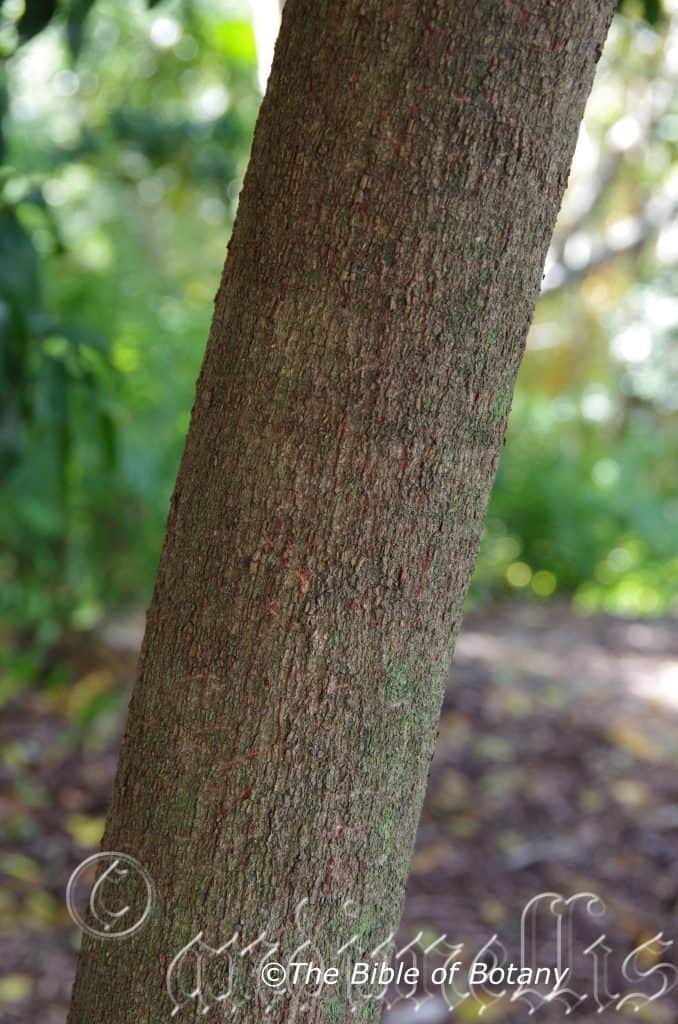
Mount Cootha Botanic Gardens Qld.
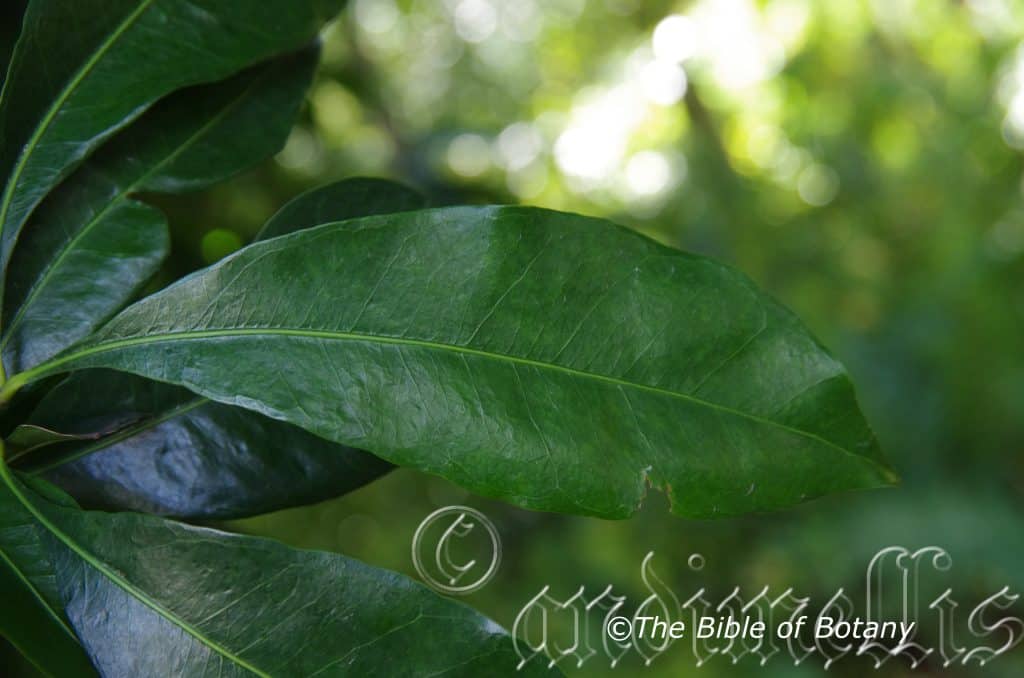
Mount Cootha Botanic Gardens Qld.
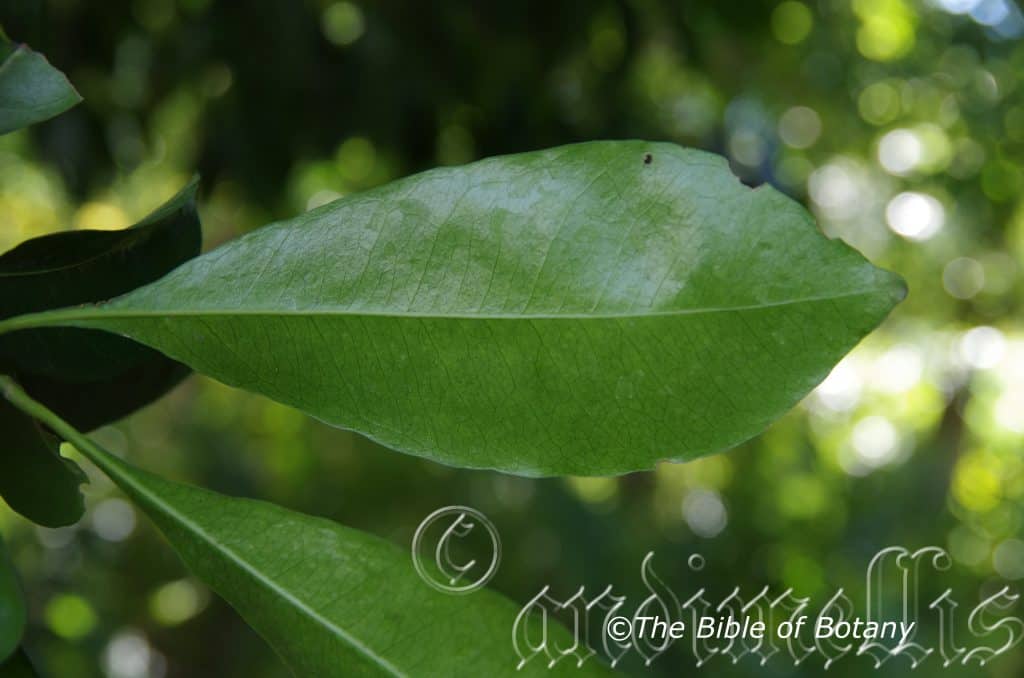
Mount Cootha Botanic Gardens Qld.

Mount Cootha Botanic Gardens Qld.
Planchonella pohlmaniana
Classification:
Unranked: Eudicots
Unranked:
Order: Ericales
Family: Sapotaceae
Subfamily: Chrysophylloideae
Genus: Is named in Honour of L. Planchon; 1858-1915, who was a French pharmacist and botanical author.
Specie: Is named in honour of Robert William Pohlman; 1811-1877, who was a Melbourne Judge and friend of Ferdinand von Mueller.
Sub specie: Pohlmaniana is named in honour of Robert William Pohlman; 1811-1877, who was a Melbourne Judge and friend of Ferdinand von Mueller.
Planchonella pohlmaniana var. vestita. From Vest?ta, which is Latin for to be clothed, clad or dressed. It refers to organs or structures, which are densely covered in some sort of hairs or at times scales,
Planchonella pohlmaniana var. asterocarpon. From Ast?r, which is Ancient Greek for a star and maybe Karpós, which is Ancient Greek for a wrist. It may refer to the pedicels being long and flexible more like a wrist than a foot and being covered in starry hairs.
Common Name: Native Plum or Yellow Boxwood or Black Apple.
In the Gumbaynggirr language it is known as Nwilgulga, while the fruits were called Wiigul.
Distribution:
Planchonella pohlmaniana subsp.pohlmaniana. Is found in the Steve Erwin Wildlif Reserve and the Cape Hillsbough National Park in far north eastern Queensland.
Planchonella pohlmaniana var. vestita. Is found in 2 disjunct populations south of Robinhood and Townsville in far north eastern Queensland.
Planchonella pohlmaniana var. asterocarpon. Is the most widespread of the 3 subspecies. It is found southeast of Mareeba to southeast of Ravenshoe in far north eastern Queensland.
https://avh.ala.org.au/occurrences/search?taxa=Planchonella+pohlmaniana#tab_mapView
Habitat Aspect Climate:
Planchonella pohlmaniana prefers dappled shade to full sun. It grows in openings warm well developed rainforests or sheltered moist warm well developed rainforests. The altitude ranges from 25 meters to 700 meters ASL.
The temperatures range from minus 3 degrees in July to 36 degrees in January.
The rainfall ranges from lows of 450mm to 1800mm average per annum.
Soil Requirements:
Planchonella pohlmaniana prefers better quality soils that are sandy loams to light fatty clays with a high proportion of leaf litter. The soils are derived from decomposed black basalts or metamorphic rocks. The soils pH ranges from 5pH to 6pH. It does not tolerate water logged soils. Non saline soils to moderately saline soils are tolerated.
Height & Spread:
Wild Plants: 8m to 12m by 6m to 10m
Characteristics:
Planchonella pohlmaniana grows as a wide spreading densely foliaged small tree. The trunk is tall, straight, pale grey, scabrous and usually covered in green lichens and especially mosses in cooler moist terrains. The stems are thin deep brown and becoming green-brown only near the apex with newer leaf growth. These stems are sparsely covered in lighter coloured lenticels. The new growth is deep sea-green and sparsely covered in white lenticels and sparsely covered in fine, white pubescent hairs.
The alternate leaves are clustered, oblanceolate to broad oblanceolate. Planchonella pohlmaniana leaves measure 80mm to 150mm in length by 10mm to 50mm in width. The petiole measures 5mm to 12mm in length. The bases are tapering while the apexes are obtuse or bluntly acuminate. The chartaceous, concolourous laminas are deep sea-green and glabrous to densely covered in fawn pubescent hairs on. This is being examined and debated at the moment as to whether these may in fact be 2 distinct sub specie or just a variation of the one sub species. The leaf margins are entire, slightly undulating or flat and curve slightly upwards from the mid vein. The mid vein is prominent on the upper lamina while the main lateral veins are slightly prominent on the upper lamina.
Inflorescences of Planchonella pohlmaniana are born in small clusters of 4 to 12 from the leaf axils. The pale yellow to pale yellow-ochre calyxes are covered in white sericeous hairs externally and glabrous internally. The 5 ovate lobes measure 3.5mm to 4mm in length by 3mm to 3.4mm in width. The pale yellow to creamy yellow corollas measure 3mm to 4.5mm in length while the lobes measure 6mm to 8mm in length. The oblong lobes recurve with the apexes being obtuse to acute-obtuse.
The 5 inserted yellow stamens are free for their entire length. The filaments measure 0.4mm to 0.6mm in length while the anthers measure 0.8mm to 1mm in length. The staminodes measure 1mm to 1.2mm in length.
The yellow style is glabrous and measures 2mm to 3mm in length while the stigma measures 0.8mm to 1mm in diameter. The ovaries measure 1mm in diameter and are covered in yellow-brown hirsute hairs. Planchonella pohlmaniana’s sweet scented flowers appear from early December through to late March.
Planchonella pohlmaniana’s fruits are globose to ovoidal berries. The berries are glabrous to sparsely covered in white film and measure 20mm to 30mm in length by 15mm to 25mm in diameter. The green capsules turn deep purple-black while the flesh turns pale red to deep red-burgundy when ripe. The 3 to 5 laterally compressed, ellipsoidal seeds are glossy brown and woody. There is a white longitudinal scar. The seeds measure 10mm to 12mm in length by 5mm to 9mm in depth and 3mm to 4mm in width.
Wildlife:
Planchonella pohlmaniana’s do not appear to have any predators though the flowers are visited by hundreds of small native nectar eating flies, native bees and beetles. The fruits are eaten by Queensland fruit fly on the east coast and flying foxes, native rats and mice throughout their range.
The fruits have a taste reminiscent of plums crossed with an apricot. The texture is that of an apricot. To eat the fruit it is best to have the stomach to consume the freshly fallen fruit and fruit fly maggots at the same time.
If the fruit fly problem can be overcome then this tree would have good commercial opportunities as the fruit is of good size and quality and has a reasonable shelf life. Trees can produce good quantities of fruit naturally in good seasons so with good maintenance practices this can be duplicated on the farm. Planchonella pohlmaniana is a smaller tree than Planchonella australis and can be pruned so gives the horticulturalist greater opportunities in harvesting
Cultivation:
Planchonella pohlmaniana is a magnificent medium tree that should be more widely grown in tropical, subtropical and monsoonal gardens. It is ideal at the edge of a rain forest or as the pioneer trees for a rainforest garden. They also make great park trees offering quick growth, and good shade. In cultivation it grows from 10 meters to 12 meters in height by 8 meters to 10 meters in diameter when grown in the open or taller and narrower if grown closer together as a rainforest tree.
It can be pruned to maintain a shrub of around 3 meters to 4 meters in height by 3 meters to 4meters in diameter.
It grows exceptionally well on lighter soils where deep leaf litter keeps the soil cool and moisture at an even level. If these requirements are met they can cope with temperatures as low as minus 4 degrees and up to 42 degrees. It is moderately drought resistant.
Add to the above, if it is given an adequate supply of water and a little native fertilizer on a regular basis the plants will respond with good flowering and possibly good fruit set over a long period.
It often reaches its full potential in just 12 to 15 years and flower from the eighth to tenth year from seed.
Planchonella pohlmaniana can be used in bonsai work where it is very responsive. Trees growing on sandstone ridges in Western Australia have taken on some very weird shapes.
Propagation:
Seeds:
Seeds of Planchonella pohlmaniana can be removed easily from the fruits that have fallen to the ground.
Sow freshly treated seeds directly into a seed raising mix, keeping them moist not wet. When the seedlings are 20mm to 25mm tall, prick them out and plant them into 50mm native tubes using a good organic mix.
As the seedlings roots reach the bottom of the tubes plant them out into their permanent position. Do not delay.
Fertilize using seaweed, fish emulsion or organic chicken pellets soaked in water on an alternate basis. Fertilize every two months until the plants are established then twice annually in early September or March to maintain better health, vitality and flowering.
Further Comments from Readers:
“Hi reader, it seems you use The Bible of Botany a lot. That’s great as we have great pleasure in bringing it to you! It’s a little awkward for us to ask, but our first aim is to purchase land approximately 1,600 hectares to link several parcels of N.P. into one at The Pinnacles NSW Australia, but we need your help. We’re not salespeople. We’re amateur botanists who have dedicated over 30 years to saving the environment in a practical way. We depend on donations to reach our goal. If you donate just $5, the price of your coffee this Sunday, We can help to keep the planet alive in a real way and continue to bring you regular updates and features on Australian plants all in one Botanical Bible. Any support is greatly appreciated. Thank you.”
In the spirit of reconciliation we acknowledge the Bundjalung, Gumbaynggirr and Yaegl and all aboriginal nations throughout Australia and their connections to land, sea and community. We pay our respect to their Elders past, present and future for the pleasures we have gained.
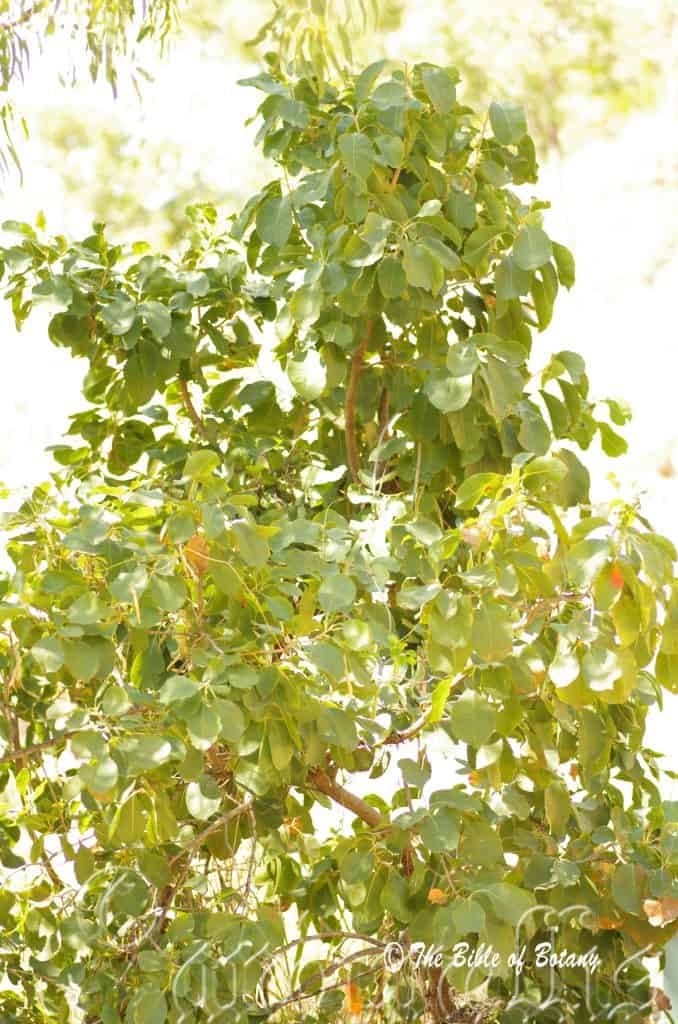
Townsville Qld.
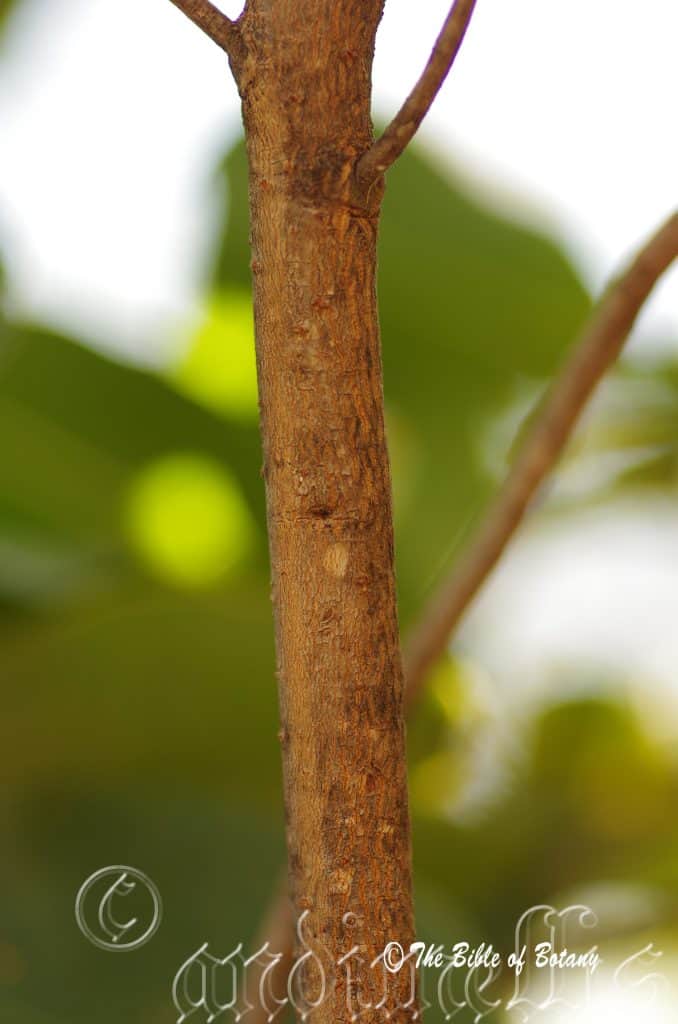
Townsville Qld.
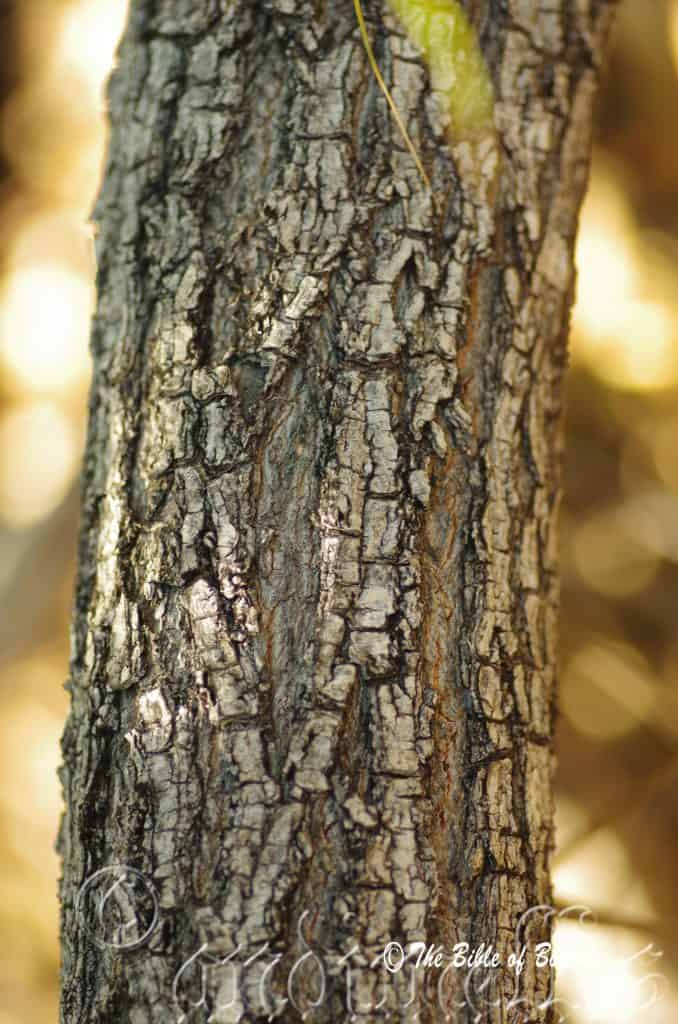
Townsville Qld.

Townsville Qld.

Townsville Qld.
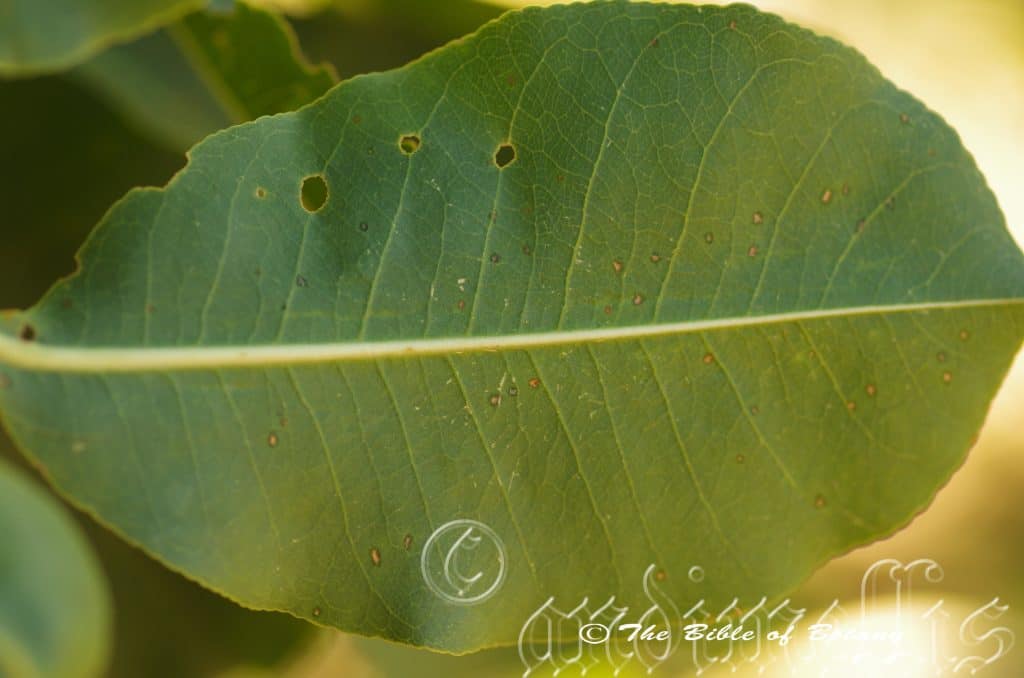
Townsville Qld.
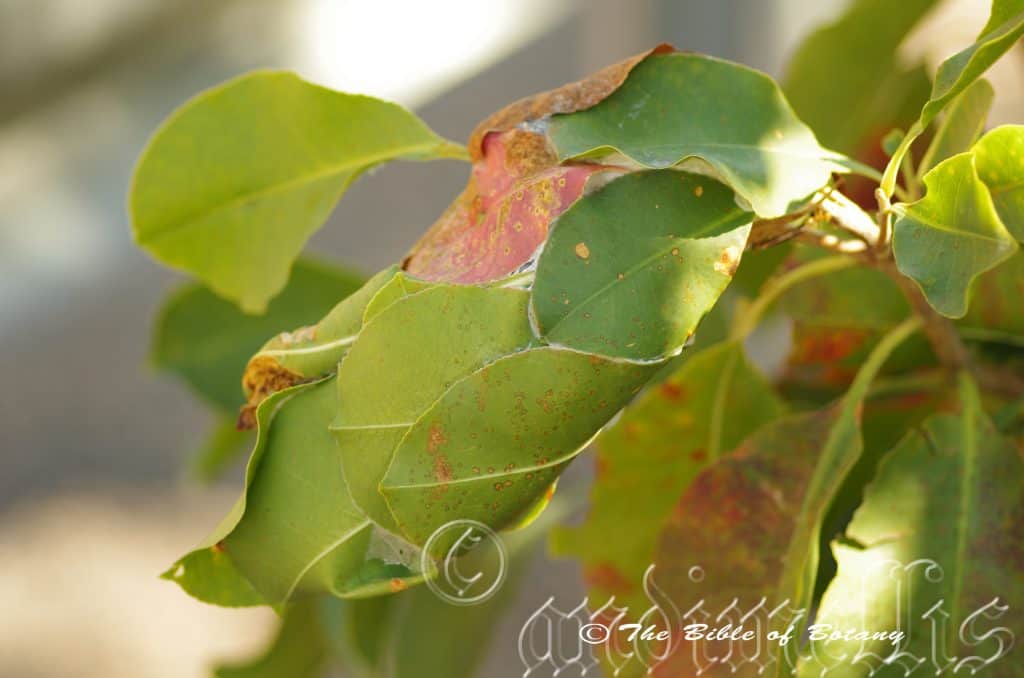
Green Ants nest, Oecophylla smaragdina build outlier nests in the leaves Townsville Qld.
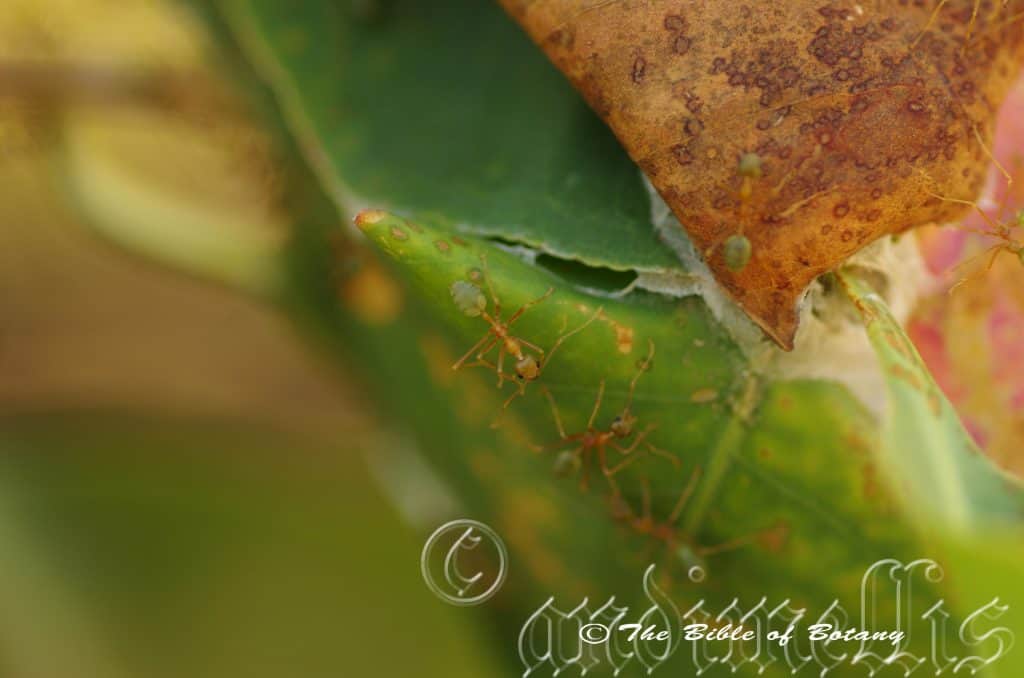
Green Ants Oecophylla smaragdina Townsville Qld.
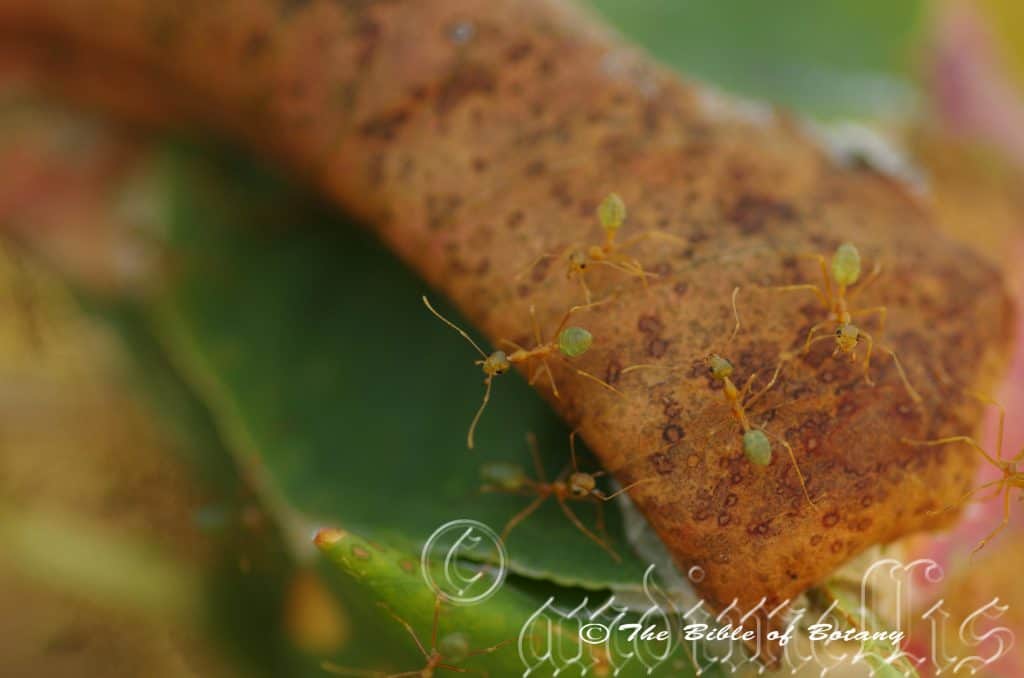
Green Ants Oecophylla smaragdina Townsville Qld.
Planchonia careya
Classification:
Unranked: Eudicots
Unranked: Asterids
Order: Ericales
Family: Lecythidaceae
Genus: Is named in Honour of L. Planchon; 1858-1915, who was a French pharmacist and botanical author.
Specie: Is named in honour of William Carey; 1761 –1834, who was an English Christian missionary, translator, social reformer and cultural anthropologist in India.
Sub specie:
Common Name: Cocky Apple, Cockatoo Apple or Billy Goat Plum.
Distribution:
Planchonia careya is found south from Fitzroy Crossing between Broome and Derby in north west Western Australia around the coast through the Northern Territory to the North Burnett River in north eastern Queensland.
https://avh.ala.org.au/occurrences/search?taxa=Planchonia+careya#tab_mapView
Habitat Aspect Climate:
Planchonia careya prefers dappled shade to full sun. It grows in openings warm well developed rainforests or sheltered moist warm well developed rainforests. The altitude ranges from 5 meters to 600 meters ASL.
The temperatures range from 3 degrees in July to 45 degrees in January.
The rainfall ranges from lows of 280mm to 3200mm average per annum.
Soil Requirements:
Planchonia careya prefers better quality sandy soils and sandy loams. The soils are derived from decomposed granite or sandstone or accumulated sands. The soils pH ranges from 5pH to 6pH. It does not tolerate water logged soils. Non saline soils to moderately saline soils are tolerated.
Height & Spread:
Wild Plants: 4m to 15m by 4m to 8m.
Characteristics:
Planchonia careya grows as a narrow densely foliaged small tree. The trunk is tall, straight, grey-brown to black, thick, corky with longitudinal fissures. The stems are thick, deep brownish-tan with fine fissures and some flakyness. The stems are pale yellowish-green and glabrous.
The trees are deciduous for a short period at the end of the dry season. The leaves turn rusty-orange before falling. The alternate, obovate to broadly ovate leaves measure 50mm to 120mm in length by 28mm to 75mm in width. The smallest leaves are spathulate. The terete petiole measures 6mm to 32mm in length. The bases are rounded yet are shortly attenuate, while the apexes are emarginate to bluntly acuminate. The chartaceous, flat, concolourous laminas are semi glossy to dull, grey-green and glabrous, while the lower lamina is dull. The leaf margins are finely crenulate. The yellowish-green mid vein is prominent on both lamina but more so on the lower lamina, while the 9 to 12 pairs of lateral veins are prominent on both laminas, set at 70+ degrees and form loops well away from the margins.
Inflorescences of Planchonia careya are born on racemes with a few large flowers. The terete pedicels are covered in white pubescent hairs and measure 5mm to 20mm in length. The green calyx tube measures 7mm to 15mm in length, while the 4 deep green obtuse lobes measure 6mm to 11mm in length by 4mm to 8mm in width. The 4 smaller lobes measure 4mm to 6mm by 3mm to 4.5mm in width. The white with pink base petals are greenish externally and measure 15mm to 32mm in length by 6mm to 14mm in width.
The staminal tube measures 4mm to 11mm in length, while the 90 170 stamens per flower measure 25mm to 55 mm long. The creamy style measures 35mm to 70mm in length. Planchonia careya’s flowers appear from January to June or July to October.
Planchonia careya’s flowers appear from January to June or July to October with flowering taking place in the evenings.
Planchonia careya’s fruits are ovoid to ellipsoid, smooth berries. The berries measure 50mm to 90mm in length by 18mm to 40mm in diameter. The calyxes are persistent on the apex of the fruits. The flat, brown seeds are embedded in a fibrous mesocarp. The seeds measure 4.5mm to 5mm in length by 4mm in diameter.
Wildlife:
Planchonia careya do not appear to have any predators though the flowers are visited by hundreds of small native nectar eating flies, native bees and beetles. The fruits are eaten by flying foxes, native rats and mice throughout their range.
The ripe fruits have a taste reminiscent of a quince. The fruit is highly susceptible to Queensland fruit fly, Bactrocera tryoni with fallen, semi decaying fruit being very attractive to the vinegar fly, Drosophila melanogaster. It definately have bright future. Unfortunately even in Western Australia there is the Mediterranean fruit fly, Ceratitis capitata to contend with.
Commercial opportunities awaits venturing entrepreneurs as the fruit is of good size and quality and has a reasonable shelf life. Trees can produce good quantities of fruit naturally in good seasons so with good maintenance practices this can be duplicated in the orchard.
Green Tree Ants, Oecophylla smaragdina are sometimes called Weaver Ants and build nests among the foliage of certain trees with large er type leaves. The trees worker ants pull the leaves close to each other and unite the leaves with a sticky silk produced by the larvae. A colony may consist of dozens of nests spread over many trees though a single queen rules the colony.
Green Tree Ants occur across northern Australia from the Kimberly region in Western Australia to about Gladstone in central coastal Queensland. Oecophylla smaragdina’s workers are aggressive and defend their nests by swarming onto the attacker. They cannot sting but bite with their jaws and eject an acidic fluid from the tip of the abdomen onto the wound which has a mild stinging sensation. Despite this, the ants abdomens are full of nectar and if picked up quickly and bitten between the teeth two sensations are had. One is the sweet nectar and the second of the acid. Fortunately the sweetness overpowers the acidic taste very quickly. When picking the ants up grab the front section and squeeze tight so that they cannot bite you. I have had a full meal on these ants with few bites. It is worth the few bites one may receive.
Cultivation:
Planchonia careya is a magnificent medium tree that should be more widely grown in tropical, subtropical and monsoonal gardens. It is ideal at the edge of a rain forest or as the pioneer trees for a rainforest garden. They also make great park trees offering quick growth, and good shade. In cultivation it grows from 10 meters to 12 meters in height by 8 meters to 10 meters in diameter when grown in the open or taller and narrower if grown closer together as a rainforest tree.
It can be pruned to maintain a shrub of around 3 meters to 4 meters in height by 3 meters to 4meters in diameter.
It grows exceptionally well on lighter soils where deep leaf litter keeps the soil cool and moisture at an even level. If these requirements are met they can cope with temperatures as low as minus 4 degrees and up to 42 degrees. It is moderately drought resistant.
Add to the above, if it is given an adequate supply of water and a little native fertilizer on a regular basis the plants will respond with good flowering and possibly good fruit set over a long period.
It often reaches its full potential in just 12 to 15 years and flower from the eighth to tenth year from seed.
Planchonia careya can be used in bonsai work where it is very responsive. Trees growing on sandstone ridges in Western Australia have taken on some very weird shapes.
Propagation:
Seeds:
The seeds of Planchonia careya can be removed easily from the fruits that have fallen to the ground.
Sow freshly treated seeds directly into a seed raising mix, keeping them moist not wet. When the seedlings are 20mm to 25mm tall, prick them out and plant them into 50mm native tubes using a good organic mix.
As the seedlings roots reach the bottom of the tubes plant them out into their permanent position. Do not delay.
Fertilize using seaweed, fish emulsion or organic chicken pellets soaked in water on an alternate basis. Fertilize every two months until the plants are established then twice annually in early September or March to maintain better health, vitality and flowering.
Further Comments from Readers:
“Hi reader, it seems you use The Bible of Botany a lot. That’s great as we have great pleasure in bringing it to you! It’s a little awkward for us to ask, but our first aim is to purchase land approximately 1,600 hectares to link several parcels of N.P. into one at The Pinnacles NSW Australia, but we need your help. We’re not salespeople. We’re amateur botanists who have dedicated over 30 years to saving the environment in a practical way. We depend on donations to reach our goal. If you donate just $5, the price of your coffee this Sunday, We can help to keep the planet alive in a real way and continue to bring you regular updates and features on Australian plants all in one Botanical Bible. Any support is greatly appreciated. Thank you.”
In the spirit of reconciliation we acknowledge the Bundjalung, Gumbaynggirr and Yaegl and all aboriginal nations throughout Australia and their connections to land, sea and community. We pay our respect to their Elders past, present and future for the pleasures we have gained.
Plantago debilis
Classification:
Unranked: Eudicots
Unranked: Asterids
Order: Lamiales
Family: Plantaginaceae
Tribe: Plantaginoideae
Genus: From Plang? or Pl?ss?, which are Ancient Greek for any vegetable production that serves to propagate the species; a sprout, shoot, twig, sprig, sucker, graft, scion, slip, cutting. It originally referred to any plant that could be reproduced from cuttings and later to plants of the banana genus, Plant?gineum, as to the ease of reproduction of this genus from suckers. It refers to leaves, which have a distinctive banana leaf shape.
Specie: From Dedile, which is Latin for weak, feeble or debilitated. It refers to the straggly weak nature of the growth habit.
Sub specie:
Common Name: Native Psyllium.
Distribution:
Plantago debilis is found in the south western third of Western Australia with an isolated population on the Ord River.
In the center it is found in a broad triangle from north east of Alice Springs south to the South Australian border and to the south west corner of the state.
In South Australia it is mainly found along the Flinders Rangers block in the north, south to Adelaide.
In the east it is found from Cairns in far north eastern Queensland south to Mount Gambier in south eastern South Australia and down the east coast of Tasmania including the eastern Bass Straight Islands.
https://avh.ala.org.au/occurrences/search?taxa=Plantago+debilis#tab_mapView
Habitat Aspect Climate:
Plantago debilis prefers medium-light shade to dappled shade. It grows in moist Eucalyptus forests, moist Eucalyptus woodlands and along the coast and in moist Acacia woodlands in riparian zones further inland. The altitude ranges from 5 meters to 1800 meters ASL.
The temperatures range from minus 3 degrees in July to 40 degrees in January.
The rainfall ranges from lows of 300mm to 3000mm average per annum.
Soil Requirements:
Plantago debilis prefers better quality soils that are sandy loams to light fatty clays with a high proportion of leaf litter. The soils are usually derived from decomposed black basalts or metamorphic rocks but can be found on better quality alluvial deposits. The soils pH ranges from 5pH to 7pH. It does not tolerate water logged soils. Non saline soils to moderately saline soils are tolerated.
Height & Spread:
Wild Plants: 0.1mm to 0.3m by 0.1m to 0.3m
Characteristics:
Plantago debilis usually grows as a perennial herb or at times an annual herb with a large tap root.
The basal leaves are clustered above the tap root and are narrow-oblanceolate to obovate. The leaves of Plantago debilis measure 30mm to 150mm in length by 10mm to 40mm in width. The petiole measures 5mm to 12mm in length. The bases are tapering and are attenuate for about a third of the petiole while the apexes are obtuse to broad acute. The discolourous laminas are mid grey-green and are usually moderately covered in fawn or at times white pilose hairs while the lower laminas are slightly paler to much paler. The leaf margins are sparsely and regularly toothed and densely covered in fawn or at times white pilose hairs. The 3 to 5 parallel veins are strongly prominent on the lower laminas and clearly visible on the upper laminas with the central vein being the most prominent.
Inflorescences of Plantago debilis are born on scapes from the center of the leaf rosette. The 100mm to 200mm scapes are pale grey-green and moderately to densely covered in fawn or at times are covered in white pilose hairs. The scape grows to 300mm following anthesis. The spike carrying the flowers measures 40mm to 100mm in length. The ovate to elliptical bracts measure 1mm to 1.5mm in length. The elliptic sepals measure 1.5mm to 2.6mm in length. The bracts and sepals are glabrous to sparsely or at times moderately covered in fawn or at times white pilose hairs. The narrow keel is covered in fawn or at times is covered in white pilose hairs. The elliptic to orbicular corolla lobes measure 0.8mm to 1mm in length. The flowers appear throughout the year especially in the warmer months and following rain.
Plantago debilis’s fruits are ovoidal sub globoidal capsules. The capsules are glabrous and measure 1.7mm to 3mm in length. The grey-green capsules turn mid brown when ripe. The 3 to 5 seeds are brown.
Wildlife:
Plantago debilis does not appear to have any predators though the leaves are often eaten by an unknown butterfly or moth larva.
The seeds and husks expand become mucilage when wet, especially those of the exotic plant Plantago psyllium, which is used extensively in common over the counter laxatives, fibre supplements and general cleaning of the lower intestinal tract and bowel. The seeds are well known to be useful for constipation, irritable bowel, dietary fibre supplementation, and diverticular disease. Plantago species in general all have similar results and benefits though vary a little in strength and have been consumed as human food since prehistory.
Cultivation:
Plantago debilis is a small herb that would probably react favourably to cultivation.
Plantago debilis can be used as supplements provided plenty of water is drunk at the same time. Quantities of 6 to 8 grams of husks taken twice daily have been found to be successful in managing elevated cholesterol levels and regulate constipation.
A dose of 8 grams twice a day of the seeds will act as a natural bowel cleaner. The seeds need to be placed in a glass of tepid water and allowed to soak for 10 minutes before drinking. As the seeds pass through the bowel they will swell and act like scrubbers cleaning the bowel naturally. (Information adapted from Plantago psyllium.)
Propagation:
Seeds:
Seeds of Plantago debilis can be removed easily from the capsules that have turned brown.
Sow fresh seeds directly into a seed raising mix, keeping them moist not wet. When the seedlings are 10mm to 20mm tall, prick them directly into the ground in a semi shaded position with good filtered light. Plant the seedlings 300mm apart and in rows of 300mm apart.
Fertilize using seaweed, fish emulsion or organic chicken pellets soaked in water on an alternate basis. Fertilize every week until the plants are established for 3 or 4 weeks.
Further Comments from Readers:
“Hi reader, it seems you use The Bible of Botany a lot. That’s great as we have great pleasure in bringing it to you! It’s a little awkward for us to ask, but our first aim is to purchase land approximately 1,600 hectares to link several parcels of N.P. into one at The Pinnacles NSW Australia, but we need your help. We’re not salespeople. We’re amateur botanists who have dedicated over 30 years to saving the environment in a practical way. We depend on donations to reach our goal. If you donate just $5, the price of your coffee this Sunday, We can help to keep the planet alive in a real way and continue to bring you regular updates and features on Australian plants all in one Botanical Bible. Any support is greatly appreciated. Thank you.”
In the spirit of reconciliation we acknowledge the Bundjalung, Gumbaynggirr and Yaegl and all aboriginal nations throughout Australia and their connections to land, sea and community. We pay our respect to their Elders past, present and future for the pleasures we have gained.
Plantago gaudichaudii
Classification:
Unranked: Eudicots
Unranked: Asterids
Order: Lamiales
Family: Plantaginaceae
Subfamily: Plantaginoideae
Genus: From Plang? or Pl?ss?, which are Ancient Greek for any vegetable production that serves to propagate the species; a sprout, shoot, twig, sprig, sucker, graft, scion, slip, cutting. It originally referred to any plant that could be reproduced from cuttings and later to plants of the banana genus, Plant?gineum, as to the ease of reproduction of this genus from suckers. It refers to leaves, which have a distinctive banana leaf shape.
Specie: Is named in honour of Charles Gaudichaud Beaupre; 1789-1645, who was a French Botanist who named several Australian genera.
Sub specie:
Common Name: Narrow Leaf Plantain or Native Psyllium.
Distribution:
Plantago gaudichaudii is found south from Applethorpe in far south eastern Queensland on the western slopes, on the Great Dividing Range to the coast in New South Wales and Victoria to Wilpina, southern Yorke Peninsular and southern Eyre Peninsular in southern South Australia.
It is also found in several isolated populations in southern Queensland including Boulia, the Lower Channel Country in the south west, Mount Moffatt National Park and Taroom which indicates it may be more widespread than the maps indicate.
In Tasmania it is found in a line from Clarendon in the north to the Southern ranges in the Huon Shire.
https://avh.ala.org.au/occurrences/search?taxa=Plantago+gaudichaudii#tab_mapView
Habitat Aspect Climate:
Plantago gaudichaudii prefers dappled shade to full sun. It grows in Eucalyptus forests, Eucalyptus woodlands Acacia woodlands and grasslands. The altitude ranges from 5 meters to 1600 meters ASL.
The temperatures range from minus 3 degrees in July to 39 degrees in January.
The rainfall ranges from lows of 200mm to 1800mm average per annum.
Soil Requirements:
Plantago gaudichaudii prefers soils that are medium clays to heavy clays. The soils are usually derived from decomposed black basalts, brown basalts, metamorphic rocks, granites, sandstones or alluvial deposits. The soils pH ranges from 5pH to 7pH. It tolerates seasonal water logged soils. Non saline soils to moderately saline soils are tolerated.
Height & Spread:
Wild Plants: 0.05mm to 0.12m by 0.2m to 0.3m
Characteristics:
Plantago gaudichaudii usually grows as a perennial herb with a large, fleshy tap root.
The basal leaves are clustered above the tap root and are broad linear to narrow oblanceolate. The leaves of Plantago gaudichaudii measure 70mm to 200mm in length by 2mm to 24mm in width. The petiole measures 5mm to 12mm in length. The bases gently taper while the apexes are broad acute. The discolourous laminas are mid grass-green and glabrous or covered in red-brown or golden-brown sericeous or hirtellous hairs near the base especially in the leaf axil. The leaf margins are entire or sparsely and irregularly, obtusely toothed. The 3 parallel veins are strongly prominent on the lower laminas and clearly visible on the upper laminas with the central vein being the most prominent.
Inflorescences of Plantago gaudichaudii are born on scapes from the center of the leaf rosette. The scapes are usually as long as the leaves and measure 100mm to 200mm, are mid grass-green and sparsely to moderately covered in red-brown or golden-brown sericeous and or hirtellous hairs. The scape grows to 230mm following anthesis. The spike carrying the flowers measures 40mm to 120mm in length. The ovate bracts measure 2mm to 4.5mm in length. The elliptic sepals measure 2.8mm to 3.6mm in length. The bracts and sepals are sparsely to moderately covered in red-brown or golden-brown sericeous or hirtellous hairs. The broad keel which is almost 30mm of the width of the sepal is covered in reddish-brown or golden-brown sericeous or hirtellous hairs. The orbicular corolla lobes measure 1.4mm to 2.3mm in length. The flowers appear from September to April.
Plantago gaudichaudii’s fruits are ellipsoidal capsules. The capsules are glabrous and measure 3mm to 4mm in length. The mid grass-green capsules turn mid brown when ripe. The 3 to 5 seeds are brown.
Wildlife:
Plantago gaudichaudii’s do not appear to have any predators though the leaves are often eaten by an unknown butterfly or moth larva.
Cultivation:
Plantago gaudichaudii is a small herb that would probably react favourably to cultivation in poorer soils and skeletal soils. The only available information on Plantago sp. in cultivation is from the exotic species Plantago ovata and Plantago asiatica. In south western China and northern India Plantago ovata is grown on marginal lands that are often affected by salt (5000 parts per million salt solution) or high pH levels (9.2pH). The production levels per hectare apparently drop off above 9.4pH and salt levels above 5500parts per million in solution. The grain yields range from 1470 to 1580?kilograms per?hectare which includes the husks which weigh about 50mm to 52mm of the total weight. The soil needs to be maintained in a moist status throughout the life of the plants growth. Production yields may vary somewhat from the exotic species. The two species may cross pollinate as has occurred between Plantago asiatica and Plantago ovata in Asia. It is not known whether these natural and induced hybrids are mules or fertile.
Plantago ovata has a narrow genetic base with a low chromosome number, small chromosome size, presence of high heterochromatin in the chromosomes, low chiasmata frequency and low recombination index. http://www.researchgate.net/publication/229664806_Cultivation_of_medicinal_isabgol_(Plantago_ovata)_in_alkali_soils_in_semiarid_regions_of_Northern_India
This would limit the availability of variation for improved genetic strains which would result in breeding methods being most probably limited to hybridization or induced mutations to create more vigorous plants. Except selections, which have led to isolation of a few varieties, the results of other methods have not been encouraging. Further research needs to be undertaken to evaluate the prospects of genetic manipulation with native species and to determine the full health benefits compared to the two Asian species.
A study on optimal fertilizer techniques for Standardized Cultivation of Plantago asiatica in Jiangxi Province was carried out by Zhang Shou Wen Zhong Wei Guang Li Feng Qin & Cao Lan. The tests were carried out using N, P, K and organic fertilizers like pig manures. The optimal mixed fertilization was as follows: Nitrogen N was applied as urea at 248 to 315 kilograms per hectare. Phosphorous P was applied as calcium superphosphate at 346 to 556 kilograms per hectare. Potassium K was applied as potassium sulphate at 213 to 340 kilograms per hectare. The organic fertilized fields used was digest pig manure at 32 737 to 35 782 kilograms per hectare. The pig manure would most likely be applied at lower rates as the fertility in organic fields increases over the years.
http://www.cnki.com.cn/Article/CJFDTotal-MDPT201211026.htm
The seeds and husks expand to become mucilage when wet, especially those of the exotic plant Plantago psyllium, which is used extensively in common over the counter laxatives, fibre supplements and general cleaning of the lower intestinal tract and bowel. The seeds are well known to be useful for constipation, irritable bowel, dietary fibre supplementation, and diverticular disease. They; in general, have all similar results and benefits though vary a little in strength and have been consumed as human food since prehistory.
Plantago gaudichaudii can be used as supplements provided plenty of water is drunk at the same time. Quantities of 6 to 8 grams of husks taken twice daily have been found to be successful in managing elevated cholesterol levels and regulate constipation.
A dose of 8 grams twice a day of the seeds will act as a natural bowel cleaner. The seeds need to be placed in a glass of tepid water and allowed to soak for 10 minutes before drinking. As the seeds pass through the bowel they will swell and act like scrubbers cleaning the bowel naturally. (Information adapted from Plantago psyllium.)
Propagation:
Seeds:
Seeds of Plantago gaudichaudii can be removed easily from the capsules that have turned brown.
Sow fresh seeds directly into a seed raising mix, keeping them moist not wet. When the seedlings are 15mm to 30mm tall, prick them directly into the ground in a semi shaded position with good filtered light. Plant the seedlings 400mm apart and in rows of 400mm apart.
Fertilize using seaweed, fish emulsion or organic chicken pellets soaked in water on an alternate basis. Fertilize every week until the plants are established for 3 or 4 weeks.
Further Comments from Readers:
“Hi reader, it seems you use The Bible of Botany a lot. That’s great as we have great pleasure in bringing it to you! It’s a little awkward for us to ask, but our first aim is to purchase land approximately 1,600 hectares to link several parcels of N.P. into one at The Pinnacles NSW Australia, but we need your help. We’re not salespeople. We’re amateur botanists who have dedicated over 30 years to saving the environment in a practical way. We depend on donations to reach our goal. If you donate just $5, the price of your coffee this Sunday, We can help to keep the planet alive in a real way and continue to bring you regular updates and features on Australian plants all in one Botanical Bible. Any support is greatly appreciated. Thank you.”
In the spirit of reconciliation we acknowledge the Bundjalung, Gumbaynggirr and Yaegl and all aboriginal nations throughout Australia and their connections to land, sea and community. We pay our respect to their Elders past, present and future for the pleasures we have gained.
Plantago hispida
Classification:
Unranked: Equisetopsida
Unranked: Asterids
Order: Lamiales
Family: Plantaginaceae
Subfamily: Plantaginoideae
Genus: From Plang? or Pl?ss?, which are Ancient Greek for any vegetable production that serves to propagate the species; a sprout, shoot, twig, sprig, sucker, graft, scion, slip, cutting. It originally referred to any plant that could be reproduced from cuttings and later to plants of the banana genus, Plant?gineum, as to the ease of reproduction of this genus from suckers. It refers to leaves, which have a distinctive banana leaf shape.
Specie: From Hispidus, which is Latin for short, bristly, course hairs. It refers to a structure or organ, which has short, bristly course hairs.
Sub specie:
Common Name:
Distribution:
Plantago hispida is found south and west of a line from Sharks Bay to Mount Mathew in the north to Woody Island off the coast Esperance Plains and along the coastal plains to Cocklebiddy in southern Western Australia.
In South Australia it is found in a triangle between Fowlers Bay, Grindell Hut on the northern Flinders Rangers block in the north and Coorong National Park on the southern coast.
In the east it is found from east and south of a line from Warwick in far south east Queensland south to Barmah State Forest then west to Mildura in Victoria and south to Cape Buffon in south eastern South Australia.
It is also found on the off shore Islands including the eastern Islands of Bass Straight and the eastern half of Tasmania.
https://avh.ala.org.au/occurrences/search?taxa=Plantago+hispida#tab_mapView
Habitat Aspect Climate:
Plantago hispida prefers dappled shade to full sun. It grows in rock crevices, on exposed rocky outcrops often close to the water’s edge. The altitude ranges from 2 meters to 1450 meters ASL.
The temperatures range from minus 4 degrees in July to 40 degrees in January.
The rainfall ranges from lows of 280mm to 1500mm average per annum.
Soil Requirements:
Plantago hispida prefers skeletal soils or sands on exposed rocks. The soils are derived from most decomposed parent rocks. The soils pH ranges from 4.5pH to 7pH. It does not tolerate water logged soils. Non saline soils to very saline soils are tolerated.
Height & Spread:
Wild Plants: 0.1mm to 0.3m by 0.15m to 0.2m
Characteristics:
Plantago hispida usually grows as a perennial herb or at times an annual herb with a large, tough tap root.
The basal leaves are clustered above the tap root and are oblanceolate to narrow oblong. The leaves of Plantago hispida measure 40mm to 90mm in length by 4mm to 12mm in width. The petiole measures 10mm to 40mm in length. The bases are tapering attenuate while the apexes are narrow acute. The discolourous laminas are mid grass-green and are usually sparsely to moderately covered in fawn or white pilose hairs or at times are glabrous while the lower laminas are paler. The leaf margins are sparsely and regularly toothed with broad triangular teeth. The single mid vein or 3 parallel veins are strongly prominent on the lower laminas and clearly defined on the upper laminas with the central vein being the most prominent.
Inflorescences of Plantago hispida are born on scapes from the center of the leaf rosette. The 40mm to 300mm scapes are mid grass-green and moderately to densely covered in fawn or white pilose and or hispid hairs. The spike carrying the flowers measures 10mm to 60mm usually 40mm to 60mm in length. The ovate bracts measure 1mm to 2mm in length. The oblong to oblong-elliptic sepals measure 2.2mm to 3mm in length. The bracts and sepals are glabrous to sparsely or at times moderately covered in fawn or white pilose or soft hispid hairs. The slightly raised broad keel is covered in fawn or white pilose and or soft hispid hairs for most of its width. The orbicular corolla lobes measure 1.3mm to 1.5mm in length. The flowers appear from October to March.
Plantago hispida’s fruits are ovoidal capsules. The capsules are glabrous and measure 2.8mm to 3.5mm in length. The grass-green capsules turn mid brown when ripe. The 3 to 5 seeds are brown.
Wildlife:
Plantago hispida’s do not appear to have any predators though the leaves are often eaten by an unknown butterfly or moth larva.
Cultivation:
Plantago hispida is a small herb that would probably react favourably to cultivation in poorer soils and skeletal soils. The only available information on Plantago sp. in cultivation is from the exotic species Plantago ovata and Plantago asiatica. In south western China and northern India Plantago ovata is grown on marginal lands that are often affected by salt (5000 parts per million salt solution) or high pH levels (9.2pH). The production levels per hectare apparently drop off above 9.4pH and salt levels above 5500parts per million in solution. The grain yields range from 1470 to 1580?kilograms per?hectare which includes the husks which weigh about 50mm to 52mm of the total weight. The soil needs to be maintained in a moist status throughout the life of the plants growth. Production yields may vary somewhat from the exotic species. The two species may cross pollinate as has occurred between Plantago asiatica and Plantago ovata in Asia. It is not known whether these natural and induced hybrids are mules or fertile.
Plantago ovata has a narrow genetic base with a low chromosome number, small chromosome size, presence of high heterochromatin in the chromosomes, low chiasmata frequency and low recombination index. http://www.researchgate.net/publication/229664806_Cultivation_of_medicinal_isabgol_(Plantago_ovata)_in_alkali_soils_in_semiarid_regions_of_Northern_India
This would limit the availability of variation for improved genetic strains which would result in breeding methods being most probably limited to hybridization or induced mutations to create more vigorous plants. Except selections, which have led to isolation of a few varieties, the results of other methods have not been encouraging. Further research needs to be undertaken to evaluate the prospects of genetic manipulation with native species and to determine the full health benefits compared to the two Asian species.
A study on optimal fertilizer techniques for Standardized Cultivation of Plantago asiatica in Jiangxi Province was carried out by Zhang Shou Wen Zhong Wei Guang Li Feng Qin & Cao Lan. The tests were carried out using N, P, K and organic fertilizers like pig manures. The optimal mixed fertilization was as follows: Nitrogen N was applied as urea at 248 to 315 kilograms per hectare. Phosphorous P was applied as calcium superphosphate at 346 to 556 kilograms per hectare. Potassium K was applied as potassium sulphate at 213 to 340 kilograms per hectare. The organic fertilized fields used was digest pig manure at 32 737 to 35 782 kilograms per hectare.
http://www.cnki.com.cn/Article/CJFDTotal-MDPT201211026.htm
The seeds and husks expand become mucilage when wet, especially those of the exotic plant Plantago psyllium, which is used extensively in common over the counter laxatives, fibre supplements and general cleaning of the lower intestinal tract and bowel. The seeds are well known to be useful for constipation, irritable bowel, dietary fibre supplementation, and diverticular disease. Plantago species in general all have similar results and benefits though vary a little in strength and have been consumed as human food since prehistory.
Plantago hispida can be used as supplements provided plenty of water is drunk at the same time. Quantities of 6 to 8 grams of husks taken twice daily have been found to be successful in managing elevated cholesterol levels and regulate constipation.
A dose of 8 grams twice a day of the seeds will act as a natural bowel cleaner. The seeds need to be placed in a glass of tepid water and allowed to soak for 10 minutes before drinking. As the seeds pass through the bowel they will swell and act like scrubbers cleaning the bowel naturally. (Information adapted from Plantago psyllium.)
Propagation:
Seeds:
The seeds of Plantago hispida can be removed easily from the capsules that have turned brown.
Sow fresh seeds directly into a seed raising mix, keeping them moist not wet. When the seedlings are 10mm to 20mm tall, prick them directly into the ground in a semi shaded position with good filtered light. Plant the seedlings 300mm apart and in rows of 300mm apart.
Fertilize using seaweed, fish emulsion or organic chicken pellets soaked in water on an alternate basis. Fertilize every week until the plants are established for 3 or 4 weeks.
Further Comments from Readers:
“Hi reader, it seems you use The Bible of Botany a lot. That’s great as we have great pleasure in bringing it to you! It’s a little awkward for us to ask, but our first aim is to purchase land approximately 1,600 hectares to link several parcels of N.P. into one at The Pinnacles NSW Australia, but we need your help. We’re not salespeople. We’re amateur botanists who have dedicated over 30 years to saving the environment in a practical way. We depend on donations to reach our goal. If you donate just $5, the price of your coffee this Sunday, We can help to keep the planet alive in a real way and continue to bring you regular updates and features on Australian plants all in one Botanical Bible. Any support is greatly appreciated. Thank you.”
In the spirit of reconciliation we acknowledge the Bundjalung, Gumbaynggirr and Yaegl and all aboriginal nations throughout Australia and their connections to land, sea and community. We pay our respect to their Elders past, present and future for the pleasures we have gained.

Mount Cootha Botanic Gardens Qld.

Clarence Valley NSW
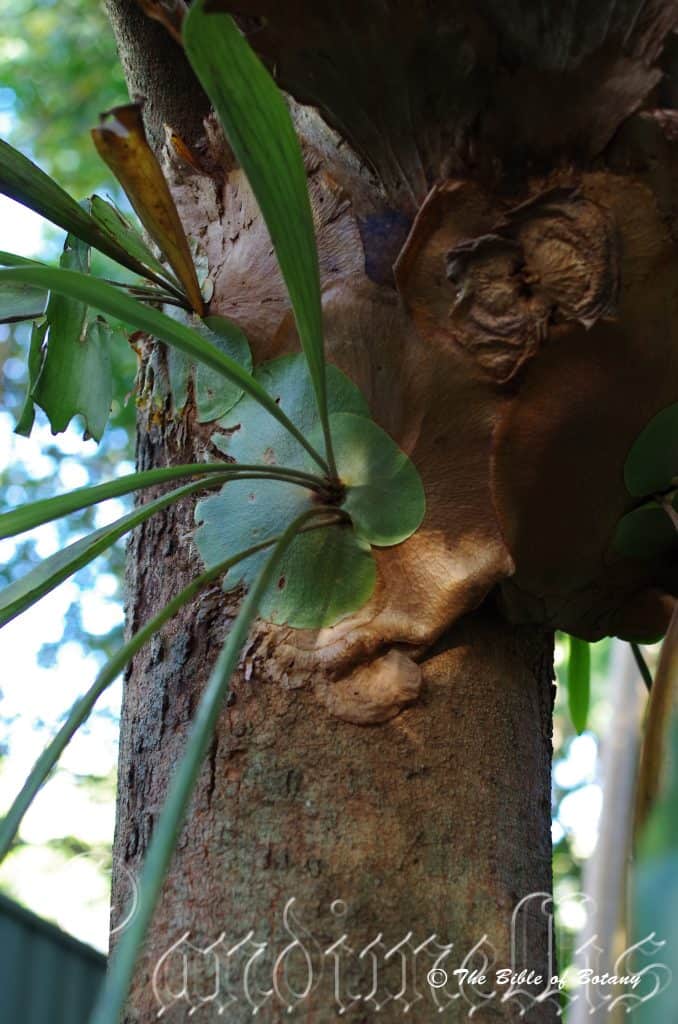
Grange Qld.
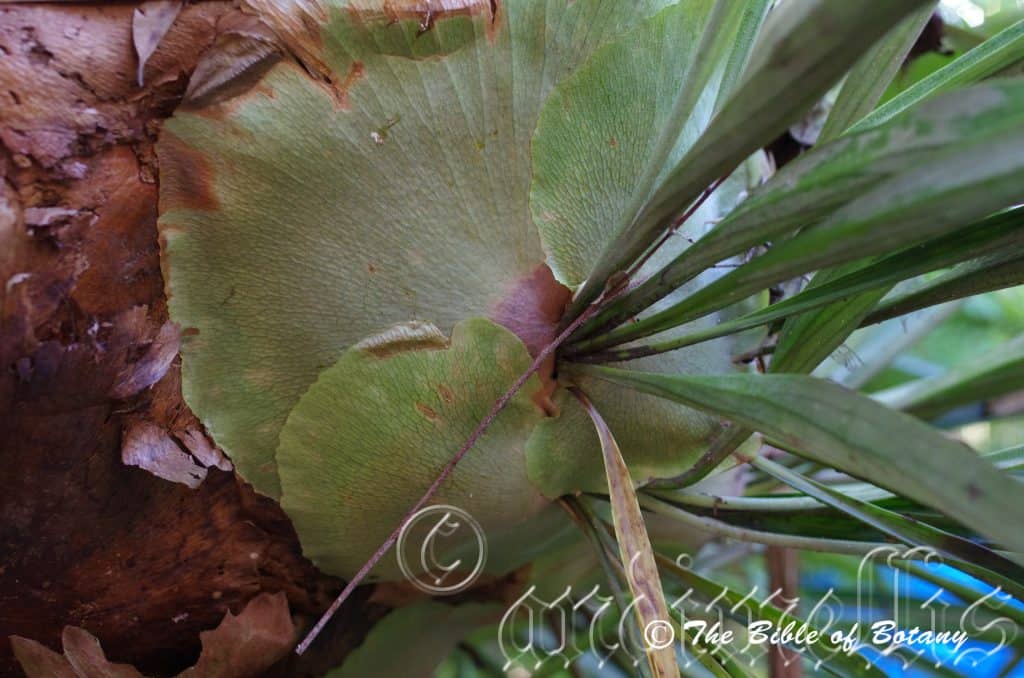
Grange Qld.

Grange Qld.
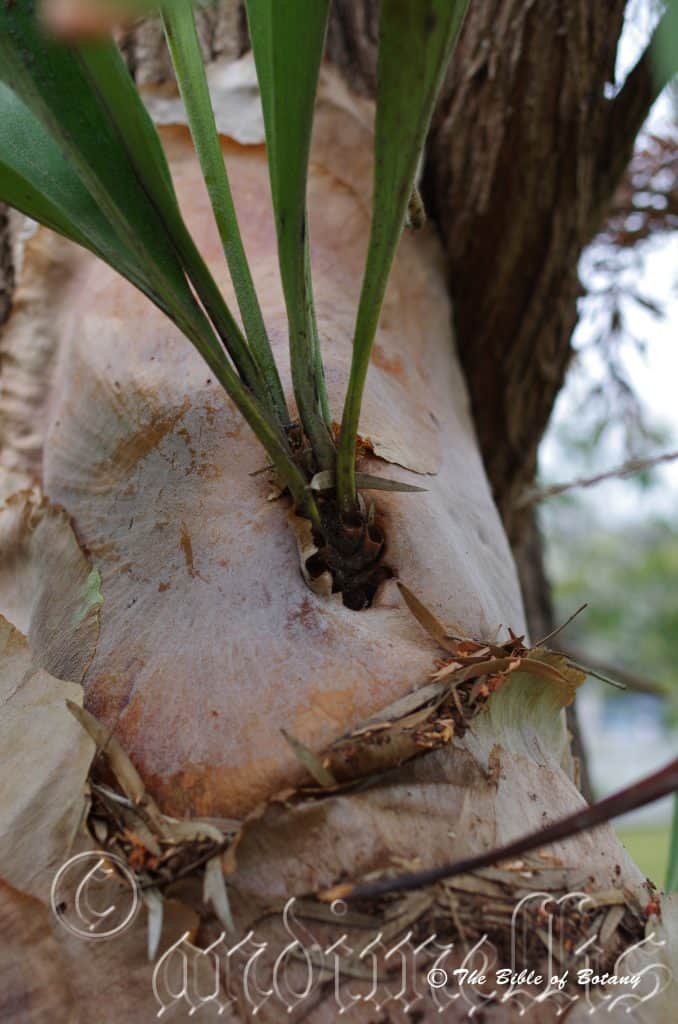
Cooparoo Qld.
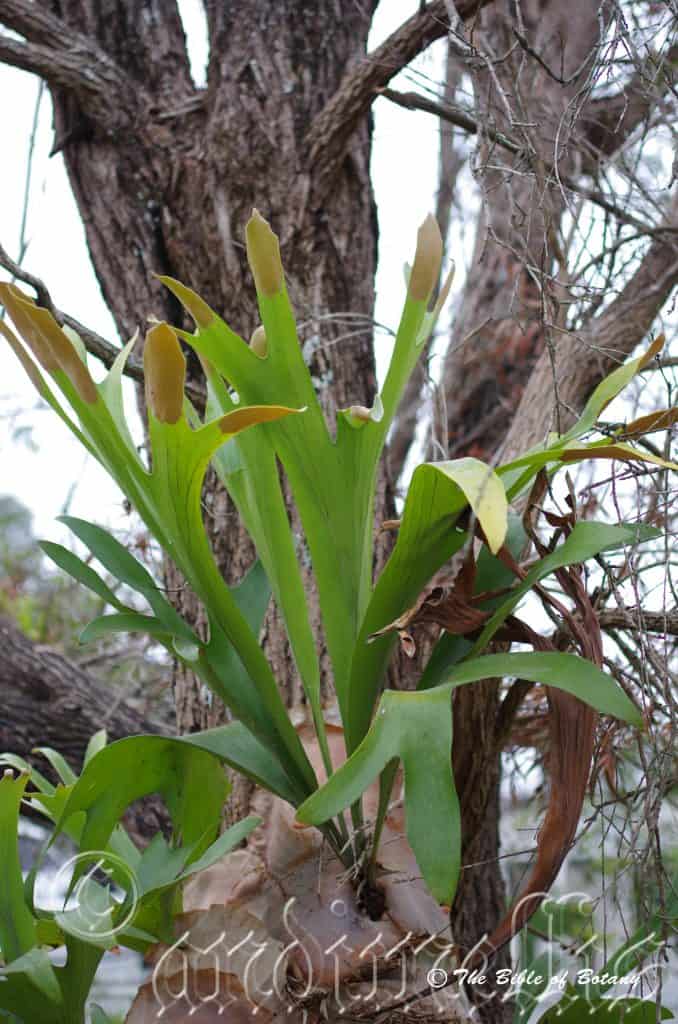
Cooparoo Qld.
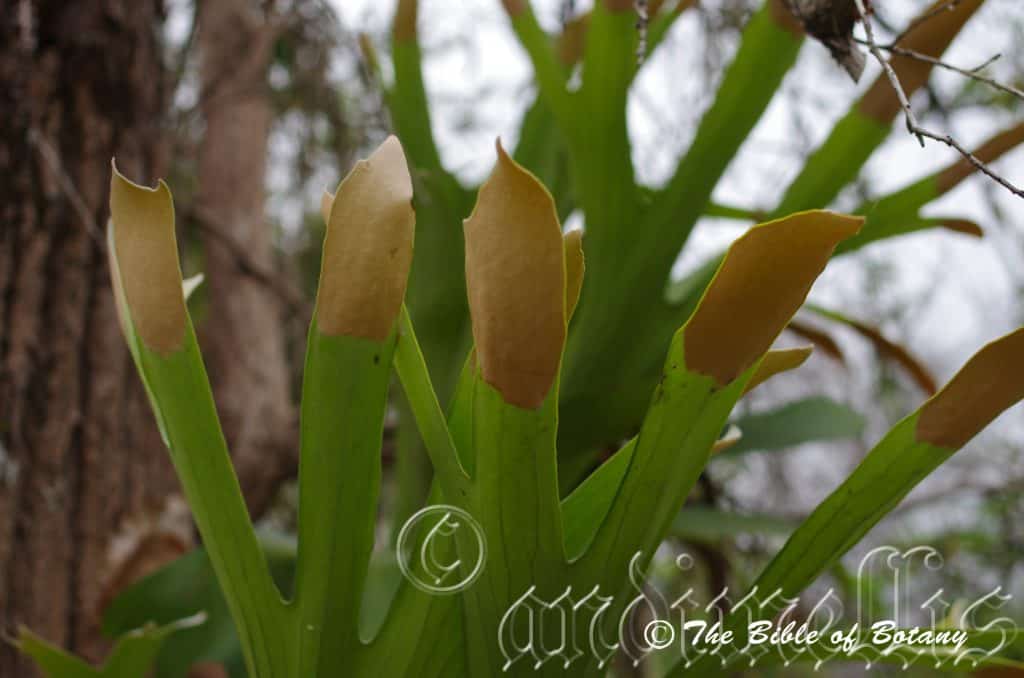
Cooparoo Qld.

Cooparoo Qld.
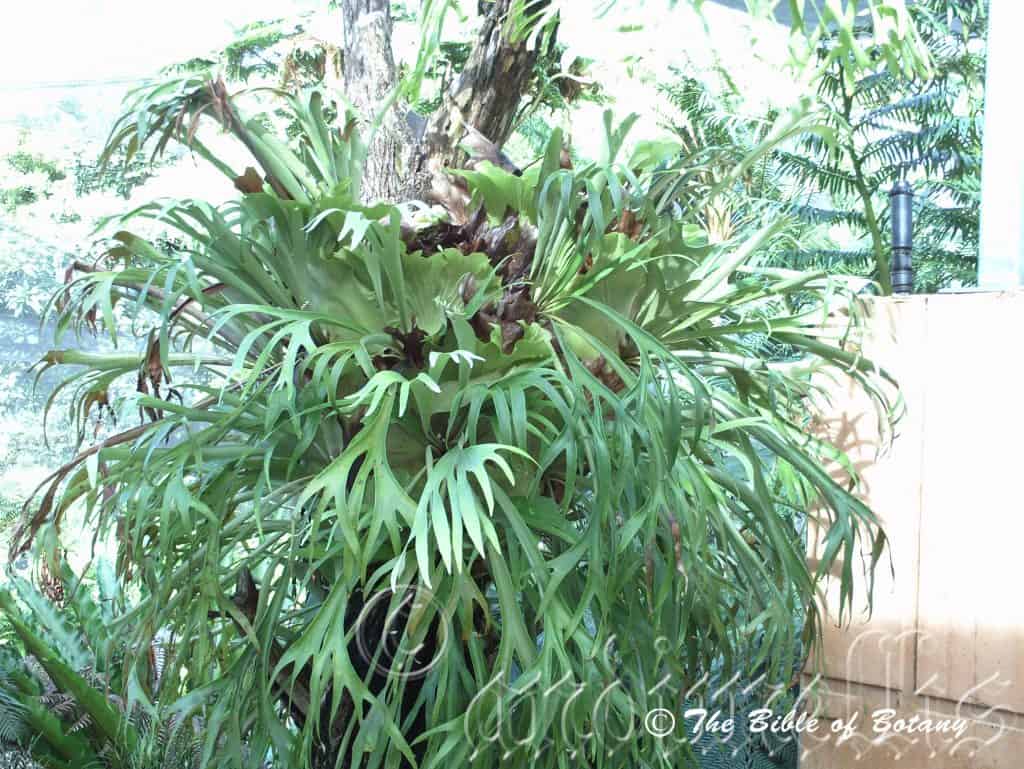
Mount Cootha Botanic Gardens Qld.

Photo shows plants thriving growing on a rock wall. Greedy poachers have made such scenes a rare commodity now days in the wild Author’s Garden The Pinnacles NSW

Photo shows plants thriving growing on a rock wall. Greedy poachers have made such scenes a rare commodity now days in the wild Author’s Garden The Pinnacles NSW
Platycerium bifurcatum
Classification:
Unranked: Pteridophyta
Class: Pteridopsida
Order: Polypodiales
Family: Polypodiaceae
Genus: From Platy, which is Ancient Greek for flat and broad and K?ríon, which is Ancient Greek or later C?rium which is Latin for a bad swelling or ulcer. It usually refers to a group of ferns, which appear to have a large basal swelling that grows as a bulky, peaty sponge.
Specie: From Bi/Bis, which is Greek/Latin for two and Furcata, which is Latin for a fork. It refers to branches, leaves or fronds, which divide several times into two equal branches throughout.
Sub species:
Common Name: Elk Horn or Stag Horn.
Distribution:
Platycerium bifurcatum is a widespread species which is found south from Cooktown in far north eastern Queensland to Mimosa Rocks in southern New South Wales.
https://avh.ala.org.au/occurrences/search?taxa=Platycerium+bifurcatum#tab_mapView
Habitat Aspect Climate:
Platycerium bifurcatum prefers light dappled shade to dense shade. It grows in well-developed warm sub-tropical rainforests, cool tropical rainforests, and littoral rainforests including sheltered mangrove forests. The mangrove populations are now all but extinct due to the ease of poaching in the past. The altitude ranges from 2 meters to 700 meters ASL.
The temperatures range from minus 4 degrees in August to 36 degrees in January.
The rainfall ranges from lows of 800mm to an average of 3200mm.
Soil Requirements:
Platycerium bifurcatum prefers to grow on better quality basalt rocks as a lithophyte or in trees as an epiphyte. The favoured trees prefer the soil pH ranging from 5pH to 6pH. It does not tolerate water logged soils. Non saline soils to slightly saline soils are tolerated.
Height & Spread:
Wild Plants: 0.5m to 1m by 0.5m to 1m.
Characteristics:
Platycerium bifurcatum’s rhizome is much branched, short, creeping, slender and fleshy with a diameter of 3mm to 4.5mm. The deep brown glaucous rhizomes are covered in brown to rusty brown appressed scales which curve outwards towards the apex.
Platycerium bifurcatum’s has dimorphic simple and pinnatifid forked fronds.
The simple sterile fronds or nest fronds are orbicular and measure 120mm to 350mm in height by 120mm to 300mm in width. The pale blue green fronds margins are entire, sinuate or shallowly obtusely lobed. The fronds are sparsely to densely covered in soft white pulverulent to canescent hairs. The fronds turn brown and papery brittle with age eventually forming a peaty sponge like compost at the rear of new fronds.
The fertile fronds are deep blue green to sea-blue green and are erect to pendent or erect becoming pendent towards the apexes. The fronds are sparsely to densely covered in soft white pulverulent to canescent hairs. It is dichotomously divided 2 to 5 times. The forked fronds measure 250mm to 900mm in length by 100mm to 600mm in width. The ultimate lobes are narrow and measure 50mm to 150mm in length by 5mm to 35mm in width. The apexes are acute to obtuse or bluntly acuminate.
The sporangia are located on the ends of the ultimate lobes covering 50mm to 100mm of the apexes.
Plantlets form from the lower sections of the mass so that the fern eventually encircles the host trunk or branch of the tree.
Wildlife:
Platycerium bifurcatum’s wild plants often have the fronds damaged or the tips of the rhizomes eaten.
The plants are damaged by the stag horn beetles, Lamprima aurata and Dorcus curvidens.
Cultivation:
Platycerium bifurcatum makes an excellent epiphytes or lithophytes in the garden for areas where there is filtered light to dense shade. It always look green and fresh especially where adequate moisture and humidity prevails. It is very suitable in all small medium and large gardens close to the coast or in the mountains in warm temperate, warm sub-tropical or cool tropical gardens. As garden a subject it will colonize rocks especially those of a more porous nature clinging on tree trunks in a rainforest situation or on shady banks. It is cold tolerant to temperatures as low as minus 1 degree once established.
It is an ideal hanging basket plant provided even moisture is maintained. It also look very natural if placed in a basket with Davallia pyxidata.
Large frog or fish ponds are made the more attractive when surrounded by ferns and with this fern hanging in the background. Their size makes for a balance setting.
Propagation:
Fern Spores:
Most people are put off at the thought of growing ferns from spore. Like all plants that produce their offspring from seed or spore the methods are similar. Remember nature has been doing this for millions of years and has been very successful. I have had excellent results with almost every fern in Australia so give it a go. This is one of the easier ferns to grow from spore and gives much pleasure when you see the results of your efforts.
Step 1.Select spore from the Platycerium bifurcatum’s fronds that are just starting to release its spore. Rinse the fronds under clean running water and dry.
Step 2.Place the dry fronds in a brown paper bag and keep them in a cool dark place like the linen closet for about a week before you are ready to sow the spore.
Step 3.Take a large ice cream container, a small ice cream container and a clean clear plastic bag large enough to cover the large ice cream container.
Step 4.Wash both containers so that It is very clean.
Step 5.Punch some small holes in the small ice cream container.
Step 6.Use a clean fine seed raising mix that has had some clay or crusher added to it about 10mm. Then moisten the mix.
Step 7.Place this mix in the microwave oven for 7 or 8 minutes with a glass of water. Allow them to cool in the oven. You will need the water later so do not tip it out.
Step 8.Take the brown paper bag out of its cupboard. Shake the bag and remove the fronds. You should have a brown powder or small round pepper size spore.
Step 9.Remove the mixture from the oven once it has cooled and place it in the small ice-cream container.
Step 10.Sprinkle the spore over the mixture in the small ice-cream container.
Step 11.Place the small ice-cream container in the large ice-cream container.
Step 12.Remove the water from the microwave and tip it into the ice-cream container so there is 20mm to 25mm of water in the bottom.
Step 13.Place the ice-cream containers in the plastic bag and seal.
Step 14.Place the contents and bag in a warm shady place. Shade houses and some window sills are ideal.
Step 15.Wait until the ferns are 20mm to 30 mm high before you attempt to transplant them. Once It is ready open the bag up and allow the air to flow around them. Every three days open the bag a little further so the ferns get use to their new environment. Allow them a week or two to harden off before you transplant them into 50mm standard tubes. Do not try to transplant them as single plants as It is a little delicate still. Fertilize using Seaweed, fish emulsion or organic chicken pellets soaked in water on an alternate basis. Once they reach 50mm to 60mm start separating the strongest ones and again do not move them far from their original position. After a few weeks the ferns will power away without any setbacks.
Plants can be fed with discarded banana peels, apple peels and tea leaves or coffee grounds to simulate rainforest conditions.
Fertilize using seaweed, fish emulsion or organic chicken pellets soaked in water on an alternate basis. Fertilize every two months until the plants are established then twice annually in early September or March to maintain better colour, health, vitality.
Further Comments from Readers:
“Hi reader, it seems you use The Bible of Botany a lot. That’s great as we have great pleasure in bringing it to you! It’s a little awkward for us to ask, but our first aim is to purchase land approximately 1,600 hectares to link several parcels of N.P. into one at The Pinnacles NSW Australia, but we need your help. We’re not salespeople. We’re amateur botanists who have dedicated over 30 years to saving the environment in a practical way. We depend on donations to reach our goal. If you donate just $5, the price of your coffee this Sunday, We can help to keep the planet alive in a real way and continue to bring you regular updates and features on Australian plants all in one Botanical Bible. Any support is greatly appreciated. Thank you.”
In the spirit of reconciliation we acknowledge the Bundjalung, Gumbaynggirr and Yaegl and all aboriginal nations throughout Australia and their connections to land, sea and community. We pay our respect to their Elders past, present and future for the pleasures we have gained.
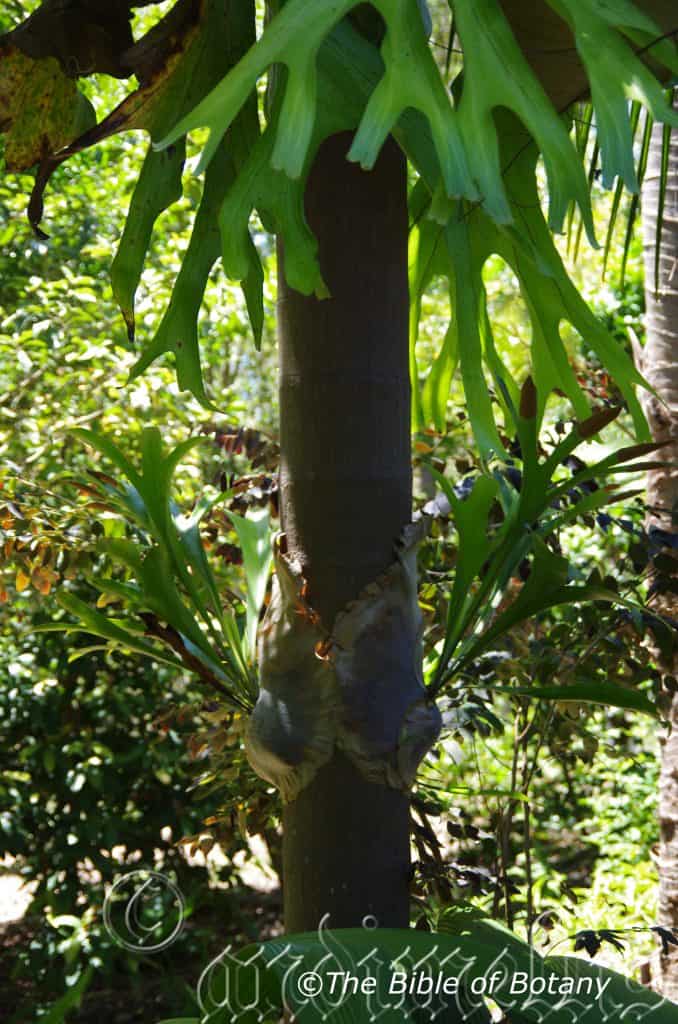
Author’s Garden The Pinnacles NSW

Author’s Garden The Pinnacles NSW

Author’s Garden The Pinnacles NSW
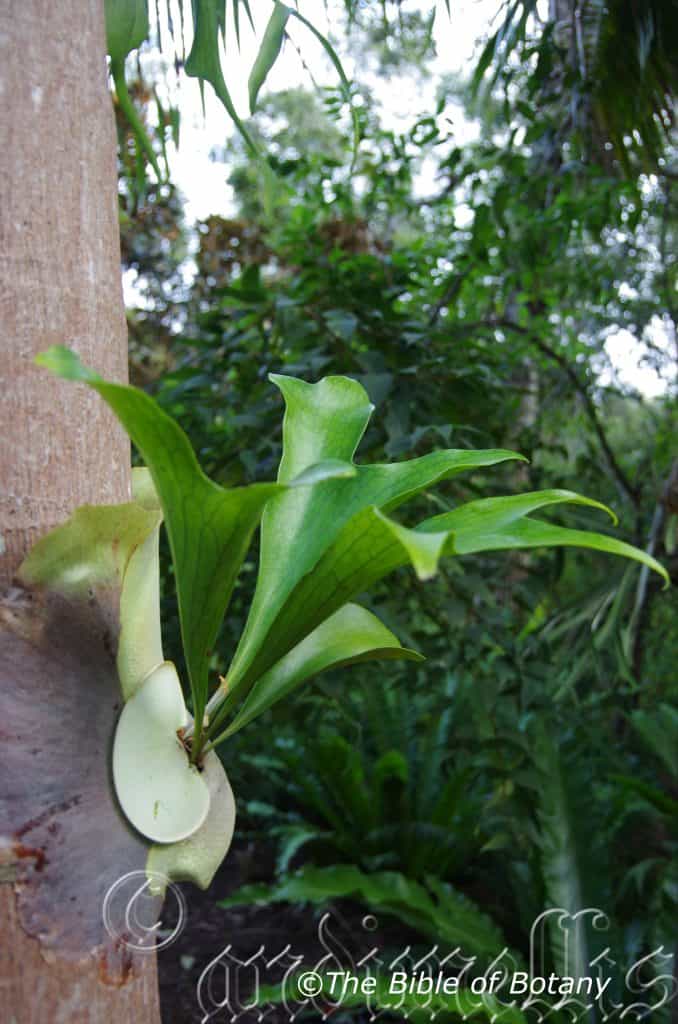
Author’s Garden The Pinnacles NSW

Author’s Garden The Pinnacles NSW
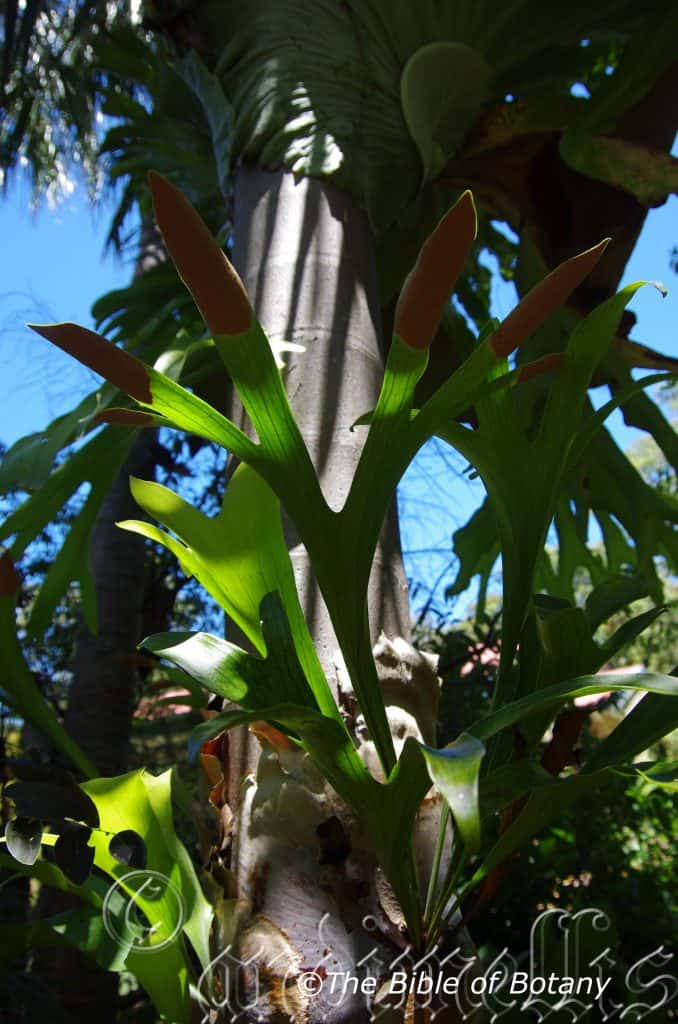
Author’s Garden The Pinnacles NSW
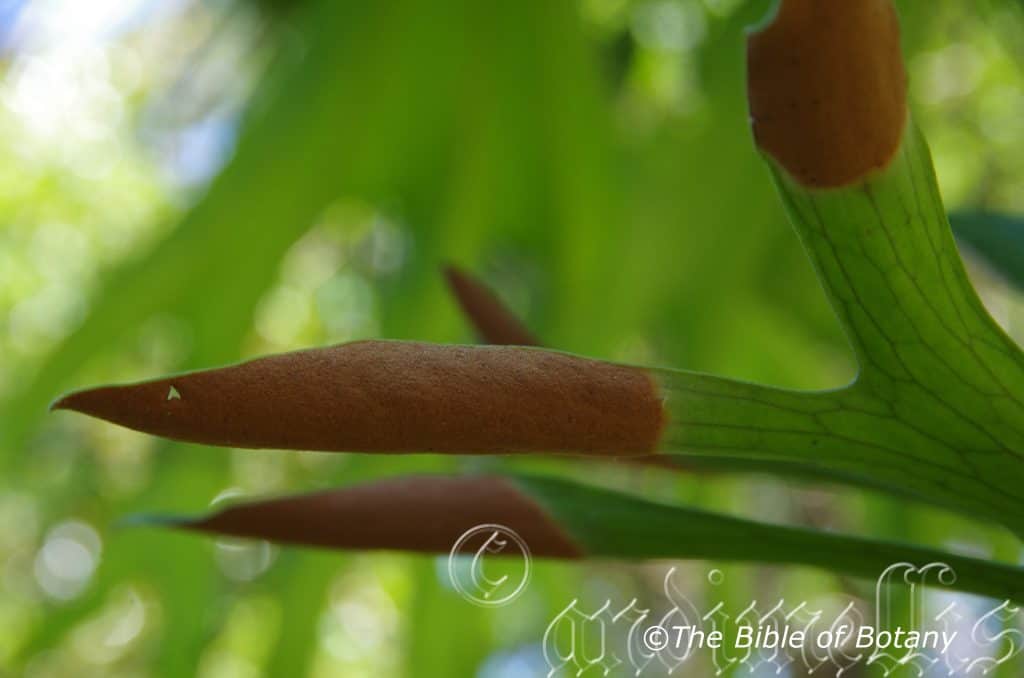
Author’s Garden The Pinnacles NSW
Platycerium hillii
Classification:
Unranked: Pteridophyta
Class: Pteridopsida
Order: Polypodiales
Family: Polypodiaceae
Genus: From Platy, which is Ancient Greek for flat and broad and K?ríon, which is Ancient Greek or later C?rium which is Latin for a bad swelling or ulcer. It usually refers to a group of ferns, which appear to have a large basal swelling that grows as a bulky, peaty sponge.
Specie: Is named in honour of Walter Hill; 1820?1904, who was an Australian director of the Brisbane Botanic Garden and Queensland Colonial Botanist from 1855 to 1881, known for his early collections of palms and creation of ‘Fern Island’ at the Brisbane Botanic Gardens. He was a devout gardener.
Sub species:
Common Name: Elk Horn or Stag Horn.
Distribution:
Platycerium hillii is found south from Tozer Gap to the Paluma Range National Park in far north eastern Queensland. It is found on and east of the Great Dividing Range to the coast and a few off the larger shore Islands.
https://avh.ala.org.au/occurrences/search?taxa=Platycerium+hillii#tab_mapView
Habitat Aspect Climate:
Platycerium hillii prefers light dappled shade to dense shade. It grows in well-developed warm tropical rainforests and littoral rainforests including sheltered mangrove forests. The mangrove populations are now all but extinct due to the ease of poaching in the past. The altitude ranges from 2 meters to 700 meters ASL.
The temperatures range from 7 degrees in August to 36 degrees in January.
The rainfall ranges from lows of 1800mm to an average of 3200mm.
Soil Requirements:
Platycerium hillii prefers to grow on better quality sandstone rocks as a lithophyte or in trees as an epiphyte. The favoured trees prefer the soil pH ranging from 5pH to 6pH. It does not tolerate water logged soils. Non saline soils to extremely saline soils are tolerated as are salt laden winds.
Height & Spread:
Wild Plants: 0.5m to 1m by 0.5m to 1m.
Characteristics:
Platycerium hillii’s rhizomes are prolific, much branched, short, creeping, slender and fleshy. The deep brown glaucous rhizomes are covered in brown to rusty brown appressed scales which curve outwards towards the apex.
Platycerium hillii The shield fronds rounded to somewhat reniform and measure 155mm to 360mm in length by 150mm to 28mm in width, while the upper margin is entire and slightly undulating. It is firmly appressed to trunk. The pale blueish-green, glabrous shield soon becomes brown.
The foliage fronds are ascending and measure 230mm to 960mm in length by 500mm to 600mm in width. The base is cuneate, while the apexes are spreading and are broad, with an acute apex. The distal one-third are forked 1 to 5 times. The ultimate segments are oblong and measure 10mm to 80mm in width. The discolourous distal fronds are deep dark green and glabrous on the uppoer lamina, while the lower lamina is paler. The sporangia cover most of the lower lamina on the ultimate segments of the fronds.
Spores 40–52.5 µm long, 20–35 µm wide.
https://profiles.ala.org.au/opus/foa/profile/Platyceriummm20hillii
Plantlets form from the lower sections of the mass develop so that the fern eventually encircles the host trunk or branch of the tree.
Wildlife:
Platycerium hillii wild plants often have the fronds damaged or the tips of the rhizomes eaten.
The plants are damaged by the stag horn beetles, Lamprima aurata and Dorcus curvidens.
Cultivation:
Platycerium hillii makes an excellent epiphyte or lithophyte in the garden, for areas where there is filtered light to dense shade. It always look green and responds well to native organic fertilzers being applied on a regular basis and where a little additional moisture is applied during droughts or very dry periods. It is very suitable in all small medium and large gardens close to the coast or in the mountains in warm temperate, warm sub-tropical or cool tropical gardens. As garden a subject it will colonize rocks especially those of a more porous nature or clinging onto tree trunks in a rainforest situation. It is cold tolerant to temperatures as low as 3 degree once established.
It is an ideal hanging basket plant provided even moisture is maintained. It also look very natural if placed in a basket with Davallia pyxidata.
Large frog or fish ponds are made the more attractive when surrounded by ferns and with this fern hanging in the background. Their size makes for a beautifully balance setting.
Propagation:
Fern Spores:
All ferns that are declared rare, vulnerable or endangered are protected by Federal and State Laws and must not be removed from the wild unless you are a land developer, mining company or main Roads department etc. This includes bulbs, roots, leaves and flowers. No part of any plant can be removed from Federal, State or Local Government land without the prior permission of the authority and this includes the spore.
Most people are put off at the thought of growing ferns from spore. Like all plants that produce their offspring from seed or spore the methods are basically the same. Remember nature has been doing this for millions of years and has been very successful. I have had excellent results growing over 200 different species of Australian ferns so don’t be afraid. Give it a go.
Step 1. Select spore from the fern fronds. Wait until the fern is just starting to release its spore. Rinse the fronds under clean running water and dry. This is to wash off any other spores from rogue ferns that may have settled onto the fronds. (There is nothing worse than having common brake or common soft bracken contaminating a prized tree fern or epiphyte.)
Step 2. Place the dry fronds in a clean brown paper bag and keep them in a cool dark place like the linen closet for about a week to ten days before you are ready to sow the spore. The exception to this rule applies to ferns, which produce green spores. These must be sown immediately that they are released. Todea Barbara is a good example of a fern, which produces green spore.
Step 3. Take a large ice cream container, a small ice cream container and a clean clear plastic bag large enough to seal the large ice cream container and three or four milk bottle tops.
Step 4. Punch or drill 6 to 10 5mm holes in the bottom of the small ice cream container.
Step 5. Wash both containers, tops and plastic bag so that they are very clean and sterile.
Step 6. Use a clean fine seed raising mi. We used 30mm fine sand, 30mm peat and 30mm perlite and 10mm vermiculite. We used crushed basalt, crusher dust and peat in a 50:50 ratio for epiphytes. Moisten the mix enough that water does not run out when the mix is squeezed between the fingers.
Step 7. Place the moisten mix (Enough to half fill the small ice cream container) in the microwave oven with a large glass of water for 7 or 8 minutes, until the water is boiling. Allow them to cool in the oven. You will need the water later so do not tip it out.
Step 8. Take the brown paper bag out of the linen closet. Shake the bag and remove the fronds. You should have a yellow, brown, black or rarely greenish brown or ochre powder or very fine, small round pin head size spore depending on the specie involved.
Step 9. Remove the mixture from the oven once it has cooled and place it in the small ice cream container and level.
Step 10. Sprinkle the spore sparsely over the mixture in the small ice cream container.
Step 11. Place the milk bottle tops in the large ice cream container with the flat surface facing down. Place the small ice cream container in the large ice cream container so that it is sitting on the milk bottle tops.
Step 12. Remove the water from the microwave and pour it into the larger ice cream container so there is 25mm to 30mm of water in the bottom.
Step 13. Place the ice cream containers in the plastic bag and seal. Step 14. Place the contents and bag in a warm shady place preferably 50mm to 70mm shade depending on the specie. Shade houses and some window sills are ideal.
Step 15. The surface should turn green within a few weeks. The prothallus will then develop. From the prothalus the first true fronds will appear. Wait until the ferns are 20mm to 35mm in height before you attempt to transplant them. Once they are ready open the bag up slightly and allow the air to flow around the little ferns. Every 3 to 5 days open the bag a little further so the ferns get use to their new environment. Allow them a week to two weeks to harden off before you transplant them following the removal of the plastic bag. Use a 50mm peat with 50mm vermiculite in the pots. Carefully prick them out into 100mm squat pots retaining as much root as possible as you would any seedling. Keep moist not wet or severe dampening off will occur.
Do not try to transplant them as single plants as they are still a little delicate.
Once the smaller ones again reach 50mm to 70mm you may wish to divide the stronger and hardier individual plants into smaller clumps and place on cork slabs or similar porous natural material like compressed coconut fibre and keep moist.
Step 16. We fertilized with seaweed, fish emulsion or organic chicken pellets soaked in water on an alternate basis until established every month until established. Fertilize every six months thereafter even when fully grown.
Further Comments from Readers:
“Hi reader, it seems you use The Bible of Botany a lot. That’s great as we have great pleasure in bringing it to you! It’s a little awkward for us to ask, but our first aim is to purchase land approximately 1,600 hectares to link several parcels of N.P. into one at The Pinnacles NSW Australia, but we need your help. We’re not salespeople. We’re amateur botanists who have dedicated over 30 years to saving the environment in a practical way. We depend on donations to reach our goal. If you donate just $5, the price of your coffee this Sunday, We can help to keep the planet alive in a real way and continue to bring you regular updates and features on Australian plants all in one Botanical Bible. Any support is greatly appreciated. Thank you.”
In the spirit of reconciliation we acknowledge the Bundjalung, Gumbaynggirr and Yaegl and all aboriginal nations throughout Australia and their connections to land, sea and community. We pay our respect to their Elders past, present and future for the pleasures we have gained.
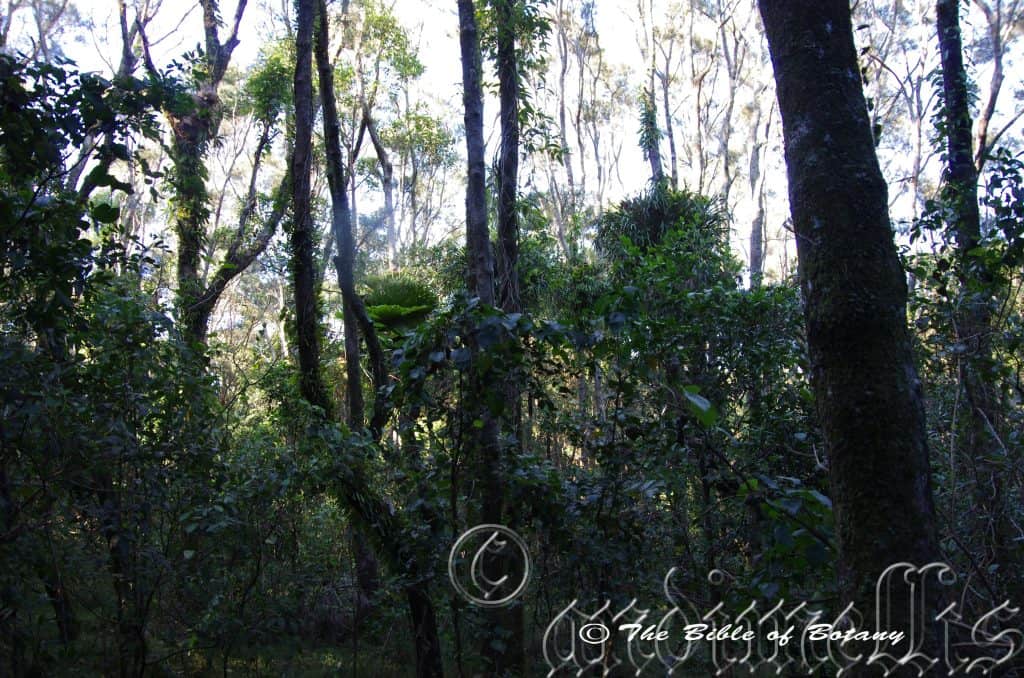
Coffs Harbour NSW
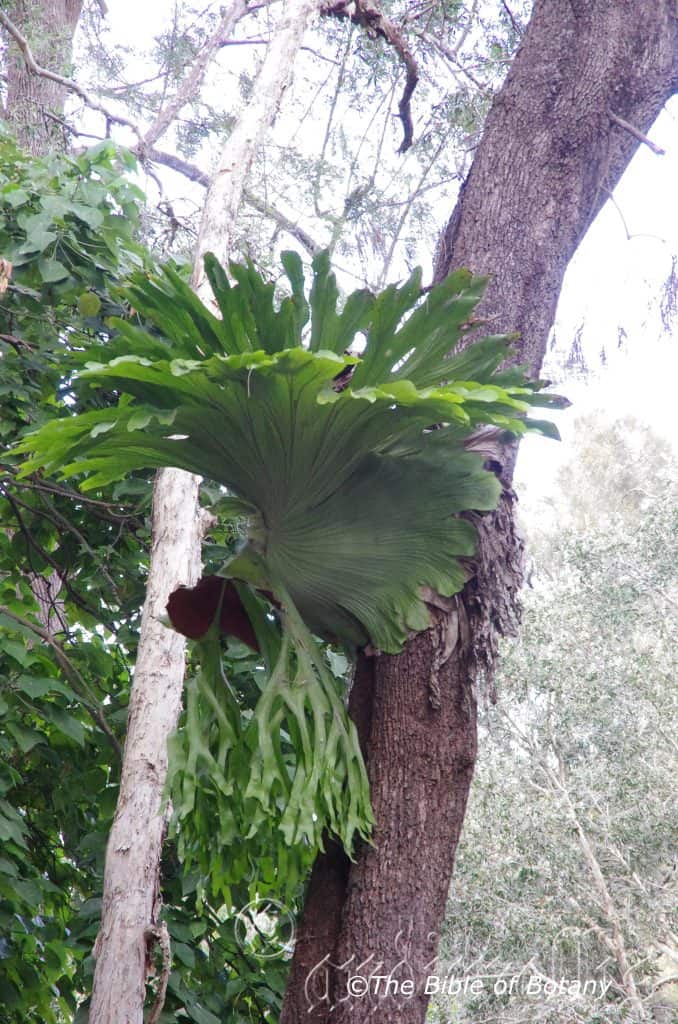
Currumbin Qld.

Currumbin Qld.
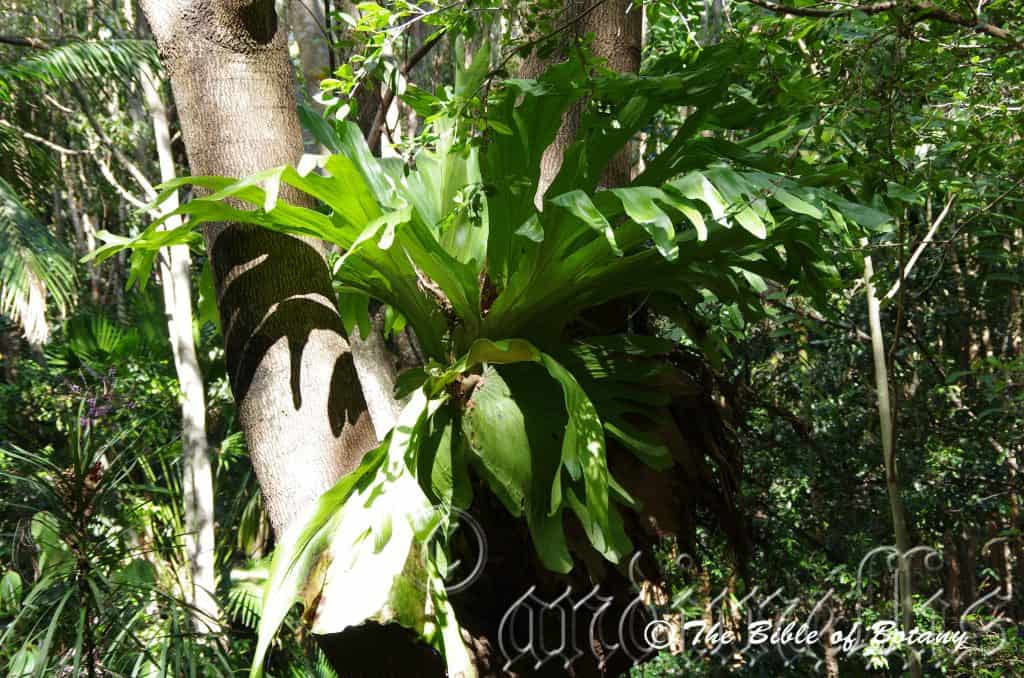
Mount Cootha Botanic Gardens Qld.
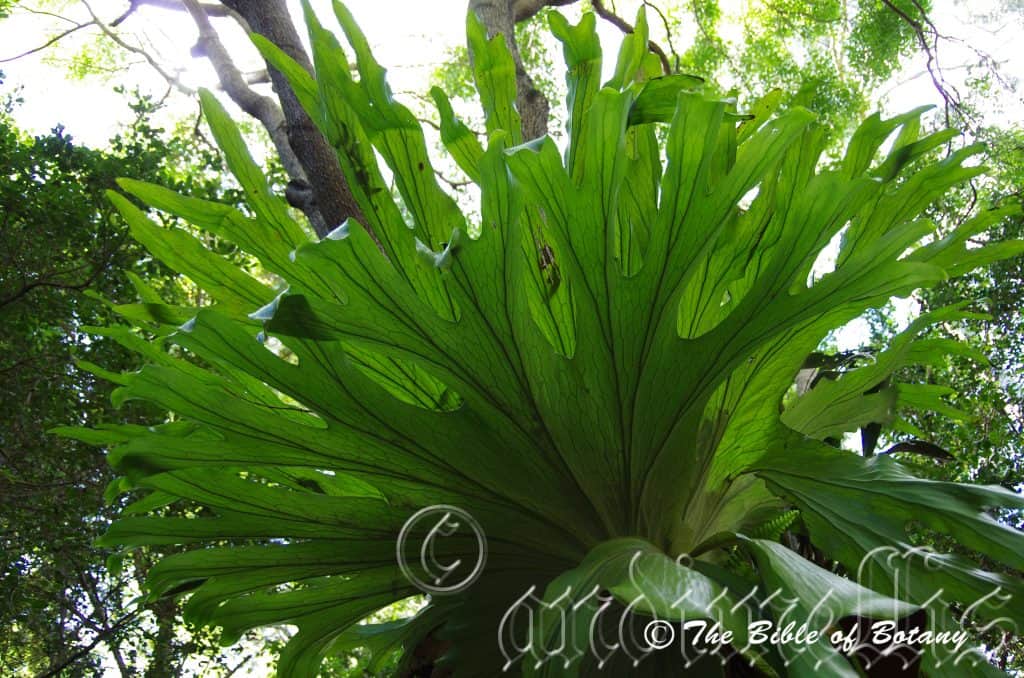
Mount Cootha Botanic Gardens Qld.
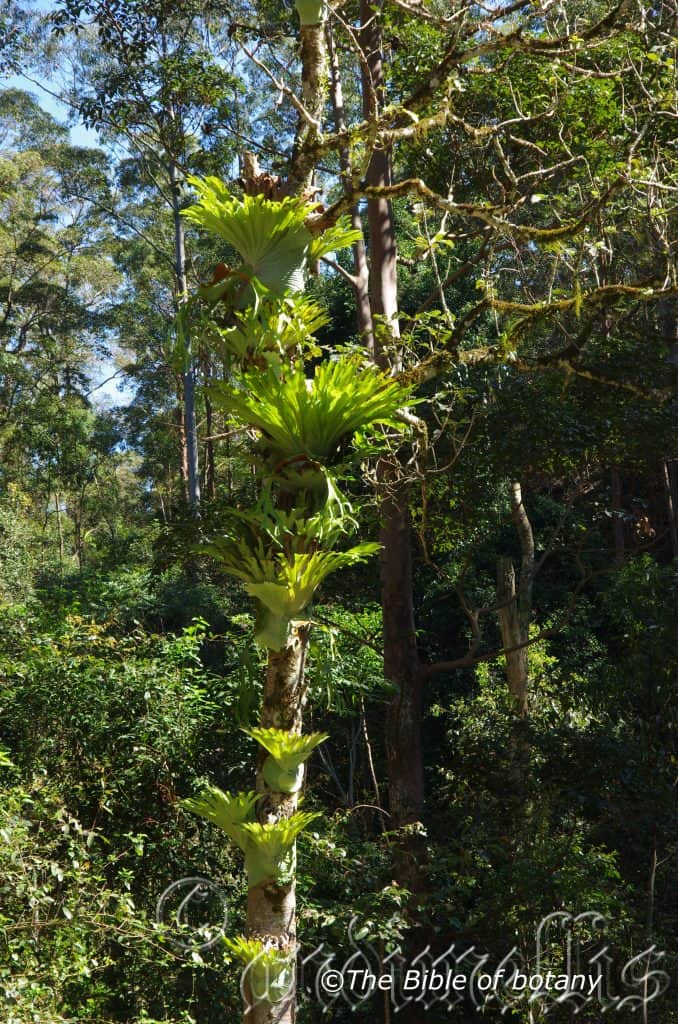
Northern Rivers NSW

Mount Cootha Botanic Gardens Qld.
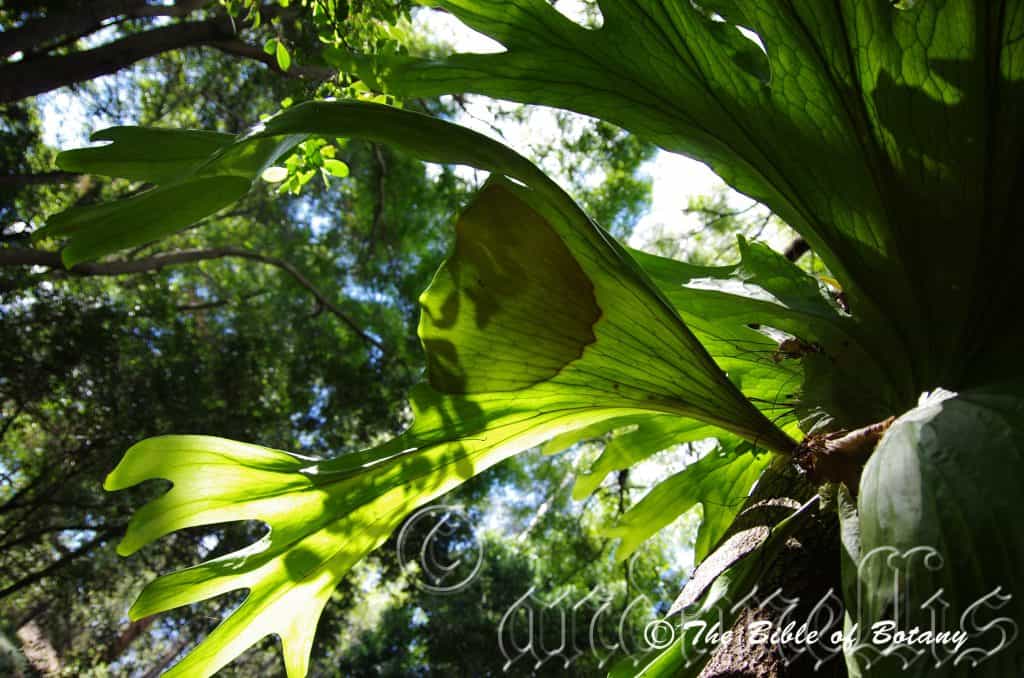
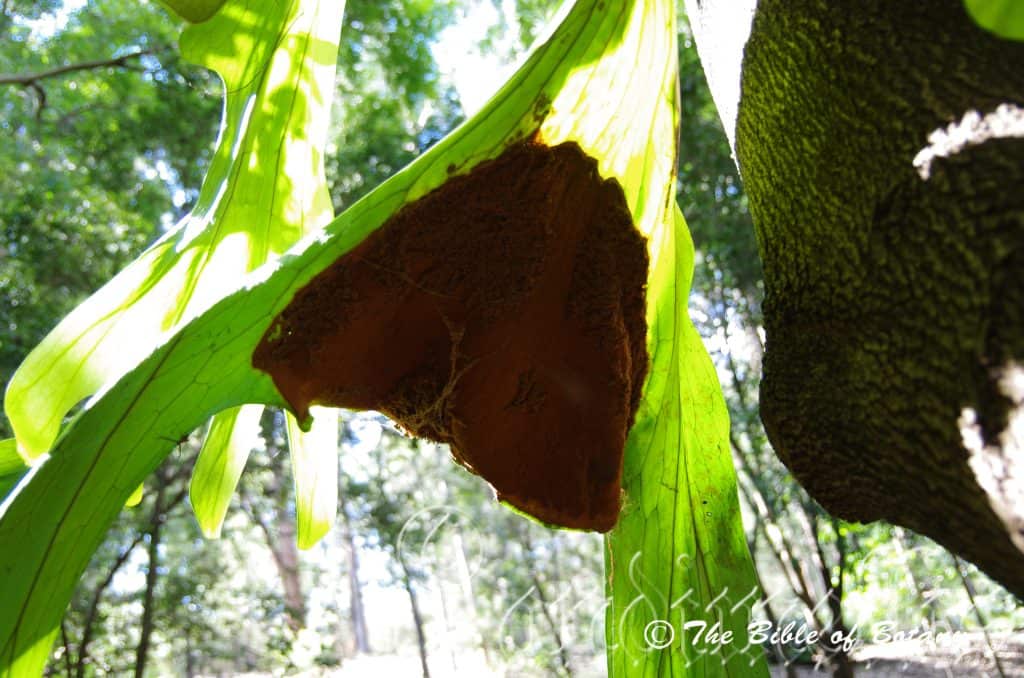
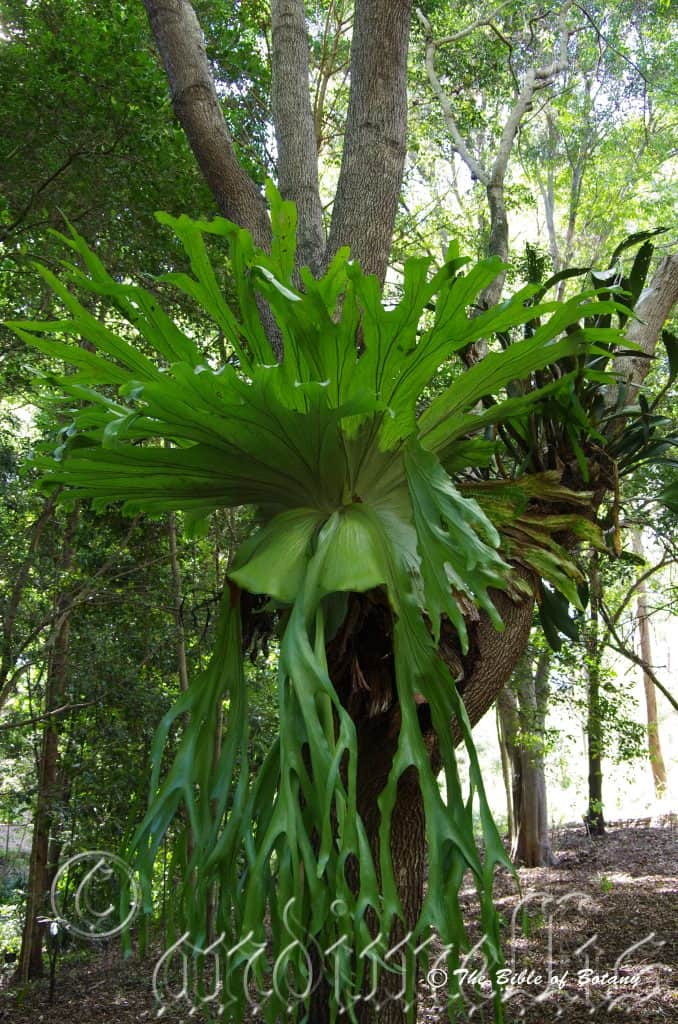
Mount Cootha Botanic Gardens Qld.
Platycerium superbum
Classification:
Unranked: Pteridophyta
Class: Pteridopsida
Order: Polypodiales
Family: Polypodiaceae
Genus: From Platy, which is Ancient Greek for flat and broad and K?ríon, which is Ancient Greek or later C?rium which is Latin for a bad swelling or ulcer. It usually refers to a group of ferns, which appear to have a large basal swelling that grows as a bulky, peaty sponge.
Specie: From Hupér, which is Ancient Greek or later Superbi?ns, which is Latin for above, more than or beyond. It refers to plants, which have superior structural beauty than other plants in the genus.
Sub species:
Common Name: Elk Horn or Stag Horn.
Distribution:
Platycerium superbum is a widespread species which is found east of the Great Dividing Range in several disjunct populations south from the Daintree National Park in far north eastern Queensland to the Hunter Valley in central coastal New South Wales.
https://avh.ala.org.au/occurrences/search?taxa=Platycerium+superbum#tab_mapView
Habitat Aspect Climate:
Platycerium superbum prefers light dappled shade to dense shade. It grows in well-developed warm sub-tropical rainforests, cool tropical rainforests and littoral rainforests including sheltered mangrove forests. The mangrove populations are now all but extinct due to the ease of poaching in the past. The altitude ranges from 2 meters ASL to 1050 meters ASL.
The temperatures range from minus 1degrees in August to 32 degrees in January.
The rainfall ranges from lows of 900mm to an average of 3200mm.
Soil Requirements:
Platycerium superbum prefers growing on better quality basalt rocks as a lithophyte or in trees as an epiphyte. The favoured trees prefer the soils pH ranges from 4.5pH to 7.5pH. It does not tolerate water logged soils though seasonal flooding may be experienced in riparian zones. Non saline soils to moderately saline rocks are tolerated.
Height & Spread:
Wild Plants: 1m to 2.5m by 1m to 1.5m.
Characteristics:
Platycerium superbum’s rhizome is a single, short, creeping, thick and fleshy. The deep brown glaucous rhizomes are covered in brown to rusty brown appressed scales which curve outwards towards the apex.
Platycerium superbum’s has dimorphic simple and pinnatifid forked fronds.
The simple sterile fronds or nest fronds are orbicular at the base and widely spreading on the upper section. They measure 300mm to 500mm at the base measure by 1200mm to 1600mm in height. The pale green fronds margins are entire at the base and sides with the apex being shallowly to deeply and irregularly lobed 2 to 3 times. The fronds are sparsely to densely covered in soft white pulverulent to canescent hairs. The fronds turn brown and papery brittle with age eventually forming a peaty sponge like compost at the rear of the new fronds. The sterile fronds base eventually surrounds the branches or smaller trunks of the host trees.
The 2 fertile fronds are pale green to pale blue green and are strongly pendent. The fronds are sparsely to densely covered in soft white pulverulent to canescent hairs. It is dichotomously divided 4 to 6 times. The forked fronds measure 750mm to 1600mm in length by 100mm to 600mm in width. The ultimate lobes are narrow and measure 20mm to 140mm in length by 15mm to 50mm in width. The apexes are acute to obtuse or bluntly acuminate.
The sporangia are located as a single mass in the fork of the first dichotomy.
Wildlife:
Platycerium superbum’s wildlife is unknown to the author however wild plants at times have the fronds damaged or the tips of the rhizomes eaten.
Cultivation:
Platycerium superbum makes an excellent epiphytes or lithophytes in the garden for areas where there is filtered light to dense shade. They always look green and fresh especially where adequate moisture and humidity prevails. It is very suitable in all small medium and large gardens close to the coast or in the mountains in warm temperate, warm sub-tropical or cool tropical gardens. As garden subjects they will colonize rocks especially those of a more porous nature clinging on tree trunks in a rainforest situation or on shady banks. It is cold tolerant to temperatures as low as minus 1 degree once established.
It is an ideal hanging basket plant provided even moisture is maintained.
Large frog or fish ponds are made the more attractive when surrounded by ferns and with this fern hanging in the background. Their size makes for a balance setting.
Propagation:
Fern Spores:
All ferns that are declared rare, vulnerable or endangered are protected by Federal and State Laws and must not be removed from the wild unless you are a land developer, mining company or main Roads department etc. This includes bulbs, roots, leaves and flowers. No part of any plant can be removed from Federal, State or Local Government land without the prior permission of the authority and this includes the spore.
Most people are put off at the thought of growing ferns from spore. Like all plants that produce their offspring from seed or spore the methods are basically the same. Remember nature has been doing this for millions of years and has been very successful. I have had excellent results growing over 200 different species of Australian ferns so don’t be afraid. Give it a go.
Step 1. Select spore from the fern fronds. Wait until the fern is just starting to release its spore. Rinse the fronds under clean running water and dry. This is to wash off any other spores from rogue ferns that may have settled onto the fronds. (There is nothing worse than having common brake or common soft bracken contaminating a prized tree fern or epiphyte.)
Step 2. Place the dry fronds in a clean brown paper bag and keep them in a cool dark place like the linen closet for about a week to ten days before you are ready to sow the spore. The exception to this rule applies to ferns, which produce green spores. These must be sown immediately that they are released. Todea Barbara is a good example of a fern, which produces green spore.
Step 3. Take a large ice cream container, a small ice cream container and a clean clear plastic bag large enough to seal the large ice cream container and three or four milk bottle tops.
Step 4. Punch or drill 6 to 10 5mm holes in the bottom of the small ice cream container.
Step 5. Wash both containers, tops and plastic bag so that they are very clean and sterile.
Step 6. Use a clean fine seed raising mi. We used 30mm fine sand, 30mm peat and 30mm perlite and 10mm vermiculite. We used crushed basalt, crusher dust and peat in a 50:50 ratio for epiphytes. Moisten the mix enough that water does not run out when the mix is squeezed between the fingers.
Step 7. Place the moisten mix (Enough to half fill the small ice cream container) in the microwave oven with a large glass of water for 7 or 8 minutes, until the water is boiling. Allow them to cool in the oven. You will need the water later so do not tip it out.
Step 8. Take the brown paper bag out of the linen closet. Shake the bag and remove the fronds. You should have a yellow, brown, black or rarely greenish brown or ochre powder or very fine, small round pin head size spore depending on the specie involved.
Step 9. Remove the mixture from the oven once it has cooled and place it in the small ice cream container and level.
Step 10. Sprinkle the spore sparsely over the mixture in the small ice cream container.
Step 11. Place the milk bottle tops in the large ice cream container with the flat surface facing down. Place the small ice cream container in the large ice cream container so that it is sitting on the milk bottle tops.
Step 12. Remove the water from the microwave and pour it into the larger ice cream container so there is 25mm to 30mm of water in the bottom.
Step 13. Place the ice cream containers in the plastic bag and seal. Step 14. Place the contents and bag in a warm shady place preferably 50mm to 70mm shade depending on the specie. Shade houses and some window sills are ideal.
Step 15. The surface should turn green within a few weeks. The prothallus will then develop. From the prothalus the first true fronds will appear. Wait until the ferns are 20mm to 35mm in height before you attempt to transplant them. Once they are ready open the bag up slightly and allow the air to flow around the little ferns. Every 3 to 5 days open the bag a little further so the ferns get use to their new environment. Allow them a week to two weeks to harden off before you transplant them following the removal of the plastic bag. Use a 50mm peat with 50mm vermiculite in the pots. Carefully prick them out into 100mm squat pots retaining as much root as possible as you would any seedling. Keep moist not wet or severe dampening off will occur.
Do not try to transplant them as single plants as they are still a little delicate.
Once the smaller ones again reach 50mm to 70mm you may wish to divide the stronger and hardier individual plants into smaller clumps and place on cork slabs or similar porous natural material like compressed coconut fibre and keep moist.
Step 16. We fertilized with seaweed, fish emulsion or organic chicken pellets soaked in water on an alternate basis until established every month until established. Fertilize every six months thereafter even when fully grown.
Further Comments from Readers:
“Hi reader, it seems you use The Bible of Botany a lot. That’s great as we have great pleasure in bringing it to you! It’s a little awkward for us to ask, but our first aim is to purchase land approximately 1,600 hectares to link several parcels of N.P. into one at The Pinnacles NSW Australia, but we need your help. We’re not salespeople. We’re amateur botanists who have dedicated over 30 years to saving the environment in a practical way. We depend on donations to reach our goal. If you donate just $5, the price of your coffee this Sunday, We can help to keep the planet alive in a real way and continue to bring you regular updates and features on Australian plants all in one Botanical Bible. Any support is greatly appreciated. Thank you.”
In the spirit of reconciliation we acknowledge the Bundjalung, Gumbaynggirr and Yaegl and all aboriginal nations throughout Australia and their connections to land, sea and community. We pay our respect to their Elders past, present and future for the pleasures we have gained.
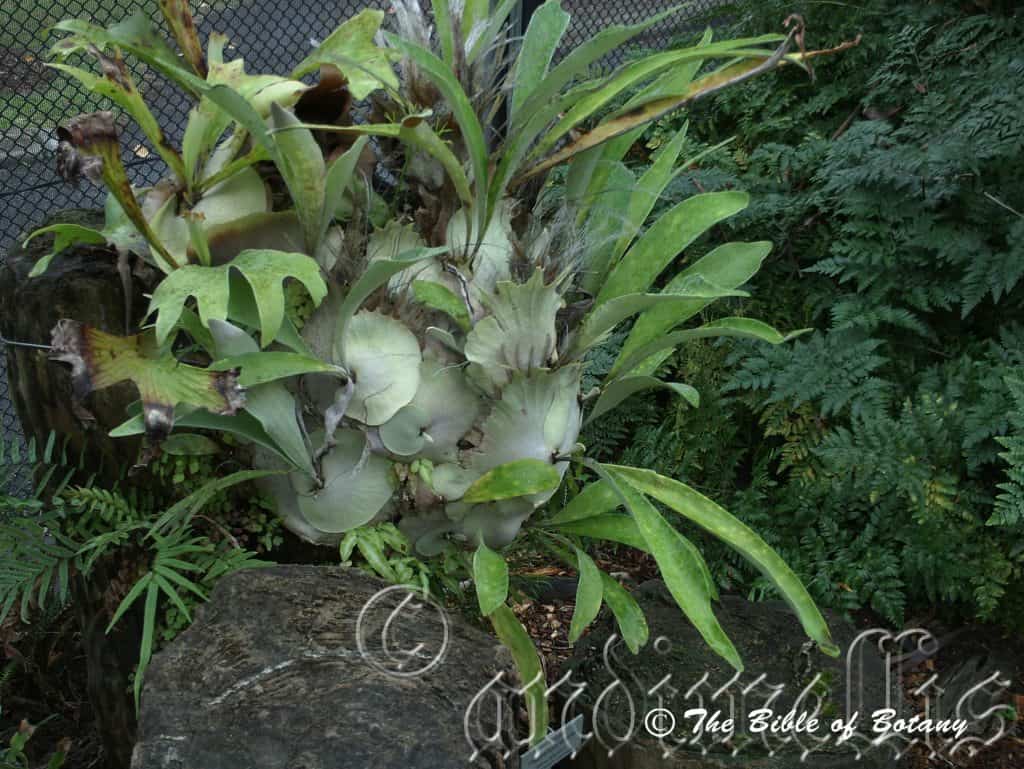
Mount Cootha Botanic Gardens Qld.
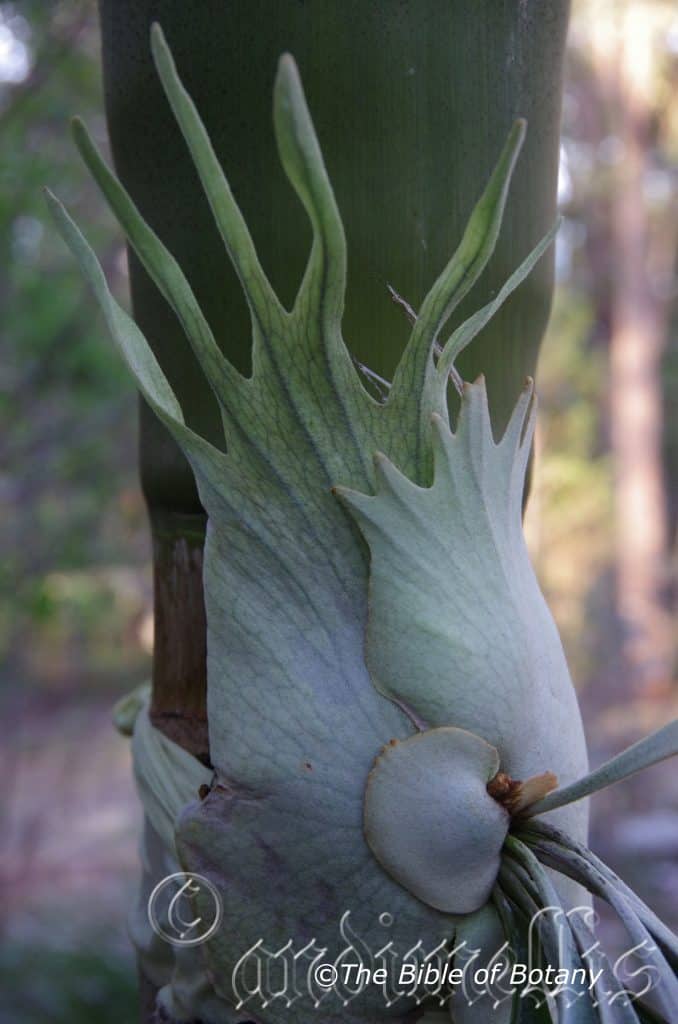
Author’s Garden The Pinnacles NSW
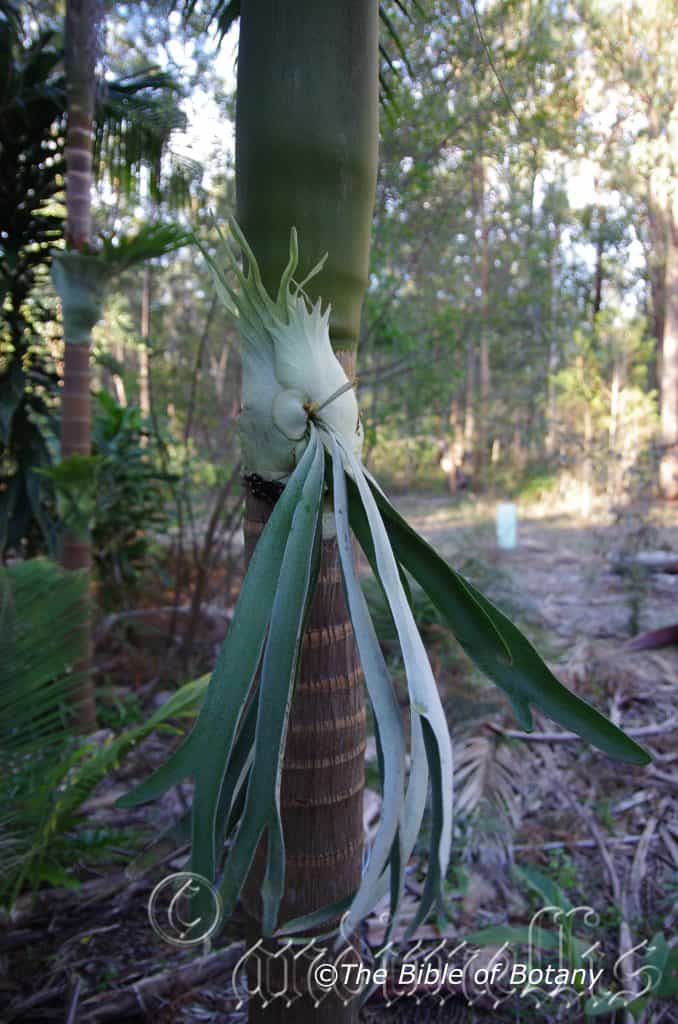
Author’s Garden The Pinnacles NSW
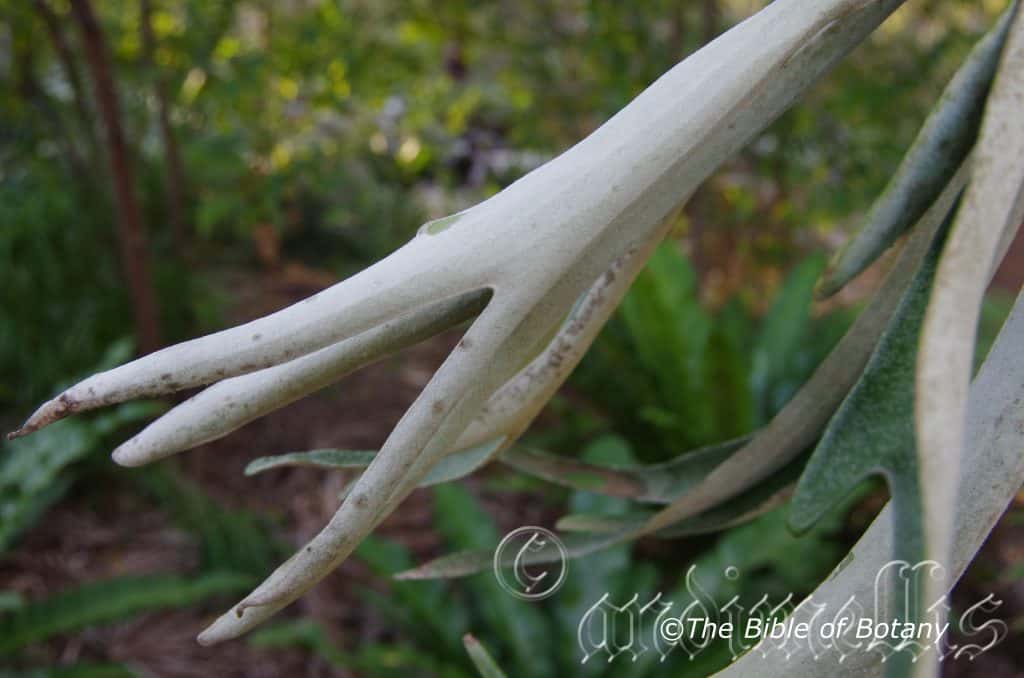
Author’s Garden The Pinnacles NSW
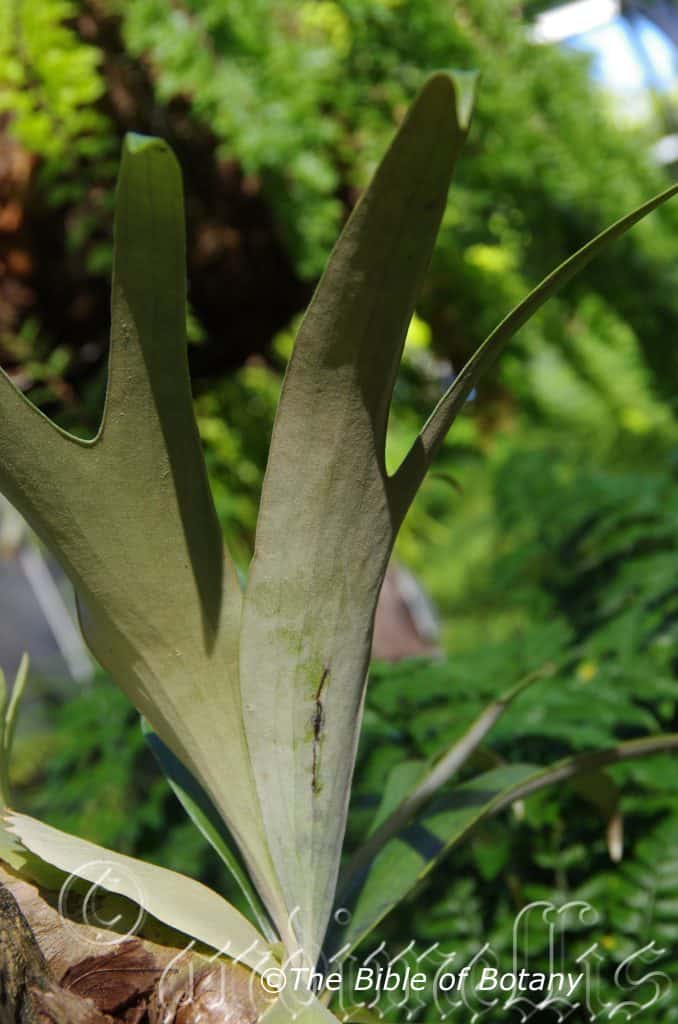
Author’s Garden The Pinnacles NSW
Platycerium veitchii
Classification:
Unranked: Pteridophyta
Class: Pteridopsida
Order: Polypodiales
Family: Polypodiaceae
Genus: From Platy, which is Ancient Greek for flat and broad and K?ríon, which is Ancient Greek or later C?rium which is Latin for a bad swelling or ulcer. It usually refers to a group of ferns, which appear to have a large basal swelling that grows as a bulky, peaty sponge.
Specie: Is named in honour of Harry James Veitch; 1840-1924, who was an English botanist, horticulturalist and nurseryman.
Sub species:
Common Name: Silver Elk Horn or Silver Stag Horn.
Distribution:
Platycerium veitchii is a widespread species which is found in several disjunct populations south from west of Cooktown in far north Queensland to west of Bundaberg.
https://avh.ala.org.au/occurrences/search?taxa=Platycerium+veitchii#tab_mapView
Habitat Aspect Climate:
Platycerium veitchii prefers light dappled shade. It grows in well-developed warm sub-tropical rainforests, cool tropical rainforests and littoral rainforests. The altitude ranges from 30 meters to 750 meters ASL.
The temperatures range from minus 4 degrees in August to 36 degrees in January.
The rainfall ranges from lows of 800mm to an average of 3200mm.
Soil Requirements:
Platycerium veitchii prefers to grow on better quality basalt rocks as lithophytes or in trees as an epiphyte. The preferred trees prefer to grow in soils where the pH ranges from 5pH to 6.5pH. They do not tolerate water logged soils. Non saline soils to slightly saline soils are tolerated.
Height & Spread:
Wild Plants: 0.5m to 1m by 0.5m to 1m.
Characteristics:
Platycerium veitchii’s rhizome is much branched, short, creeping, slender and fleshy with a diameter of 3mm to 4.5mm. The deep brown glaucous rhizomes are covered in brown to rusty brown appressed scales which curve outwards towards the apex.
Platycerium veitchii’s has dimorphic simple and pinnatifid forked fronds.
The simple sterile fronds or nest fronds are orbicular and measure 100mm to 250mm in height by 120mm to 300mm in width. The pale grey-green fronds margins are entire, sinuate or shallowly obtusely lobed. The fronds are sparsely to densely covered in soft white pulverulent to canescent hairs. The fronds turn brown and papery brittle with age eventually forming a peaty sponge like compost at the rear of new fronds.
The fertile fronds are deep grey-green and are erect to pendent or erect becoming pendent towards the apexes. The fronds are sparsely to densely covered in soft white pulverulent to canescent hairs. It is dichotomously divided 2 to 4 times. The forked fronds measure 250mm to 700mm in length by 100mm to 500mm in width. The ultimate lobes are narrow and measure 70mm to 150mm in length by 5mm to 35mm in width. The apexes are acute to obtuse or bluntly acuminate.
The sporangia are located on the ends of the ultimate 2 dichotomous lobes covering 10mm to 100mm of the 2 last lobes.
Plantlets form from the lower sections of the mass so that the fern eventually encircles the host trunk or branch of the tree.
Wildlife:
Platycerium veitchii’s wildlife is unknown to the author however wild plants often have the fronds damaged or the tips of the rhizomes eaten.
Cultivation:
Platycerium veitchii makes an excellent epiphytes or lithophytes in the garden for areas where there is filtered light to dense shade. They always look green and fresh especially where adequate moisture and humidity prevails. It is very suitable in all small medium and large gardens close to the coast or in the mountains in warm temperate, warm sub-tropical or cool tropical gardens. As garden subjects they will colonize rocks especially those of a more porous nature clinging on tree trunks in a rainforest situation or on shady banks. It is cold tolerant to temperatures as low as minus 1 degree once established.
It is an ideal hanging basket plant provided even moisture is maintained. It also looks very natural if placed in a basket with Davallia pyxidata.
Large frog or fish ponds are made the more attractive when surrounded by ferns and with this fern hanging in the background. Their size makes for a balance setting.
Propagation:
Fern Spores:
Most people are put off at the thought of growing ferns from spore. Like all plants that produce their offspring from seed or spore the methods are similar. Remember nature has been doing this for millions of years and has been very successful. I have had excellent results with almost every fern in Australia so give it a go. This is one of the easier ferns to grow from spore and gives much pleasure when you see the results of your efforts.
Step 1.Select spore from the Platycerium veitchii’s fronds that are just starting to release its spore. Rinse the fronds under clean running water and dry.
Step 2.Place the dry fronds in a brown paper bag and keep them in a cool dark place like the linen closet for about a week before you are ready to sow the spore.
Step 3.Take a large ice cream container, a small ice cream container and a clean clear plastic bag large enough to cover the large ice cream container.
Step 4.Wash both containers so that It is very clean.
Step 5.Punch some small holes in the small ice cream container.
Step 6.Use a clean fine seed raising mix that has had some clay or crusher added to it about 10mm. Then moisten the mix.
Step 7.Place this mix in the microwave oven for 7 or 8 minutes with a glass of water. Allow them to cool in the oven. You will need the water later so do not tip it out.
Step 8.Take the brown paper bag out of its cupboard. Shake the bag and remove the fronds. You should have a brown powder or small round pepper size spore.
Step 9.Remove the mixture from the oven once it has cooled and place it in the small ice-cream container.
Step 10.Sprinkle the spore over the mixture in the small ice-cream container.
Step 11.Place the small ice-cream container in the large ice-cream container.
Step 12.Remove the water from the microwave and tip it into the ice-cream container so there is 20mm to 25mm of water in the bottom.
Step 13.Place the ice-cream containers in the plastic bag and seal.
Step 14.Place the contents and bag in a warm shady place. Shade houses and some window sills are ideal.
Step 15.Wait until the ferns are 20mm to 30 mm high before you attempt to transplant them. Once It is ready open the bag up and allow the air to flow around them. Every three days open the bag a little further so the ferns get use to their new environment. Allow them a week or two to harden off before you transplant them into 50mm standard tubes. Do not try to transplant them as single plants as It is a little delicate still. Fertilize using Seaweed, fish emulsion or organic chicken pellets soaked in water on an alternate basis. Once they reach 50mm to 60mm start separating the strongest ones and again do not move them far from their original position. After a few weeks the ferns will power away without any setbacks.
Plants can be fed with discarded banana peels, apple peels and tea leaves or coffee grounds to simulate rainforest conditions.
Fertilize using seaweed, fish emulsion or organic chicken pellets soaked in water on an alternate basis. Fertilize every two months until the plants are established then twice annually in early September or March to maintain better colour, health, vitality.
Further Comments from Readers:
“Hi reader, it seems you use The Bible of Botany a lot. That’s great as we have great pleasure in bringing it to you! It’s a little awkward for us to ask, but our first aim is to purchase land approximately 1,600 hectares to link several parcels of N.P. into one at The Pinnacles NSW Australia, but we need your help. We’re not salespeople. We’re amateur botanists who have dedicated over 30 years to saving the environment in a practical way. We depend on donations to reach our goal. If you donate just $5, the price of your coffee this Sunday, We can help to keep the planet alive in a real way and continue to bring you regular updates and features on Australian plants all in one Botanical Bible. Any support is greatly appreciated. Thank you.”
In the spirit of reconciliation we acknowledge the Bundjalung, Gumbaynggirr and Yaegl and all aboriginal nations throughout Australia and their connections to land, sea and community. We pay our respect to their Elders past, present and future for the pleasures we have gained.

The Pinnacles NSW

National Botanic gardens ACT
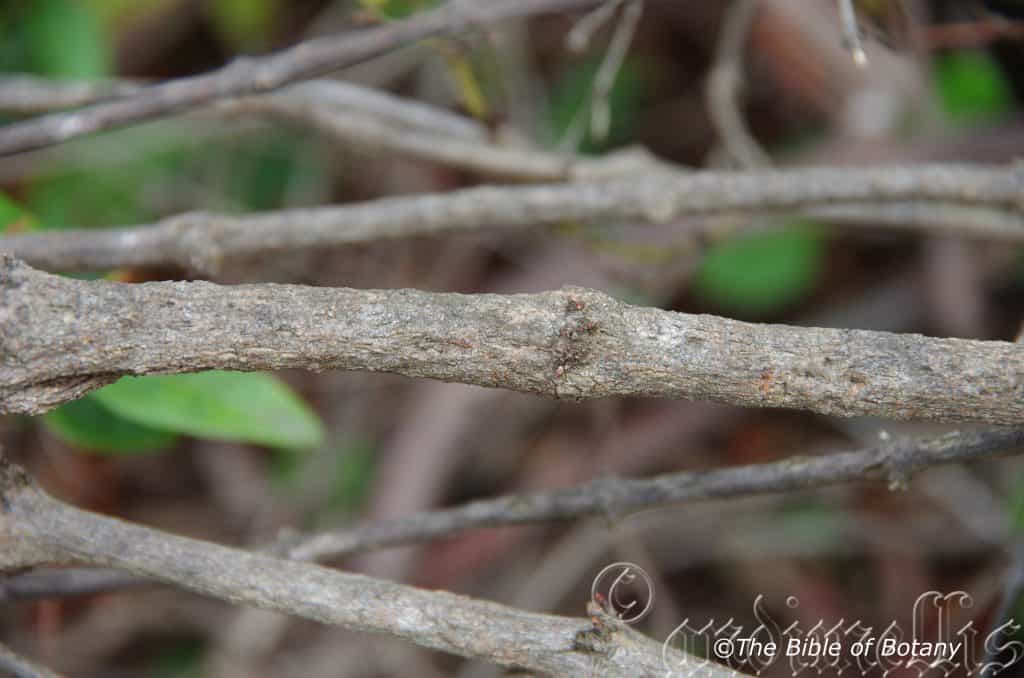
National Botanic gardens ACT
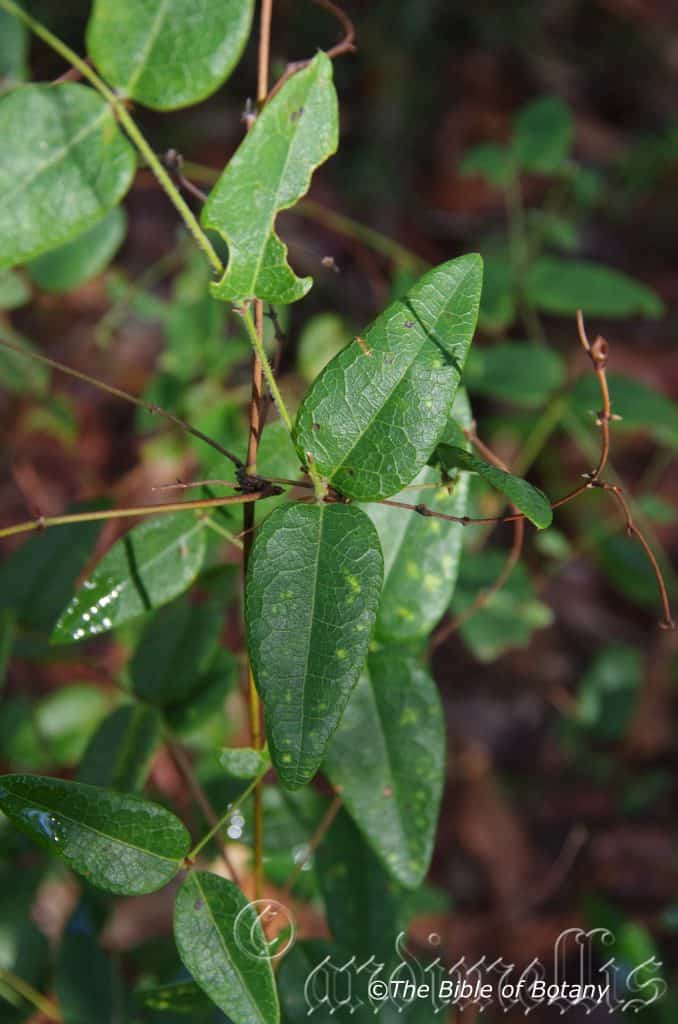
The Pinnacles NSW

Morgan’s Camp Trail Fortis Creek National Park NSW
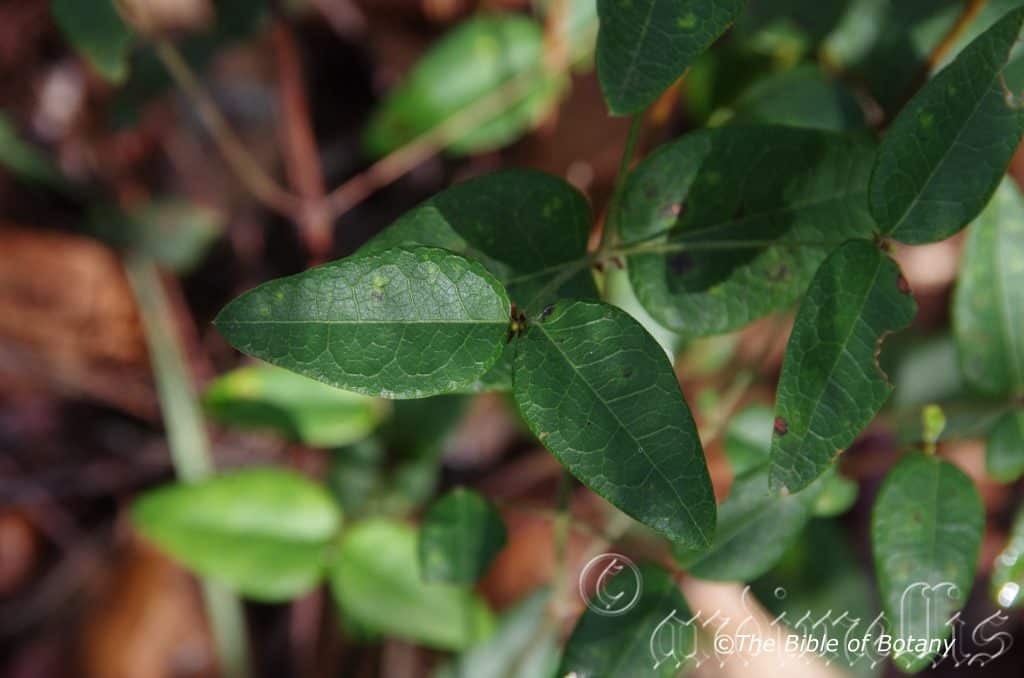
The Pinnacles NSW
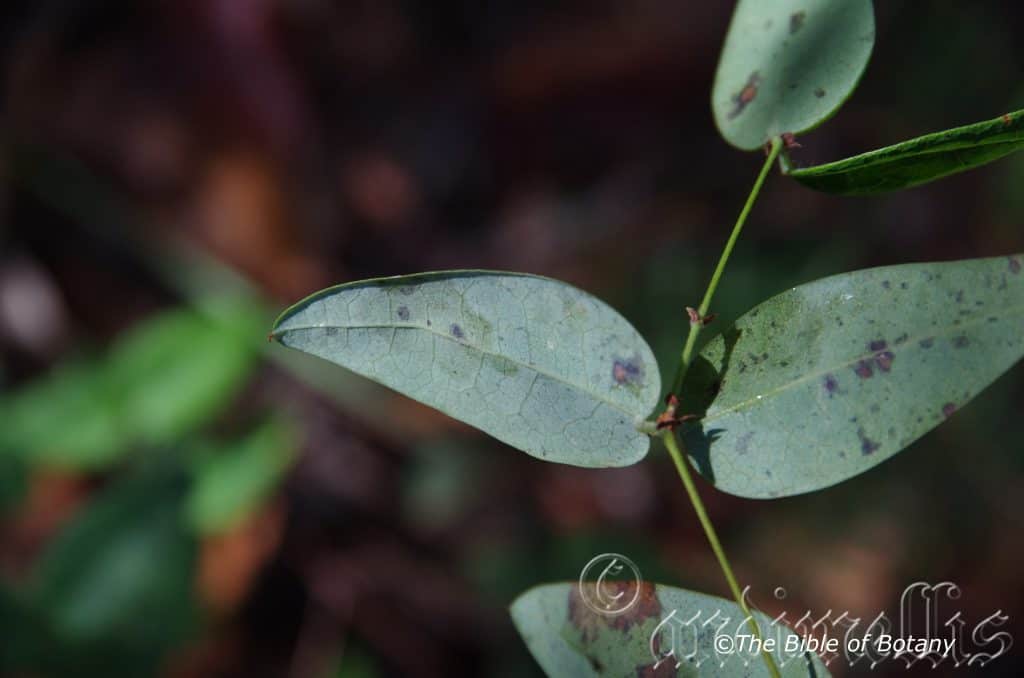
The Pinnacles NSW
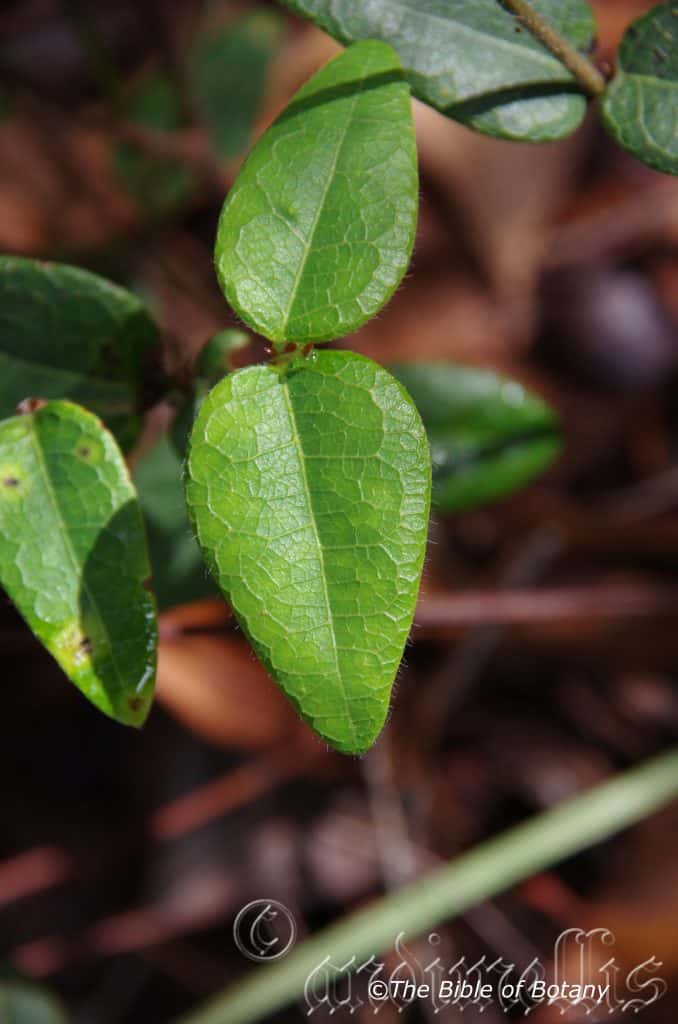
The Pinnacles NSW

National Botanic gardens ACT
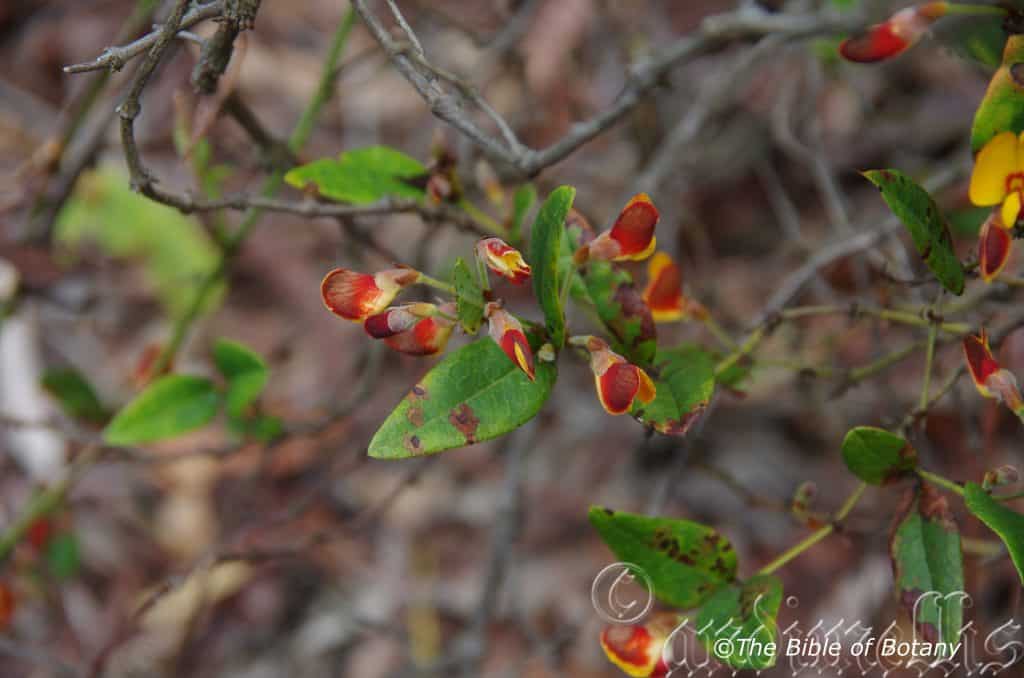
National Botanic gardens ACT
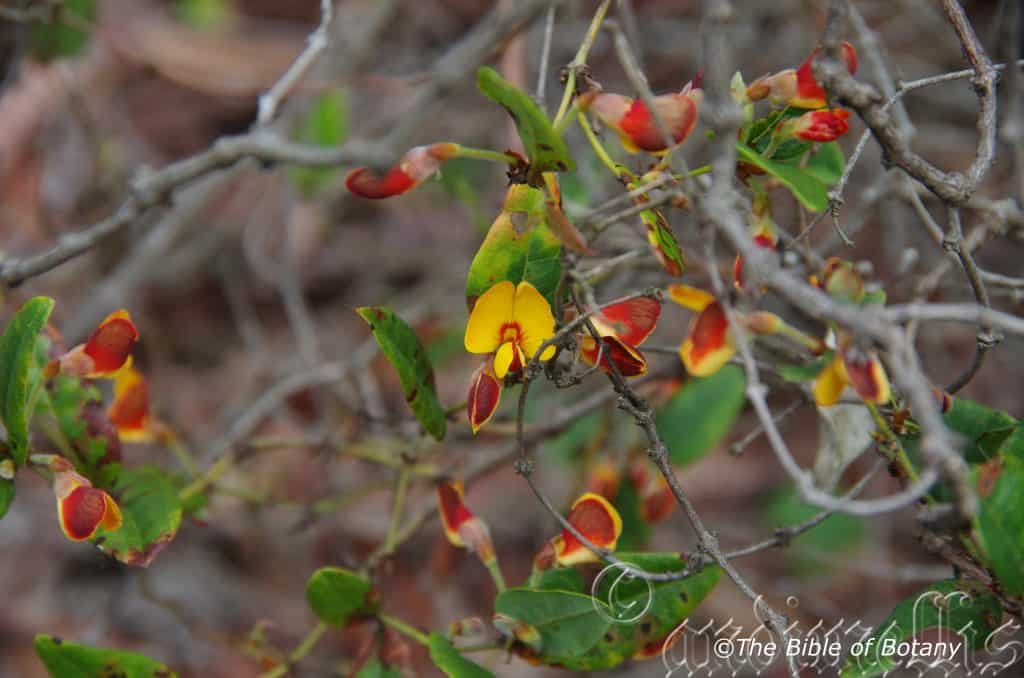
National Botanic gardens ACT

National Botanic gardens ACT
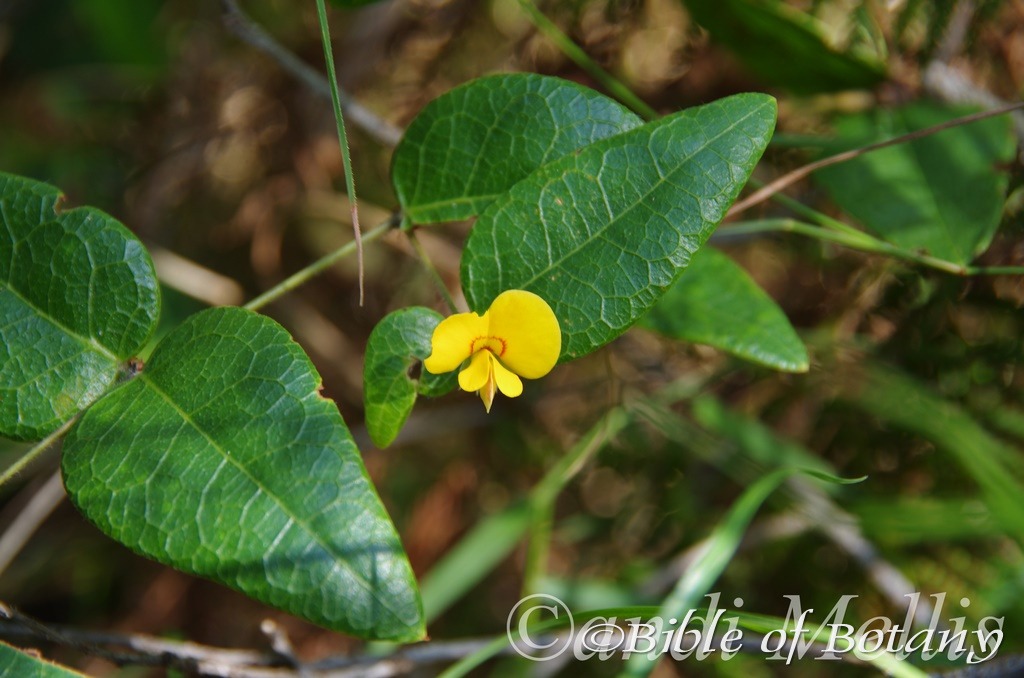
Morgan’s Camp Trail Fortis Creek National Park NSW
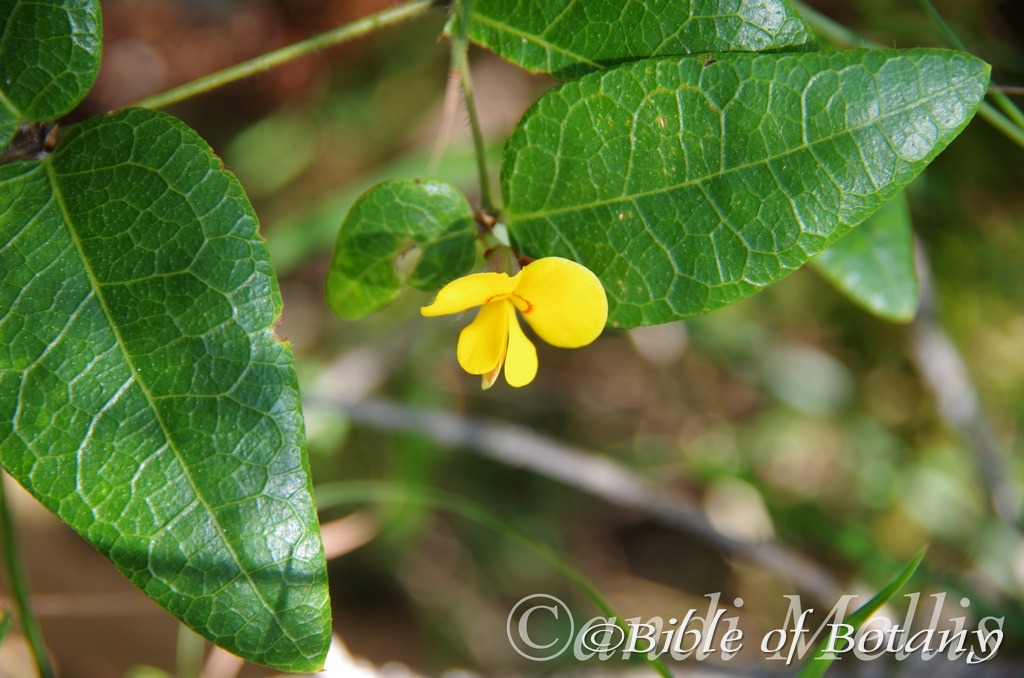
Morgan’s Camp Trail Fortis Creek National Park NSW

Morgan’s Camp Trail Fortis Creek National Park NSW
Platylobium formosum
Classification:
Unranked: Eudicots
Unranked: Rosids
Order: Fabales
Family: Fabaceae
Subfamily: Faboideae
Tribe: Mirbeloids
Genus: From Platy, which is Ancient Greek for flat and broad and Lobos/Lob?, which is Ancient Greek for a lobe or Lobus/Legula, which is Latin for an ear lobe. It most likely refers to standard petals, which appear to be flat, erect ear lobes.
Specie: From Formosum, which is Latin for beautiful or vivacious. It refers to the species being the most beautiful in the genus.
Variety: Platylobium formosum var. cordifolium. From Kord?tum, which is Ancient Greek or Cord?tum which is Latin for heart shape and Folium, which is Latin for foliage. It refers to leaves, phyllodes or fronds which are heart shape.
Variety: Platylobium formosum var. formosum. From Formosum, which is Latin for beautiful or vivacious. It refers to the species being the most beautiful in the genus.
Variety: Platylobium formosum var. parviflorum. From Paûros, which is Ancient Greek or Parvum which is Latin for small and Fl?ris which is Latin for a flower or Fl?s from the Roman goddess of spring and flowers. It refers to flowers, which are somewhat smaller when compared to other species in the genus.
Variety: Platylobium formosum var. typicum. From Formosum, which is Latin for beautiful or vivacious. It refers to the species being the most beautiful in the genus.
Common Name: Handsome Flat Pea.
Distribution:
Platylobium formosum var. cordifolium is found in two distinct disjunct populations east of Port Campbell and Appollo and east of Melbourne to Tarralgon in southern Victoria.
Platylobium formosum var. formosum is found south from Tewantin in south eastern coastal Queensland to the Yarra Ranges in south eastern Victoria. It occurs on and east of the Great Dividing Range to the coast. There is an isolated population in far northeastern Tasmania.
Platylobium formosum var. parviflorum is found south from the MacLeay Valley in central coastal New South Wales to Wilson’s Promontory in south eastern Victoria and along the north coast and eastern coast of Tasmania.
Platylobium formosum var. typicum is found south from Tewantin in south eastern coastal Queensland to the Yarra Ranges in south eastern Victoria. It occurs on and east of the Great Dividing Range to the coast. There is an isolated population in far northeastern Tasmania.
https://avh.ala.org.au/occurrences/search?taxa=Platylobium+formosum#tab_mapView
Habitat Aspect Climate:
Platylobium formosum prefers light dappled shade to full sun. It grows in various types of heaths adjacent to dry Rainforests, open Eucalyptus forests, open coastal woodlands or on exposed headlands. The altitude ranges from 8 meters to 592 meters ASL.
The temperatures range from minus 5 degree in August to 36 degrees in January.
The rainfalls range from lows of 900mm to an average of 2000mm per annum on the mainland however Tasmanian plants are found in lower rainfall areas of that range from lows of 600mm to an average of 800mm per annum.
Soil Requirements:
Platylobium formosum prefers light sandy clays to medium clays often with copious quantities of forest leaf litter. The soils are usually derived from decomposed sandstones, shale, granite, laterites or accumulated peaty beach sands. The soils pH ranges from 4.5pH to 6pH. It does not tolerate water logged soils. Non saline soils to moderately saline soils are tolerated.
Height & Spread:
Wild Plants: 0.5m to 2.5mm by 1m to 3m.
Characteristics:
Platylobium formosum’s grows as an erect to prostrate medium shrub with glabrous, grey stems. The branchlets are mid olive-brown to olive-green and glabrous or scabrous or moderately covered in long, white villous hairs.
Platylobium formosum’s opposite, narrow- to broad-ovate leaves measure 10mm to 65mm in length by 15mm to 20mm in width. The 2 lanceolate stipules measure 2mm to 5mm in length and are persistent. The petioles are glabrous to moderately covered in white villous hairs or scabrous and measure 1mm to 2.5mm in length. The bases are cordate, while the apexes are mucronate or have a stiff pungent spine. The discolourous laminas are deep green and glabrous or scabrous on the upper laminas while the lower laminas are paler and glabrous or sparsely covered in white villous hairs. The laminas recurve upwards from the mid vein to the margins while the margins are entire. The mid vein and reticulated lateral veins are slightly prominent on the upper lamina and are visible on the lower lamina.
The inflorescence of Platylobium formosum are born in singularly, in pairs or rarely in threes or fours from the leaf axils. The pedicels are moderately covered in white villous hairs and measure 10mm to 30mm in length. The bracts measure 3mm to 4.5mm in length while the bracteoles measure 3mm to 5mm in length.
The calyxes measure 5mm to 10mm in length including the broad spathulate lobes. The calyxes are glabrous to sparsely covered bin white villous hairs. The corolla is pale yellow to The corolla is glabrous and measures 8mm to 15mm in length. The standard petals are bright yellow to orange-yellow, often with a reddish splash near the base that often extends to the base of the wings and keel. The standards measure 10mm to 15mm in ripe. The calyx and style are persistent on the ripe fruits. The pods are sparsely to densely covered in white villous hairs.
Confusing Subspecie varieties:
height by 15mm to 22mm in width. The narrow wings are bright yellow to orange-yellow and measure 8mm to 15mm in length by 5mm to 10mm in width. The reddish to purplish keels measure 8mm to 15mm in length by 2mm to 3mm in width.
The stamens and style are inserted in the keel. The stipitate ovary is glabrous or sparsely covered in white hirsute hairs and has 8-ovules. The flowers appear from September to November.
Platylobium formosum’s fruits are broad flat pods. The pods measure 20mm to 40mm in length by 10mm to 16mm in width. The pale green pods turn deep grey-brown when
Platylobium formosum subsp. formosum’s leaflets are usually ovate with the length being less than twice the breadth. The bases are cordate. The ovaries are sparsely to moderately covered in white pulverulent hairs on sutures and on valves. The seed pods are sparsely to moderately covered in white pulverulent hairs on sutures and retaining some pubescence on valves.
Platylobium formosum subsp. parviflorum’s leaflets usually narrow ovate with the length being greater than twice the breadth. The bases are rounded or truncate. The ovaries are glabrous or sparsely covered in white puberulent hairs on sutures. The seed pods are glabrous.
Wildlife:
Platylobium formosum’s wildlife is unknown to the author.
Cultivation:
Platylobium formosum is a tremendous accent plant with its soft large mid to deep green broad foliage. It always looks fresh especially where a little water is added during the dry season or ground moisture is retained. It is most suitable for small, medium and large gardens close to the coast or high in the mountains in warm temperate to sub-tropical gardens. It does well beneath tall trees including Tristania and Eucalyptus. Keep it away from other similar growing prostrate plants as it can dominate smaller weaker plants under ideal conditions. The flowers are produced in profusion which makes them a beautiful addition to the garden.
It is great in medium rockeries and heath like settings as a fill in plant. Here they can be planted in small groups of 2 or 3 or as a standalone plant to create a harsh barren look with other arid plants. If It is surrounded by shorter plants with fine or large foliage that are deep green or pale green then year round contrast can be created with a strong accent in the center of the bed. Deep red, orange or purple flowers will also create that dominate affect at the center giving height and strength to the bed whether It is in flower or not in flower the dominance in foliage will stand unchallenged.
Cultivated plants vary in size depending on the form. Seeds or young plants should be purchased with the knowledge of the form the parent plants belong. It will grow from 0.6 meters to 2.5metrs in height to1 meter to 3 meters in diameter when grown in an open sunny position but can be lightly pruned to maintain a smaller bushier shrub.
Propagation:
Seeds:
Platylobium formosum seeds are best collected as soon as the pods turn brown and the first pods on the shrubs begin to split. The fruits can be harvested quite easily but be aware of the spines.
The seeds are best treated by placing them in hot not boiling water and allowing them to soak for 10 to 16 hours prior to sowing.
Sow the treated seeds directly into a seed raising mix, keeping them moist not wet. Place the trays in full sun or beneath 20mm shade cloth. When the seedlings are 20mm to 25mm tall, prick them out and plant them into 50mm native tubes using a good organic mix.
As the seedlings roots reach the bottom of the tubes plant them out into their permanent position. Do not delay and keep moist not wet until established.
Fertilize using seaweed, fish emulsion or organic chicken pellets soaked in water on an alternate basis. Fertilize every two months until the plants are established then twice annually in early September or March to maintain better health, vitality and flowering.
Further Comments from Readers:
“Hi reader, it seems you use The Bible of Botany a lot. That’s great as we have great pleasure in bringing it to you! It’s a little awkward for us to ask, but our first aim is to purchase land approximately 1,600 hectares to link several parcels of N.P. into one at The Pinnacles NSW Australia, but we need your help. We’re not salespeople. We’re amateur botanists who have dedicated over 30 years to saving the environment in a practical way. We depend on donations to reach our goal. If you donate just $5, the price of your coffee this Sunday, We can help to keep the planet alive in a real way and continue to bring you regular updates and features on Australian plants all in one Botanical Bible. Any support is greatly appreciated. Thank you.”
In the spirit of reconciliation we acknowledge the Bundjalung, Gumbaynggirr and Yaegl and all aboriginal nations throughout Australia and their connections to land, sea and community. We pay our respect to their Elders past, present and future for the pleasures we have gained.

The Pinnacles NSW
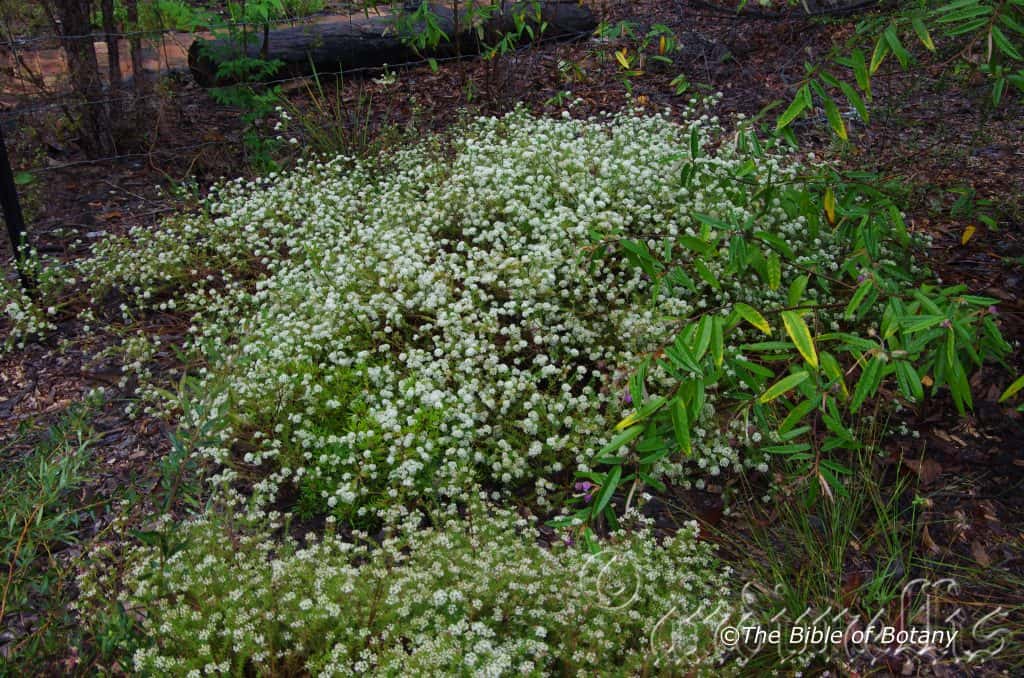
Author’s Garden The Pinnacles NSW

The Pinnacles NSW

Author’s Garden The Pinnacles NSW

Author’s Garden The Pinnacles NSW
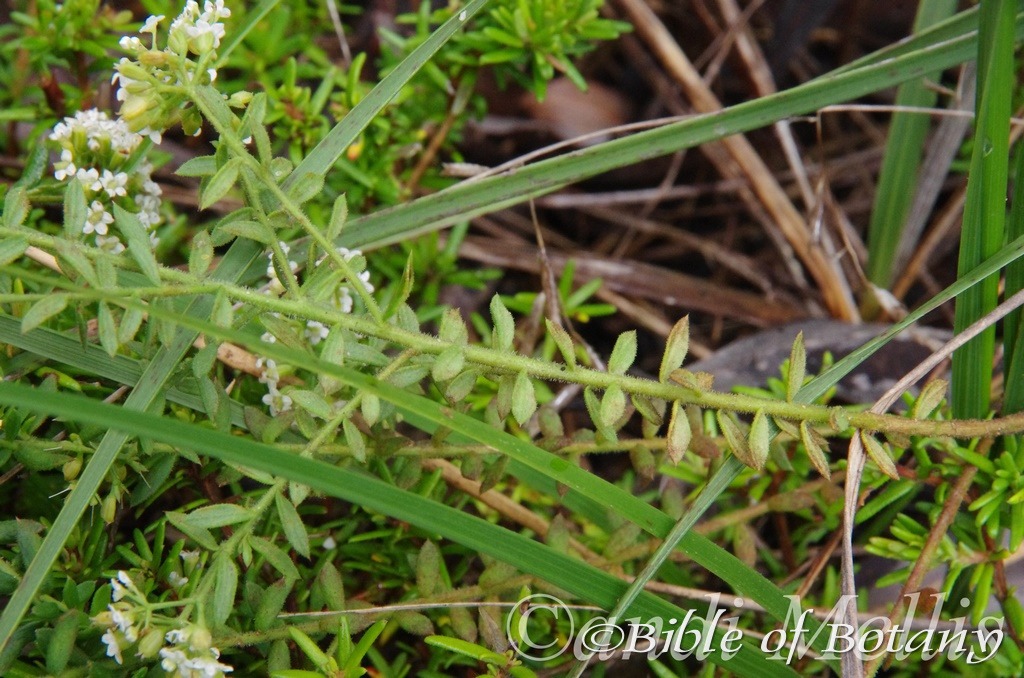
Author’s Garden The Pinnacles NSW
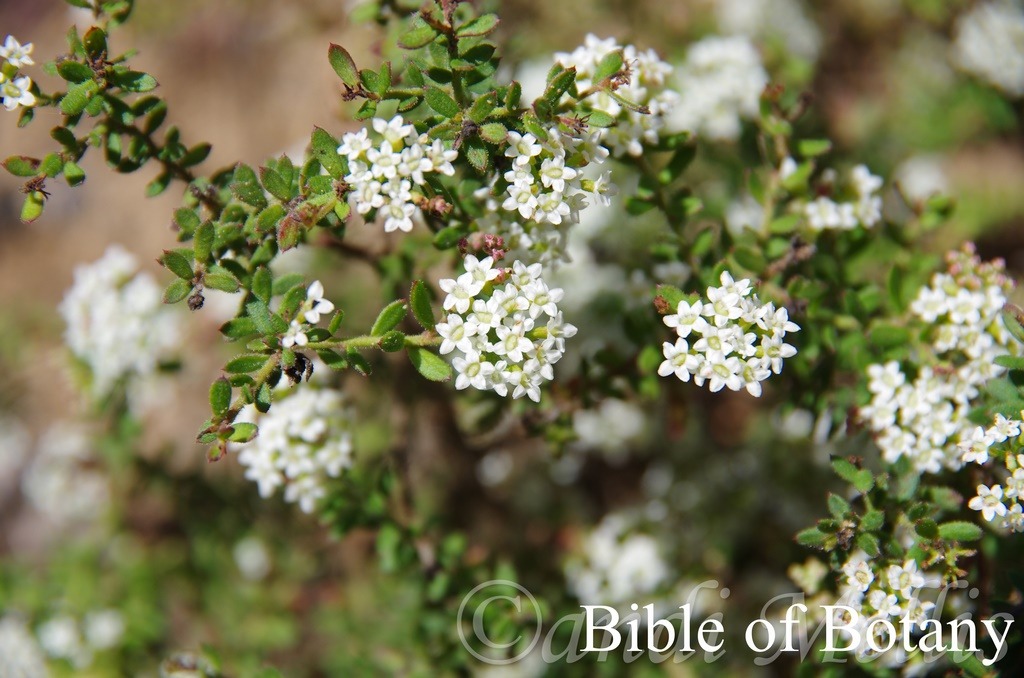
Author’s Garden The Pinnacles NSW

Author’s Garden The Pinnacles NSW
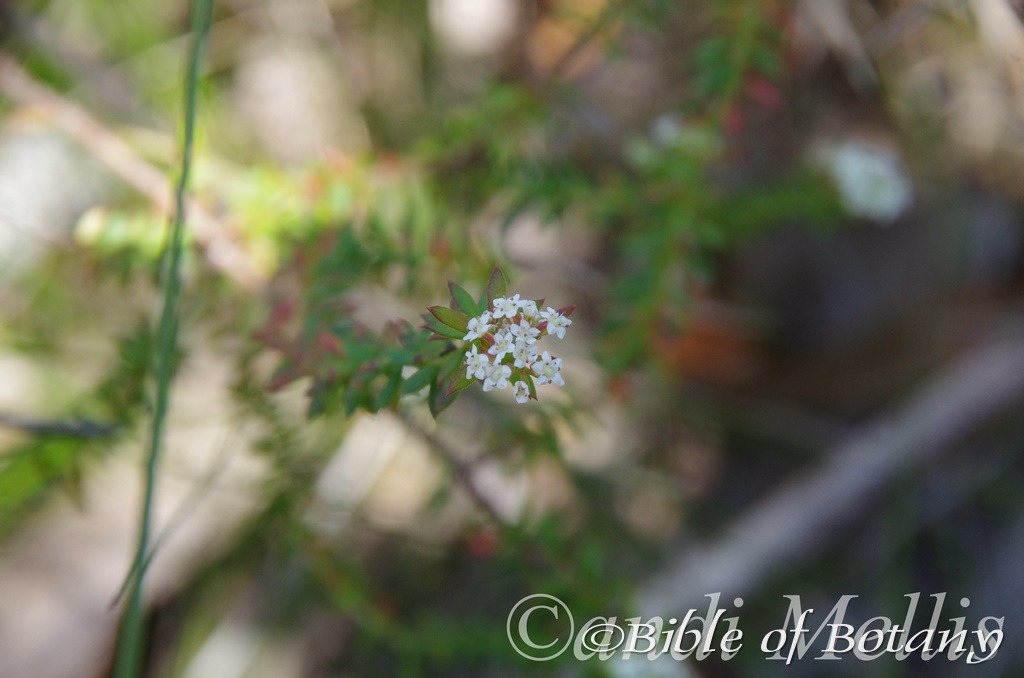

Banyabba Creek National Park NSW
Platysace ericoides
Classification:
Unranked: Eudicots
Unranked: Asterids
Order: Apiales
Family: Apiaceae
Genus: From Platy, which is Ancient Greek for flat and broad and Sakos, which is Ancient Greek for a shield. It refers to fruits, which are distinctly three dimensional shield shape.
Specie: From Erica, which is Latin for heath and Eîdos/Oides, which is Ancient Greek for alike or similar to. It refers to plants, which have foliage similar to the exotic Erica genus.
Sub species:
Common Name:
Distribution:
Platysace ericoides is found in 2 disjunct populations on the western plains, on and east of the Great Dividing Range. It is found south from Nattai in central eastern Queensland to Nowra in central eastern New South Wales.
The southern population is found east of the Great Dividing Range from Orbost in north eastern Victoria to Woodside in south eastern Victoria.
https://avh.ala.org.au/occurrences/search?taxa=Platysace+ericoides#tab_mapView
Habitat Aspect Climate:
Platysace ericoides prefers light dappled shade to full sun. It grows in coastal heaths, scrubby heath or sclerophyll woodlands. The altitude ranges from 5 meters to 1300 meters ASL.
The temperatures range from minus 4 degree in August to 38 degrees in January.
The rainfalls range from lows of 500mm to an average of 2000mm.
Soil Requirements:
Platysace ericoides prefers to grow on coarse sands, light sandy clays to medium fatty or stony clays often with copious quantities of leaf litter. Many of the soils are skeletal sandy loams that are close to the parent rocks. The soils are usually derived from decomposed granite, sandstones, brown basalts, black basalts, shale or metamorphic rocks. The soils pH ranges from 5pH to 6pH. It does not tolerate water logged soils. Non saline soils to moderately saline soils are tolerated.
Height & Spread:
Wild Plants: 0.3m to 0.5mm by 0.3m to 0.75m.
Characteristics:
Platysace ericoides’s grows as a pale green to mid grass-green scabrous or sparsely covered in white hispid hairs. The stems are semi prostrate.
Platysace ericoides’s alternate, semi erect to divaricate succulent, linear or elliptic-oblong to oblong leaves measure 2.8mm to 20mm in length by 0.5mm to 2mm in diameter. The petioles measure 0mm to 0.6mm in length. The bases are truncate may taper slightly becoming attenuate while the apexes are mucronate. The concolourous laminas are pale grass-green to mid grass-green with or without a maroon tinge and are sparsely covered in short, white, hispid hairs. The laminas are flat while the margins are entire. The mid vein is not prominent on either lamina and is faintly visible on both laminas often as a slight furrow near the base on the upper lamina.
The inflorescence is born on terminal compound umbels. The umbels measure 15mm to 20mm in diameter. The peduncle measures 2mm to 12mm in length. The 3 to 6 rays measure 4mm to 7mm in length. The bracts are narrow elliptic and measure 2mm to 2.5mmin length while the bracteoles are linear and measure 1.2mm to 1.5mm in length.
The 5 white or at times cream petals are ovate and measure 1mm to 1.6mm in length by 1mm to 1.5mm in width. The 5 exserted filaments are white with deep yellowish-orange anthers. The exserted style is white. The flowers appear from August to April.
Platysace ericoides’s fruits are small flattened or obloidal mericarps. The mericarps measure 1.5mm to 2.3mm in length by 1.6mm to 2.1mm in width. The pale green persistent calyxes turn grey-brown when ripe and are often furrowed at the rib, broad at the mericarps junction.
Wildlife:
Platysace ericoides’ supply a good yield of nectar for small nectar feeding insects and pollen flies.
Cultivation:
Platysace ericoides is an unusual annual with masses of minute white flowers for the moist sunny to semi shaded position in the garden. It always looks fresh especially where a little water is added during the dry season or where ground moisture is retained. It is most suitable for small, medium and large gardens close to the coast or high in the mountains in warm temperate or sub-tropical gardens. It does well where it can be mass planted and treated as an annual amongst other annuals with deep red or deep purple-blue flowers and broad leaves. The flowers are produced in profusion over a very long period which makes them a beautiful addition to the garden. The flowering can be extended by nipping spent flower heads prior to the plants setting seed.
It is great in medium rockeries as a fill in plant. Here it can be planted in small groups of 5 or 6 or tucked into a barren section for quick growth. If it is surrounded by taller plants with coarse foliage that are deep green then a summer contrast can be created with a strong accent in the center of the bed. Deep red or orange flowers will also create that dominate affect at the center giving height and strength to the bed whether It is in flower or not in flower the dominance in foliage will stand unchallenged.
Plants should be replaced every 12 months to maintain vigour and all year uninterrupted beauty.
Propagation:
Seeds:
Platysace ericoides seeds can be sown directly into a seed raising mix, keeping them moist not wet. Place the trays beneath 30mm shade cloth and keep moist not wet. When the seedlings are 20mm to 25mm tall, prick them out and plant them into 50mm native tubes using a good organic mix.
As the seedlings roots reach the bottom of the tubes plant them out into their permanent position. Keep seedlings moist and allow them to dry out between watering until established.
Fertilize using seaweed, fish emulsion or organic chicken pellets soaked in water on an alternate basis. Fertilize every two months until the plants are established then twice annually in early September or March to maintain better health, vitality and flowering.
Further Comments from Readers:
“Hi reader, it seems you use The Bible of Botany a lot. That’s great as we have great pleasure in bringing it to you! It’s a little awkward for us to ask, but our first aim is to purchase land approximately 1,600 hectares to link several parcels of N.P. into one at The Pinnacles NSW Australia, but we need your help. We’re not salespeople. We’re amateur botanists who have dedicated over 30 years to saving the environment in a practical way. We depend on donations to reach our goal. If you donate just $5, the price of your coffee this Sunday, We can help to keep the planet alive in a real way and continue to bring you regular updates and features on Australian plants all in one Botanical Bible. Any support is greatly appreciated. Thank you.”
In the spirit of reconciliation we acknowledge the Bundjalung, Gumbaynggirr and Yaegl and all aboriginal nations throughout Australia and their connections to land, sea and community. We pay our respect to their Elders past, present and future for the pleasures we have gained.

Banyabba National Park NSW

Banyabba National Park NSW
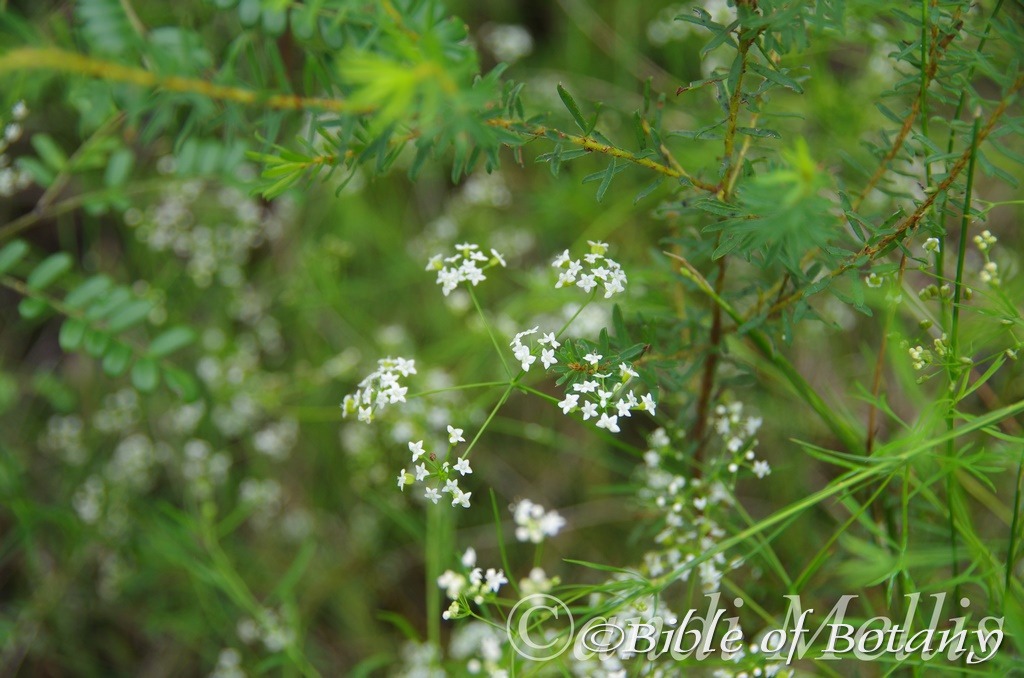
Banyabba National Park NSW
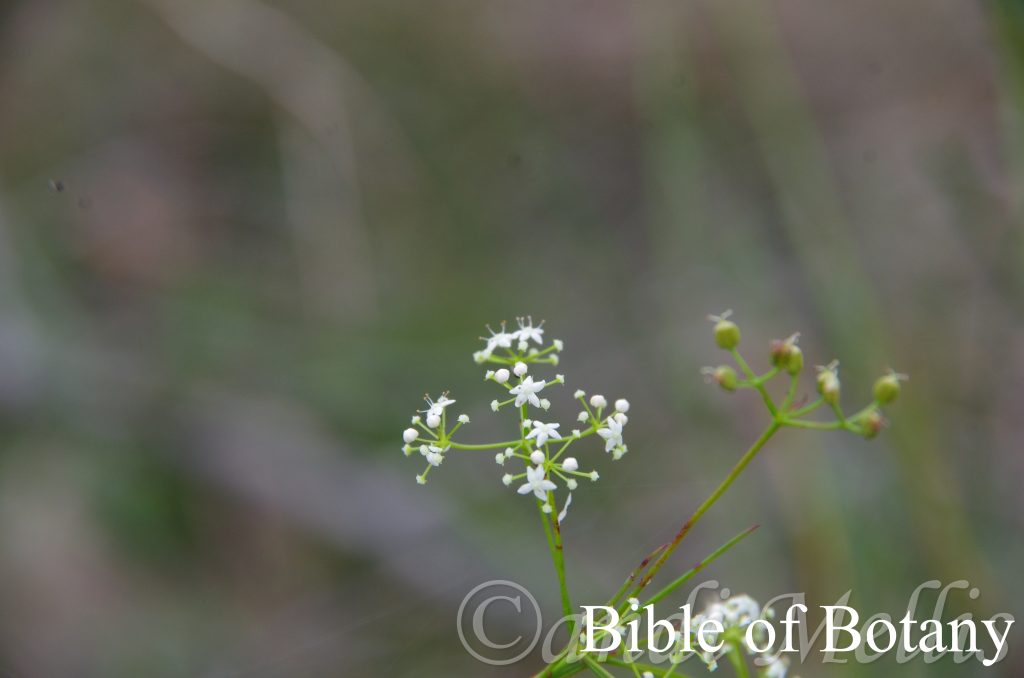
Banyabba National Park NSW
Platysace heterophylla
Classification:
Unranked: Eudicots
Unranked: Asterids
Order: Apiales
Family: Apiaceae
Genus: From Platy, which is Ancient Greek for flat and broad and Sakos, which is Ancient Greek for a shield. It refers to fruits, which are distinctly three dimensional shield shape.
Specie: From Heteros, which is Ancient Greek for other or different and Phullon/Phýllon, which is Ancient Greek for a leaf. It refers to leaves, which are of different sizes and or shapes often on the same plant or in the same population.
Sub species:
Common Name: Slender Platysace or Corn Parsley.
Distribution:
Platysace heterophylla is found in several disjunct populations south from Fraser Island in south eastern coastal Queensland to Marble Range on southern Eyre Peninsular in southern South Australia. It is mainly found within 50 kilometres from the coast except for an isolated population at Coreen on the western slopes in far southern central New South Wales.
https://avh.ala.org.au/occurrences/search?taxa=Platysace+heterophylla#tab_mapView
Habitat Aspect Climate:
Platysace heterophylla prefers light dappled shade to full sun. It grows in moist coastal or near coastal heaths usually adjacent to swampy situations. The altitude ranges from 5 meters to 900 meters ASL.
The temperatures range from minus 2 degree in August to 39 degrees in January.
The rainfalls range from lows of 250mm to an average of 2000mm.
Soil Requirements:
Platysace heterophylla prefers to grow on coarse sands, sandy loams or light fatty sandy clays. The soils are usually derived from decomposed sandstones or accumulated beach sands. The soils pH ranges from 5pH to 7pH. It tolerates seasonal water logged soils and prefers the soils to be moist for the remainder of the year. Non saline soils to moderately saline soils are tolerated.
Height & Spread:
Wild Plants: 0.2m to 0.3mm by 0.3m to 0.4m. The plants often self-layer so can cover quite large areas.
Characteristics:
Platysace heterophylla is a weak sub shrub or annual with pale green to mid grass-green scabrous stems, which are rarely sparsely covered in white puberulent hairs. The stems are erect to semi prostrate.
The alternate, semi erect, semi succulent leaves are 3 or rarely 5 fid near the base becoming entire as the plants develop. The linear leaves and lobes measure 5mm to 40mm in length by 0.2mm to 0.8mm in width. The petioles are difficult to distinguish from the laminas. The bases may taper slightly to the stems while the apexes are mucronate. The concolourous laminas are pale grass-green to mid grass-green with or without a maroon tinge and are glabrous to sparsely covered in short, white, puberulent hairs. The laminas are terete while the margins are entire. The mid vein is not prominent on either lamina and is faintly visible on both laminas often as a slight furrow near the base on the upper lamina.
The inflorescence are born on terminal compound umbels. The lax heads measure 6mm to 25mm in diameter. The peduncle measures 15mm to 35mm in length. The 3 to 5 rays measure 1mm to 9mm in length. The linear bracts measure 0.6mm to 2mmin length while the linear bracteoles are linear and measure 0.6mm to 1.5mm in length.
The 5 white petals are pink in bud are ovate to elliptical and measure 1.5mm to 2mm in length by 1.2mm to 1.8mm in width. The 5 exserted filaments are white with deep yellowish-orange anthers. The exserted style is white. The flowers appear from December to April.
Platysace heterophylla’s fruits are small flattened or obloidal mericarps. The mericarps measure 1mm to 1.3mm in length by 0.7mm to 1.4mm in width. The tuberculate to almost smooth, pale green or purple-maroon mericarps turn brown when ripe and are often furrowed at the rib, broad at the mericarps junction.
Wildlife:
Platysace heterophylla supply a good yield of nectar for small nectar feeding insects and pollen flies.
Cultivation:
Platysace heterophylla is an unusual annual with masses of minute white flowers for the moist sunny to semi shaded position in the garden. It always looks fresh especially where a little water is added during the dry season or where ground moisture is retained. It is most suitable for small, medium and large gardens close to the coast or high in the mountains in warm temperate or sub-tropical gardens. It does well where it can be mass planted and treated as an annual amongst other annuals with deep red or deep purple-blue flowers and broad leaves. The flowers are produced in profusion over a very long period which makes them a beautiful addition to the garden. The flowering can be extended by nipping spent flower heads prior to the plants setting seed.
It is great in medium rockeries as a fill in plant. Here it can be planted in small groups of 5 or 6 or tucked into a barren section for quick growth. If it is surrounded by taller plants with coarse foliage that are deep green then a summer contrast can be created with a strong accent in the center of the bed. Deep red or orange flowers will also create that dominate affect at the center giving height and strength to the bed whether It is in flower or not in flower the dominance in foliage will stand unchallenged.
Plants should be replaced every 12 months to maintain vigour and all year uninterrupted beauty.
Propagation:
Seeds:
Platysace heterophylla seeds can be sown directly into a seed raising mix, keeping them moist not wet. Place the trays beneath 30mm shade cloth and keep moist not wet. When the seedlings are 20mm to 25mm tall, prick them out and plant them into 50mm native tubes using a good organic mix.
As the seedlings roots reach the bottom of the tubes plant them out into their permanent position. Keep seedlings moist and allow them to dry out between watering until established.
Fertilize using seaweed, fish emulsion or organic chicken pellets soaked in water on an alternate basis. Fertilize every two months until the plants are established then twice annually in early September or March to maintain better health, vitality and flowering.
Further Comments from Readers:
“Hi reader, it seems you use The Bible of Botany a lot. That’s great as we have great pleasure in bringing it to you! It’s a little awkward for us to ask, but our first aim is to purchase land approximately 1,600 hectares to link several parcels of N.P. into one at The Pinnacles NSW Australia, but we need your help. We’re not salespeople. We’re amateur botanists who have dedicated over 30 years to saving the environment in a practical way. We depend on donations to reach our goal. If you donate just $5, the price of your coffee this Sunday, We can help to keep the planet alive in a real way and continue to bring you regular updates and features on Australian plants all in one Botanical Bible. Any support is greatly appreciated. Thank you.”
In the spirit of reconciliation we acknowledge the Bundjalung, Gumbaynggirr and Yaegl and all aboriginal nations throughout Australia and their connections to land, sea and community. We pay our respect to their Elders past, present and future for the pleasures we have gained.
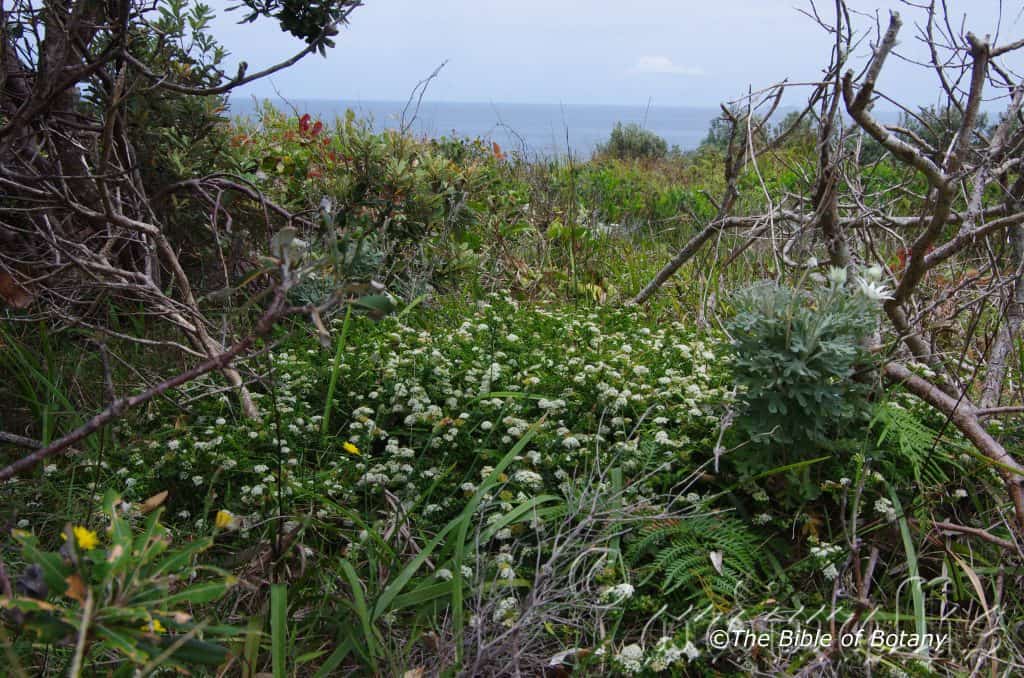
Boorkoom Yuraigir National Park NSW
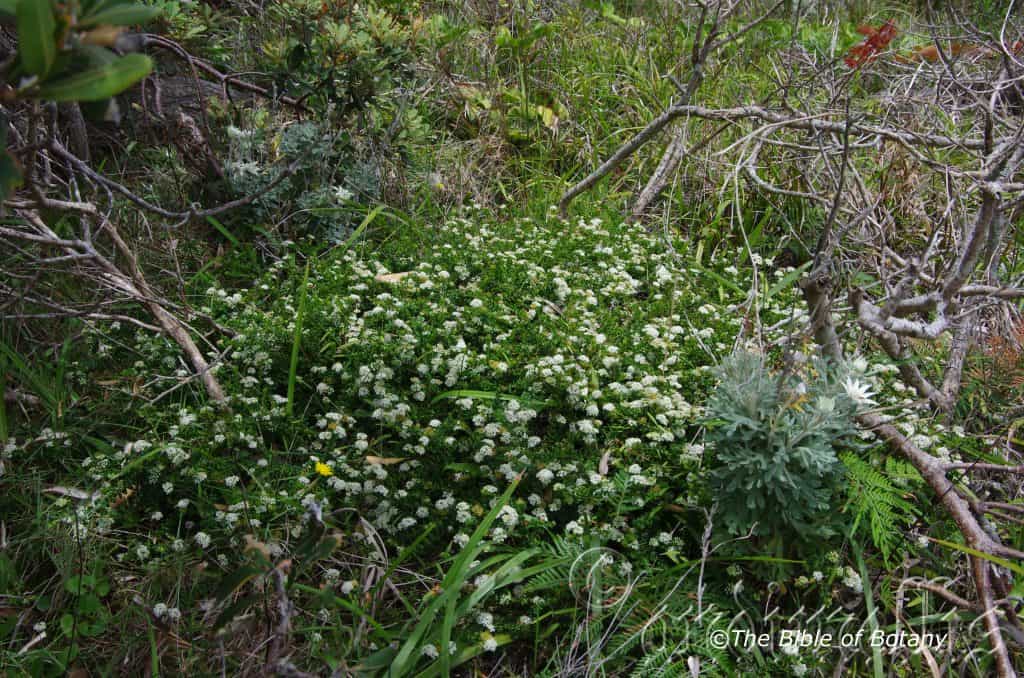
Boorkoom Yuraigir National Park NSW
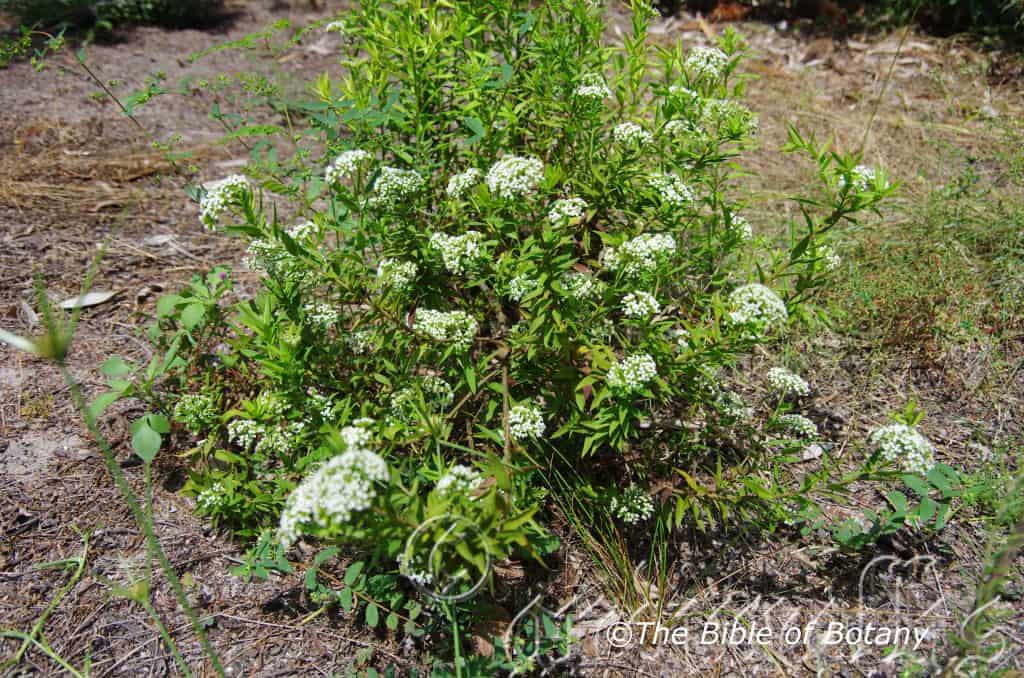
The Pinnacles NSW

North Coast Botanic Gardens NSW

The Pinnacles NSW

The Pinnacles NSW
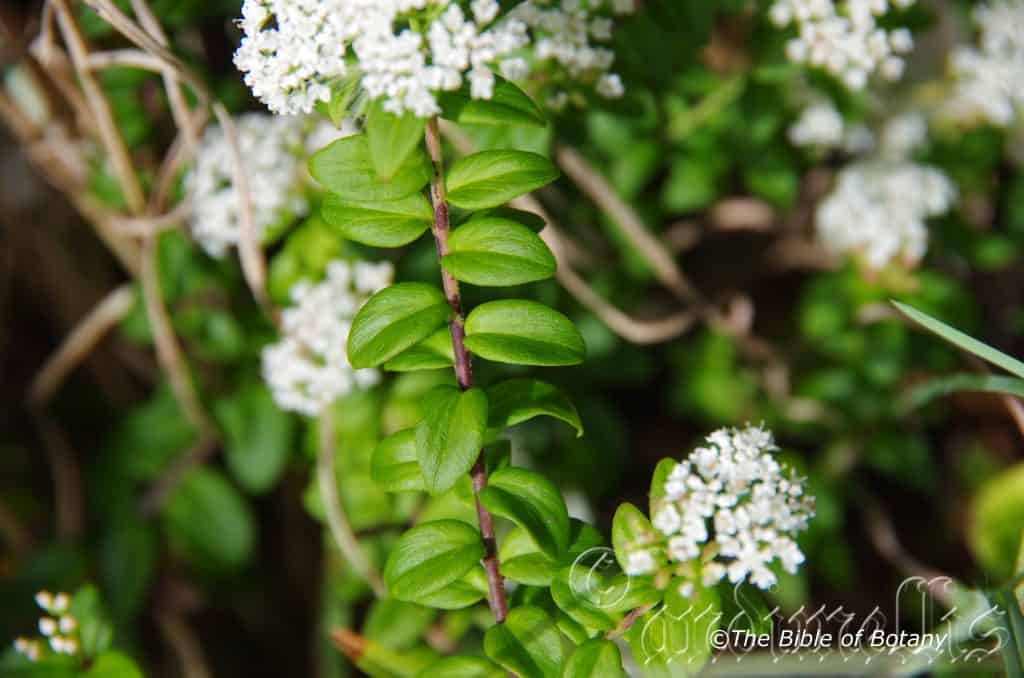
Boorkoom Yuraigir National Park NSW

North Coast Botanic Gardens NSW
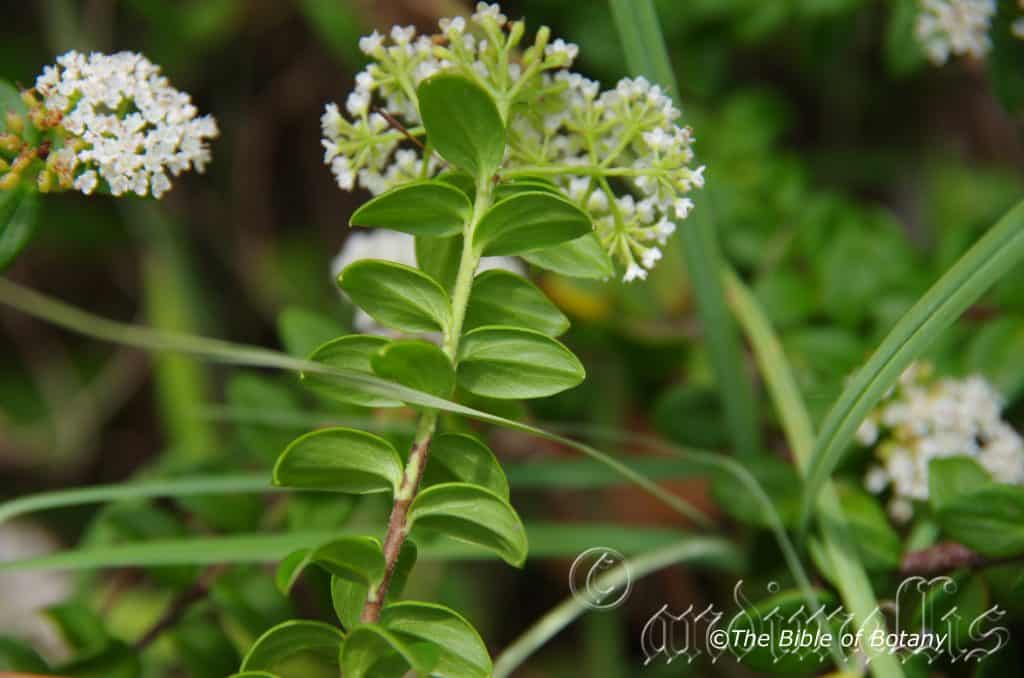
Boorkoom Yuraigir National Park NSW
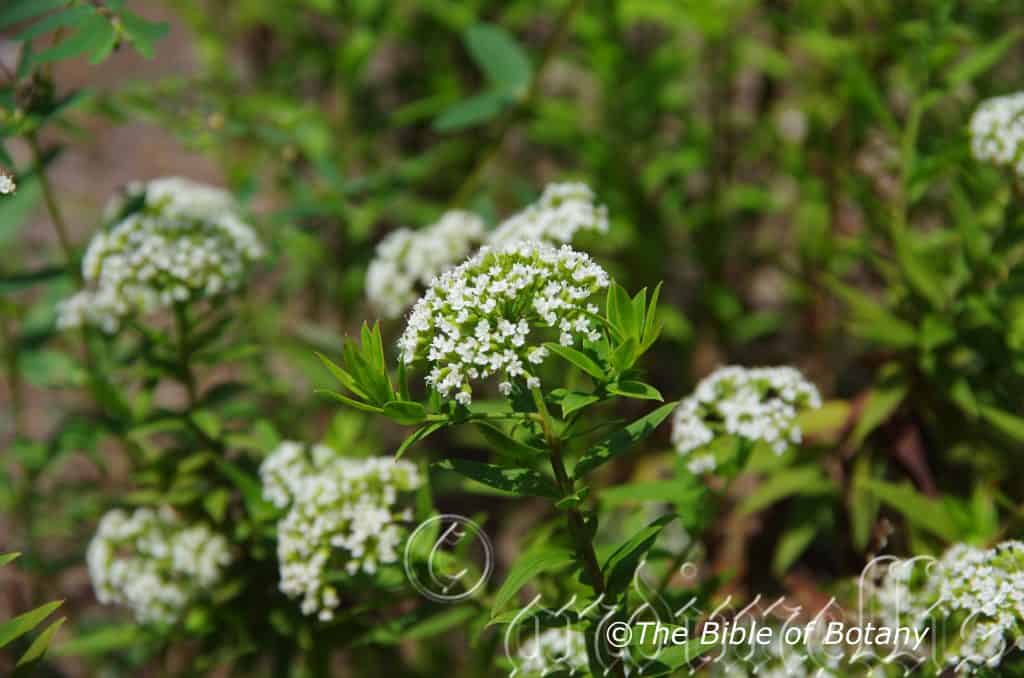
The Pinnacles NSW
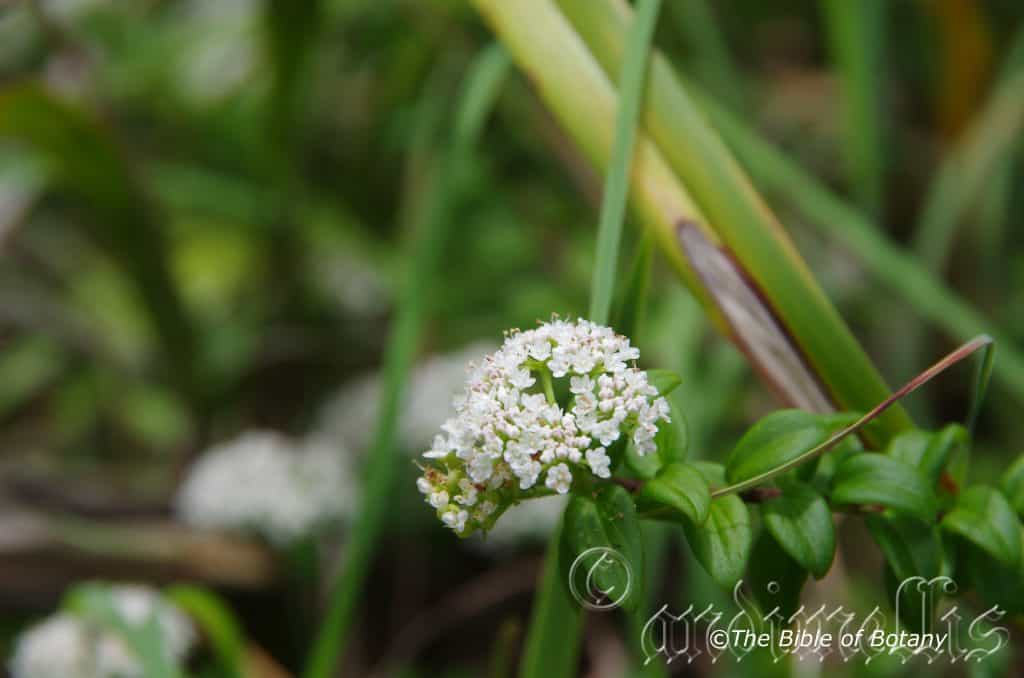

Boorkoom Yuraigir National Park NSW
Platysace lanceolata
Classification:
Unranked: Eudicots
Unranked: Asterids
Order: Apiales
Family: Apiaceae
Genus: From Platy, which is Ancient Greek for flat and broad and Sakos, which is Ancient Greek for a shield. It refers to fruits, which are distinctly three dimensional shield shape.
Specie: From Lancea, which is Latin for a small lance. It usually refers to leaves, which are several times longer than It is wide with one side broader than the other and tapering after the broadest point in the middle.
Sub species:
Common Name: Shrubby Platysace.
Distribution:
Platysace lanceolata is found in a line south and east from Kroombit Tops in central eastern Queensland to Lake Myall, Coonabarabran, Shuttleton, Mount Bingar, Blue Range near the ACT in New South Wales then to Macedon, Barbers Creek, Mount Arapiles and Lutitt Bay in southern coastal Victoria.
https://avh.ala.org.au/occurrences/search?taxa=Platysace+lanceolata#tab_mapView
Habitat Aspect Climate:
Platysace lanceolata prefers light dappled shade to full sun. It grows in coastal heaths and scrubby heaths, in dry, open sclerophyll forests or open woodlands. It is found on the Western Plains, Western Slopes, on and east of the Great Dividing Range to the coast. The altitude ranges from 5 meters to 1300 meters ASL.
The temperatures range from minus 4 degree in August to 38 degrees in January.
The rainfalls range from lows of 250mm to an average of 2000mm.
Soil Requirements:
Platysace lanceolata prefers to grow on coarse sands, fine sands, sandy loams or light fatty sandy clays. The soils are derived from decomposed sandstones or accumulated beach sands. The soils pH ranges from 5pH to 7pH. It tolerates seasonal water logged soils for short periods. Non saline soils to moderately saline soils are tolerated.
Height & Spread:
Wild Plants: 0.6m to 1.5m by 1m to 1.2m.
Characteristics:
Platysace lanceolata is a small perennial shrub or sub shrub with pale green to mid grass-green or purplish stems. The stems are semi prostrate and smooth or rarely sparsely covered in white puberulent hairs.
The alternate, semi erect leaves are narrow elliptical, broad elliptic to ovate or at times roughly circular, or rarely oblanceolate. They measure 10mm to 50mm in length by 3.5mm to 15mm in diameter. The petioles measure 0.5mm to 2mm in length. The bases are cuneate to rounded while the apexes are acute to obtuse. The concolourous laminas are pale grass-green to mid grass-green with or without a maroon tinge and are glabrous to sparsely covered in short, white, puberulent hairs. The laminas are usually flat, and slightly asymmetrical and straight or decurve slightly at the apexes while the margins are entire. The mid vein and roughly parallel lateral veins are slightly prominent on the upper lamina and are faintly visible on the lower lamina.
The inflorescence are born on terminal compound umbels. The lax heads measure 15mm to 50mm in diameter. The peduncle measures 5mm to 30mm in length. The 3 to 11 rays measure 1mm to 9mm in length. The linear to narrow linear bracts measure 2mm to 7mm in length while the linear bracteoles are linear and measure 1.3mm to 5mm in length.
The 5 white petals are cream in bud are broad elliptical and measure 1.5mm to 2mm in length by 1.2mm to 1.8mm in width. The 5 exserted filaments are white with deep pinkish-purple anthers. The exserted style is white. The flowers appear from September to April.
The fruits are small flattened obloidal mericarps. The mericarps measure 1.5mm to 2mm in length by 1.5mm to 2.1mm in width. The tuberculate, pale green or purple-maroon mericarps turn brown when ripe and are often furrowed at the rib, broad at the mericarps junction.
Wildlife:
Platysace lanceolata supply a good yield of nectar for small nectar feeding insects and pollen flies.
Cultivation:
Platysace lanceolata is an unusual perennial with masses of minute white flowers for the moist sunny to dappled, shaded position in the garden. It always looks fresh especially where a little water is added during the dry season or where ground moisture is retained. It is most suitable for small, medium and large gardens close to the coast or high in the mountains in warm temperate or sub-tropical bush, heath or formal British type gardens. It does well where it can be mass planted and treated as an annual amongst other annuals with deep red or deep purple-blue flowers and broad leaves. The flowers are produced in profusion over a very long period which makes them a beautiful addition to the garden. The flowering can be extended by nipping spent flower heads prior to the plants setting seed.
It is great in medium rockeries as a fill in plant. Here it can be planted in small groups of 2 or 3 tucked into a barren section to give good coverage quickly. If it is surrounded by smaller plants with coarse foliage that are deep green then a summer contrast can be created with a strong accent in the center of the bed. Deep red or orange flowers will also create that dominate affect at the center giving height and strength to the bed whether It is in flower or not in flower the dominance in foliage will stand unchallenged.
Plants should be replaced every 12 months to maintain vigour and all year uninterrupted beauty.
Propagation:
Seeds:
Platysace lanceolata seeds can be sown directly into a seed raising mix, keeping them moist not wet. Place the trays beneath 30mm shade cloth and keep moist not wet. When the seedlings are 20mm to 25mm tall, prick them out and plant them into 50mm native tubes using a good organic mix.
As the seedlings roots reach the bottom of the tubes plant them out into their permanent position. Keep seedlings moist and allow them to dry out between watering until established.
Fertilize using seaweed, fish emulsion or organic chicken pellets soaked in water on an alternate basis. Fertilize every two months until the plants are established then twice annually in early September or March to maintain better health, vitality and flowering.
Further Comments from Readers:
“Hi reader, it seems you use The Bible of Botany a lot. That’s great as we have great pleasure in bringing it to you! It’s a little awkward for us to ask, but our first aim is to purchase land approximately 1,600 hectares to link several parcels of N.P. into one at The Pinnacles NSW Australia, but we need your help. We’re not salespeople. We’re amateur botanists who have dedicated over 30 years to saving the environment in a practical way. We depend on donations to reach our goal. If you donate just $5, the price of your coffee this Sunday, We can help to keep the planet alive in a real way and continue to bring you regular updates and features on Australian plants all in one Botanical Bible. Any support is greatly appreciated. Thank you.”
In the spirit of reconciliation we acknowledge the Bundjalung, Gumbaynggirr and Yaegl and all aboriginal nations throughout Australia and their connections to land, sea and community. We pay our respect to their Elders past, present and future for the pleasures we have gained.
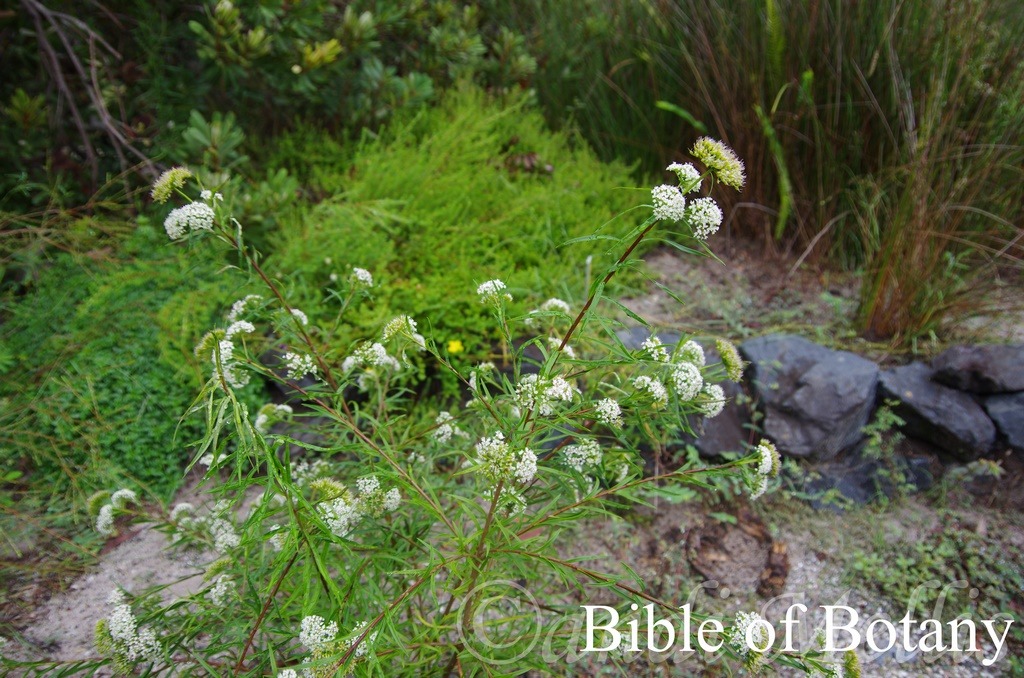
Fortis Creek National Park NSW
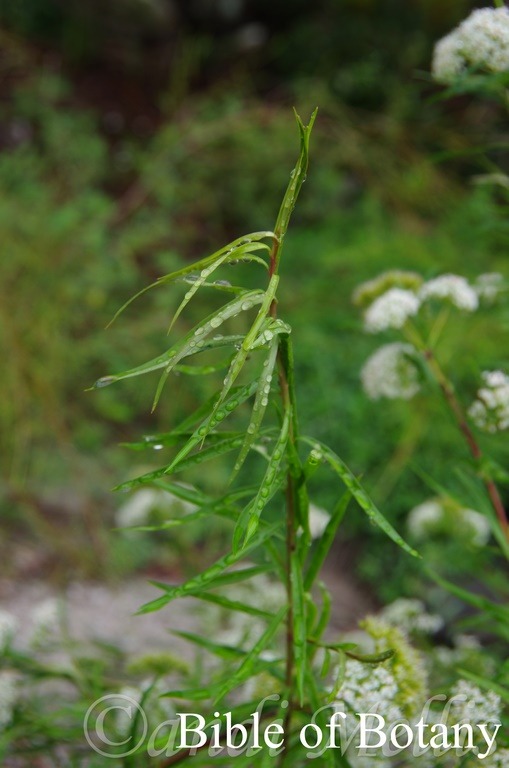
Fortis Creek National Park NSW

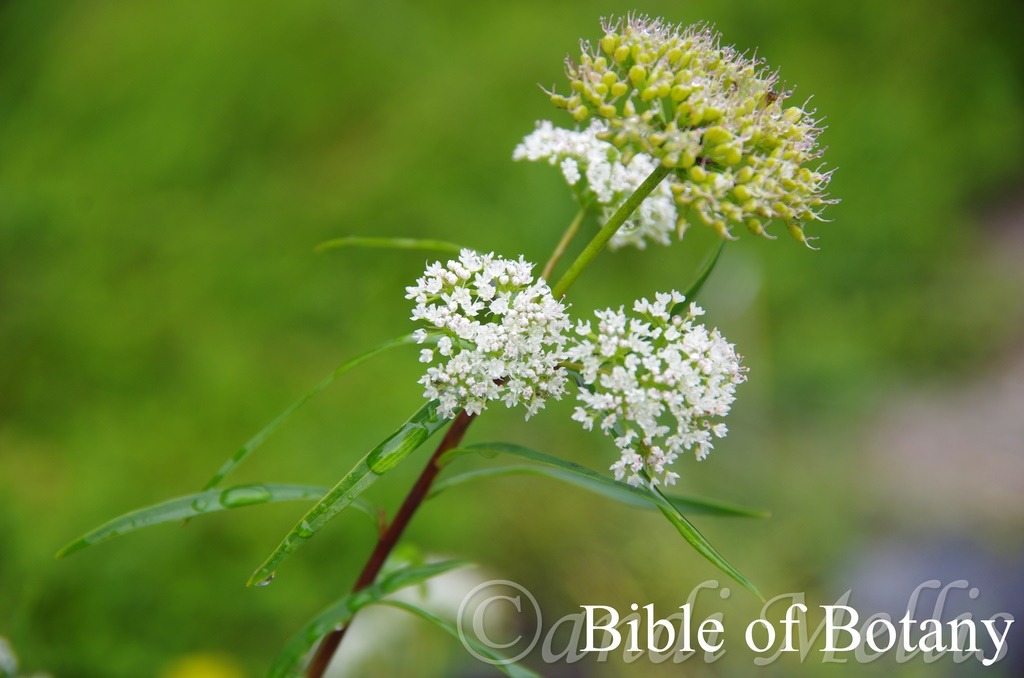
Fortis Creek National Park NSW
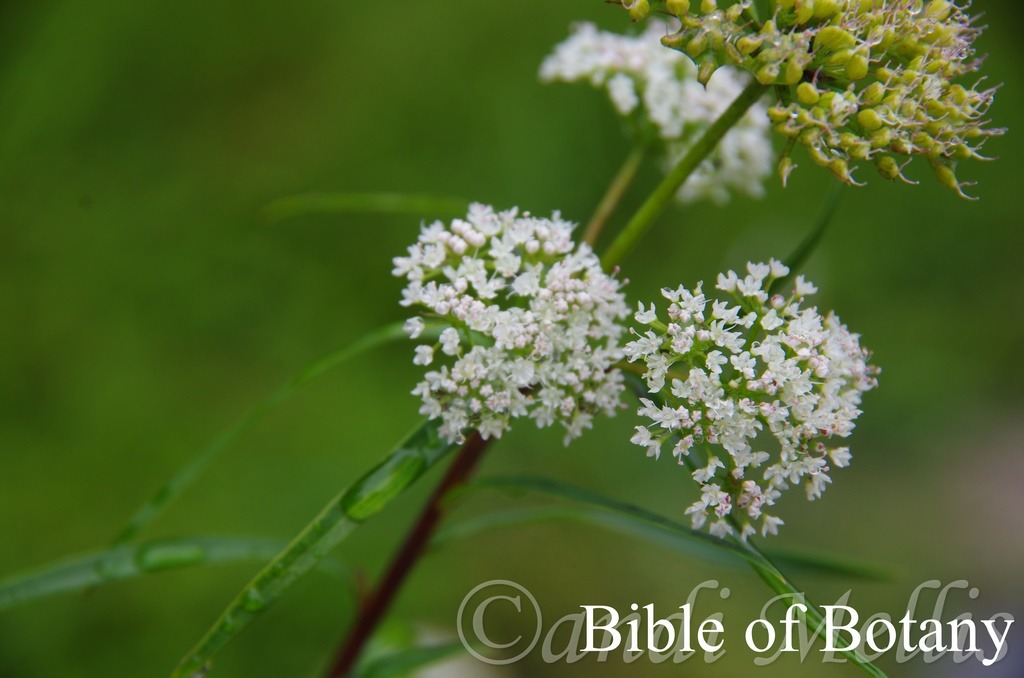
Fortis Creek National Park NSW
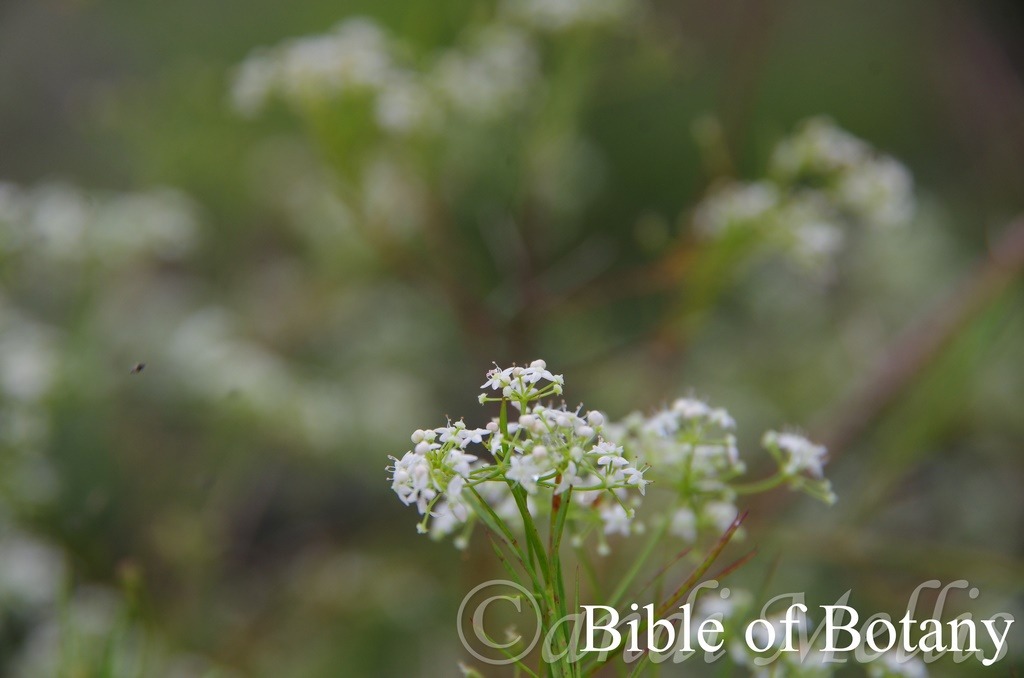
Fortis Creek National Park NSW

Fortis Creek National Park NSW
Platysace linearifolia
Classification:
Unranked: Eudicots
Unranked: Asterids
Order: Apiales
Family: Apiaceae
Genus: From Platy, which is Ancient Greek for flat and broad and Sakos, which is Ancient Greek for a shield. It refers to fruits, which are distinctly three dimensional shield shape.
Specie: From Linearis, which is Latin for straight lines and Phúllon (???????), which is Ancient Greek for a leaf. It refers to, leaves which are narrow and where the veins appear in straight parallel lines.
Sub species:
Common Name: Stephenson’s Platysace.
Distribution:
Platysace linearifolia is found east and south of a line from the Pioneer River in central, coastal Queensland south to Dubbo, then south east Nerriga and Bream point in southern New South Wales.
https://avh.ala.org.au/occurrences/search?taxa=Platysace+slinearifolia#tab_mapView
Habitat Aspect Climate:
Platysace linearifolia prefers light dappled shade to full sun. It grows in dry sclerophyll forests or heaths close to the coast. The altitude ranges from 10 meters to 1200 meters ASL.
The temperatures range from mius 4 degrees in August to 40 degrees in January.
The rainfalls range from lows of 600mm to an average of 1600mm.
Soil Requirements:
Platysace linearifolia prefers to grow on coarse sands, fine sands to sandy loams. The soils are often skeletal sands close to the parent rocks. The soils are usually derived from decomposed sandstones, granites or at times accumulated beach sands. The soils pH ranges from 5pH to 7pH. It does not tolerate water logged soils. Non saline soils to moderately saline soils are tolerated.
Height & Spread:
Wild Plants: 0.4m to 1.5mm by 0.5m to 1.5m.
Characteristics:
Platysace linearifolia is a small erect or spreading perennial shrub or sub shrub with mid grass-green, smooth glabrous stems.
The alternate, undivided, narrow linear to subulate leaves measure 10mm to 35mm length by 0.5mm to 3mm in width. The terete petioles measure 0.5mm to 1.5mm in length. The bases gradually taper to the petioles, while the apexes are acute with a short, mucronate tip. The concolourous or slightly discolourous laminas are mid grass-green to deep green and glabrous. The laminas curve slightly upwards from the mid vein to the margins and decurve laxilly from the base to the apex. The margins are entire, while the mid vein is slightly prominent on the lower lamina and is faintly visible from the upper lamina.
The inflorescence is born on a terminal compound umbel that measure 15mm to 22mm in diameter. The erect heads measure 8.5mm to 30mm in diameter. The peduncles measure 15mm to 25mm in length, while the 2 or 3 white ray petals measure 8mm to 10mm in length. The linear bracts measure 3mm to 5mm in length. The linear bracteoles measure 1mm to 3mm in length. The flowers appear from January to May.
Platysace linearifolia’s fruits are small flattened obloidal mericarps. The mericarps measure 1.7mm to 2.5mm in length. The glabrous, somewhat tuberculate surfaces have a narrow groove at the mericarp junction, with very faint ribs. The pale green mericarps reddish-brown when ripe.
Wildlife:
Platysace linearifolia supply a good yielder of nectar for small nectar feeding insects and pollen flies.
Cultivation:
Platysace linearifolia is an unusual annual with masses of minute white flowers for the moist sunny to semi shaded position in the garden. It always looks fresh especially where a little water is added during the dry season or where ground moisture is retained. It is most suitable for small and medium gardens close to the coast or high in the mountains in warm temperate or sub-tropical gardens. It does well where it can be mass planted and treated as an annual amongst other annuals with deep red or deep purple-blue flowers and broad leaves. The flowers are produced in profusion over a very long period which makes it a beautiful addition to the garden. The flowering can be extended by nipping spent flower heads prior to the plants setting seed.
It is great in medium rockeries as a fill in plant or as a border subject. Here it can be planted in small groups of 5 or 6, tucked into a barren section for quick growth or in long rows. If it is backed by taller plants with coarse foliage that are deep green then a summer contrast can be created with a strong accent in the center of the bed. Deep red or orange flowers will also create that dominate affect at the center giving height and strength to the bed whether it is in flower or not in flower the dominance in foliage will stand unchallenged.
Plants should be replaced every two years to maintain vigour and all year uninterrupted beauty.
Propagation:
Seeds:
Platysace linearifolia’s seeds can be sown directly into a seed raising mix, keeping them moist not wet. Place the trays beneath 30% shade cloth and keep moist not wet. When the seedlings are 20mm to 25mm tall, prick them out and plant them into 50mm native tubes using a good organic mix.
As the seedlings roots reach the bottom of the tubes plant them out into their permanent position. Keep seedlings moist and allow them to dry out between watering until established.
Fertilize using seaweed, fish emulsion or organic chicken pellets soaked in water on an alternate basis. Fertilize every two months until the plants are established then twice annually in early September or March to maintain better health, vitality and flowering.
Further Comments from Readers:
“Hi reader, it seems you use The Bible of Botany a lot. That’s great as we have great pleasure in bringing it to you! It’s a little awkward for us to ask, but our first aim is to purchase land approximately 1,600 hectares to link several parcels of N.P. into one at The Pinnacles NSW Australia, but we need your help. We’re not salespeople. We’re amateur botanists who have dedicated over 30 years to saving the environment in a practical way. We depend on donations to reach our goal. If you donate just $5, the price of your coffee this Sunday, We can help to keep the planet alive in a real way and continue to bring you regular updates and features on Australian plants all in one Botanical Bible. Any support is greatly appreciated. Thank you.”
In the spirit of reconciliation we acknowledge the Bundjalung, Gumbaynggirr and Yaegl and all aboriginal nations throughout Australia and their connections to land, sea and community. We pay our respect to their Elders past, present and future for the pleasures we have gained.
Platysace stephensonii
Classification:
Unranked: Eudicots
Unranked: Asterids
Order: Apiales
Family: Apiaceae
Genus: From Platy, which is Ancient Greek for flat and broad and Sakos, which is Ancient Greek for a shield. It refers to fruits, which are distinctly three dimensional shield shape.
Specie: Is named in honour of Stephenson but which Stephenson cannot be substantiated.
Sub species:
Common Name: Stephenson’s Platysace.
Distribution:
Platysace stephensonii is restricted to 2 small disjunct populations between Angorie and Yamba and Kuring Gai Chase and Jervis Bay in eastern New South Wales.
https://avh.ala.org.au/occurrences/search?taxa=Platysace+stephensonii#tab_mapView
Habitat Aspect Climate:
Platysace stephensonii prefers light dappled shade to full sun. It grows in dry sclerophyll forests or heaths close to the coast. The altitude ranges from 5 meters to 90 meters ASL.
The temperatures range from 1 degree in August to 37 degrees in January.
The rainfalls range from lows of 1000mm to an average of 1600mm.
Soil Requirements:
Platysace stephensonii prefers to grow on fine sands to sandy loams or light fatty, gritty clays. The soils are often skeletal sands close to the parent rocks. The soils are usually derived from decomposed sandstones or at times accumulated beach sands. The soils pH ranges from 5pH to 6pH. It does not tolerate water logged soils. Non saline soils to moderately saline soils are tolerated.
Height & Spread:
Wild Plants: 0.2m to 0.5mm by 0.3m to 0.75m.
Characteristics:
Platysace stephensonii is a small perennial shrub or sub shrub with pale green to mid grass-green or purplish stems. The stems are semi prostrate and smooth sparsely covered in white hispid hairs.
The alternate, lower leaves are bifid or trifid and often divided again while the upper leaves are narrower or entire. The rigid, crowded lower leaves are mostly obovate in outline and measure 12mm to 20mm in length by 5mm to 7mm in width. The upper leaves and ultimate segments are elliptic, linear or ovate and measure 2mm to 5mm in length by 1mm to 1.5mm in width. The petioles measure 0.5mm to 2mm in length. The bases are cuneate to rounded while the apexes are acute with a short, sharp spine. The concolourous laminas are pale grass-green to deep green and are glabrous to sparsely covered in short, white, hispid hairs. The laminas are usually flat and straight while the margins are entire. The palmate mid veins are slightly prominent on the lower lamina and are faintly visible on the upper lamina.
The inflorescence are born on terminal compound umbels. The erect heads measure 8.5mm to 30mm in diameter. The peduncle measures 6mm to 16mm in length. The 8 to 12 rays measure 5mm to 7mm in length. The linear bracts measure 2mm to 5mm in length while the linear bracteoles are linear and measure 1.5mm to 2mm in length.
The 5 white petals are cream in bud are broad elliptical and measure 1.5mm to 2mm in length by 1.2mm to 1.8mm in width. The 5 exserted filaments are white with deep pinkish-purple anthers. The exserted style is white. The flowers appear from December to January but are often seen with sporadic flowering from September to March.
Platysace stephensonii’s fruits are small flattened obloidal mericarps. The mericarps measure 1.7mm to 2mm in length by 1.5mm to 2mm in width. The glabrous, bullate-tuberculate, pale green or purple-maroon mericarps turn brown when ripe and are often furrowed at the rib, broad at the mericarps junction.
Wildlife:
Platysace stephensonii supply a good yield of nectar for small nectar feeding insects and pollen flies.
Cultivation:
Platysace stephensonii is an unusual annual with masses of minute white flowers for the moist sunny to semi shaded position in the garden. It always looks fresh especially where a little water is added during the dry season or where ground moisture is retained. It is most suitable for small, medium and large gardens close to the coast or high in the mountains in warm temperate or sub-tropical gardens. It does well where it can be mass planted and treated as an annual amongst other annuals with deep red or deep purple-blue flowers and broad leaves. The flowers are produced in profusion over a very long period which makes them a beautiful addition to the garden. The flowering can be extended by nipping spent flower heads prior to the plants setting seed.
It is great in medium rockeries as a fill in plant or as a border subject. Here it can be planted in small groups of 5 or 6, tucked into a barren section for quick growth or in long rows. If it is backed by taller plants with coarse foliage that are deep green then a summer contrast can be created with a strong accent in the center of the bed. Deep red or orange flowers will also create that dominate affect at the center giving height and strength to the bed whether It is in flower or not in flower the dominance in foliage will stand unchallenged.
Plants should be replaced every 12 months to maintain vigour and all year uninterrupted beauty.
Propagation:
Seeds:
Platysace stephensonii seeds can be sown directly into a seed raising mix, keeping them moist not wet. Place the trays beneath 30mm shade cloth and keep moist not wet. When the seedlings are 20mm to 25mm tall, prick them out and plant them into 50mm native tubes using a good organic mix.
As the seedlings roots reach the bottom of the tubes plant them out into their permanent position. Keep seedlings moist and allow them to dry out between watering until established.
Fertilize using seaweed, fish emulsion or organic chicken pellets soaked in water on an alternate basis. Fertilize every two months until the plants are established then twice annually in early September or March to maintain better health, vitality and flowering.
Further Comments from Readers:
“Hi reader, it seems you use The Bible of Botany a lot. That’s great as we have great pleasure in bringing it to you! It’s a little awkward for us to ask, but our first aim is to purchase land approximately 1,600 hectares to link several parcels of N.P. into one at The Pinnacles NSW Australia, but we need your help. We’re not salespeople. We’re amateur botanists who have dedicated over 30 years to saving the environment in a practical way. We depend on donations to reach our goal. If you donate just $5, the price of your coffee this Sunday, We can help to keep the planet alive in a real way and continue to bring you regular updates and features on Australian plants all in one Botanical Bible. Any support is greatly appreciated. Thank you.”
In the spirit of reconciliation we acknowledge the Bundjalung, Gumbaynggirr and Yaegl and all aboriginal nations throughout Australia and their connections to land, sea and community. We pay our respect to their Elders past, present and future for the pleasures we have gained.

NCBG Coffs Harbour NSW
Plectorrhiza tridentata
Classification::
Unranked: Monocots
Order: Asparagales
Family: Orcidaceae
Subfamily: Orcidaceae
Tribe: Vandeae
Subtribe: Aeridineae
Genus: From Plektos, which is Ancient Greek for plaited or to twist and Rhiza, which is Ancient Greek for a root. It refers to the way the roots are aerially twisted.
Specie: From Treîs/Tría, which are Ancient Greek or Tri, which is Latin for three and Dent, which is Latin for a tooth or teeth. It usually refers to a leaf or another organ, which has three lobes and three clefts.
Sub specie:
Common Name: Tangle Orchid.
Distribution:
Plectorrhiza tridentata is found Mareeba in far north eastern coastal Queensland to Mount Buck in north eastern Victoria. It is found on and east of the Great Dividing Range to the coast.
https://avh.ala.org.au/occurrences/search?taxa=Plectorrhiza+tridentata#tab_mapView
Habitat Aspect Climate:
Plectorrhiza tridentata prefers medium shade to dappled shade. It usually grows as an epiphyte in well-developed moist rainforest dry rainforests or littoral rainforests, especially along creeks, on the outer branches of trees or rarely as a lithophyte on rocks. Its altitude ranges from 5 meters ASL to 1000 meters ASL.
The temperatures range from minus 2 degrees in August to 38 degrees in January.
The rainfall ranges from lows of 700mm to 3000mm average per annum. The lower rainfall areas are associated with orographic precipitation.
Soil Requirements:
Plectorrhiza tridentata grows as an epiphyte on the outer branches and twigs of trees and larger lianas. The soils where the trees and lianas grow range from 5pH to 6.5pH. The host trees usually do not tolerate water logged soils. Only non-saline soils are tolerated where it grows as a lithophyte.
Height & Spread:
Wild Plants: 0.1m to 0.5m by 0.1m to 0.3m.
Characteristics:
Plectorrhiza tridentata grows as a slender semi pendant epiphytic orchid with 1 or rarely 2 or more shoots suspended from the aerial roots. The aerial roots are thick and spongy. The stems measure 100mm to 350mm in length.
Plectorrhiza tridentata has 5 to 20 alternate, divaricate narrow elliptic, ovate, obovate to oblong leaves. The leaves measure 50mm to 100mm in length by 4mm to 16mm in width. The bases are clasping while the apexes are acute to acuminate. The discolourous, coriaceous leaves are grass-green to deep green with or without5 a purplish tinge and glabrous on the upper laminas and are slightly paler on the lower laminas. The laminas are flat, recurve upwards or decurve downwards from the midvein to the margins and decurve slightly downwards near the apex. The margins are entire. The midvein is prominent on the lower laminas and distinctly visible on the upper lamina.
The inflorescences are long, gently curving, pendulant racemes born from the leaf axils. The racemes usually have 3 to 15 individual flowers are porrect and resupinate to nodding. The pedicels measure 6mm in length including the ovary which looks part of the pedicel but is slightly swollen. The flowers are star shaped and measure 5mm to 6mm in length by 6mm to 8mm in width. The flowers are green or brown or brown-green with a prominent white labellum.
The glabrous oblong to ovate, divaricate dorsal sepal is strongly incurved with an acuminate apex. The margins are entire. The dorsal sepal is incurved to erect and measures 4mm to 5mm in length by 2mm to 2.5mm in width.
The glabrous oblong to ovate, divaricate lateral sepals is strongly incurved with an acuminate apex. The margins are entire. The lateral sepals are incurved to erect and measures 6mm to 7mm in length by 2mm to 2.5mm in width.
The glabrous oblong to ovate, divaricate lateral petals is strongly incurved with an acuminate apex. The margins are entire. The dorsal sepal is incurved to erect and measures 4mm to 5mm in length by 1.5mm to 2mm in width.
The trilobed, porrect labellum is white with green or brown markings. The lateral lobes are nearly triangular, almost cover the midlobe and measure 2mm to 2.5mm in length. The midlobe measures 2mm to 2.4mm in length. The decurve spur measures 3mm in length. The column measures 2mm to 2.5mm in length while the column’s foot measures 0.5mm in length. The strongly but sweetly perfumed flowers appear from September to January.
The fruits are obloidal capsules. The green capsules turn deep grey-brown when ripe.
Wildlife:
Plectorrhiza tridentata’s wildlife is unknown to the author.
Cultivation:
Plectorrhiza tridentata is a beautiful epiphytic orchid to grow in the garden but it needs a cool, moist, light shady position to survive and thrive. The best place is in a green house or bush house where the environment can be controlled better. It does well on slabs of cork or on slabs of old tree fern.
In a littoral rainforest or rainforest setting free of frost or sub zero temperatures and a humid microclimate will see the plants thrive.
Propagation:
Seeds:
All orchids that are declared rare, vulnerable or endangered are protected by Federal and State Laws and must not be removed from the wild unless you are a land developer, mining company or main Roads department etc. This includes bulbs, roots, leaves and flowers. No part of any plant can be removed from Federal, State or Local Government land without the prior permission of the authority and this includes the spore.
Plectorrhiza tridentata’s seeds are very difficult to acquire and the seed requires treatment before sowing. Really Orchid seeds are meant for professionals with time, equipment and space. However if you wish to persevere then here are the basics and you are learning from an amateur. Once the orchids are large enough to handle treat them similarly to other ground orchids.
1. Obtain relevant materials
The first step in growing orchid from seed will be sourcing and having at the ready all materials that will be required in the propagation process.
This includes all of the following:
Unripe orchid seed capsule. If there are 2 capsules secure the second capsule immediately after the first capsule splits or if only one capsule as soon as it changes colour.
Orchid gelling medium with agar which can be purchased from an orchid society or a specialist nursery.
Distilled water
Cooking pot
Spoon
Oven-safe glass or polypropylene containers with lids
Sealable bags
Clean, sterilized cutting board
Rubber gloves
Paper towels
Tweezers or forceps
70 percent ethanol
Bleach
Scalpel or sharp knife
Planting pot
Orchid compost
Length of wire metal
Plastic spray bottle.
deep petri dishes or sterile jars.
2. Prepare agar medium
The agar medium is a special orchid gelling mixture that distilled water will be added to distilled water.
To prepare the medium, mix equal parts of orchid gelling medium with distilled water in a cooking pot.
Place the pot on a stove and bring the mixture to boil for while stirring continuously for two minutes.
Pour the mixture into the petri dishes glass or propylene containers while ensuring not to fill the containers above 20 percent of their volume.
Loosely replace the lids to the containers. Sterilize the containers by heating them up in a microwave oven for between 2 to 3 minutes.
Spray 70 percent ethanol into a sealable bag to create a sterile environment. Transfer the heated containers into the sealable bag.
Allow the containers to cool a bit before tightening their lids and then sealing the bag. Leave the containers to stand for a few days until the mixture solidifies.
3. Prepare seed capsule and work surface
Place an open pot of water on a stove and bring to boil. Place the cutting board in the oven and sterilize.
Put on rubber gloves and sterilize the forceps, and scalpel with 70 percent ethanol.
Insert the seed capsule into a bowel filled with bleach for about fifteen minutes.
Sterilize seed capsule again with 70 percent ethanol and place on grill.
Using the sterilized scalpel, cut open the seed capsule to reveal the seeds. Using a scalpel or sharp knife, scrape out the seeds from the capsule unto an ethanol soaked paper towel.
4. Flasking of the seed
Take out the petri dishes or glass jars containers holding the agar medium. Over the steam, open up the containers and transfer seeds from the ethanol soaked paper towel into the individual containers using the sterilized forceps.
The amount of seeds will determine the number of containers required. Replace the lid of the containers and place them on a window sill that receives indirect sunlight.
5. Wait and exercise patience
All that can be done at this point is to wait until the seeds germinate. The amount of time that this might take varies and is dependent on the particular species.
Generally, the time can range from a few months to a few years. During this period of waiting, ensure the containers are free from contamination to ensure that germination is not disrupted.
6. Emergence of protocorms
Protocorms are tuber-shaped bodies with rhizoids that are produced by the young seedlings of various orchids. Protocorms represent the embryonic form of the orchid plant.
Their emergence after the period of waiting at an affirmation that everything in the propagation process is on track.
7. Transflask orchid seedlings is done after they have developed roots
Upon the emergence of the protocorms, consistently observe the growth of the seedlings. At the point when the seedlings appear to overcrowd the flask, transflasking should be carried out, typically within 30 and 60 days.
* This is done by removing individual seedlings using sterilized tweezers from the original containers and placing them in new containers also filled, in a proportion similar to the original, with agar medium. 6 to 8 in a standard petri dish or 1or 2 to a test tube
8. Transplant seedlings into planting pots
On the presumption that there are no disruptions to the plant growth, the seedlings will eventually outgrow the containers.
At this point, they are to be transplanted into planting pots. A good rule of thumb to determine when they are ready to be transplanted is when the seedlings have developed roots that have grown up to the length of one-quarter of an inch.
To transplant, prepare a planting pot or other container for receiving the seedling by majorly filling it up with coarse fir bark and possibly some slightly moist orchid compost mixture containing perlite, fine charcoal, redwood bark shavings, etc.
To extract the seedlings, submerge the containers in warm water to help loosen the agar gel.
Once the agar medium is softened, twist a piece of metal to form a loop and in turn, use it to carefully pull out the seedlings from the container. It is best done if the agar and seedling can be removed together.
The seedlings can be further rinsed in lukewarm water to remove any excess agar mixture still stuck to them.
Following this, the seedlings can now be planted into the prepared pot with at least 50mm of space between each individual seedling.
9. Positioning the orchid
The seedling once fully transplanted should be placed in a location that is warm with good indirect sun light.
Slowly position the pots into an area that closely assimilates the conditions it will be growing under.
The choice as to whether the plant should be exposed to full sun or in direct sunlight will be dependent on the particular orchid specie.
10. Subsequent care of the plant
After the first week, the seedling can be misted several times a day and watered just once a week.
A guide in watering the plant will be using the dryness of the fir back that is, water the plant until the fir back is completely moistened and wait till it has completely dried out before watering again.
Do not fertilize until the seedlings have fully established themselves.
Division:
Plectorrhiza tridentata can be divided using older plants that have several shoots. Each shoot should have roots and be healthy. Remove the shoots by cutting them with a sharp clean, sterilised knife. Tie the bases of the new shoot firmly back onto a small slab of cork or small slab of old tree fern. Plants are slow to re-establish and should be kept moist with misting daily and in a cool, humid environment until fully established.
Fertilize using seaweed, fish emulsion or organic chicken pellets soaked in water on an alternate basis. Fertilize every two months until the plants are established then twice annually in early September or March to maintain better health, vitality and flowering.
Further Comments from Readers:
“Hi reader, it seems you use The Bible of Botany a lot. That’s great as we have great pleasure in bringing it to you! It’s a little awkward for us to ask, but our first aim is to purchase land approximately 1,600 hectares to link several parcels of N.P. into one at The Pinnacles NSW Australia, but we need your help. We’re not salespeople. We’re amateur botanists who have dedicated over 30 years to saving the environment in a practical way. We depend on donations to reach our goal. If you donate just $5, the price of your coffee this Sunday, We can help to keep the planet alive in a real way and continue to bring you regular updates and features on Australian plants all in one Botanical Bible. Any support is greatly appreciated. Thank you.”
In the spirit of reconciliation we acknowledge the Bundjalung, Gumbaynggirr and Yaegl and all aboriginal nations throughout Australia and their connections to land, sea and community. We pay our respect to their Elders past, present and future for the pleasures we have gained.

Bushland Beach Townsville Qld.
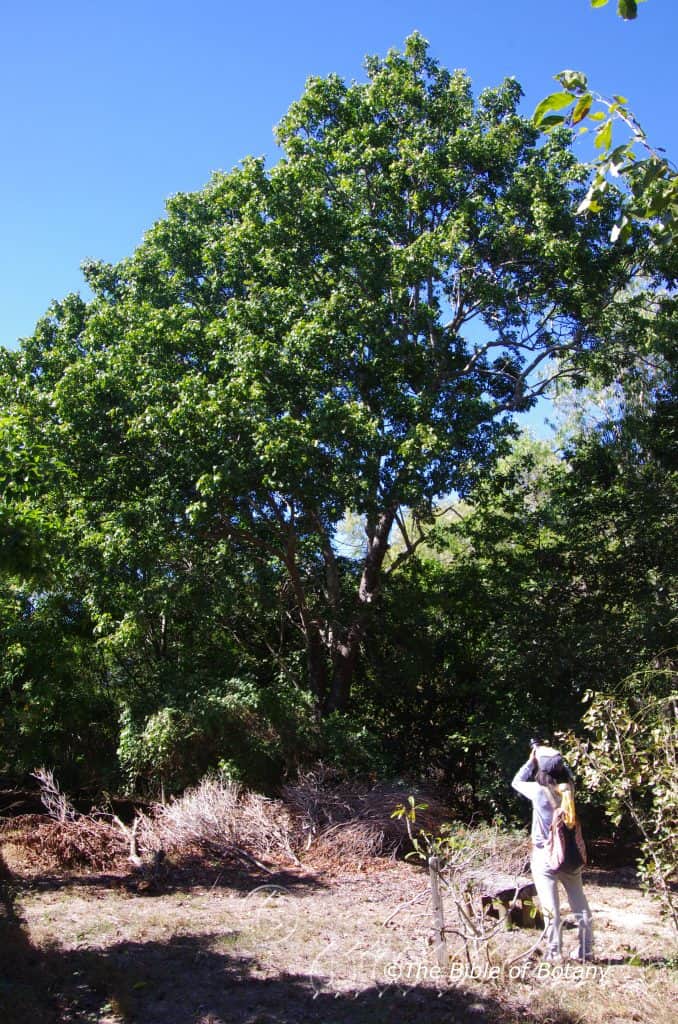
Bushland Beach Townsville Qld.
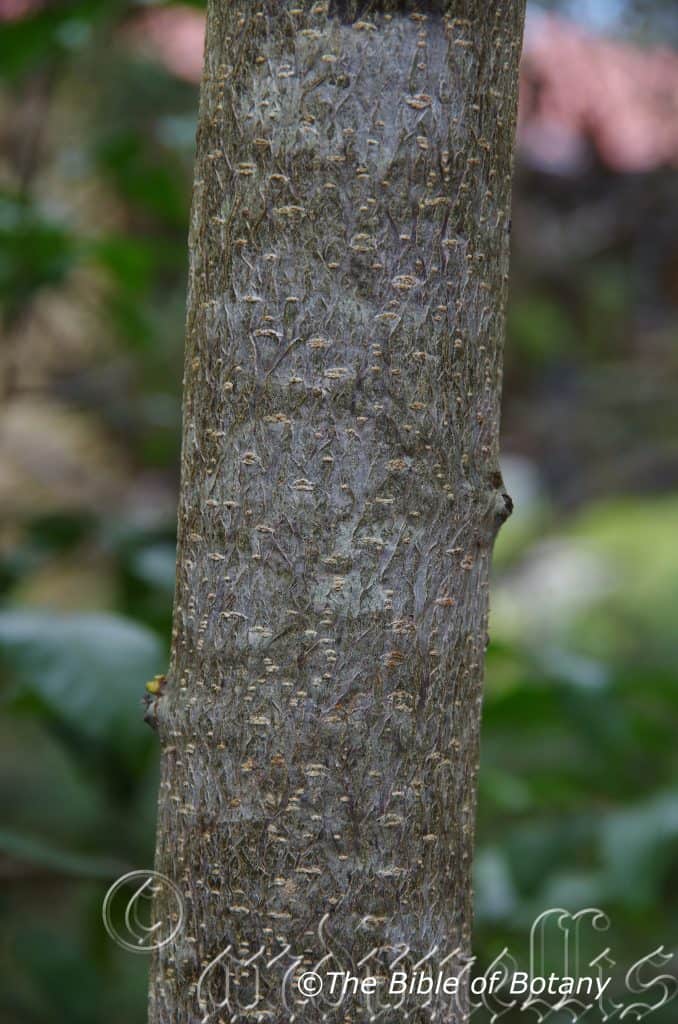
Bushland Beach Townsville Qld.
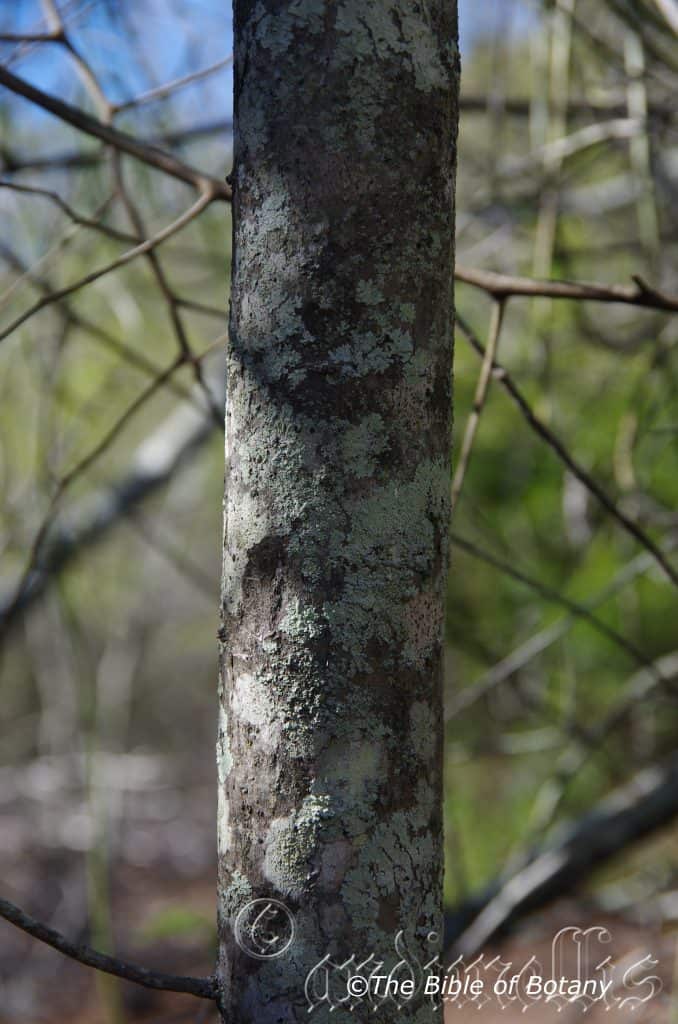
Bushland Beach Townsville Qld.
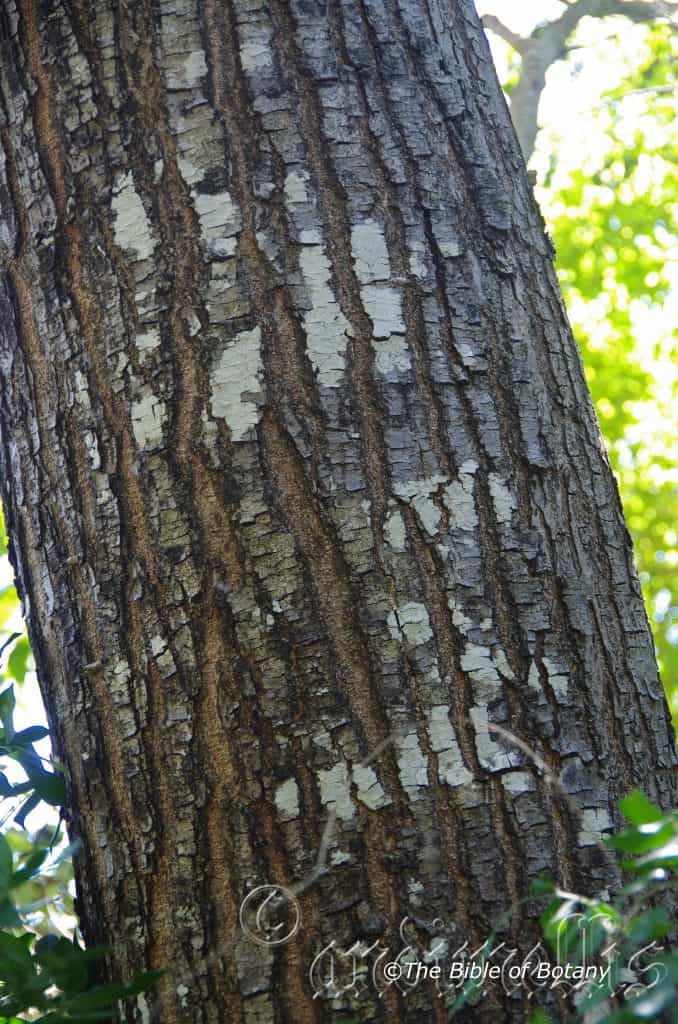
Bushland Beach Townsville Qld.
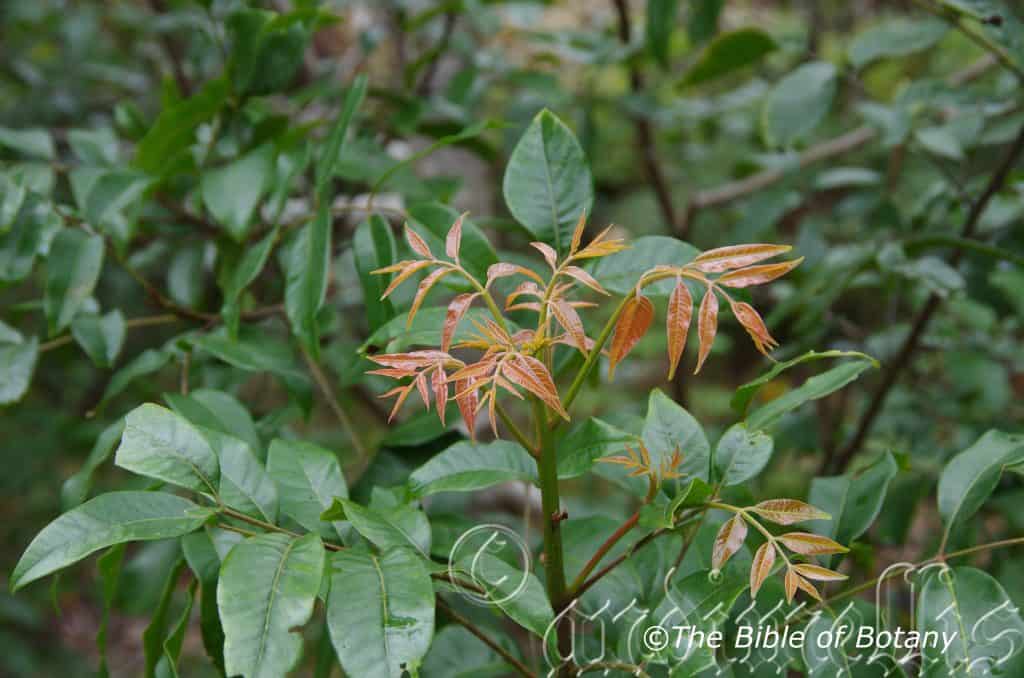
Author’s Garden The Pinnacles NSW
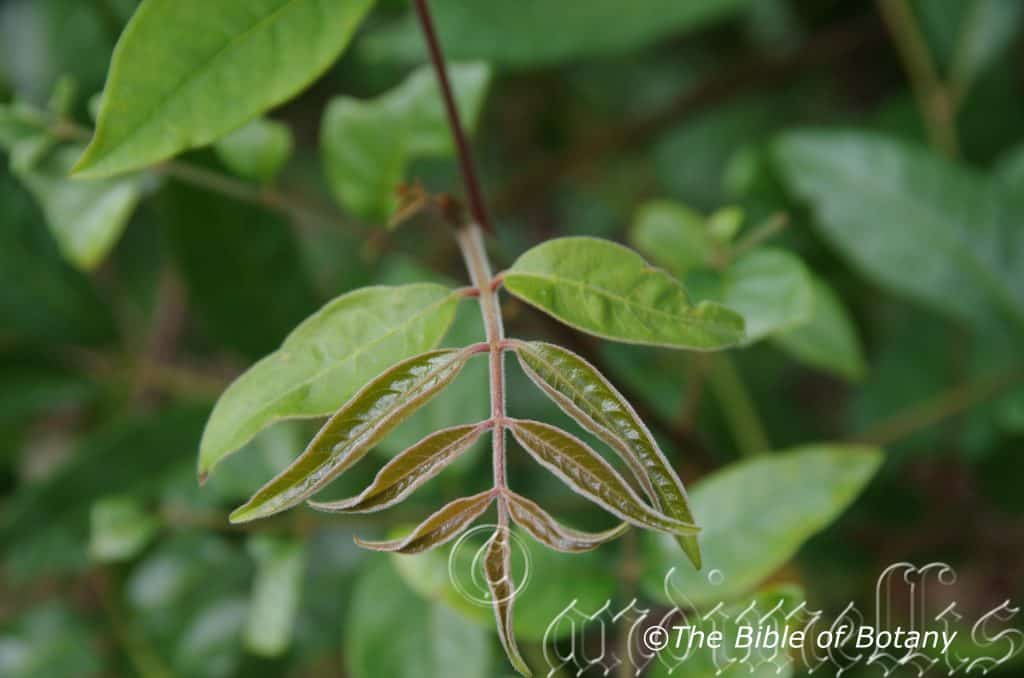
Author’s Garden The Pinnacles NSW

Bushland Beach Townsville Qld.

Bushland Beach Townsville Qld.

Bushland Beach Townsville Qld.
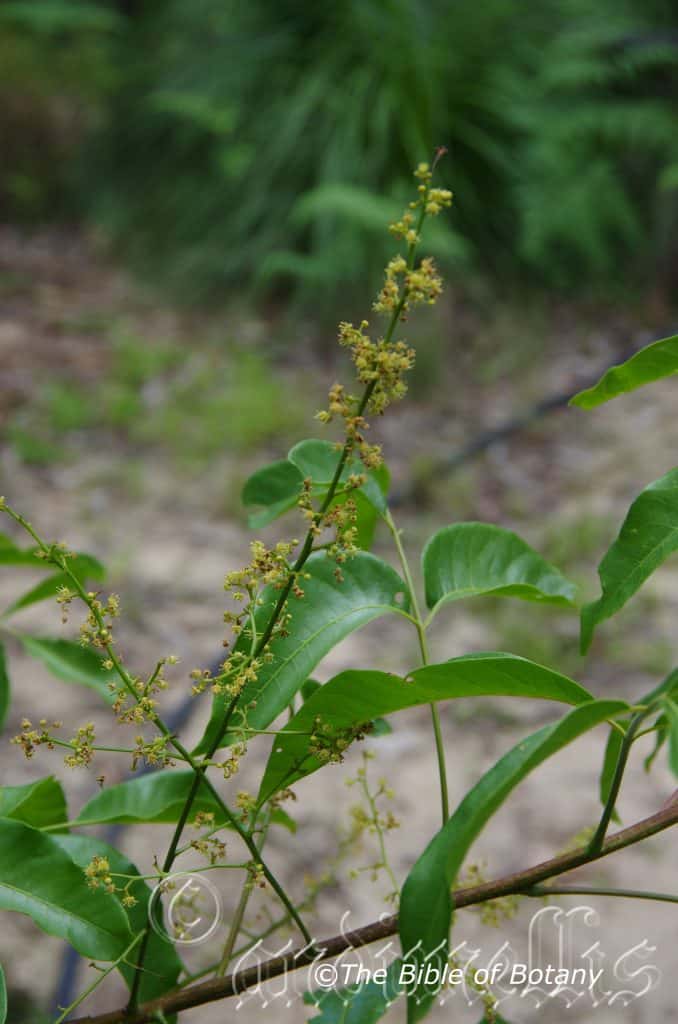
Author’s Garden The Pinnacles NSW

Author’s Garden The Pinnacles NSW
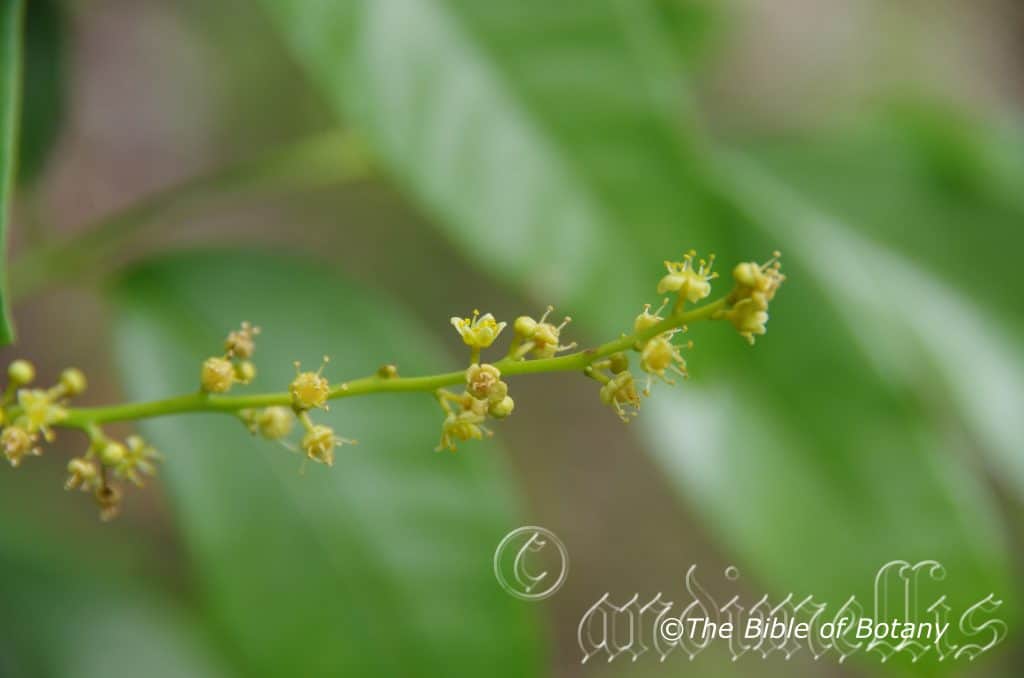
Author’s Garden The Pinnacles NSW
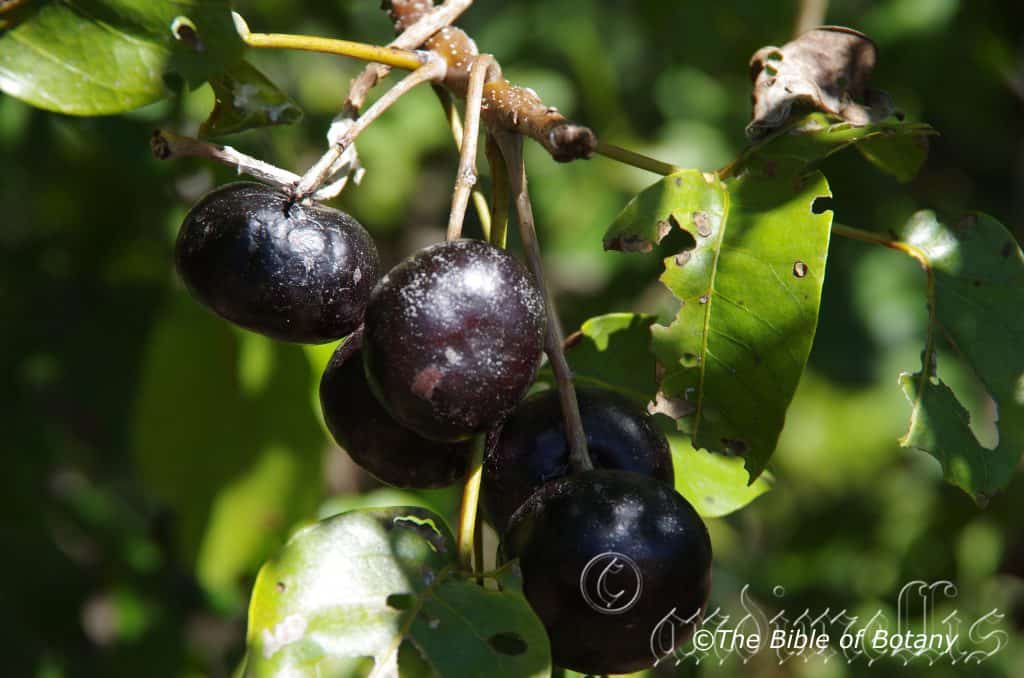
Bushland Beach Townsville Qld.

Bushland Beach Townsville Qld.
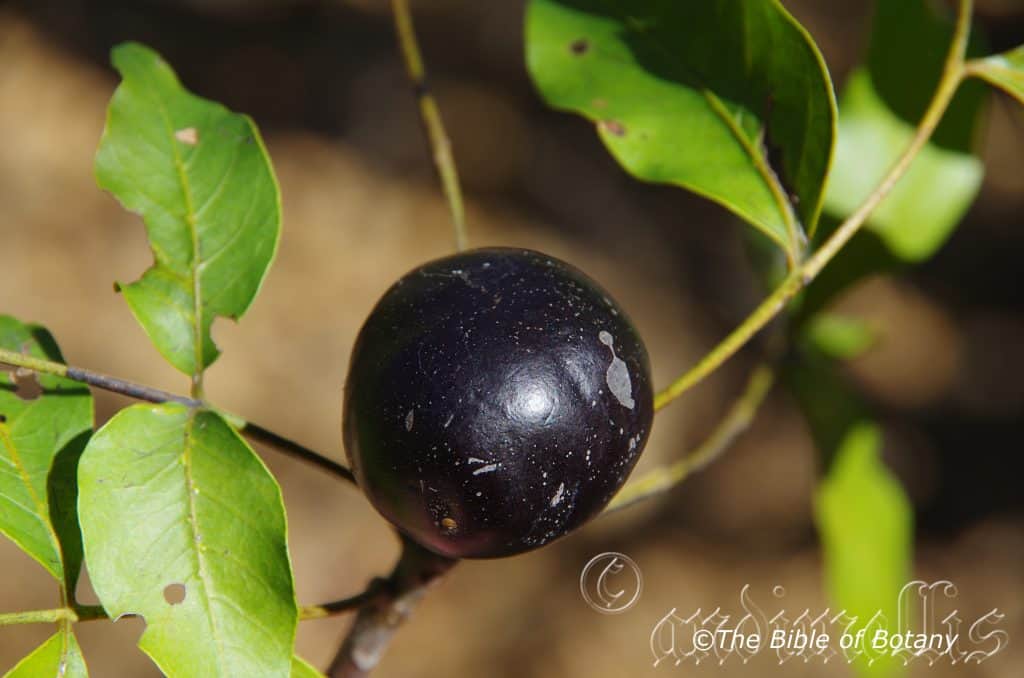
Bushland Beach Townsville Qld.
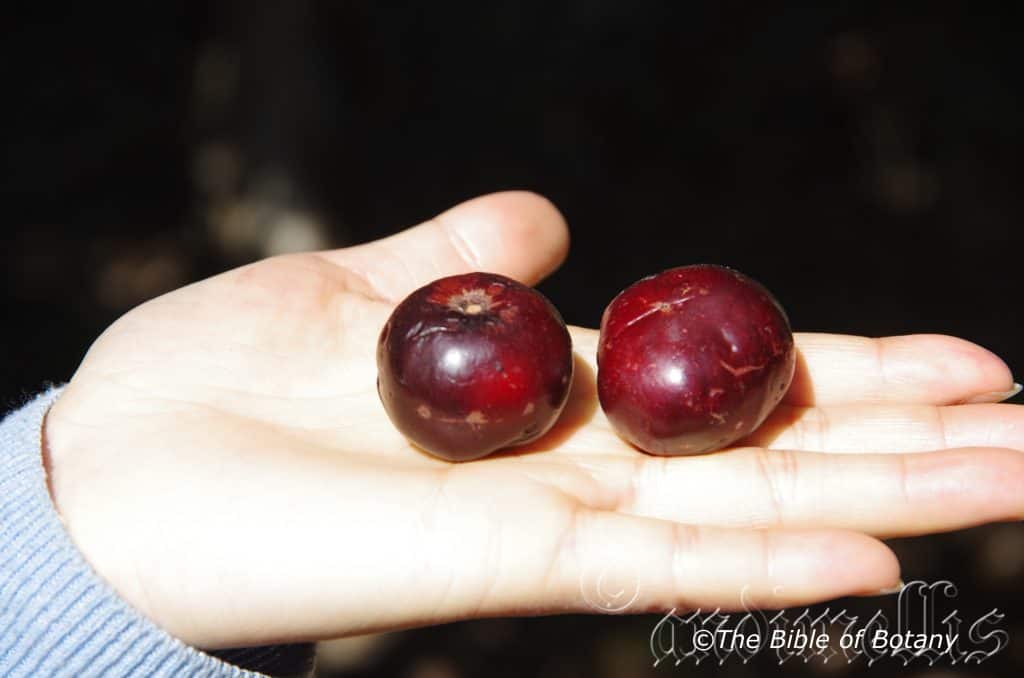
Bushland Beach Townsville Qld.
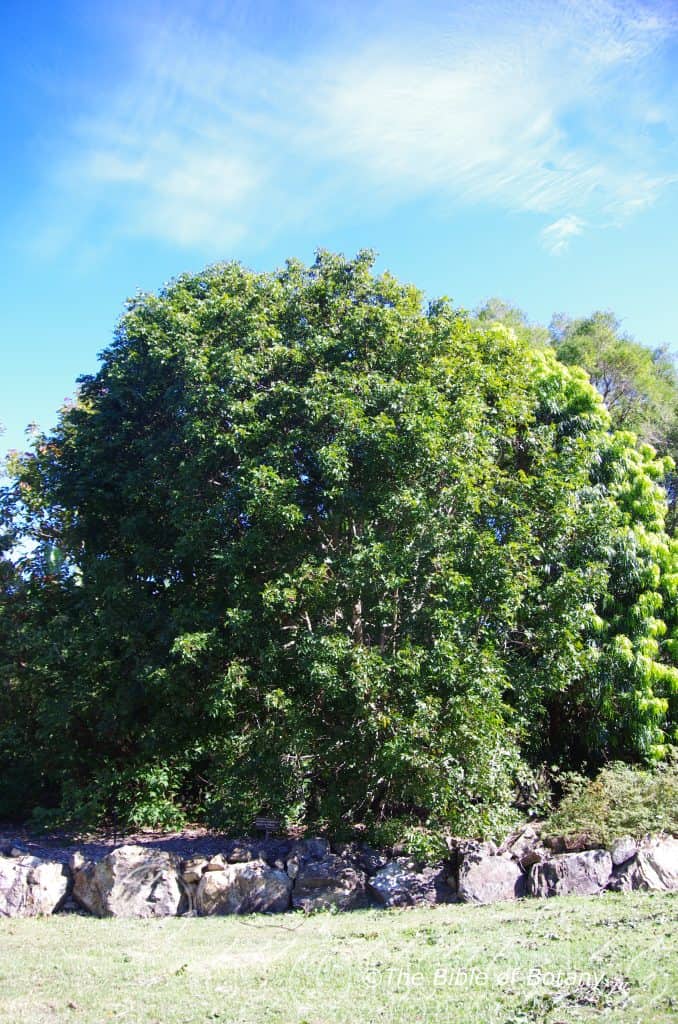
North Coast Botanic Gardens Coffs Harbour NSW

Pleiogynium timorense
Classification:
Unranked: Eudicots
Unranked: Rosids
Order: Sapindales
Family: Anachardiaceae
Genus: From Pleion, which is Ancient Greek for more than one and Gýnos/Gun?, which is Ancient Greek or Gynus, which is Latin for a woman. It refers to fruits which produce more than one seed.
Specie: From Timor, which is Latinized for the Islands of Timor and Ensis, which is Latin for originating from. It refers to plants, which were first discovered from the Timor Islands.
Common Name: Burdekin Plum
Distribution:
Pleiogynium timorense is found continuously from the MacIlwraith Range in far north eastern Queensland to Woodgate in south eastern Queensland. It is most commonly found east of the Great Dividing Range and on the off shore Islands with some populations extending as far west as The Copperfield River near Kidston.
https://avh.ala.org.au/occurrences/search?taxa=Pleiogynium+timorense#tab_mapView
Habitat Aspect Climate:
Pleiogynium timorense prefers light dappled shade to full sun. It grows in lowland rainforest, monsoonal forests and littoral rainforests, usually at low elevations and often close to the sea. The altitude ranges from 5 meters ASL to around 950 meters ASL.
The temperatures range from 8 degree in August to 38 degrees in January.
The rainfalls range from lows of 1200mm to an average of 3200mm.
Soil Requirements:
Pleiogynium timorense prefers to grow on coarse sands to light gritty clays. The soils are usually derived from decomposed sandstones, granites accumulated beach sands or accumulated coral sands. The soils pH ranges from 5.5pH to 8pH. It does not tolerate water logged soils though seasonal high water tables may be experienced. Non saline soils to very saline soils are tolerated as are salt laden winds.
Height & Spread:
Wild Plants: 3m to 6m by 1.5m to 3m.
Characteristics:
Pleiogynium timorense’s trunks are grey to grey-green and glabrous. Mature trees have large planked buttresses. The branchlets and new shoots are grey and glabrous.
Pleiogynium timorense’s opposite odd pinnate leaves are uneven. There are usually 7 leaflets with the larger leaflets towards the apex and measure 40mm to 100mm in length by 20mm to 60mm in width. The lateral petioles measure 4mm to 8mm in length while the apex petiole measures 18mm to 30mm.The slightly oblique bases are rounded to cuneate while the apexes are narrowly obtuse often emarginate. The discolourous laminas are mid grey-green to deep grey-green, glabrous and semi glossy while the lower laminas are paler. The laminas recurve upwards from the midvein and decurve downwards from the petiole to the apex while the margins are entire and unevenly undulating. The obtuse mid vein is prominent on the upper lamina and is distinctly visible on the lower lamina. The presence of lenticels is usually found on the leaf-bearing twigs while the foveolous domatia, if present have the hairs surrounding the openings.
The infloresecence of Pleiogynium timorense are panicles born from near the terminals. The lime green, glabrous peduncles measure 10mm to 35mm, while the petioles, 4mm to 8mm and petiolules 1.5mm to 4mm in length. The brownish-yellow, ovate sepals are glabrous and measure 0.6mm to 1mm in length. The yellow, oblong petals have obtuse to mucronate apexes and measure 1.7mm to 4mm in length.
The 8 to 10 stamens or at times can number 12 are inserted below and outside of the disk. The yellow stamen’s filaments measure 1.3mm to 2.5mm in length.
The 10 styles and stigmas are inserted below and inside of the disk and measure 1mm to 1.2mm in length. The flowers have been known to appear throughout the year with a peak period from December to late May.
Pleiogynium timorense’s deep purple, depressed obovoidal fruits measure 20mm to 25mm mm in length by 20mm to 38mm in diameter. The 5 to 12, hard, woody endocarp measures 1.8mm to 2.5mm in length to 2mm to 3.5mm in diameter. The discarded fruits or seed kernels without flesh resemble flying saucer with portholes around the equator.
Wildlife:
Pleiogynium timorense fruits are very attractive to flying foxes including the grey headed flying fox, Pteropus poliocephalus and the little flying fox, Pteropus scapulatus and the Cassawary, Casuarius casuarius.
Cultivation:
Pleiogynium timorense is a tremendous accent plant with its dense canopy when grown in cultivation. It always looks fresh and has a strong outline when planted against solid walls or in an isolated arid scene. It is most suitable for small, medium and large gardens close to the coast in warm frost free temperate zones to tropical or monsoonal climates. It does well beneath taller rainforest trees provided plenty of indirect light is allowed to enter the forest. The flowers are produced in profusion over a very long period which makes them attractive to many insects followed by insectivorous birds, but it is the fruits that are the highlight of the year. The fruits are eaten in Asia especially and consisted of a staple part of aboriginal diets. It is reminiscent of sour prunes.
In cultivation it will grow 5 meters to 8 meters in height by 4 meters to 7meters in diameter when grown in the open or taller and narrower when grown in an enclosed area without adequate light. Growth is relatively slow in the initial years but hastens as the plants mature. Fruiting is fairly consistent with garden specimens flowering and fruiting in their 8th year.
Pleiogynium timorense would make an excellent subject for courtyards, around swimming pools provided It is far enough back so that falling leaves, flowers and fruits are not a problem or container plants for patios and well-lit indoor areas.
Refer to the pages describing potting mixes for ideas on a suitable potting mix for indoors. Despite being salt tolerant it is subject to leaf tip burn if the calcium and chloride salts accumulate in the containers. Use rainwater for container plants. Do not use bottle water as I have tested bottle water on sensitive indoor plants and ferns with disastrous long term consequences. The results were so bad I have sworn off bottled water and never drink it. I am not saying that the plastic or the water was directly involved as it may still be the salts in the water I used. What I am saying, is I will stick to tank water and steer away from both bottle and Town water wherever possible. A bird dropping or two every year in Tank water is far more acceptable. Ask my plants.
Analysis of the fruits indicates a highly nutritious food that would be worthwhile considering especially if larger fruits with smaller seed receptacles can be secured.
| Principle | Nutrient Value | Percentage of RDA |
| Energy | 46 Kcal | 2.3mm |
| Carbohydrates | 11.42 g | 8mm |
| Protein | 0.70 g | 1mm |
| Total Fat | 0.28 g | 1mm |
| Cholesterol | 0 mg | 0mm |
| Dietary Fibre | 1.40 g | 3.5mm |
| Vitamins | ||
| Folates | 5 µg | 1mm |
| Niacin | 0.417 mg | 3mm |
| Pantothenic acid | 0.135 mg | 3mm |
| Pyridoxine | 0.029 mg | 2mm |
| Riboflavin | 0.026 mg | 2mm |
| Thiamine | 0.028 mg | 2mm |
| Vitamin A | 345 IU | 11.5mm |
| Vitamin C | 9.5 mg | 16mm |
| Vitamin E | 0.26 mg | 2mm |
| Vitamin K | 6.4 µg | 5mm |
http://www.fruitsinfo.com/burdekin-plum-tree.php
Propagation:
Seeds:
Pleiogynium timorense can be removed easily from the plants once the drupes are ripe and begin to fall to the ground. The fruits should be cleaned and washed for more even germination.
Sow the seeds directly into a deep seed raising mix, keeping them moist not wet. Place the trays beneath 30mm shade cloth. When the seedlings are 20mm to 25mm tall, prick them out and plant them into 50mm native tubes using a good organic mix. Germination is sporadic and uneven with both good and bad results even in the same year and may take 12 months.
As the seedlings roots reach the bottom of the tubes plant them out into their permanent positions or into larger urns for patio or indoor use.
Fertilize using seaweed, fish emulsion or organic chicken pellets soaked in water on an alternate basis. Fertilize every two months until the plants are established then twice annually in early September and March to maintain better health, vitality and flowering.
Cuttings: Fortunately Pleiogynium timorense cuttings are relatively easy to strike. Use 150mm to 250mm long cuttings from the prvious season’s growth. Take them in warmer months of the year. Remove half the leaves from the bottom section being careful not to tear the bark.
1 Prepare the cutting mix by adding two thirds sharp clean river sand, one third peat or one third perlite. These ingredients must be sterilized,
2 Select good material from non diseased plants,
3 Select semi green stems for cuttings. Look for a stem with two or three nodes,
4 Place the cutting on a flat, hard surface, and make a clean cut down one side of the cutting at the base for 10mm with a sharp sterile knife or razor blade. – This scarification of the node will increase the chances of roots emerging from this spot. Now remove all but one or two the leaves, leaving the apex leaves in tact. If the leaves are very large in proportion to the stem, cut off the apical halves.
5 Fill a saucer with water, and place a little medium strength rooting hormone into another container like a milk bottle top. Dip the node end of the cutting into the water and then into the rooting hormone. Tap off any excess hormone,
6 Use a small dipple stick or old pencil to poke a hole into the soilless potting mix. Ensure the hole is slightly larger than the stem diameter and be careful not to wipe the rooting hormone off the cuttings base. Place 2 to 4 cuttings in each of the 50mm native tubes,
7 I like to place the tubes in bucket with holes drilled in the bottom to allow excess water to drain out. A plastic bag that fits over the bucket is ideal to help maintain temperature and moisture. Place in a semi shaded, warm position like under 50mm shade cloth.
8 When the cuttings have struck, open the bag to allow air circulation for a few days to a week,
9 Once hardened off remove the cuttings from the bag and allow to further hardening for a few more days to a week,
10 Transplant into a good potting mix to grow on.
Fertilize using seaweed, fish emulsion or organic chicken pellets soaked in water on an alternate basis. Fertilize every two months until the plants are established then twice annually in early September or March to maintain health, vitality and better flowering.
Further Comments from Readers:
“Hi reader, it seems you use The Bible of Botany a lot. That’s great as we have great pleasure in bringing it to you! It’s a little awkward for us to ask, but our first aim is to purchase land approximately 1,600 hectares to link several parcels of N.P. into one at The Pinnacles NSW Australia, but we need your help. We’re not salespeople. We’re amateur botanists who have dedicated over 30 years to saving the environment in a practical way. We depend on donations to reach our goal. If you donate just $5, the price of your coffee this Sunday, We can help to keep the planet alive in a real way and continue to bring you regular updates and features on Australian plants all in one Botanical Bible. Any support is greatly appreciated. Thank you.”
In the spirit of reconciliation we acknowledge the Bundjalung, Gumbaynggirr and Yaegl and all aboriginal nations throughout Australia and their connections to land, sea and community. We pay our respect to their Elders past, present and future for the pleasures we have gained.
Pleioluma papyracea
Classification:
Unranked: Magnoliophyta
Unranked: Magnoliopsida
Order: Ebonales
Family: Sapotaceae
Genus: From Plei, which is unclear as it could be derived from the Ancient Greek for the seven divine sisters or the divine mother of the seven divine sisters or Latinized from the aboriginal word for the star constellation of the seven sisters and Lúgos, which is Ancient Greek for a twig or Lákhn?, which is Ancient Greek for woolly or hairy. It may refer to plants, which have twigs that are densely covered in rusty somewhat floccose hairs.
Specie: From Pápuros, which is Ancient Greek for the Papyrus plant of which early paper was made and -?ceum, which is late Latin for to originate from. It usually refers to leaves which have a thin papery texture.
Sub species:
Common Name:
Distribution:
Pleioluma papyracea is found in several disjunct populations from Lakefield National Park, Homevale National Park and Crystal Creek National Park in north eastern Queensland.
https://avh.ala.org.au/occurrences/search?taxa=Pleioluma+papyracea#tab_mapView
Habitat Aspect Climate:
Pleioluma papyracea prefers light dappled shade to full sun. It grows in well-developed tropical rainforests. The altitude ranges from 700 meters ASL to 1200 meters ASL.
The temperatures range from 10 degrees in August to 36 degrees in January.
The rainfalls range from lows of 1400mm to an average of 3200mm.
Soil Requirements:
Pleioluma papyracea prefers medium clays with copious quantities of forest litter. The soils are usually derived from decomposed black basalts, brown basalts or granites. The soils pH ranges from 5pH to 6.5pH. It does not tolerate water logged soils. Non saline soils to moderately saline soils are tolerated.
Height & Spread:
Wild Plants: 20m to 40m by 6m to 8m.
Characteristics:
Pleioluma papyracea grows as a tall trunked tree with pinkish fawn to mid pinkish-grey, scaly bark with large papery, flaky patches. The trunks develop a small, spreading buttress from 200mm to 500mm above the ground. The branches and branchlets are dull powdery grey to pinkish-grey and glabrous. The branchlets are deep grass-green and densely covered in reddish-orange to rusty-yellow hirsute hairs. Young branchlets exude clear milky latex when damaged.
Pleioluma papyracea’s densely crowded, alternate, oblanceolate leaves measure 50mm to 130mm in length by 25mm to 60mm in width. The bases are cuneate and slightly oblique while the apexes are broad obtuse. The discolourous laminas are pale grass-green to mid bluish-green, and glabrous to sparsely covered in rusty yellow to reddish-orange hirsute hairs on the upper laminas while the lower laminas are paler. The margins are entire, slightly undulating and curve slightly upwards from the midvein and decurve near the apex. The mid vein is prominent on both laminas of the leathery leaves.
The juvenile leaves are distinctly different being elliptical with an acute apex and densely covered in rusty yellow to reddish-orange hirsute hairs.
The infloresecence of Pleioluma papyracea are born from the leaf axils. The sepals are mid grass-green and covered in rusty yellow tomentose hairs externally and rusty-yellow sericeous hairs internally. They measure 3mm to 3.5mm in length. The creamy green corolla measures 4mm to 5mm in length. The pedicels measure 4mm to 5mm in length.
The inserted stamen’s filaments are located on the lower half of the corolla and measure 2mm to 2.5mm in length while the anthers measure 1mm to 1.5mm in length. The shorter alternating staminodes measure 1.5mm to 2mm in length.
The ovary is covered in course, rusty hirtellous hairs. The pistil measures 2.5mm to 3.5mm in length. The flowers appear throughout the year.
Pleioluma papyracea’s fruits are ovoidal to spherical berries. The berries measure 20mm to 25mm in length by 15mm to 18mm in diameter. The grass-green berries turn deep reddish-purple on ripening. The internal flesh is creamy fawn. The sepals are persistent on the fruits.
The woody ovoidal seeds are laterally compressed and are pale brown. There are 2 seeds per fruit which measure 15mm to 18mm in length by 8mm to 10mm in width and 6mm to 7mm in depth. The hilum scar runs for 3/4 of the seed and measures 1.5mm to 2mm in width.
Wildlife:
Pleioluma papyracea’s fruit probably hosts the Queensland fruit fly similar to other members of the genus. Fruits are edible however I have not had the pleasure of eating any fruit.
Cultivation:
Pleioluma papyracea is an excellent medium tree for starting a small, dry rainforest garden. It always looks green and fresh especially where adequate ground moisture is retained and some shade is provided. In cultivation they will grow 16 meters to 20 meters in height by 15 meters to 20 meters in diameter when grown in the open.
It is most suitable where semi shade occurs on drier soils. Use them adjacent to pathways, rockeries, along sandy clay banks or along drive ways or adjacent to natural rainforest gardens. Because of the flanging near the base on mature trees plant them at least 2 meters back from paths and 10 meters from utilities.
The fruits are a real bonus on this plant and can be used for indoors decorations.
The trees would make very good accent trees in front of low set commercial or industrial sheds where they will break up hard rigid architectural lines and give warmth and breadth to a building. In front of high rise buildings they would give balance especially where they could be grown in curves meandering to the entry doors or for something different used from the front of the path and meander back to the far corners with shrubs or flowers planted between the trees and the building and the trees and the nature strip. Another method would be to plant it using trees with contrasting barks like Eucalyptus citriodora, Acacia melanoxylon or Araucaria cunninghamii remembering that this tree will grow a lot taller than the others.
They would make good container plants for verandas and well-lit areas indoors and courtyards.
Propagation:
Seeds: The seeds of Pleioluma papyracea can be removed easily from the fruits as they ripen though large quantities are difficult to collect. If collecting seed from wild plants consider the rarity and other wildlife when taking the seeds and ask the owners of the properties for permission to enter their land. It is illegal to remove seeds or fruits from plants within National Parks. The seeds of this genus have a good strike rate so only a few would be required.
The side of the seeds need to be scarified prior to sowing. Be careful not to damage the hilum in the process.
Sow the fresh seeds directly into a seed raising mix in 50mm native tubes keeping them moist not wet. When the seedlings are 100m to 125mm tall, prick them out and plant them into 200mm buckets using a good organic mix or plant them out directly into their permanent position.
Fertilize using seaweed, fish emulsion or organic chicken pellets soaked in water on an alternate basis. Fertilize every two months until the plants are established then twice annually in early September and March to maintain better colour, health, vitality and flowering.
Further Comments from Readers:
“Hi reader, it seems you use The Bible of Botany a lot. That’s great as we have great pleasure in bringing it to you! It’s a little awkward for us to ask, but our first aim is to purchase land approximately 1,600 hectares to link several parcels of N.P. into one at The Pinnacles NSW Australia, but we need your help. We’re not salespeople. We’re amateur botanists who have dedicated over 30 years to saving the environment in a practical way. We depend on donations to reach our goal. If you donate just $5, the price of your coffee this Sunday, We can help to keep the planet alive in a real way and continue to bring you regular updates and features on Australian plants all in one Botanical Bible. Any support is greatly appreciated. Thank you.”
In the spirit of reconciliation we acknowledge the Bundjalung, Gumbaynggirr and Yaegl and all aboriginal nations throughout Australia and their connections to land, sea and community. We pay our respect to their Elders past, present and future for the pleasures we have gained.
Pleioluma queenslandica
Classification:
Unranked: Eudicots
Unranked: Asterids
Order: Ericales
Family: Sapotaceae
Subfamily: Chrysophyolloideae
Genus: From Plei, which is unclear as it could be derived from the Ancient Greek for the seven divine sisters or the divine mother of the seven divine sisters or Latinized from the aboriginal word for the star conselation of the seven sisters and Lúgos, which is Ancient Greek for a twig or Lákhn?, which is Ancient Greek for woolly or hairy. It may refer to plants, which have twigs that are densely covered in rusty somewhat floccose hairs.
Specie: From Queensland, which is Latinized for the state of Queensland. It refers to species which were first discovered in Queensland or are restricted to Queensland.
Sub species:
Common Name: Native Plum.
Distribution:
Pleioluma queenslandica is found in several disjunct populations south from Lakefield National Park in north eastern Queensland to the Clarence River in north eastern coastal New South Wales. It is found on and east of the Great Dividing Range with a disjunct population north west of Cape Grafton on Cape York Peninsular.
https://avh.ala.org.au/occurrences/search?taxa=Pleioluma+queenslandica#tab_mapView
Habitat Aspect Climate:
Pleioluma queenslandica prefer light dappled shade to full sun. It grows along creeks and gallery forests to ridges adjacent to well-developed rainforests, in dry rainforests or littoral rainforests. The altitude ranges from 50 meters ASL to 600 meters ASL.
The temperatures range from minus 2 degree in August to 36 degrees in January.
The rainfalls range from lows of 850mm to an average of 3200mm.
Soil Requirements:
Pleioluma queenslandica prefer light sandy clays to medium clays often with copious quantities of leaf litter. The soils are usually derived from decomposed black basalts, brown basalts, granites, sandstones, metamorphic rocks or accumulated sands. The soils pH ranges from 5pH to 6.5pH. It does not tolerate water logged soils. Non saline soils to moderately saline soils are tolerated.
Height & Spread:
Wild Plants: 26m to 40m by 7m to 10m.
Characteristics:
Pleioluma queenslandica grows as a tall trunk tree with pale grey to mid grey, scaly bark with large papery, flaky patches. The trunks develop a small, spreading buttress from 200mm to 500mm above the ground. The branches and branchlets are dull powdery grey and glabrous. The branchlets are deep grass-green and glabrous. Young branchlets exude clear milky latex when damaged.
Pleioluma queenslandica’s densely crowded, alternate and elliptical to ovate leaves measure 90mm to 200mm in length by 30mm to 60mm in width. The oblique base is rounded while the apex is obtuse with either a small emarginated or mucronate tip. The discolourous laminas are mid grass-green to deep green and glabrous on the upper laminas while the lower laminas are paler. The margins are entire, slightly undulating and curve slightly upwards from the midvein and decurve near the apex. The mid vein is prominent on the lower lamina and is strongly depressed on the upper lamina of the leathery leaves. The petioles have a groove on the upper surface and measure 15mm to 30mm in length
The infloresecence of Pleioluma queenslandica are born in small clusters from the leaf axils. The sepals are mid grass-green and covered in white puberulent hairs externally and rusty-yellow sericeous hairs internally. They measure 2mm to 3mm in length. The creamy green corolla measures 3.5mm to 5mm in length. The pedicels measure 4mm to 5mm in length.
The inserted stamen’s filaments are located on the lower quarter of the corolla and measure 1.2mm to 1.5mm in length while the oblong anthers measure 1mm to 1.2mm in length. The shorter alternating staminodes measure 1mm to 1.4mm in length.
The ovary is glabrous. The pistil measures 2.5mm to 5mm in length. The flowers appear throughout the year especially in northern plants while southern plants have a peak in flowering between January and May.
Pleioluma queenslandica’s fruit is an ovoidal berry. The berries measure 12mm to 22mm in length by 5mm to 10mm in diameter. The grass-green berries turn deep reddish-purple on ripening. The internal flesh is creamy fawn. The sepals are persistent on the fruits.
The woody ovoidal seeds are laterally compressed and are pale brown. The a seeds measure 9mm to 15mm in length by 6mm to 8mm in width and 5mm to 7mm in depth. The hilum scar runs for a little over 1/2 of the seeds length and measures 1mm to 1.5mm in width.
Wildlife:
Pleioluma queenslandica fruit hosts the Queensland fruit fly (Bactrocera tryoni). Fruits are edible and taste similar to a dry plum. It is difficult to locate fruits that have not been stung by fruit fly so it is better not to have a queasy stomach for such extra delicacies.
Cultivation:
Pleioluma queenslandica is an excellent medium tree for starting a small, dry rainforest garden. It always looks green and fresh especially where adequate ground moisture is retained and some shade is provided. In cultivation they will grow 16 meters to 20 meters in height by 8 meters to 12 meters in diameter when grown in the open.
It is most suitable where semi shade occurs on drier soils. Use them adjacent to pathways, large rockeries, along sandy clay banks or along drive ways or adjacent to natural rainforest gardens. Because of the flanging near the base on mature trees plant them at least 2 meters back from paths and 10 meters from utilities.
The fruits are a real bonus on this plant and can be used for indoor decorations.
The trees would make very good accent trees in front of low set commercial or industrial sheds where they will break up hard rigid architectural lines and give warmth and breadth to a building. In front of high rise buildings they would give balance especially where they could be grown in curves meandering to the entry doors or for something different used from the front of the path and meander back to the far corners with shrubs or flowers planted between the trees and the building and the trees and the nature strip. Another method would be to plant it using trees with contrasting barks like Eucalyptus citriodora, Acacia melanoxylon or Araucaria cunninghamii remembering that this tree will grow a lot taller than the others.
They would make good container plants for verandas and well-lit areas indoors and courtyards.
Propagation:
Seeds: The seeds of Pleioluma queenslandica can be removed easily from the fruits as they ripen though large quantities are difficult to collect. If collecting seed from wild plants consider the rarity and other wildlife when taking the seeds and ask the owners of the properties for permission to enter their land. It is illegal to remove seeds or fruits from plants within National Parks. The seeds of this genus have a good strike rate so only a few would be required.
The side of the seeds need to be scarified prior to sowing. Be careful not to damage the hilum in the process.
Sow the fresh seeds directly into a seed raising mix in 50mm native tubes keeping them moist not wet. When the seedlings are 100 to 125mm tall, prick them out and plant them into 200mm buckets using a good organic mix or plant them out directly into their permanent position.
Fertilize using seaweed, fish emulsion or organic chicken pellets soaked in water on an alternate basis. Fertilize every two months until the plants are established then twice annually in early September and March to maintain better colour, health, vitality and flowering.
Further Comments from Readers:
“Hi reader, it seems you use The Bible of Botany a lot. That’s great as we have great pleasure in bringing it to you! It’s a little awkward for us to ask, but our first aim is to purchase land approximately 1,600 hectares to link several parcels of N.P. into one at The Pinnacles NSW Australia, but we need your help. We’re not salespeople. We’re amateur botanists who have dedicated over 30 years to saving the environment in a practical way. We depend on donations to reach our goal. If you donate just $5, the price of your coffee this Sunday, We can help to keep the planet alive in a real way and continue to bring you regular updates and features on Australian plants all in one Botanical Bible. Any support is greatly appreciated. Thank you.”
In the spirit of reconciliation we acknowledge the Bundjalung, Gumbaynggirr and Yaegl and all aboriginal nations throughout Australia and their connections to land, sea and community. We pay our respect to their Elders past, present and future for the pleasures we have gained.
Pleogyne australis
Classification:
Unranked: Eudicots
Subclass:
Order: Ranunculales
Family: Menispermaceae
Genus: From Pleo, which is Ancient Greek for to have more than one and and Gun?, which is Ancient Greek for a woman, female or lady. It refers to flowers or ovaries, which produce more than the usual number of female parts or seeds than normal. Here it refers to multiple seeds being produced in the fruits from a single seed.
Specie: From Terra Australis, which is Latin for land of the south and Anum/Ensis, which is Latin for to originate from. It refers to plants, which were first discovered from the land down under.
Sub species:
Common Name:
Distribution:
Pleogyne australis is found south from the Paluma Range National Park in far north eastern Queensland to Mount French near the Queensland New South Wales border.
It is found on and east of the Great Dividing Range to the coast and off shore Islands.
There is an isolated population further north on the Normanby river and further west at Still Bay in far north east of Western Australia.
https://avh.ala.org.au/occurrences/search?taxa=Pleogyne+australis#tab_mapView
Habitat Aspect Climate:
Pleogyne australis prefers light dappled shade to full sun. It grows in moist rainforests, littoral rainforests and moist closed Eucalyptus forests.
The temperatures range from 2 degrees in August to 38 degrees in January.
The rainfalls range from lows of 800mm to an average of 3200mm.
Soil Requirements:
Pleogyne australis prefers to grow on coarse sands to light gritty clays. The soils are usually derived from decomposed sandstones, granites accumulated beach sands or alluvial deposits. The soils pH ranges from 5pH to 7.5pH. It does not tolerate water logged soils. Non saline soils to very saline soils are tolerated as are salt laden winds.
Height & Spread:
Wild Plants: 3m to 10m by 1.5m to 3m.
Characteristics:
Pleogyne australis’s is a slender woody climber with twining stems. The stems are densely covered in pale grey or brown stiff hirtellous hairs.
Pleogyne australis’s simple, alternate, ovate to broad-ovate, braod-lanceolate to oblong-elliptic or palmate leaves measure 40mm to 130mm in length by 25mm to 75mm in width. The terete petiole is swollen at the base and measures 3mm to 30mm in length. The petiole is densely in pale grey or brown stiff hirtellous hairs.The bases are rounded or at times shallowly peltate, while the apexes are obtuse or broadly acute at times with a mucronate tip. The discolourous laminas are mid green to deep green, sparsely covered in short, pale grey or brown stiff hirtellous hairs and semi glossy on the upper lamina, while the lower lamina is densely covered in short pale grey or brown stiff hirtellous hairs especially along the veins. The laminas are flat or raised between the lateral veins, while the margins are entire. The obtuse mid vein and 3 to 6 pairs of lateral veins are prominent on the lower lamina and are visible on the upper lamina.
The juveniles leaves are often coarsely toothed on the basal half.
The infloresecence of Pleogyne australis are diocious. The male inflorescence are paniculate, while the female inforescence subracemosa born from the leaf axis. The green, terete petioles and rachis are densely covered in pale grey to brown tomentose hairs. The pedicels are short or subsessile and measure up to 2.5mm in length.
The yellowish sepals are in whirls of 3 with the in whorls of 3 with the outer 9 to 12 sepals sbeing the smallest and the inner whorl being the largest. The inner whirl measure 1.5mm to 2mm in length.
The 6 dimorphic, yellow petals are much smaller than sepals and measure 0.5mm to 0.75mm in length. The male flowers have 3petals and 3 stamens, alternating with the lateral auricles. The 3 petals are opposite the stamens. The female flowers are without staminodes. The 6 carpels are free (gynoecium apocarpous) with superior ovaries. There are 2 subulate, recurved styles per ovary. The flowers appear from August to November.
Pleogyne australis’s fruits are fleshy, compressed, globular drupes. The 1 to 6 drupes per flower measure 6mm to 12mm diameter. The green drupes turn yellow, then reddish and finally deepglossy, reddish black to black when ripe. The solitary seed per drupe is kidney shaped.
Wildlife:
Pleogyne australis is unknown to the author.
Cultivation:
Pleogyne australis is not well known in horticulture and as aresult not much information is around. My own experience with a single plant on a fence has not proven to de well on sand with a northerly aspect.
After 2 years in cultivation it has barely reached 1.5 meters with a spread of 1 meter.
Propagation:
Seeds:
Pleogyne australis can be removed easily from the plants once the drupes are ripe and begin to fall to the ground. The fruits should be cleaned and washed for more even germination.
Sow the seeds directly into a deep seed raising mix, keeping them moist not wet. Place the trays beneath 30mm shade cloth. When the seedlings are 20mm to 25mm tall, prick them out and plant them into 50mm native tubes using a good organic mix.
As the seedlings roots reach the bottom of the tubes plant them out into their permanent positions or into larger urns for patio or indoor use.
Cuttings:
Further Comments from Readers:
“Hi reader, it seems you use The Bible of Botany a lot. That’s great as we have great pleasure in bringing it to you! It’s a little awkward for us to ask, but our first aim is to purchase land approximately 1,600 hectares to link several parcels of N.P. into one at The Pinnacles NSW Australia, but we need your help. We’re not salespeople. We’re amateur botanists who have dedicated over 30 years to saving the environment in a practical way. We depend on donations to reach our goal. If you donate just $5, the price of your coffee this Sunday, We can help to keep the planet alive in a real way and continue to bring you regular updates and features on Australian plants all in one Botanical Bible. Any support is greatly appreciated. Thank you.”
In the spirit of reconciliation we acknowledge the Bundjalung, Gumbaynggirr and Yaegl and all aboriginal nations throughout Australia and their connections to land, sea and community. We pay our respect to their Elders past, present and future for the pleasures we have gained.

Mount Cootha Botanic Gardens Qld.
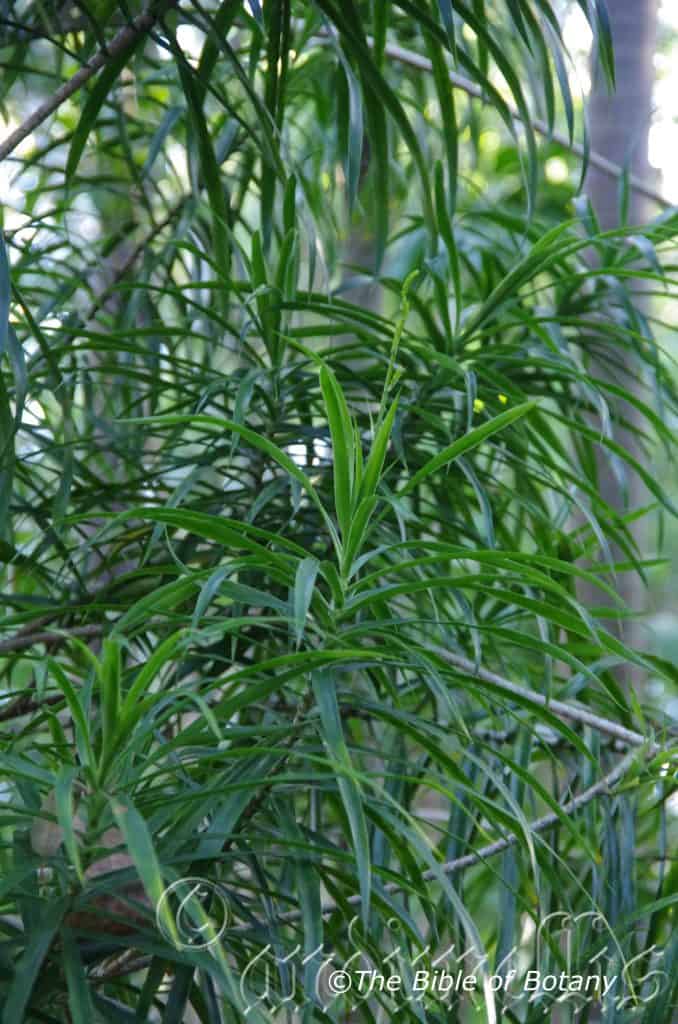
Mount Cootha Botanic Gardens Qld.

Mount Cootha Botanic Gardens Qld.

Mount Cootha Botanic Gardens Qld.

Mount Cootha Botanic Gardens Qld.
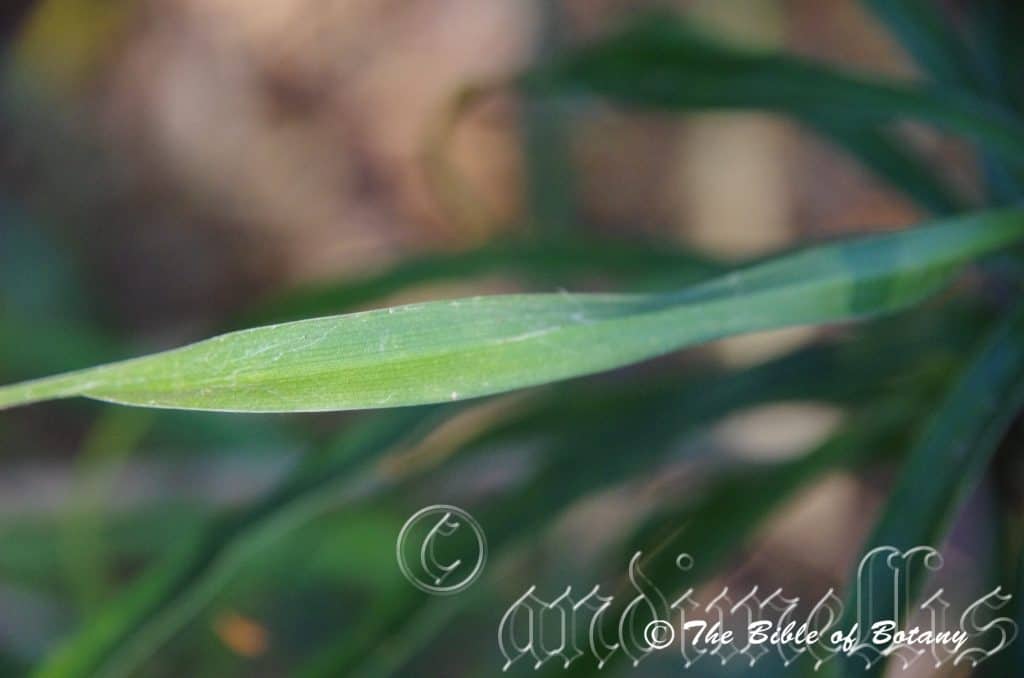
Mount Cootha Botanic Gardens Qld.
Pleomele angustifolia
Classification:
Unranked: Monocots
Order: Asparagales
Family: Asparagaceae
Subfamily: Nolinoideae
Genus: From Pleion, which is Ancient Greek for more than one and Mele, which is Ancient Greek for an apple. It refers to plants, which produce many fruits that resemble small apples.
Specie: From Angusta, which is Latin for narrow and Folium, which is Latin for foliage. It usually refers to leaves or at times the calyx lobes or petals, which are narrower than other species in the genus.
Sub species:
Common Name: The Native Happy Plant.
Distribution:
Pleomele angustifolia is found in 2 disjunct populations across the top end of Australia. The western population is found north of a line from Cape Dombey on the west coast of the Northern Territory to West Alligator Head then east to Dhupwumirri and Refuge Bay on Elcho Island including Bathurst and Melville Islands and the larger Islands in this zone.
In the east it is found east of the Great Dividing Range including some of the off shore Islands, south from the Torres Straight Islands to Brook Island near Tully and York Island in north eastern Queensland.
It is also found east from Malayasia, Indonesia, the Philippines, Papua and New Guinee.
https://avh.ala.org.au/occurrences/search?taxa=Pleomele+angustifolia#tab_mapView
Pleomele angustifolia
Classification:
Unranked: Monocots
Order: Asparagales
Family: Asparagaceae
Subfamily: Nolinoideae
Genus: From Pleion, which is Ancient Greek for more than one and Mele, which is Ancient Greek for an apple. It refers to plants, which produce many fruits that resemble small apples.
Specie: From Angusta, which is Latin for narrow and Folium, which is Latin for foliage. It usually refers to leaves or at times the calyx lobes or petals, which are narrower than other species in the genus.
Sub species:
Common Name: The Native Happy Plant.
Distribution:
Pleomele angustifolia is found in 2 disjunct populations across the top end of Australia. The western population is found north of a line from Cape Dombey on the west coast of the Northern Territory to West Alligator Head then east to Dhupwumirri and Refuge Bay on Elcho Island including Bathurst and Melville Islands and the larger Islands in this zone.
In the east it is found east of the Great Dividing Range including some of the off shore Islands, south from the Torres Straight Islands to Brook Island near Tully and York Island in north eastern Queensland.
It is also found east from Malayasia, Indonesia, the Philippines, Papua and New Guinee.
https://avh.ala.org.au/occurrences/search?taxa=Pleomele+angustifolia#tab_mapView
Habitat Aspect Climate:
Pleomele angustifolia prefers light dappled shade to full sun. It prefers to grow in lowland rain forest, monsoonal rainforests and littoral rainforests, usually at low elevations and often close to the sea. The altitude ranges from 2 meters ASL to 600 meters ASL.
The temperatures range from 8 degree in August to 38 degrees in January.
The rainfalls range from lows of 1200mm to an average of 3200mm.
Soil Requirements:
Pleomele angustifolia prefers to grow on coarse sands to light gritty clays. The soils are usually derived from decomposed sandstones, granites, accumulated beach sands or alluvial deposits. The soils pH ranges from 5pH to 7.5pH. It does not tolerate water logged soils. Non saline soils to very saline soils are tolerated as are salt laden winds.
Height & Spread:
Wild Plants: 1m to 5m by 0.75m to 1.5m.
Characteristics:
Pleomele angustifolia’s stems are grey to grey-green and glabrous. The branchlets and new shoots have a smell resembling green peas when damaged or crushed.
Pleomele angustifolia’s clustered, pendulant, linear leaves measure 170mm to 400mm in length by 20mm to 30mm in width. The bases are strongly clasping while the apex is narrow acute. The concolourous laminas are mid green to deep green, glabrous and semi glossy. The laminas are flat and straight while the margins are entire. The obtuse mid vein is prominent on the lower lamina and is visible on the upper lamina. There are 10 to 14 parallel veins.
The infloresecence of Pleomele angustifolia are panicles born from the terminals. The lime green, glabrous petioles measure 3mm to6mm in length. The panicles measure 150mm to 400mm in length by 30mm to 40mm in diameter. The flowers are born in pairs on pedicels that measure 5mm to 10mm in length. The lime green, oblong, glabrous sepals have obtuse apexes and measure 5mm to 6mm in length. The white perianth is united into a tube almost as long as the lobes. The perianth tube measures 7mm to 14mm in length while the lobes measure 8mm to 17mm in length. The flowers appear throughout the year with a peak period from December to late May.
Pleomele angustifolia’s fruits are globular drupes. The drupes measure 10mm to 15mm in length by 10mm to 15mm in diameter. The green drupes turn bright orange-yellow to orange-red when ripe. The style rudiment is persistent on the ripe drupes. The hemispherical seeds measure 8mm to 9mm in diameter.
Wildlife:
Pleomele angustifolia’s wildlife is unknown to the author.
Cultivation:
Pleomele angustifolia is a tremendous accent plant with long strap like leaves. It always looks fresh and has a strong outline when planted against solid walls or in an isolated arid scene. It is most suitable for small, medium and large gardens close to the coast in warm frost free temperate zones to tropical or monsoonal climates. It does well beneath tall rainforest trees provided adequate water is available and plenty of indirect light is allowed to enter the forest. The flowers are produced in profusion over a very long period which makes them attractive but it is the fruits that are the highlight of the year. The leaves and fruits are eaten in Asia especially Indonesia but as yet I have not eaten either leaves or fruits so cannot comment on the edibility of the plants.
In cultivation it will grow 4 meters to 5 meters in height by 2.5 meters to 3 meters in diameter when grown in the open or taller and narrower or wider when grown in an enclosed area without adequate light.
Pleomele angustifolia make excellent subjects for courtyards, around swimming pools or container plants for patios and well-lit indoor plants.
There are several beautiful bicoloured leaf forms on the market now. These include green leaf forms with creamy yellow margins or creamy yellow centres.
Refer to the pages describing potting mixes for ideas on a suitable potting mix for indoors. Despite being salt tolerant it is subject to leaf tip burn if the calcium and chloride salts accumulate in the containers. Use rainwater for container plants. Do not use bottle water as I have tested bottle water on sensitive indoor plants and ferns with disastrous long term consequences. The results were so bad I have sworn off bottled water and never drink it. I am not saying that the plastic or the water was directly involved as it may still be the salts in the water I used. Wat I am saying is I will stick to tank water and steer away from both bottle and Town water wherever possible. A bird dropping or two every year in Tank water is far more acceptable. Ask my plants.
Propagation:
Seeds:
Pleomele angustifolia can be removed easily from the plants once the drupes are ripe and begin to fall to the ground. The fruits should be cleaned and washed for more even germination.
Sow the seeds directly into a deep seed raising mix, keeping them moist not wet. Place the trays beneath 30mm shade cloth. When the seedlings are 20mm to 25mm tall, prick them out and plant them into 50mm native tubes using a good organic mix.
As the seedlings roots reach the bottom of the tubes plant them out into their permanent positions or into larger urns for patio or indoor use.
Cuttings:
Pleomele angustifolia strike very easy from cuttings and this method is the easiest way to increase plant numbers or to replace aged plants every 12 months.
Use 200mm to 400mm long cuttings from the previous or present season’s growth after it has hardened off. They can be taken at any time of the year in warmer climates where frosts do not occur. Remove half the leaves from the lower section and stand the cuttings in the mix with one pair of nodes just below the surface of the mix. Place the trays in a warm not hot position under 30mm to 60mm shade and keep moist not wet. When the cuttings have obviously struck and have developed good roots prick them out and plant them into 50mm native tubes. Return the tubes where they have been growing to further harden off before moving them to a new location and or planting out.
Fertilize using seaweed, fish emulsion or organic chicken pellets soaked in water on an alternate basis. Fertilize every two months until the plants are established then twice annually in early September and March to maintain better health, vitality and flowering.
Further Comments from Readers:
“Hi reader, it seems you use The Bible of Botany a lot. That’s great as we have great pleasure in bringing it to you! It’s a little awkward for us to ask, but our first aim is to purchase land approximately 1,600 hectares to link several parcels of N.P. into one at The Pinnacles NSW Australia, but we need your help. We’re not salespeople. We’re amateur botanists who have dedicated over 30 years to saving the environment in a practical way. We depend on donations to reach our goal. If you donate just $5, the price of your coffee this Sunday, We can help to keep the planet alive in a real way and continue to bring you regular updates and features on Australian plants all in one Botanical Bible. Any support is greatly appreciated. Thank you.”
In the spirit of reconciliation we acknowledge the Bundjalung, Gumbaynggirr and Yaegl and all aboriginal nations throughout Australia and their connections to land, sea and community. We pay our respect to their Elders past, present and future for the pleasures we have gained.
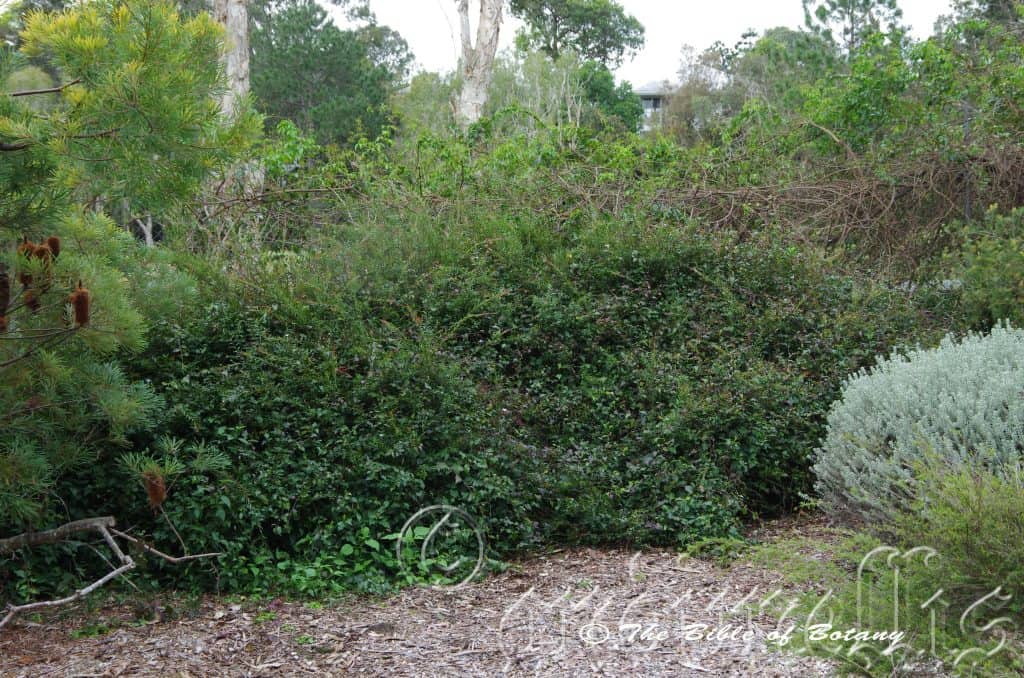
Rosser Park Benowa Qld.
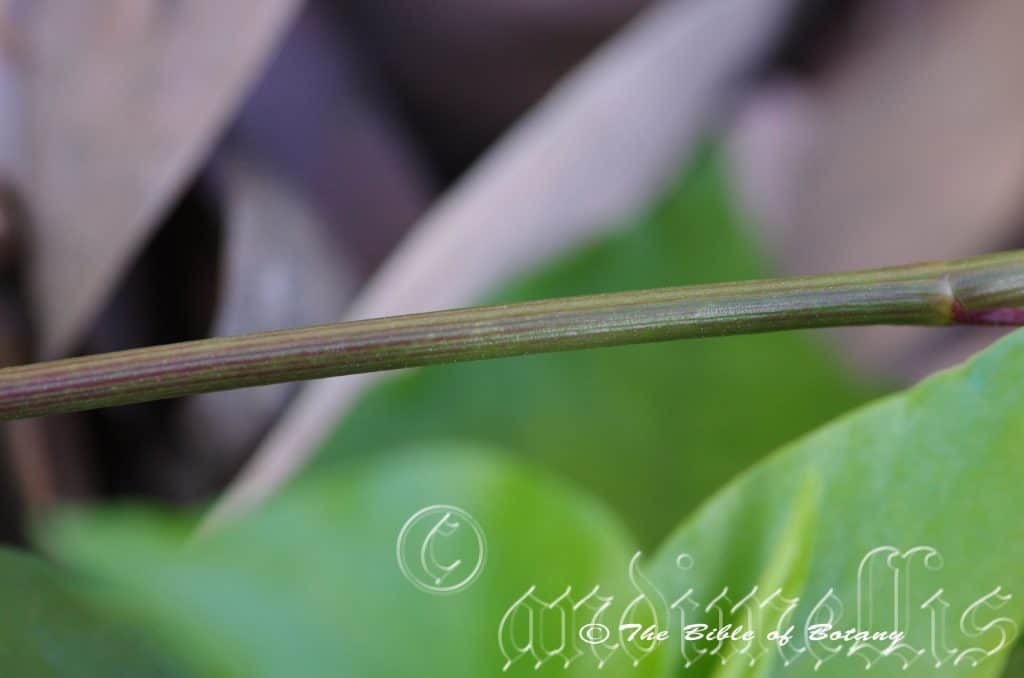
Rosser Park Benowa Qld.
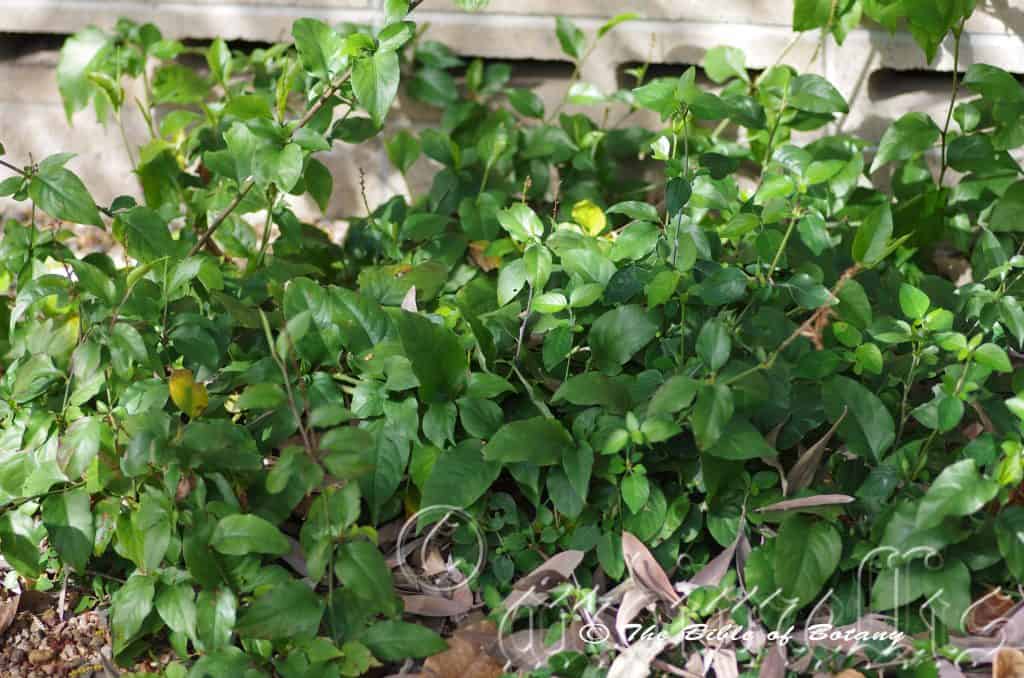
Rosser Park Benowa Qld.
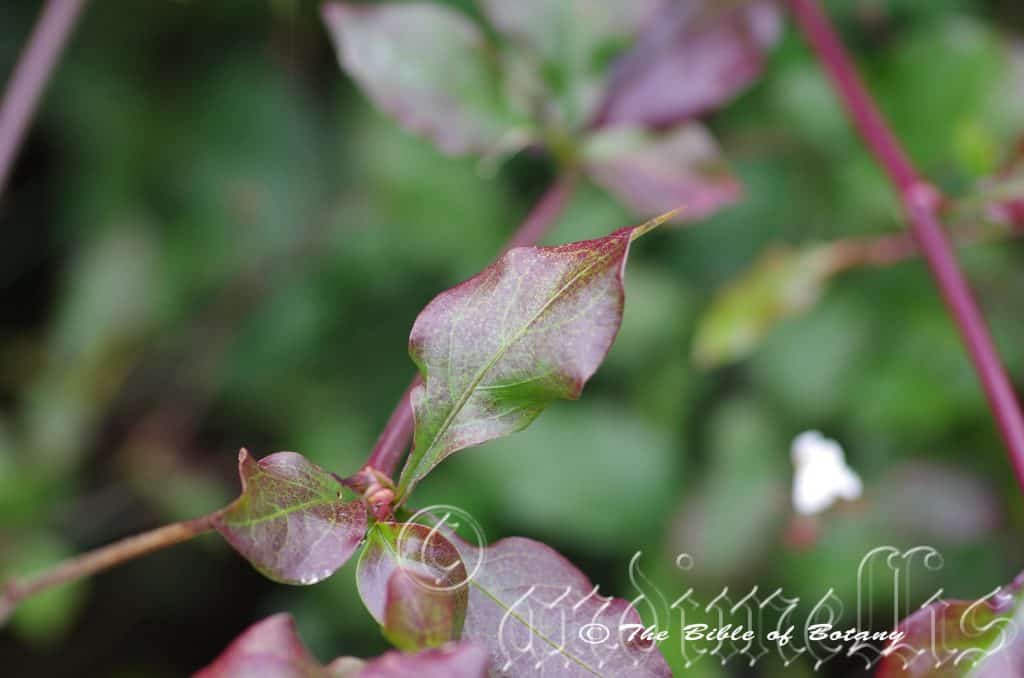
Anderson Botanic Gardens Qld.

Anderson Botanic Gardens Qld.
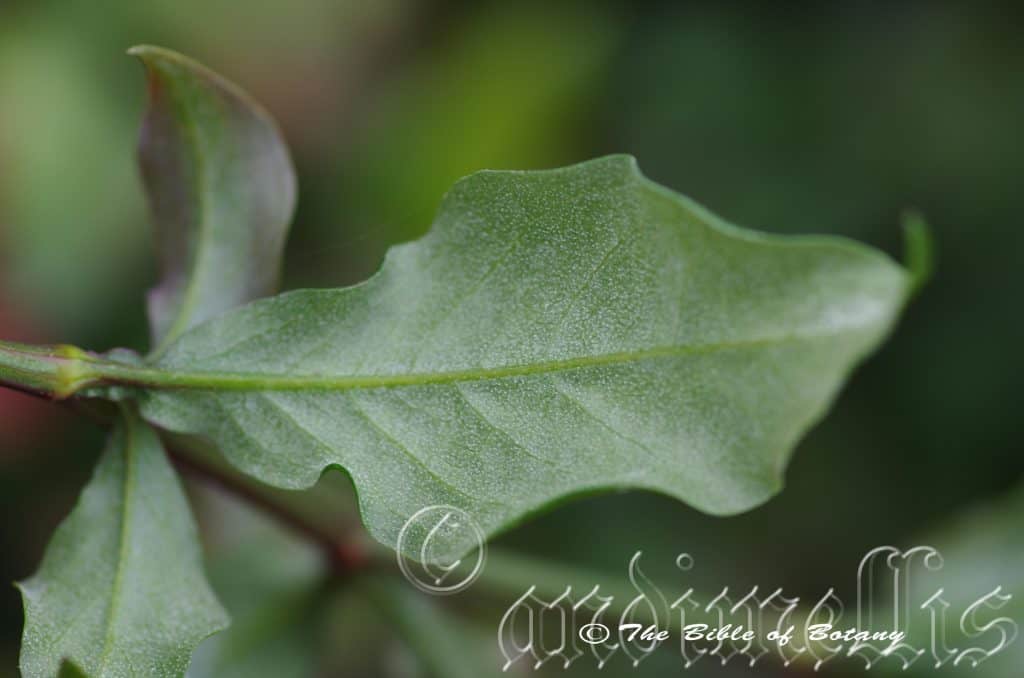
Anderson Botanic Gardens Qld.
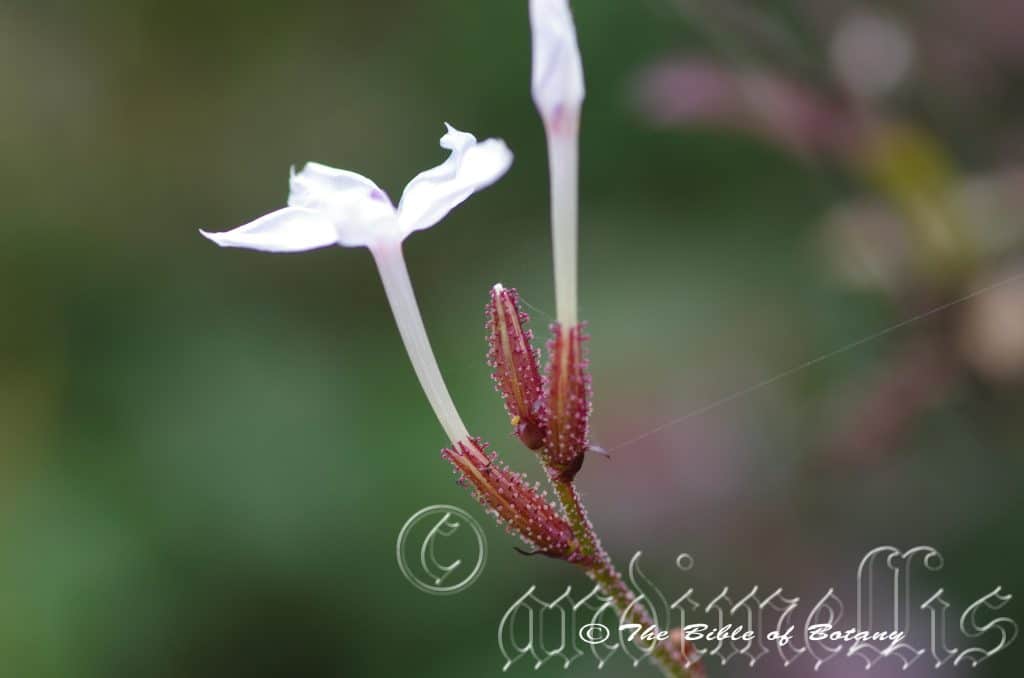
Anderson Botanic Gardens Qld.
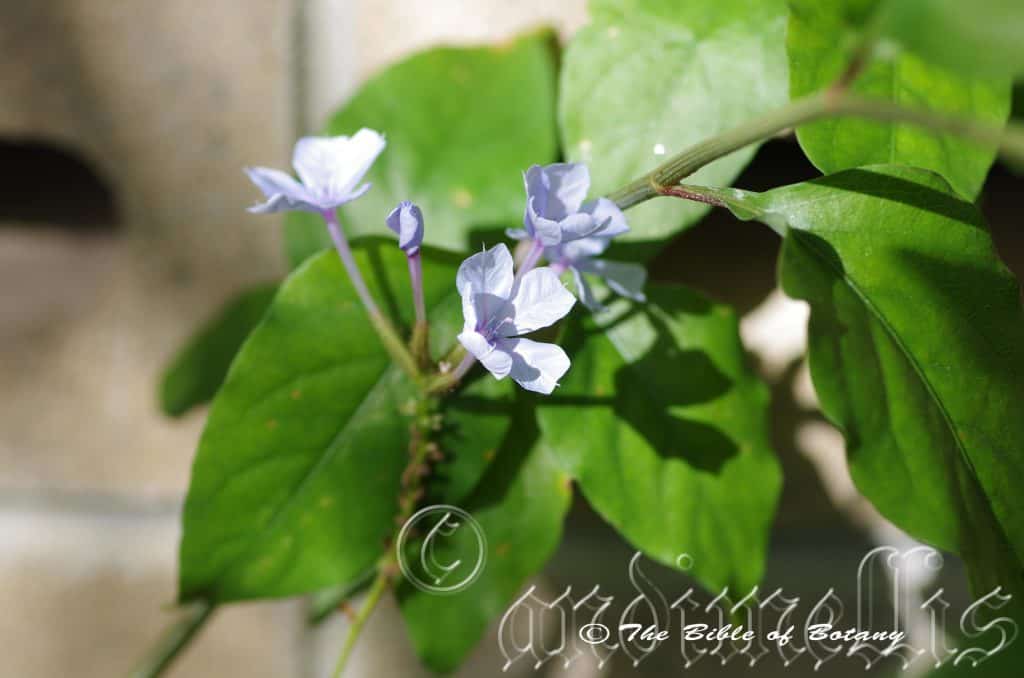
Rosser Park Benowa Qld.
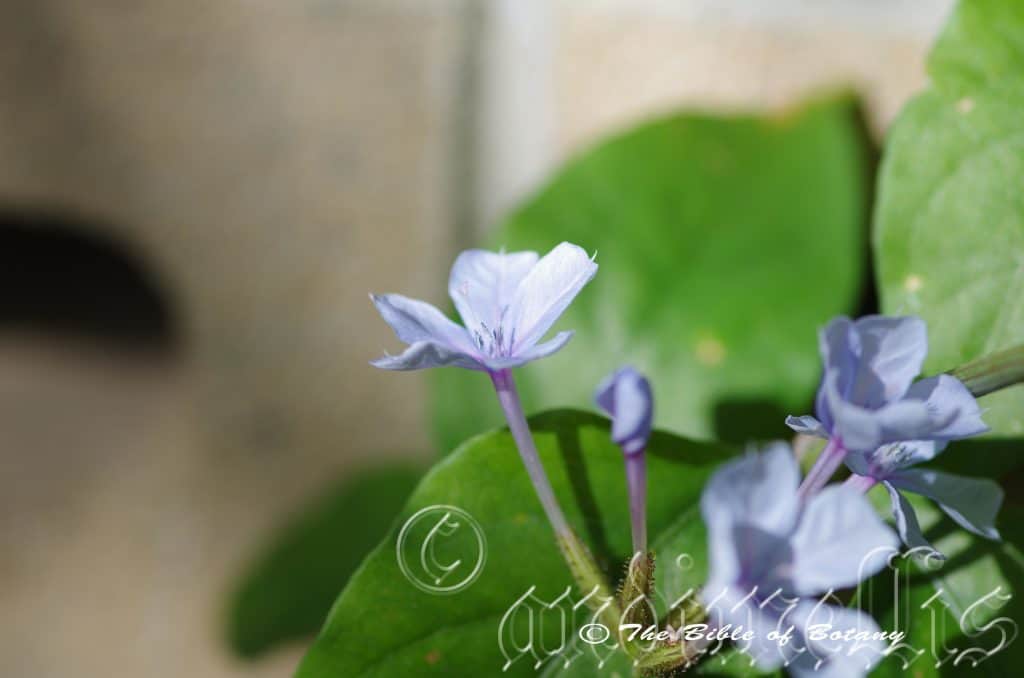
Rosser Park Benowa Qld.
Plumbago zeylanica
Classification:
Unranked: Eudicots
Unranked: Eudicotyledons
Order: Caryophyllus
Family: Plumbaginaceae
Genus: From Molybdaina, which is Ancient Greek for lead ore. It refers to the colour of the flowers of the earliest named species, which are pale grey-blue in colour.
Specie: From Zeylanca, which is Latinized for Sri Lanca. It refers to the type specimens, which were first discovered from Sri Lanca formally known as Ceylon.
Sub species:
Common Name: Native Plumbago or Leadwort.
Distribution:
Plumbago zeylanica is found in 3 disjunct populations across the northern half of Australia. The south western population is bounded by Dolphin Island, the Fortescue River in the Hamersley Range, Newman and the Carnarvon coast.
Further north it is found north of a line from the Dampier Peninsular on the north west Coast of Western Australia to the Oscar Ranges then east to Creswell station in eastern Northern Territory then south east to Linda, Arno Homestead and east to the Cannondale Scrub in central Queensland before turning south to the Moona River near Walca and east along the Hastings River in coastal New South Wales.
In the found in the centre of the northern Territory at Yuendumu on the Burt Plains, the Finke River and along the Todd River near Alice Springs.
It is also found on the off shore Islands as far east as Duncombe Bay on Norfolk Island.
https://avh.ala.org.au/occurrences/search?taxa=Plumbago+zeylanica#tab_mapView
Habitat Aspect Climate:
Plumbago zeylanica prefers light dappled shade to full sun. It grows as an understorey plant in monsoonal forests or vine thickets in the north along the coast to littoral heaths along the east coast and offshore Islands and open woodlands along seasonal creeks and rivers in the center and in arid and semi-arid zones. The altitude ranges from 5 meters ASL to 850 meters ASL.
The temperatures range from minus 3 degree in August to 42 degrees in January.
The rainfalls range from lows of 150mm to an average of 2400mm.
Soil Requirements:
Plumbago zeylanica prefers to grow on coarse sands to medium clays. The soils are derived from decomposed sandstones, granites, basalts, metamorphic rocks, shales, accumulated beach sands, accumulated coral sands or alluvial deposits. The soils pH ranges from 5pH to 7.5pH. It does not tolerate water logged soils. Non saline soils to very saline soils are tolerated as are salt laden winds.
Height & Spread:
Wild Plants: 0.6m to 1.2mm by 0.6m to 1.2m.
Characteristics:
Plumbago zeylanica grows as a scrambling shrub with pale grey to grey-green, glabrous stems. The smaller stems and new growth are pale green and glabrous.
The alternate, ovate to broad ovate leaves measure 20mm to 90mm in length by 10mm to 40mm in width. The glabrous petioles are often narrowly winged while the bases expanded and are cauline or almost encircle the stem. The petioles measure 6mm to 10mm in length. The bases are rounded to truncate while the apexes are acuminate or at times obtuse. The concolourous laminas are pale green to grass green and glabrous. The laminas are slightly convex on the upper surface and decurve gently downwards on the apical third. The margins are entire and wavy or undulating.
The inflorescences are spikes born from the terminals. The spike is sparsely covered in short, white or off white puberulent hairs. The 5 slightly ribbed calyx tubes are pale green to mid grass-green and are moderately covered in long grass-green hirsute hairs with red glandular tips.
The calyxes measure 8mm to 10mm in length. The white to pale blue tubular flowers are sessile. The corolla tube measures 15mm to 20mm in length by 2mm to 3mm in diameter below the 5 lobes. The obtuse lobes have an apiculate tip and measure 5.5mm to 7mm in length by 3.5mm to 4.5mm in width. The flowers appear from late September to late January.
Plumbago zeylanica’s fruits are small flattened or orbicular capsules. The capsules measure 3.5mm to 6mm in length by 0.7mm to 1.3mm in diameter. The green capsules turn pale brown and are covered in long glandular hirsute hairs of the persistent calyxes. The small rugose seeds are reddish-brown.
Wildlife:
Plumbago zeylanica‘s leaves are the favoured food source for the Zebra Blue Butterfly (Leptotes plinius) while the flowers are usually always attended by the butterflies.
It is an excellent source of nectar for most insects and small honeyeaters with long proboscis or tongues.
Cultivation:
Plumbago zeylanica is a shrub with its soft bright green leaves. It always looks fresh especially where a little water is added during the dry season or ground moisture is retained. It is most suitable for small, medium and large gardens close to the coast or high in the mountains in warm temperate frost free areas to sub-tropical gardens or cool tropical areas. It does well beneath tall trees including Tristania and Eucalyptus species provided soil moisture is retained. Keep it away from other smaller growing prostrate plants as it can be dominating under ideal conditions. The flowers are produced in profusion over a very long period which makes them a beautiful addition to the garden attracting butterflies and pollen flies.
It is good in small rockeries as the feature plant. Here it can be planted in small groups of 2 or 3 or as a standalone plant to create a more dominant role with small ground covers or annuals with deep yellow, orange or red flowers for contrast. If it is surrounded by shorter plants with fine or large foliages that are deep green foliage then a year round contrast can be created with a strong accent on the Plumbago zeylanica. Whether It is in flower or not in flower the dominance in foliage will stand unchallenged.
Prune mature plants back heavily by about 30mm to 50mm following flowering to promote better flowering in the following season. To enhance flowering further, nip the spent flowers out to prevent seed formation. The best seed producing flowers occur in the early part of the season so if seed is required leave a few flowers to develop as flowering hits its early peak and remove all smaller flower buds over the next week.
Propagation:
Seeds: Plumbago zeylanica seeds can be removed easily from the plants as the capsules split. Remove the calyxes from the capsules and place the capsules in a paper bag to dehisce.
Sow the seeds directly into a seed raising mix, keeping them moist not wet. Place the trays beneath 30mm shade cloth. When the seedlings are 20mm to 25mm tall, prick them out and plant them into 50mm native tubes using a good organic mix.
As the seedlings roots reach the bottom of the tubes plant them out into their permanent position. Do not delay.
Fertilize using Seaweed, fish emulsion or organic chicken pellets soaked in water and apply the liquid on an alternate basis. Fertilize every 2 months until the plants are established then once a year there after in spring or autumn to maintain health, vigour and better flowering and fruiting.
Cuttings: Fortunately the cuttings are relatively easy to strike. Use 100mm to 200mm long tip cuttings or lateral shoots from the present season’s growth. Take them in warmer months of the year when the plants are not under any stress. Remove half the leaves from the bottom section being careful not to tear the bark.
1 Prepare the cutting mix by adding two thirds sharp clean river sand, one third peat or one third perlite. These ingredients must be sterilized,
2 Select good material from non diseased plants,
3 Select semi green stems for cuttings. Look for a stem with two or three nodes,
4 Place the cutting on a flat, hard surface, and make a clean cut down one side of the cutting at the base for 10mm with a sharp sterile knife or razor blade. – This scarification of the node will increase the chances of roots emerging from this spot. Now remove all but one or two the leaves, leaving the apex leaves in tact. If the leaves are very large in proportion to the stem, cut off the apical halves.
5 Fill a saucer with water, and place a little medium strength rooting hormone into another container like a milk bottle top. Dip the node end of the cutting into the water and then into the rooting hormone. Tap off any excess hormone,
6 Use a small dipple stick or old pencil to poke a hole into the soilless potting mix. Ensure the hole is slightly larger than the stem diameter and be careful not to wipe the rooting hormone off the cuttings base. Place 2 to 4 cuttings in each of the 50mm native tubes,
7 I like to place the tubes in bucket with holes drilled in the bottom to allow excess water to drain out. A plastic bag that fits over the bucket is ideal to help maintain temperature and moisture. Place in a semi shaded, warm position like under 50mm shade cloth.
8 When the cuttings have struck, open the bag to allow air circulation for a few days to a week,
9 Once hardened off remove the cuttings from the bag and allow to further hardening for a few more days to a week,
10 Transplant into a good potting mix to grow on.
Fertilize using seaweed, fish emulsion or organic chicken pellets soaked in water on an alternate basis. Fertilize every two months until the plants are established then twice annually in early September or March to maintain health, vitality and better flowering.
Further Comments from Readers:
“Hi reader, it seems you use The Bible of Botany a lot. That’s great as we have great pleasure in bringing it to you! It’s a little awkward for us to ask, but our first aim is to purchase land approximately 1,600 hectares to link several parcels of N.P. into one at The Pinnacles NSW Australia, but we need your help. We’re not salespeople. We’re amateur botanists who have dedicated over 30 years to saving the environment in a practical way. We depend on donations to reach our goal. If you donate just $5, the price of your coffee this Sunday, We can help to keep the planet alive in a real way and continue to bring you regular updates and features on Australian plants all in one Botanical Bible. Any support is greatly appreciated. Thank you.”
In the spirit of reconciliation we acknowledge the Bundjalung, Gumbaynggirr and Yaegl and all aboriginal nations throughout Australia and their connections to land, sea and community. We pay our respect to their Elders past, present and future for the pleasures we have gained.
Pneumatopteris sogerensis
Classification:
Unranked 1: Polypodiophyta
Unranked 2: Polypodiopsida
Order: Polypodiales
Family: Thelypteridaceae
Genus: From Pneumon, which is Ancient Greek for a lung, Mat which is English for a floor covering and Pteris which is Ancient Greek for a fern. It refers to description of vertical growing breathing roots usually associated with mangrove or other plants growing in waterlogged soils or in shallow water.
Specie: Maybe from Soger, which is Latinized for the vernacular for the Malaysian fern of that name and Anum/Ensis, which is Latin for originating from. It refers to the ferns type species which was first discovered in Malaysia.
Sub species:
Common Name:
Distribution:
Pneumatopteris sogerensis is found south from the Mount Windsor Tableland and Tully in far north eastern Queensland and the Eungella National Park in central coastal Queensland.
The southern population occurs south from the Colondale National Park near Kilcoy to the upper Bellinger River near the junction of Bishop Creek. It is found on and east of the Great Dividing Range.
It is also found in Bismarck Archipelago, Bougainville, Maluku, New Guinea, Papua, Solomon Islands and Vanuatu.
https://avh.ala.org.au/occurrences/search?taxa=Pneumatopteris+sogerensis#tab_mapView
Habitat Aspect Climate:
Pneumatopteris sogerensis prefers light dappled shade to dense shade. It grows along streams in moist well developed rainforests dry rainforests or moist Eucalyptus forests adjoining moist subtropical rainforests. The altitude ranges from 40 meters ASL to 900 meters ASL.
The temperatures range from minus 3 degrees in August to 36 degrees in January.
The rainfall ranges from lows of 900mm to an average of 3200mm.
Soil Requirements:
Pneumatopteris sogerensis prefers to grow on sandy loams to medium clays with a high proportion of forest litter. The soils are usually derived from partially decomposed to decomposed brown basalts or black basalts close to the parent rock. The soils pH ranges from 5pH to 6.5pH. It does not tolerate of water logged soils. Non saline soils to moderately saline soils are tolerated.
Height & Spread:
Wild Plants: 1m to 1.5m by 1.5m to 2m.
Characteristics:
Pneumatopteris sogerensis’s rhizomes are short creeping, erect forming a small trunk on old plants and bearing broad, pale brown scales.
Pneumatopteris sogerensis’s has simple fronds. The fronds measure 1000mm to 1800mm in overall length. The slender 200mm to 300mm stipes are brown and are densely covered in narrow pale scales becoming less dense as they approach the apex. The single pinnate fronds with pinnatifid pinnae have 30 to 40 pairs of pinnae. The lower surface is glabrous. The longest pinnae measure 300mm in length with broad, obtuse teeth divided to halfway to midvein. The basal disjunct, pinnae are abruptly reduced in size and measure 9mm to 10mm in length.
The fertile fronds are identical to the sterile fronds. The sori are in a 1mm continuous band along the margin of the pinnae.
The sori are in regular parallel rows. The indusium is glabrous. It is a deep tan-brown to chocolate brown in colour.
Wildlife:
Pneumatopteris sogerensis’s wildlife is unknown.
Cultivation:
Pneumatopteris sogerensis makes an excellent small tree fern substitute where there is filtered light to medium shade or even some full sun in a protected position. It always look green and fresh provided adequate ground moisture is retained in the soil at all times. It is very suitable on medium clays to heavy clay soils and is most suitable for small medium and large gardens close to the coast in warm temperate, warm sub-tropical or cool tropical gardens. It is cold tolerant to temperatures as low as minus 1 degree once established provided frosts are light.
It is most suitable for use at the entrance to rainforest understory plant or in gullies where they will colonize banks. It likes plenty of leaf litter to help increase soil fertility, maintain soil moisture and to maintain a cool root zone.
Large frog or fish ponds are made the more attractive when surrounded by this fern which can spread over large areas if given the opportunity without becoming problem some. Their size makes for a balanced setting.
Propagation:
Fern Spores: Most people are put off at the thought of growing ferns from spore. Like all plants that produce their offspring from seed or spore the methods are the similar. Remember nature has been doing this for millions of years and has been very successful. I have had excellent results with almost every fern in Australia so give it a go. I have not grown this fern but would treat it the same as other ground ferns.
Step 1.Select spore from the fronds of Pneumatopteris sogerensis’s that is just starting to release its spore. Rinse the fronds under clean running water and dry.
Step 2.Place the dry fronds in a brown paper bag and keep them in a cool dark place like the linen closet for about a week before you are ready to sow the spore.
Step 3.Take a large ice cream container, a small ice cream container and a clean clear plastic bag large enough to cover the large ice cream container.
Step 4.Wash both containers so that It is very clean.
Step 5.Punch some small holes in the small ice cream container.
Step 6.Use a clean fine seed raising mix that has had some clay or crusher added to it about 10mm. Then moisten the mix.
Step 7.Place this mix in the microwave oven for 7 or 8 minutes with a glass of water. Allow them to cool in the oven. You will need the water later so do not tip it out.
Step 8.Take the brown paper bag out of its cupboard. Shake the bag and remove the fronds. You should have a brown powder or small round pepper size spore.
Step 9.Remove the mixture from the oven once it has cooled and place it in the small ice-cream container.
Step 10.Sprinkle the spore over the mixture in the small ice-cream container.
Step 11.Place the small ice-cream container in the large ice-cream container.
Step 12.Remove the water from the microwave and tip it into the ice-cream container so there is 20mm to 25mm of water in the bottom.
Step 13.Place the ice-cream containers in the plastic bag and seal.
Step 14.Place the contents and bag in a warm shady place. Shade houses and some window sills are ideal.
Step 15.Wait until the ferns are 20mm to 30 mm high before you attempt to transplant them. Once It is ready open the bag up and allow the air to flow around them. Every three days open the bag a little further so the ferns get use to their new environment. Allow them a week or two to harden off before you transplant them into 50mm standard tubes. Do not try to transplant them as single plants as It is a little delicate still. Fertilize using Seaweed, fish emulsion or organic chicken pellets soaked in water on an alternate basis. Once they reach 50mm to 60mm start separating the strongest ones and again do not move them far from their original position. After a few weeks the ferns will power away without any setbacks.
Fertilize using seaweed, fish emulsion or organic chicken pellets soaked in water on an alternate basis. Fertilize every two months until the plants are established then twice annually in early September and March to maintain better colour, health, vitality.
Further Comments from Readers:
“Hi reader, it seems you use The Bible of Botany a lot. That’s great as we have great pleasure in bringing it to you! It’s a little awkward for us to ask, but our first aim is to purchase land approximately 1,600 hectares to link several parcels of N.P. into one at The Pinnacles NSW Australia, but we need your help. We’re not salespeople. We’re amateur botanists who have dedicated over 30 years to saving the environment in a practical way. We depend on donations to reach our goal. If you donate just $5, the price of your coffee this Sunday, We can help to keep the planet alive in a real way and continue to bring you regular updates and features on Australian plants all in one Botanical Bible. Any support is greatly appreciated. Thank you.”
In the spirit of reconciliation we acknowledge the Bundjalung, Gumbaynggirr and Yaegl and all aboriginal nations throughout Australia and their connections to land, sea and community. We pay our respect to their Elders past, present and future for the pleasures we have gained.
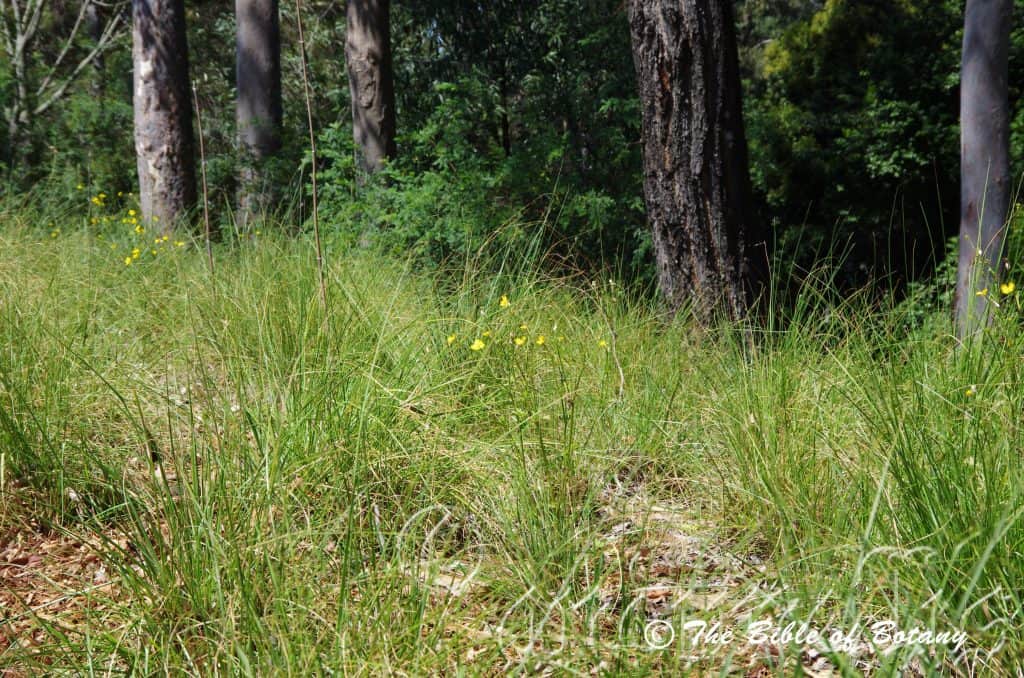
Mount Cootha Botanical Gardens Qld.
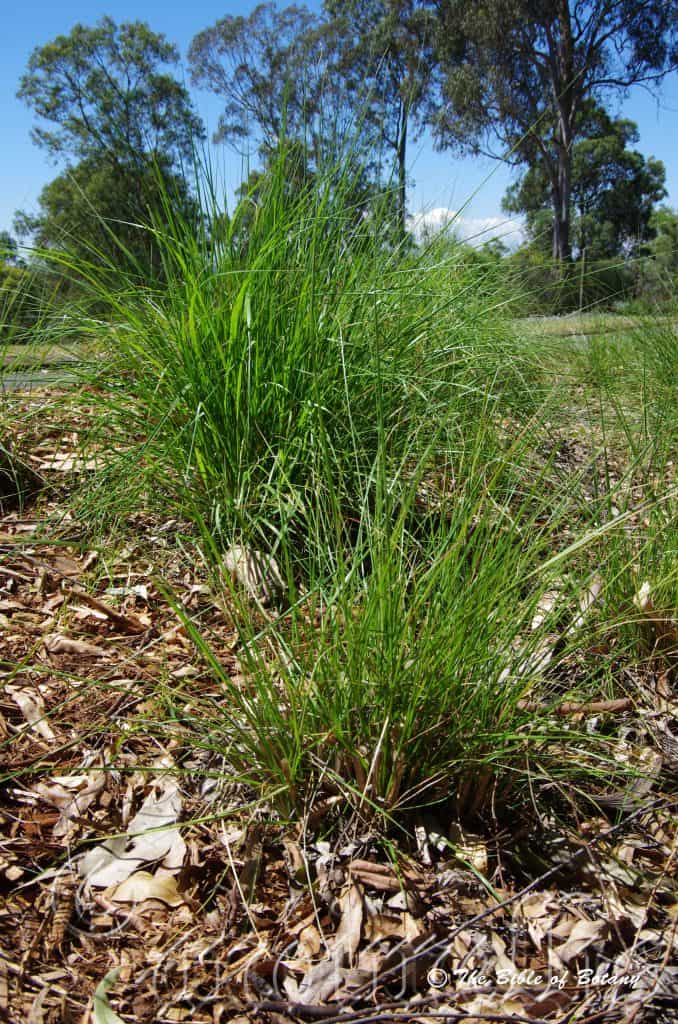
Mount Cootha Botanical Gardens Qld.
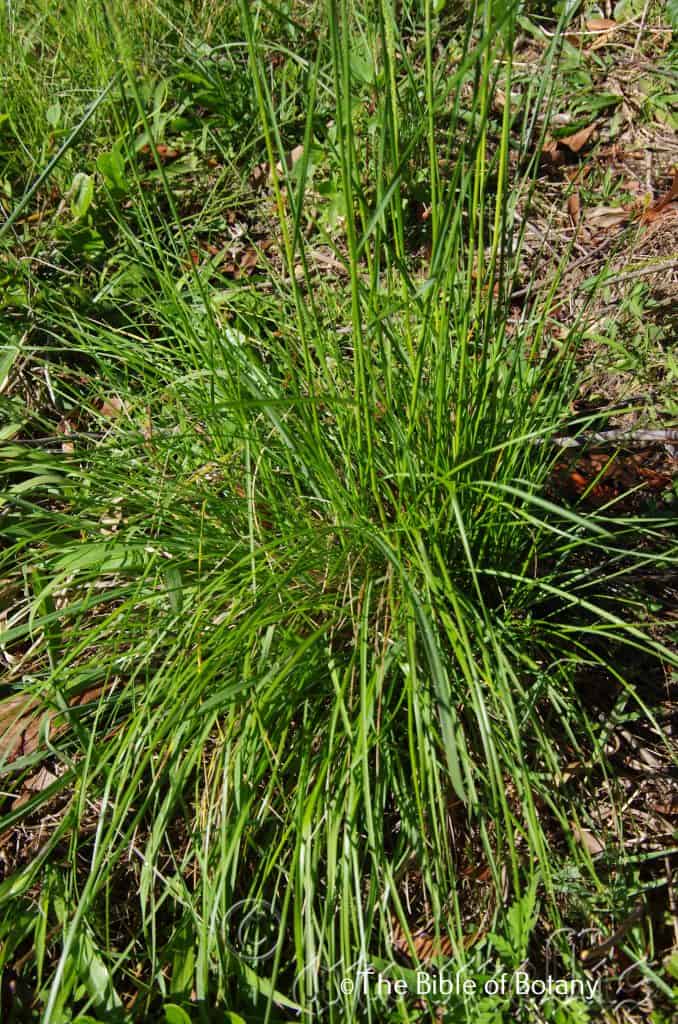
Pillar Valley NSW

Mount Cootha Botanical Gardens Qld.
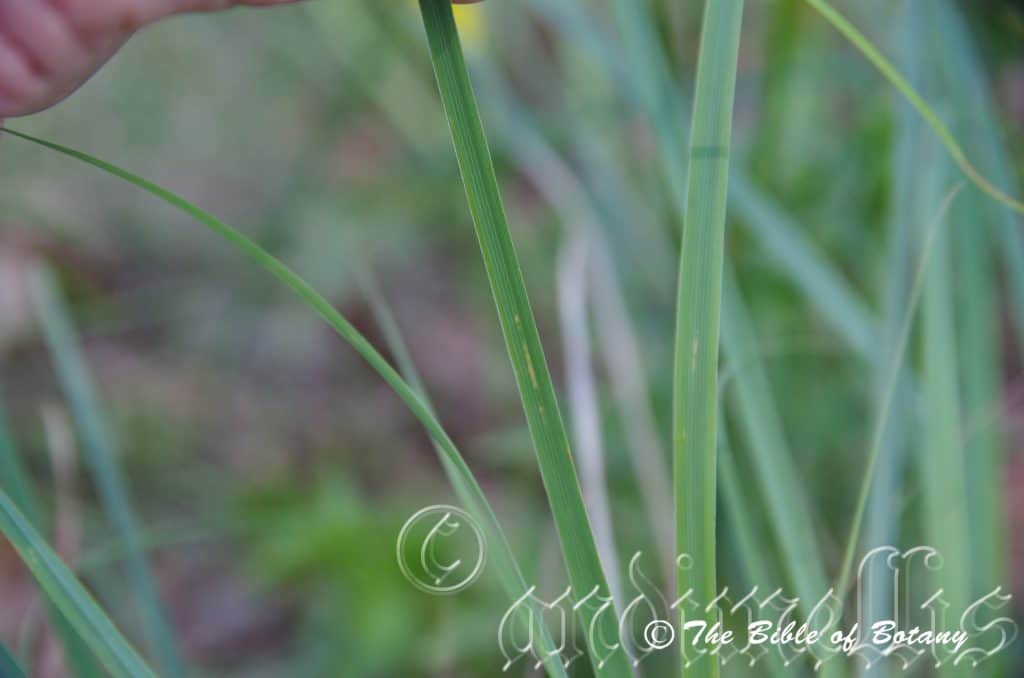
Mount Cootha Botanical Gardens Qld.
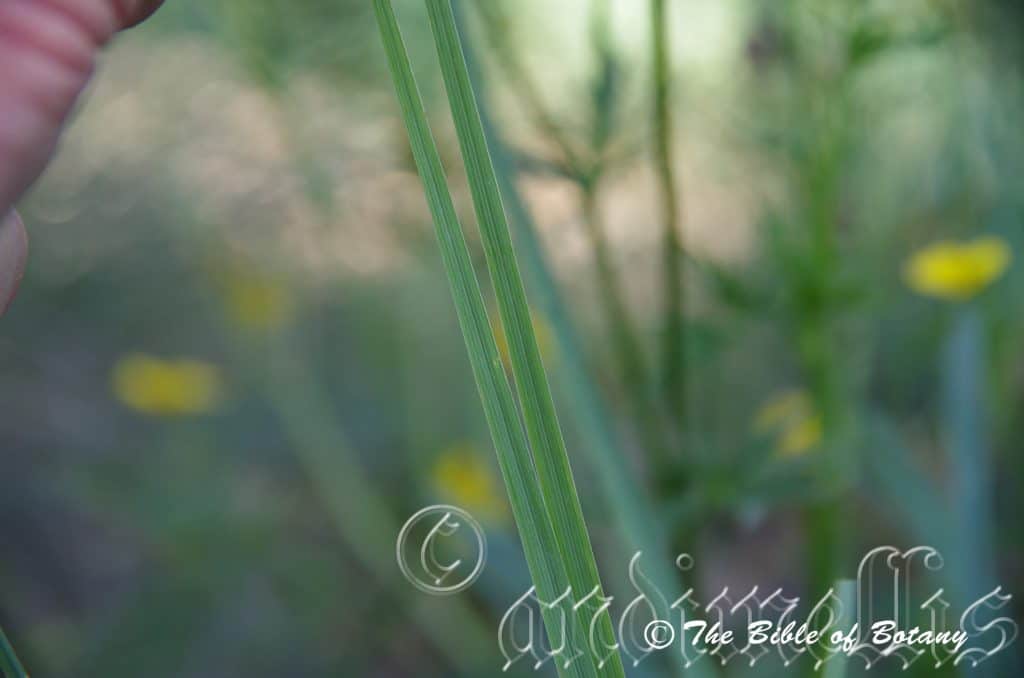
Mount Cootha Botanical Gardens Qld.
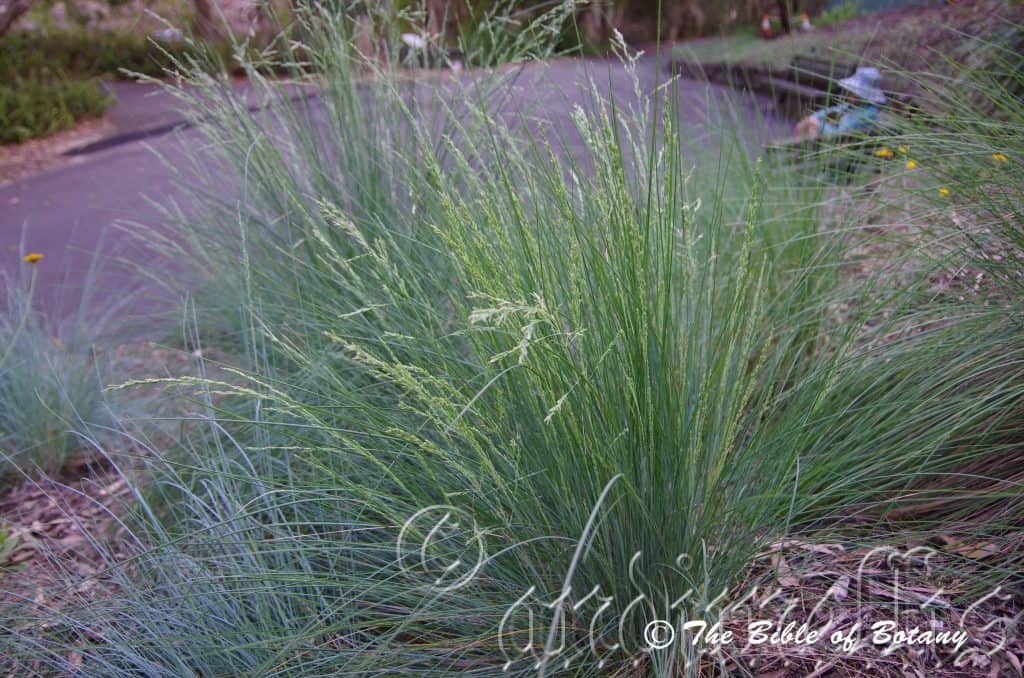
Mount Cootha Botanical Gardens Qld.
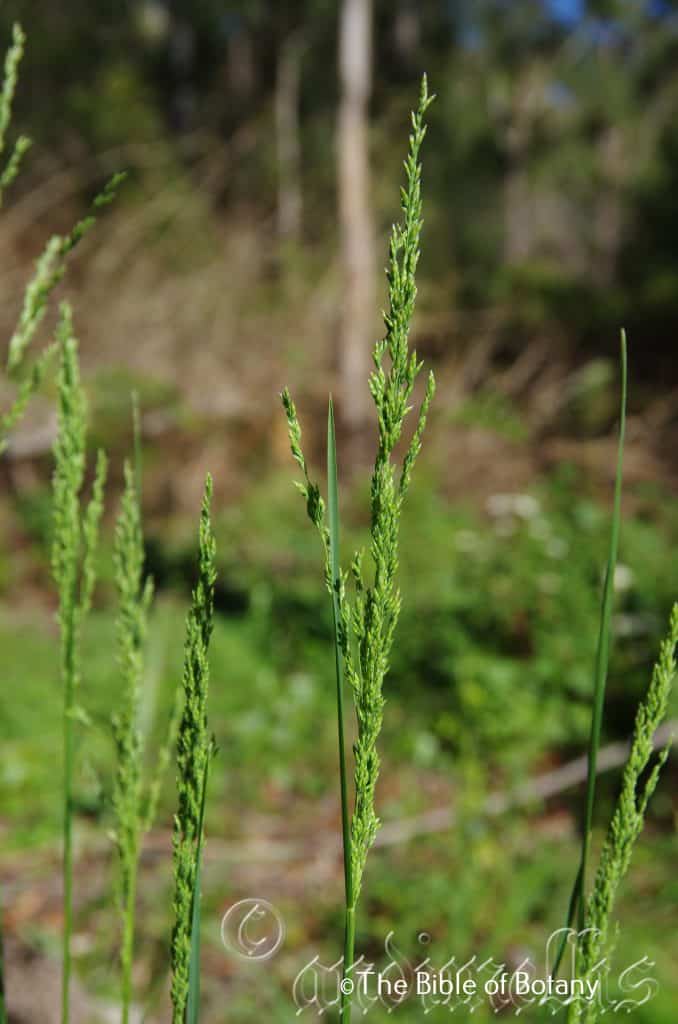
Pillar Valley NSW

Pillar Valley NSW
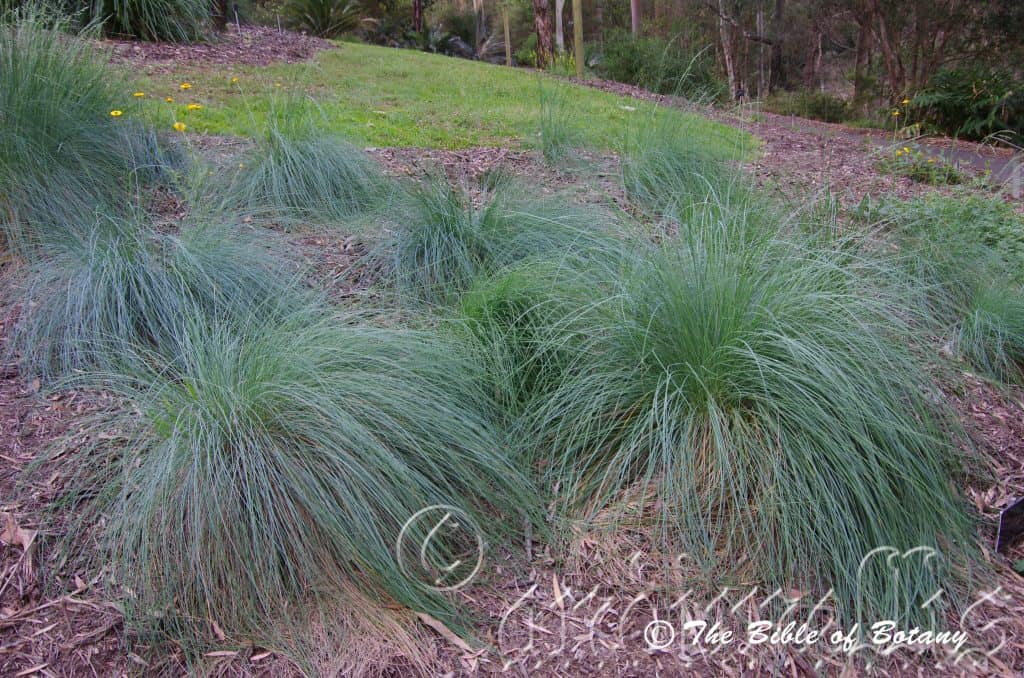
Mount Cootha Botanical Gardens Qld.
Poa labillardierei
Classification:
Unranked: Monocots
Unranked: Commelinids
Order: Poales
Family: Poaceae
Subfamily: Pooideae
Super Tribe: Poodae
Tribe: Poeae
Genus: From Poa, which is Ancient Greek for a type of fodder grass. It refers to the ancient name of grasses used to feed stock.
Specie: Is named in honour of Jacques Julian Houtou de Labillardiere; 1755–1834, who was a French botanist who travelled to Australia and wrote the most comprehensive account of Australian flora from his own collections.
Variety: Poa labillardierei var. acris. From Acrid, which is Latin for sharp or acidic. It usually refers to the taste of the fruits or seeds, which are more acidic than other species or sub species in the genus.
Variety: Poa labillardierei var. labillardier. Is named in honour of Jacques Julian Houtou de Labillardiere; 1755–1834, who was a French botanist who travelled to Australia and wrote the most comprehensive account of Australian flora from his own collections.
Common Name: Tussock.
Distribution:
Poa labillardierei var. acris is found south of Canberra to central Victoria, along the highlands of the Great Dividing Range.
It also occurs in central Tasmania on in the high country.
Poa labillardierei var. labillardierei is a widespread species found south of Murweh in south east Queensland to Marble Range on southern Eyre Peninsular with a couple of disjunct populations further west on Flinders Island near Streaky Bay and Fowlers Bay in southern South Australia.
There is a disjunct population further north between Mount Aberdeen near Bowen to Eungella National Park in north eastern Queensland.
It is also found on the Bass Straight Islands and most of mainland Tasmania except for the south western Highlands.
https://avh.ala.org.au/occurrences/search?taxa=Poa+billardierei#tab_mapView
Habitat Aspect Climate:
Poa labillardierei prefers dappled shade to full sun. It grows in open shallow depressions, river flats, river meanders and sheltered drainage lines. The altitude ranges from 5 meter ASL to 1400 meters ASL.
The temperatures range from minus 5 degrees in August to 40 degrees in February.
The rainfalls range from lows of 200mm to an average 2500mm annually.
Soil Requirements:
Poa labillardierei prefers to grow on sandy loams to heavy clays or light silts to heavy silts. The soils are usually derived from decomposed granites, sandstones, metamorphic rocks, shale or alluvial deposits. The soils pH. ranges from 4.5pH to 7pH. It does not tolerate water logged soils but prefers even moisture during the growing season and it will tolerate short periods of inundation. Non saline soils to moderately saline soils are tolerated.
Height & Spread:
Wild Plants: 0.3m to 1m by 0.6m to 1.5m.
Characteristics:
Poa labillardierei grows as a slender, tufted perennial with grass-green stems. The rhizomes are absent on this species. The culms are erect to geniculately ascending and measure 300mm to 1200mm in length. The simple branches are branched once. The leaf sheaths are basal cauline and antrorsely scabrous. The truncate ligule is a fringed membrane or a ciliolate membrane with abaxial, white pubescent hairs that measures 0.3mm to 0.5mm in length.
Poa labillardierei’s alternate linear leaves are basal and measure 150mm to 800mm in length by 0.6mm to 5mm in width. The bases taper slightly to the sheath while the apexes taper to a point. The concolourous laminas are grass-green and scabrous to scaberulous to and glabrous. The laminas are flat to involute while the margins are entire. The mid vein is prominent on the lower lamina.
The inflorescences of Poa labillardierei are compound panicles. The lanceolate panicles measure 100mm to 260mm in length. The peduncle and rachises are scabrous.
The spikelets are pedicelled with many flowers and 3 to 5 fertile florets. The florets rachilla extensions zig zags. The oblong spikelets are laterally compressed and measure 4mm to 8mm in length.
The glumes are similar. The lower oblong, membranous, glabrous glume has a single keel with 3 nerves. The upper oblong, membranous glume has a single keel with 3 nerves. The glumes measure 3.3mm to 4.3mm in length.
The upper oblong, lemma has a single keel with 5 nerves. The lemmas measure 2.5mm to 4.7mm in length. The lodicules are present while the lemmas surface is covered in fine off white puberulent hairs.
There are 3 white dimorphic, filiform filaments measure 3mm to 4.5mm in length and have pastel orange oblong anthers. The flowers appear from late October to February or after good rainfall.
Poa labillardierei’s fruits are oblong grains. The green grains turn dull creamy yellow when ripe. The grains measure 1.7mm to 2mm in length.
Confusing Subspecie:
Poa labillardierei subsp. labillardierei’s leaves are flat and are at least half the length of the culms. The sheath is not pigmented.
Poa labillardierei subsp.acris’s leaves are conduplicate and are less
than half the length of the culms. The sheaths are purplish in colour.
Wildlife:
Poa labillardierei’s seeds are eaten by many native finches including the Red-browed finch (Neochmia temporalis), The Eastern Rosella (Platycercus eximius) and Pale Headed Rosella (Platycercus adscitus) along with other small parrots will feast on the seeds when in season.
The leaves are an important food source for the Pretty Face Wallaby (Macropus parryi), the Red Kangaroo (Macropus rufus) and the Swamp Wallaby (Wallabia bicolor).
Cultivation:
Poa labillardierei is a fine, wispy foliaged grass for small to large gardens but can look rather weedy in small areas if not incorporated properly into the landscape. It can be slashed and will recover very quickly but is not suitable for long term heavy grazing.
It is ideally suitable for full sunny areas against walls and solid fences where it will soften the structures or add to the hard lines giving a vertical appearance and breaking the horizontal lines. To make the walls soft it requires lower growing annuals or perennials to be planted in front. The foreground plants are best if It is about 50mm of the height of Poa billardierei. Use natives with deep green leaves and brightly coloured flowers like Scaevola tomentosa or Hibbertia obtusifolia.
It would make an attractive rockery plant for medium rockeries when used sparingly so that it does not look weedy.
It is considered to be an intermediate fodder crop for nutrition but can deliver bulk and is best grown in conjunction with a legume pasture.
Propagation:
Seeds:
Poa labillardierei’s seeds directly into a seed raising mix. Cover them with 2mm of fine sand and keep moist not wet. Place the tray in a warm sunny position. When the seedlings are 25mm to 50mm tall, prick them out in small groups and plant them into 20mm tubes using a good organic mix.
Once the seedlings reach 75mm to 80mm in height, plant them out into their permanent position and water thoroughly with our recommended fertilizer. Plant them at 500mm centers.
Alternatively the seed can be broadcast out in small areas or used in a seeder on broad acreage.
Fertilize using organic chicken pellets at the time of sowing to maintain better colour, health, vitality and flowering.
Further Comments from Readers:
“Hi reader, it seems you use The Bible of Botany a lot. That’s great as we have great pleasure in bringing it to you! It’s a little awkward for us to ask, but our first aim is to purchase land approximately 1,600 hectares to link several parcels of N.P. into one at The Pinnacles NSW Australia, but we need your help. We’re not salespeople. We’re amateur botanists who have dedicated over 30 years to saving the environment in a practical way. We depend on donations to reach our goal. If you donate just $5, the price of your coffee this Sunday, We can help to keep the planet alive in a real way and continue to bring you regular updates and features on Australian plants all in one Botanical Bible. Any support is greatly appreciated. Thank you.”
In the spirit of reconciliation we acknowledge the Bundjalung, Gumbaynggirr and Yaegl and all aboriginal nations throughout Australia and their connections to land, sea and community. We pay our respect to their Elders past, present and future for the pleasures we have gained.
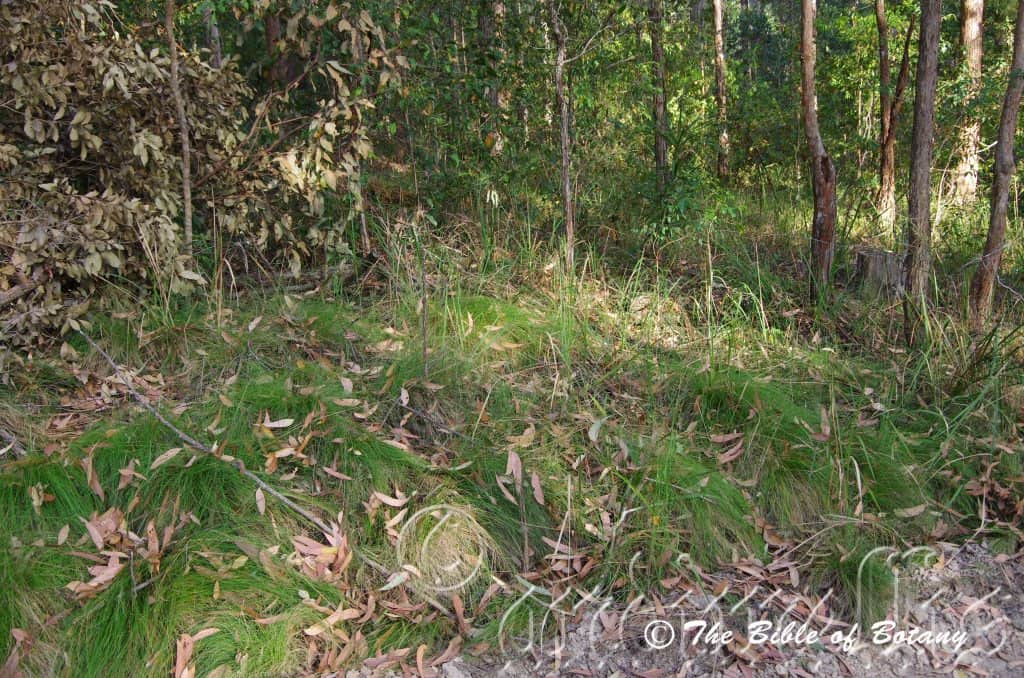
Kendall NSW
Kendall NSW
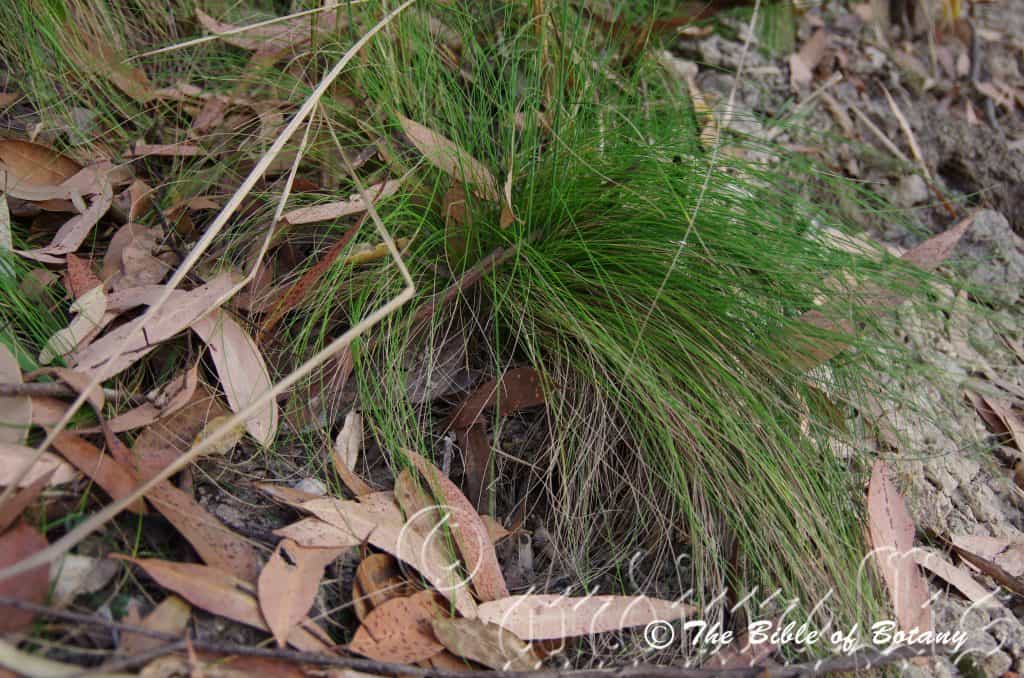
Kendall NSW
Poa sieberiana
Classification:
Unranked: Monocots
Unranked: Commelinids
Order: Poales
Family: Poaceae
Subfamily: Pooideae
Super Tribe: Poodae
Tribe: Poeae
Genus: From Poa, which is Ancient Greek for a type of fodder grass. It refers to the ancient name of grasses used to feed stock.
Specie: Is named in honour of Franz Wilhelm Sieber; 1789-1844, who was a Prague botanist who travelled around the world collecting plants, which included venturing into New South Wales in 1823.
Variety: Poa sieberiana var. cyanophylla. From Kýanos, which is Ancient Greek for sky blue to deep blue and Phullon/Phýllon, which is Ancient Greek fora leaf. It refers to the colour of the leaves, which are blue or grey-blue in colour.
Variety: Poa sieberiana var. hirtella. From Hirsutus, which is Latin for a hairy and shaggy. It refers to structures or organs, which are covered in short, bristles, often coarsely shaggy hairs.
Variety: Poa sieberiana var. sieberiana. Is named in honour of Franz Wilhelm Sieber; 1789-1844, who was a Prague botanist who travelled around the world collecting plants, which included venturing into New South Wales in 1823.
Common Name: Snow Grass
Distribution:
Poa sieberiana var. cyanophylla is found south from Orange in New South Wales to Mount Baw Baw in central eastern Victoria. It occurs on the western and eastern slopes and highlands of the Great Dividing Range.
It is also found on the Flinders Island group of Islands and most of the main Island of Tasmania except for the south western highlands.
Poa sieberiana var. hirtella is found south in a line east from the Border Ranges National Park in far southern Queensland to Tintinara in South Australia.
It also occurs in several disjunct populations in northern and central Tasmania.
Poa sieberiana var. sieberiana is found south from the Bunya Mountains in southern Queensland to Reedy Creek in south eastern South Australia. It occurs on the Western Plains, on and east of the Great Dividing Range to the coast.
It is also found on the eastern Bass Strait Islands including the Flinders Island group of Islands and most of the main Island of Tasmania except for the south western highlands.
https://avh.ala.org.au/occurrences/search?taxa=Poa+sieberiana#tab_mapView
Habitat Aspect Climate:
Poa sieberiana prefer dappled shade to full sun. It grows from sea level to the Alps in native grasslands, woodlands and open forests preferring drier sites. The altitude ranges vary with the different subspecies.
Poa sieberiana var. cyanophylla grows from 300 meter ASL to 1450 meters ASL.
Poa sieberiana var. hirtella grows from 20 meter ASL to 1250 meters ASL.
Poa sieberiana var. sieberiana grows from 2 meter ASL to 1750 meters ASL.
The temperatures range from minus 5 degrees in August to 40 degrees in February.
The rainfalls range from lows of 200mm to an average 1950mm annually.
Soil Requirements:
Poa sieberiana prefer to grow on sandy loams to heavy clays and light silts to heavy silts. The soils are usually derived from decomposed brown basalts, black basalts, shales, fatty sandstones, granites, conglomerates, metamorphic rocks and accumulated beach sands. The soils pH. ranges from 4.5pH to 6.5pH. It does not tolerate water logged soils. Non saline soils to moderately saline soils are tolerated.
Height & Spread:
Wild Plants: 0.3m to 1m by 0.6m to 1.5m.
Characteristics:
Poa sieberiana is a slender, tufted perennial with grass-green to deep green stems. The rhizomes are absent on this species. The erect culms measure 300mm to 1000mm in length. The mid culm’s internodes are finely striated and glabrous while the mid culm nodes are glabrous. The lateral branches are simple and appear from intravaginal innovations from near the base. The leaf sheaths are basal cauline and are scabrous or smooth. The truncate ligule is membranous and measures 0.1mm to 1mm in length.
Poa sieberiana’s alternate, linear leaves erect to pendulant and measure 200mm to 850mm in length by 0.3mm to 0.7mm in width. The bases taper slightly to the cauline sheath while the apexes taper to a point. The concolourous laminas are bluish-green to grey-green and are scaberulous to scabrous. The laminas are involute-terete to angulated-terete while the margins are entire. The mid vein is prominent on the lower lamina.
The inflorescences of Poa sieberiana are compound panicles. The peduncle and rachises are covered in white hirtellous hairs. The pyramidal panicles measure 40mm to 200mm in length with divaricate branches.
The spikelets are shortly pedicelled with 2 to 7 florets. The florets are without a rachilla extension. The ovate compressed florets measure 2.5mm to 6mm in length.
The glumes are similar. The lower lanceolate to ellipsoidal, membranous glume is glabrous and has a single keel with 1 to 3 nerves. The upper ovate, membranous glume has a single keel with 3 nerves. The glumes measure 1.5mm to 3mm in length.
The upper oblong, lemma has a single keel is scabrous with 5 nerves. The obtuse to sub-acute lemmas measure 1.8mm to 4mm in length. The lodicules are present while the lemma’s surface is covered in fine off white hirtellous hairs. There are 3 white anthers. The flowers appear throughout the year in warmer weather.
There are 3 white anthers. The flowers appear from late November to February.
Poa sieberiana’s fruits are oblong grains. The green grains turn dull creamy yellow when ripe. The grains measure 1.2mm to 1.6mm in length.
Confusing Subspecies varieties:
Poa sieberiana var. cyanophylla’s leaves are bluish-green and very narrow often thread like.
Poa sieberiana var. hirtella’s leaves are narrow and sparsely covered in white hirsute hairs.
Poa sieberiana var. sieberiana’s leaves are green and often dull. The leaves are narrow, flat and scabrous or dense covered in very short puberulent hairs.
Wildlife:
Poa sieberiana is the host plant for theWonder Brown butterfly (Heteronympha mirifica), Brown Ringlet Moth (Hypocysta metirius) and Orange Ringlet (Hypocysta adiante).
The seeds are eaten by many native finches including the Red-browed finch (Neochmia temporalis).
Cultivation:
Poa sieberiana is a fine, wispy foliaged grass for small to large gardens but can look rather weedy in small areas if not incorporated properly into the landscape. It can be slashed and will recover very quickly but is not suitable for long term heavy grazing.
It is ideally suitable for full sunny areas against walls and solid fences where it will soften the structures or add to the hard lines giving a vertical appearance and breaking the horizontal lines. To make the walls soft it requires lower growing annuals or perennials to be planted in front. The foreground plants are best if It is about 50mm of the height of Poa billardierei. Use natives with deep green leaves and brightly coloured flowers like Scaevola tomentosa or Hibbertia obtusifolia.
It is eaten by stock and native mammals. It is considered a reasonably good fodder crop and can deliver bulk. It is better than most the other Poa specie and is grown overseas in conjunction with legumes.
This species is suitable for heavy clay soils and heavy silts.
Propagation:
Seeds:
Poa sieberiana’s seeds can be sown without pre-treatment however cold stratification treatment particularly in colder areas will produce better more even germination. Sow the seeds directly into a seed raising mix. Cover them with 2mm of fine sand and keep moist not wet. Place the tray in a warm sunny position. When the seedlings are 25mm to 50mm tall, prick them out in small groups and plant them into 20mm tubes using a good organic mix.
Once the seedlings reach 75mm to 80mm in height, plant them out into their permanent position and water thoroughly with our recommended fertilizer. Plant them at 500mm centers.
Alternatively the seed can be broadcast out in small areas or used in a seeder on broad acreage.
Further Comments from Readers:
“Hi reader, it seems you use The Bible of Botany a lot. That’s great as we have great pleasure in bringing it to you! It’s a little awkward for us to ask, but our first aim is to purchase land approximately 1,600 hectares to link several parcels of N.P. into one at The Pinnacles NSW Australia, but we need your help. We’re not salespeople. We’re amateur botanists who have dedicated over 30 years to saving the environment in a practical way. We depend on donations to reach our goal. If you donate just $5, the price of your coffee this Sunday, We can help to keep the planet alive in a real way and continue to bring you regular updates and features on Australian plants all in one Botanical Bible. Any support is greatly appreciated. Thank you.”
In the spirit of reconciliation we acknowledge the Bundjalung, Gumbaynggirr and Yaegl and all aboriginal nations throughout Australia and their connections to land, sea and community. We pay our respect to their Elders past, present and future for the pleasures we have gained.

Border Ranges National Park NSW
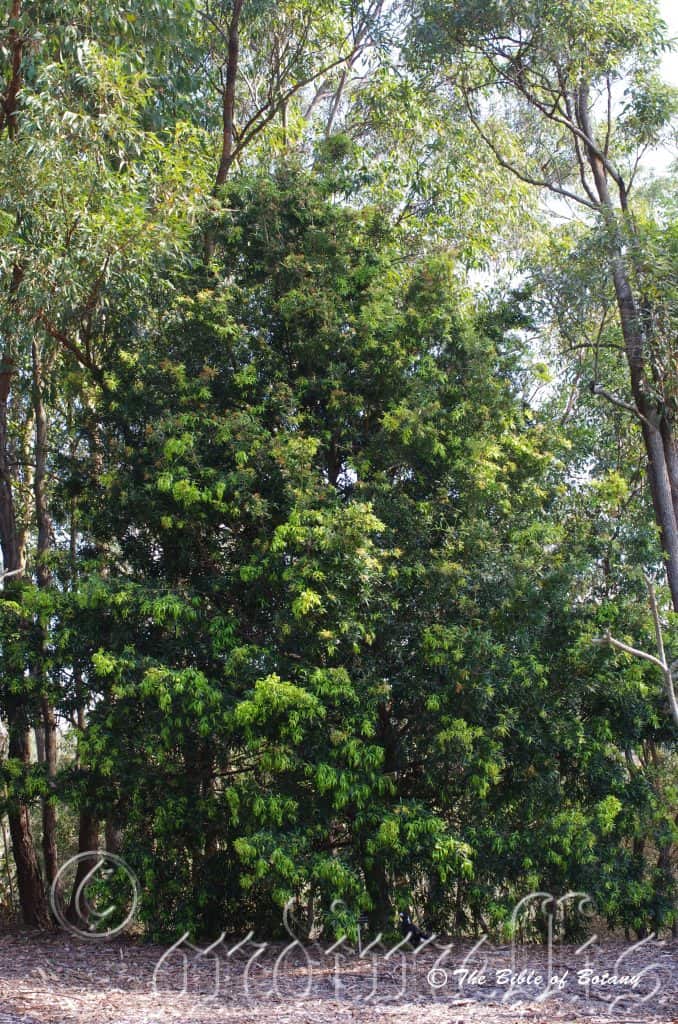
Mount Cootha Botanic Gardens Qld.
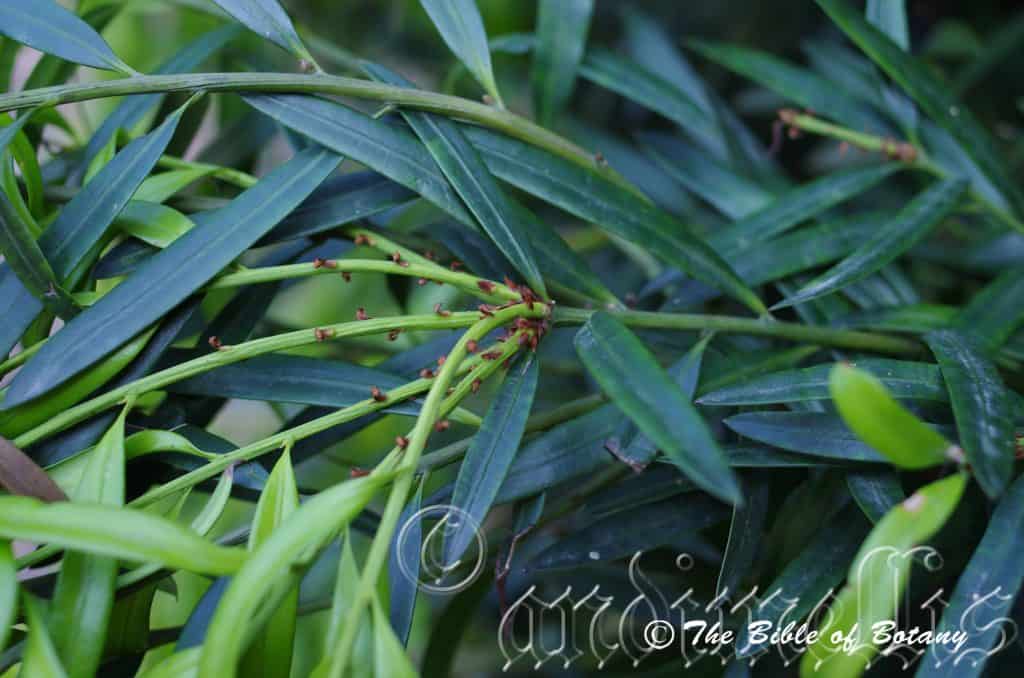
Mount Cootha Botanic Gardens Qld.

Mount Cootha Botanic Gardens Qld.
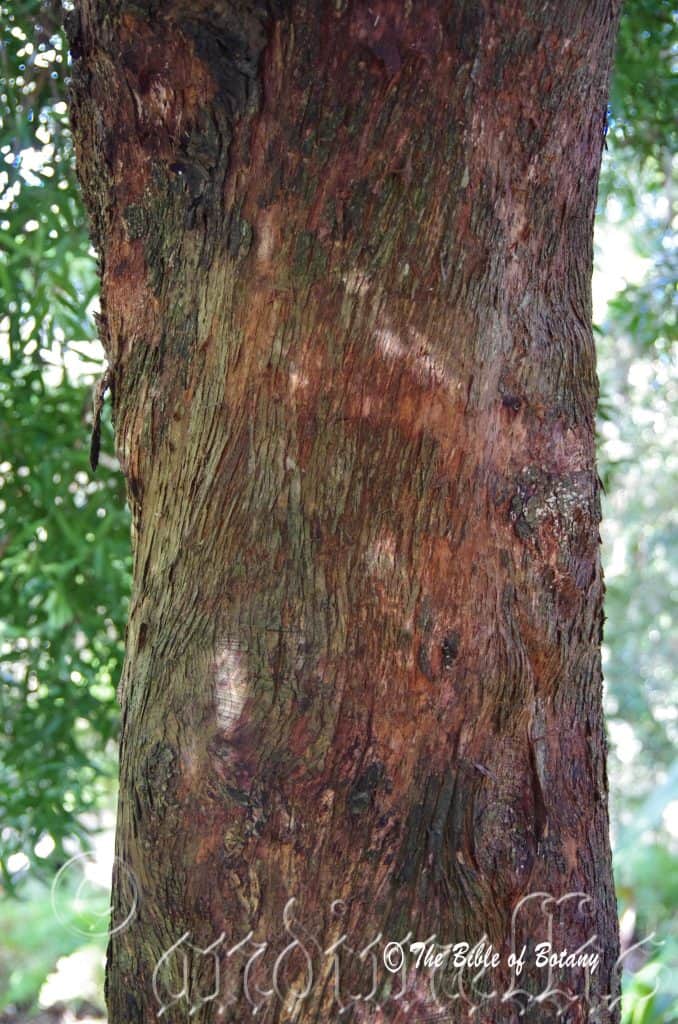
NCBG Coffs Harbour NSW
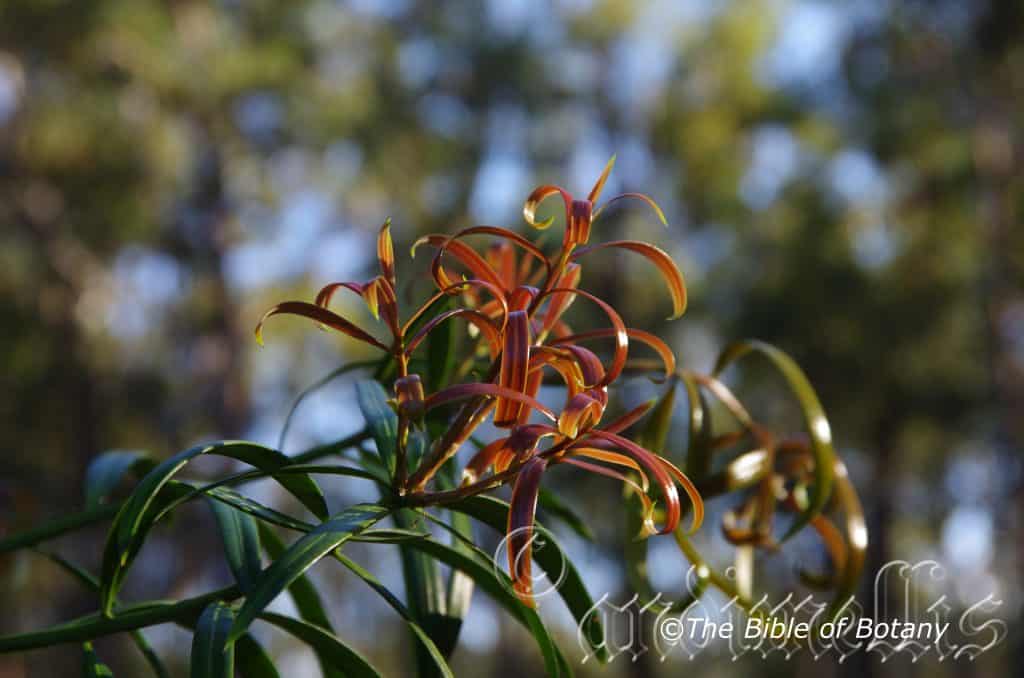
Author’s Garden The Pinnacles NSW

Author’s Garden The Pinnacles NSW
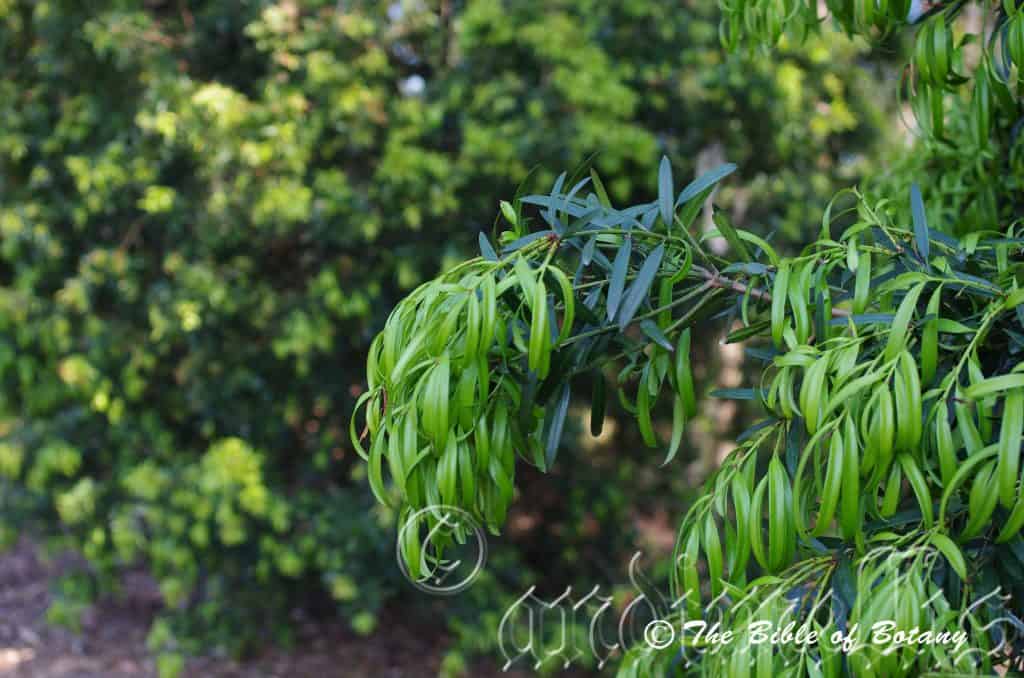
Mount Cootha Botanic Gardens Qld.

Author’s Garden The Pinnacles NSW

Author’s Garden The Pinnacles NSW
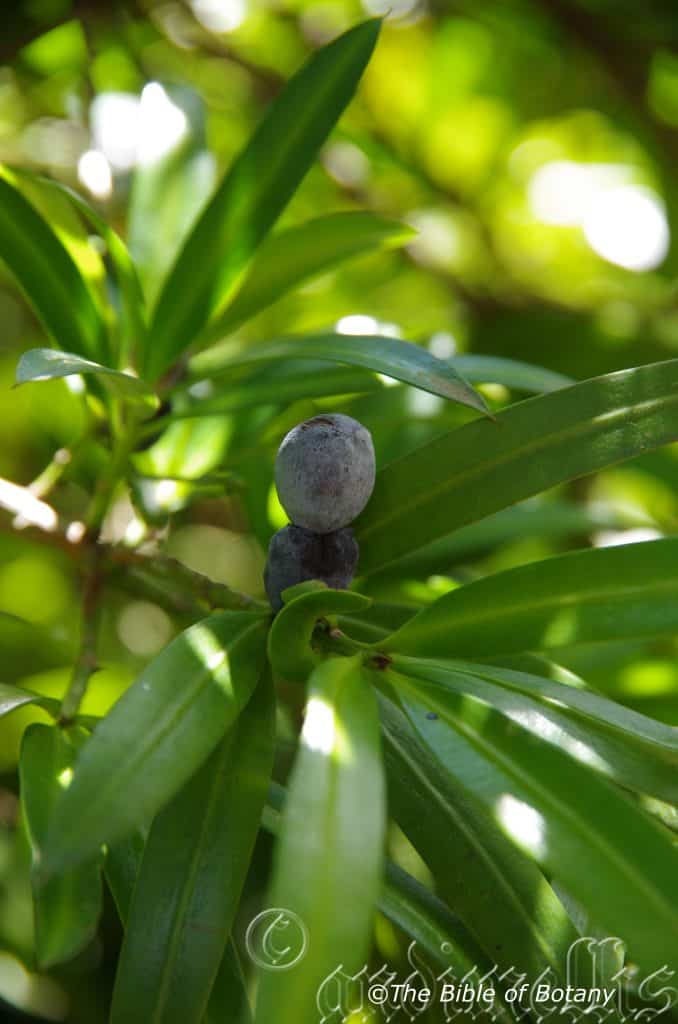
National Botanic Gardens ACT

National Botanic Gardens ACT
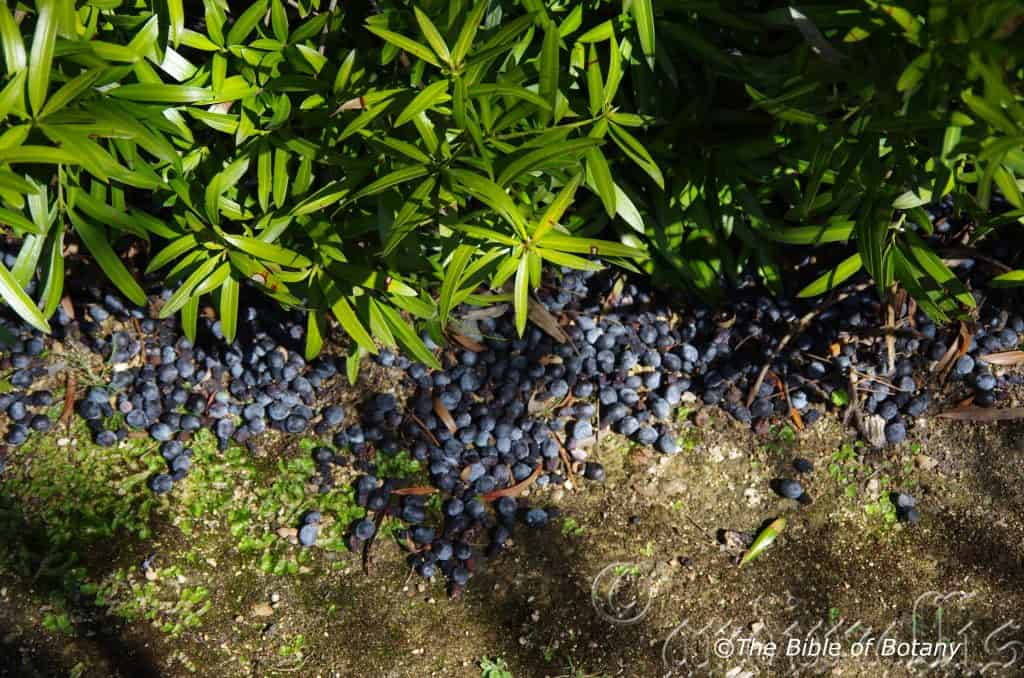
National Botanic Gardens ACT
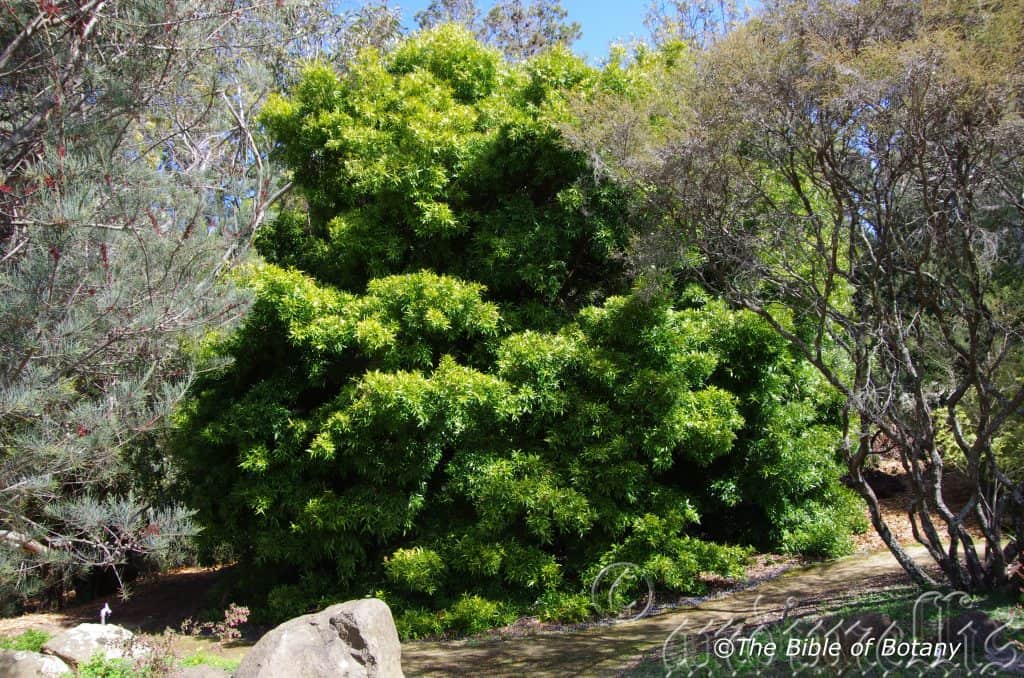
National Botanic Gardens ACT

Grafton NSW
Podocarpus elatus
Classification:
Unranked: Pinophyta
Class: Pinopsida
Order: Pinales
Family: Podocarpaceae
Genus: From Pous/Podos, which is Ancient Greek or Pedi, which is Latin for a foot or feet and Karpós, which is Ancient Greek for a fruit. It refers to fruits, which are like little feet from the apex of the swollen petioles.
Specie: From Elatus, which is Latin for tall. It refers to the plants, being very tall and taller much than other species in the genus.
Sub specie:
Common Name: Brown Pine.
The local Gumbaynggirr clan language it is known as Jaambalga.
Distribution:
Podocarpus elatus is found south from Cape Melville and Yarradine on Cape York Peninsular to Beecroft Peninsular in southern coastal New South Wales. It is found on and east of the Great Dividing Range.
https://avh.ala.org.au/occurrences/search?taxa=Podocarpus+elatus#tab_mapView
Habitat Aspect Climate:
Podocarpus elatus prefers dappled shade to full sun. It grows in the mountains in well-developed rainforests, drier rainforests adjacent to well-developed rainforests and well developed littoral rainforests. The altitude ranges from 15 meters to 650 meters ASL.
The temperatures range from minus 4 degrees in July to 38 degrees in January.
The rainfall ranges from lows of 1000mm to 3000mm average per annum.
Soil Requirements:
Podocarpus elatus prefers better quality sandy loams medium clays with a high proportion of leaf litter. The soils are usually derived from decomposed black basalts, brown basalts, shale, sandstones or metamorphic rocks. The soils pH ranges from 5pH to 6.5pH. It does not tolerate water logged soils. Non saline soils to moderately saline soils are tolerated.
Height & Spread:
Wild Plants:25m to 35m by 10m to 12m.
Characteristics:
Podocarpus elatus grows as a medium to tall tree. The bark is deep grey to deep brown with longitudinal fissures. The fissures may become scaly on old trees. Branches are deep grey to deep brown while the branchlets are thin grass-green and glabrous.
The alternate narrow oblong to linear leaves of Podocarpus elatus measure 50mm to 140mm in length by 6mm to 18mm in width. The base is cuneate while the apex is acute-obtuse with a short, pungent mucronate tip. The concolourous laminas are deep sea-green and glabrous. The new growth is a rich glossy tan turning yellow-green then to the mature deep sea-green. The leaf margins are entire and flat. The mid vein is slightly prominent on the upper lamina and is only just visible on the lower lamina.
The male inflorescences of Podocarpus elatus are cones born singularly or in small clusters from the leaf axils and measure 20mm to 30mm in length. The cones have few scales. The microsporophylls measure 0.4mm to 0.6mm in length.
The female cones are born solitary from the leaf axils. The cones have few scales which unite with the petiole to form a fleshy receptacle. The fruit receptacles turn a deep purple black when ripe and are covered in a glaucous film. The petioles lengthen to 4mm to 6mm in length. The fleshy cones expand to 15mm to 24mm in length by 12mm to 20mm in diameter. The round purple black seed is covered in a glaucous film and measures 8.5mm to 10.5mm in diameter. The seeds ripen from January in northern Queensland to August in Canberra. I think It is a biannual producer. That is they bear one heavy crop followed by a light crop the following season.
Wildlife:
Podocarpus elatus’s do not appear to have any predators though the reality is quite different. The Lymantriid moth’s little tufted caterpillars enjoy a meal occasionally but do very little damage.
The fruits or the swollen section of the petioles are eaten by the Cat bird, Satin Bower Bird flying foxes and native rodents.
The aborigines ate the fruits which have a mucous but sweet plum flavour with pine needles added for extra flavour. The fruits make an excellent jam and jelly.
The trees set copious quantities of fruit and should be grown as a commercial crop in Australia with the jam or sources firmly in mind for value adding.
Cultivation:
Podocarpus elatus is a magnificent large tree that deserves a place in every temperate, sub-tropical, tropical and semi-arid native or exotic garden. In cultivation they will grow from 10 meters to 18 meters in height by 6 meters to 12 meters in diameter when grown in the open.
It is tall pyramidal trees that are slow growing initially. Trees are very variable in fruit production with some trees starting to produce fruit at 7 years of age and others I have had not set a fruit after 16 years in the ground.
They grow exceptionally well on lighter or heavy soils provided the soils are deep and have a lot of leaf litter covering the ground. If these requirements are met they can cope with temperatures as low as minus 7 degrees and up to 36 degrees. It is drought resistant in their rainfall zones once established.
Add to the above, if It is given an adequate supply of water and a little native fertilizer on a regular basis the plants that flower early will respond with very heavy crops of fruit.
It is excellent in parks and large gardens where a formal look is required or an open space is wanted with shade.
The trees would also make very good accent trees in front of low set commercial or industrial sheds where they will break up hard rigid architectural lines and give warmth and breadth to a building. In front of high rise buildings they give balance especially where they could be grown in curves meandering to the entry doors or for something different used from the front of the path and meander back to the far corners with shrubs or flowers planted between the trees and the building and the trees and the nature strip.
Podocarpus elatus make very good indoor and patio plants living quite well inside for several years until they out grow their containers or reach the ceiling. We used these trees as our Christmas trees when our daughters were young.
These trees make excellent bonsai specimens that are easy to work because have very flexible branches that grow in quick flushes.
Propagation:
Seeds: The seeds from Podocarpus elatus can be removed easily from the plants as they ripen. Once the first fruits begin to drop to the ground all the fruit can be harvested from a given tree or collected from the ground.
Sow freshly treated seeds directly into a seed raising mix, keeping them moist not wet. When the seedlings are 20mm to 25mm tall, prick them out and plant them into 50mm native tubes using a good organic mix.
As the seedlings roots reach the bottom of the tubes plant them out into their permanent position. Do not delay.
Cuttings: Unfortunately Podocarpus elatus cuttings do not strike easy. Cuttings need to be used where good fruiting plants are required or deep brown new growth is wanted. Try using 150mm to 250mm long from the previous season’s growth. Take them in the warmer months of the year. Remove half the leaves from the bottom section being careful not to tear the bark.
1 Prepare the cutting mix by adding two thirds sharp clean river sand, one third peat or one third perlite. These ingredients must be sterilized,
2 Select good material from non diseased plants,
3 Select semi green stems for cuttings. Look for a stem with two or three nodes,
4 Place the cutting on a flat, hard surface, and make a clean cut down one side of the cutting at the base for 10mm with a sharp sterile knife or razor blade. – This scarification of the node will increase the chances of roots emerging from this spot. Now remove all but one or two the leaves, leaving the apex leaves in tact. If the leaves are very large in proportion to the stem, cut off the apical halves.
5 Fill a saucer with water, and place a little medium strength rooting hormone into another container like a milk bottle top. Dip the node end of the cutting into the water and then into the rooting hormone. Tap off any excess hormone,
6 Use a small dipple stick or old pencil to poke a hole into the soilless potting mix. Ensure the hole is slightly larger than the stem diameter and be careful not to wipe the rooting hormone off the cuttings base. Place 2 to 4 cuttings in each of the 50mm native tubes,
7 I like to place the tubes in bucket with holes drilled in the bottom to allow excess water to drain out. A plastic bag that fits over the bucket is ideal to help maintain temperature and moisture. Place in a semi shaded, warm position like under 50mm shade cloth.
8 When the cuttings have struck, open the bag to allow air circulation for a few days to a week,
9 Once hardened off remove the cuttings from the bag and allow to further hardening for a few more days to a week,
10 Transplant into a good potting mix to grow on.
Fertilize using seaweed, fish emulsion or organic chicken pellets soaked in water on an alternate basis. Fertilize every two months until the plants are established then twice annually in early September or March to maintain health, vitality and better flowering.
Grafting: I am in the strong opinion that Podocarpus elatus could be grafted onto Podocarpus lawrencei or its own stock for fruit production. No work to my knowledge has been performed in this area so it is all speculation at this time. The idea of using Podocarpus lawrencei is that it would restrict the size of the plants in the field making it more practical when harvesting the fruit. This is used in the citrus industry grafting onto Citrange to restrict the size of grape fruit and orange trees.
I prefer to use the cleft graft as it is the easiest and most reliable.
1. Take the stock which should be 150mm in height and make a neat clean horizontal cut.
2. The vertical incision into the stock. Place a rubber band around the stock at the 80mm mark. Make four 75mm vertical incisions through the rootstock’s bark, starting at the top and stopping just above the rubber band.
Now cut the wood, off trying not to damage the bark and cambian layer.
2. Prepare the Scion, which should be 150mm and have at least 3 sets of nodes above the stock. It should be of equal diameter and remove the bark so that the cambian is still in tack and you have four sides that it fits neatly into the stock.
3. Connect Scion and Rootstock by sliding the scion between the four slices of bark.
4: Secure the Graft by tying it tightly with grafting tape being careful not to twist the stock’s bark.
5: Protect the Graft by wrapping it with plasticine.
6: Secure with a wrapping of plastic so that it is not affected by adverse weather patterns.
Fertilize using seaweed, fish emulsion or organic chicken pellets soaked in water on an alternate basis. Fertilize every two months until the plants are established then twice annually in early September and March to maintain better colour, health, vitality and flowering.
Further Comments from Readers:
“Hi reader, it seems you use The Bible of Botany a lot. That’s great as we have great pleasure in bringing it to you! It’s a little awkward for us to ask, but our first aim is to purchase land approximately 1,600 hectares to link several parcels of N.P. into one at The Pinnacles NSW Australia, but we need your help. We’re not salespeople. We’re amateur botanists who have dedicated over 30 years to saving the environment in a practical way. We depend on donations to reach our goal. If you donate just $5, the price of your coffee this Sunday, We can help to keep the planet alive in a real way and continue to bring you regular updates and features on Australian plants all in one Botanical Bible. Any support is greatly appreciated. Thank you.”
In the spirit of reconciliation we acknowledge the Bundjalung, Gumbaynggirr and Yaegl and all aboriginal nations throughout Australia and their connections to land, sea and community. We pay our respect to their Elders past, present and future for the pleasures we have gained.
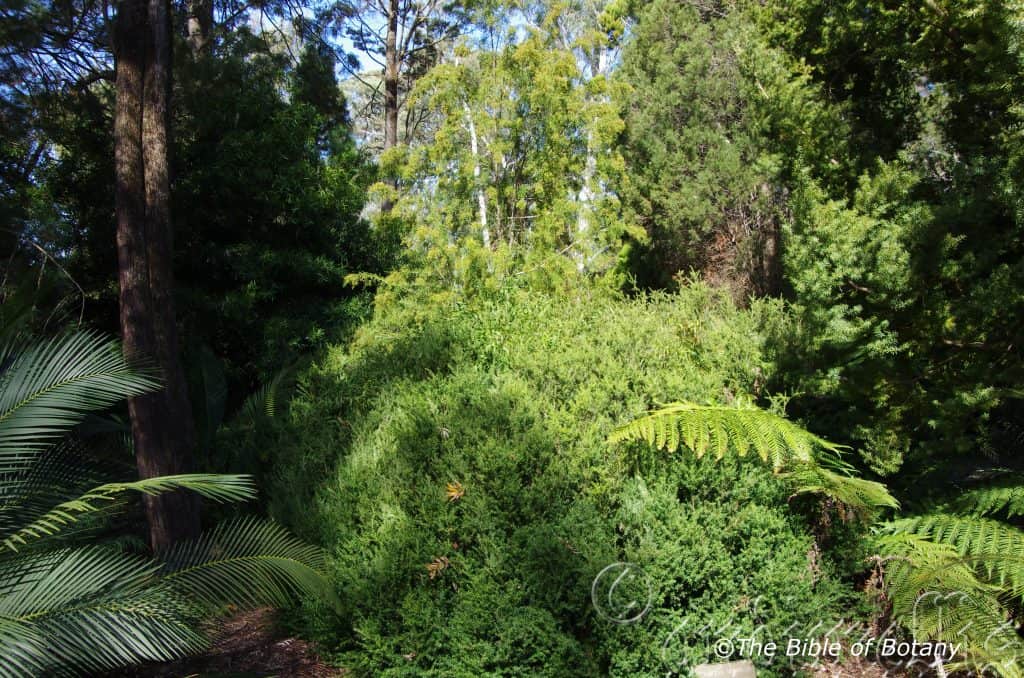
National Botanic Gardens ACT
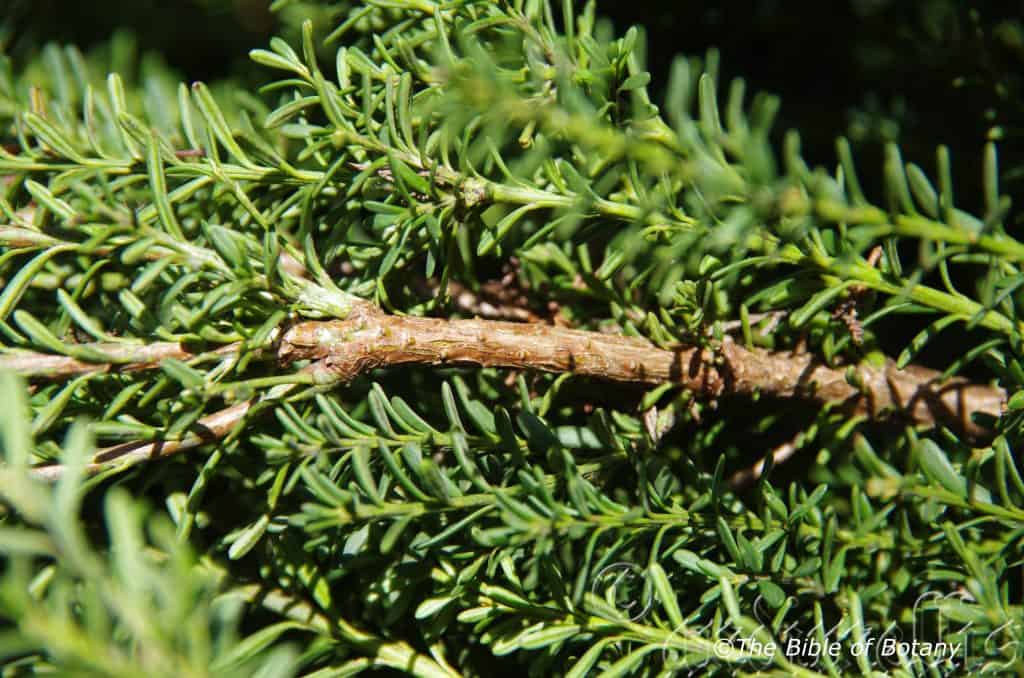
National Botanic Gardens ACT
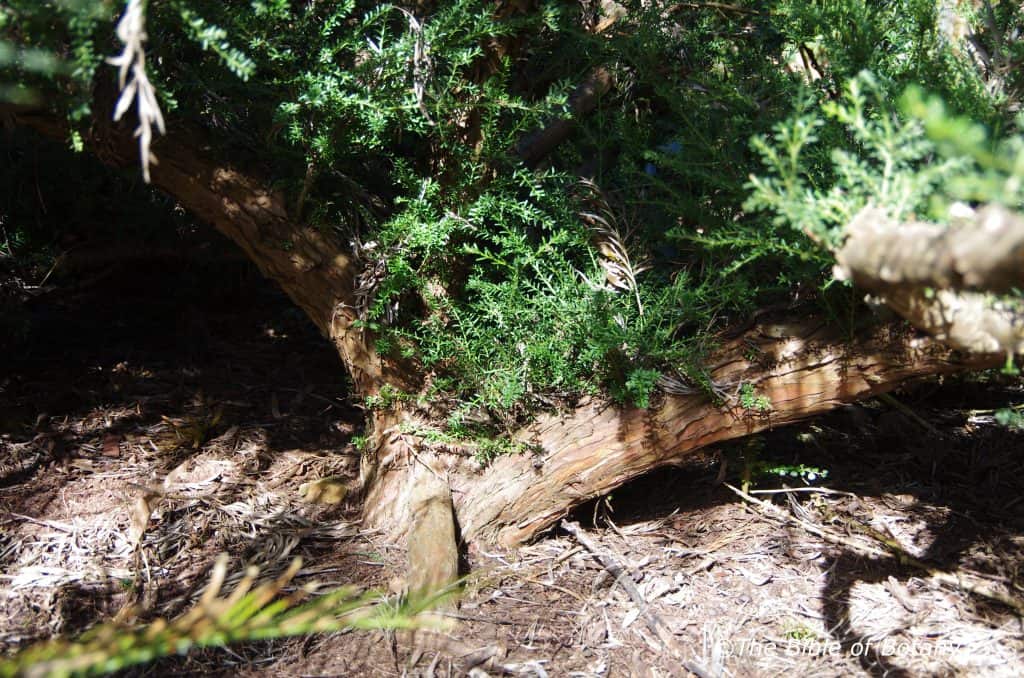
National Botanic Gardens ACT
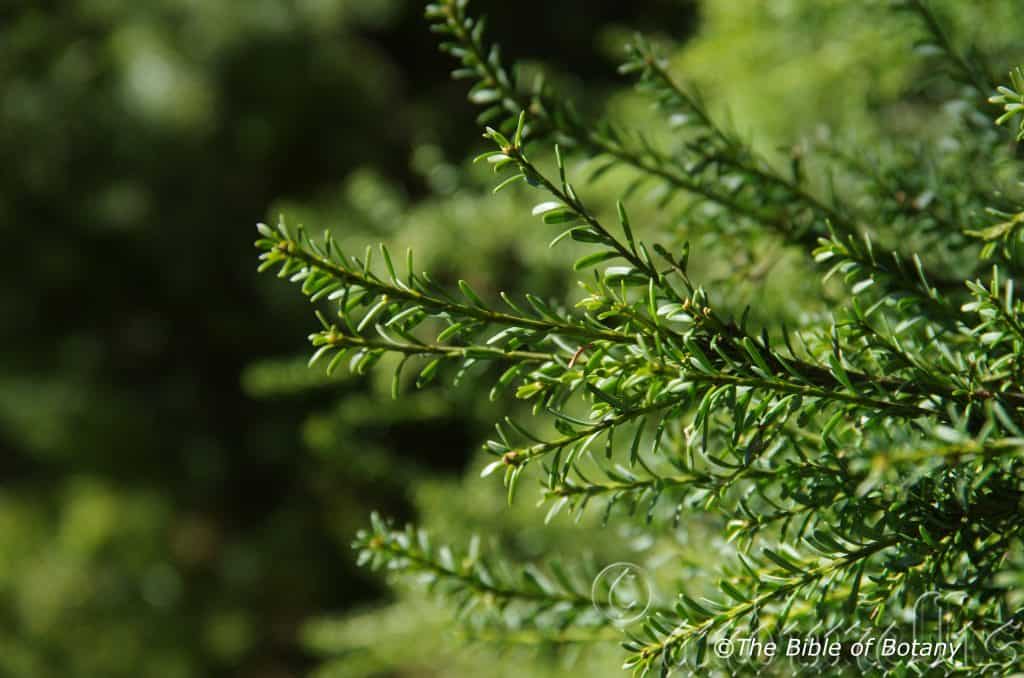
National Botanic Gardens ACT
Podocarpus lawrencei
Classification:
Unranked: Pinophyta
Class: Pinopsida
Order: Pinales
Family: Podocarpaceae
Genus: From Pous/Podos, which is Ancient Greek or Pedi, which is Latin for a foot or feet and Karpós, which is Ancient Greek for a fruit. It refers to fruits, which are like little feet from the apex of the swollen petioles.
Specie: Is named in honour of Robert W. Lawrence; 1807-1833, who was a British born Tasmanian naturalist and plant collector in Tasmania.
Sub specie:
Common Name: Mountain Pine.
Distribution:
Podocarpus lawrencei is found in the highlands of New South Wales from Brindabella National Park near Canberra to the Avon Wilderness area in Victoria. There is a small outlying population near Cathedral Rocks to Guyra on the northern Tablelands.
https://avh.ala.org.au/occurrences/search?taxa=Podocarpus+lawrencei#tab_mapView
Habitat Aspect Climate:
Podocarpus lawrencei prefers dappled shade to full sun. It grows high in the mountains in sub alpine and lower alpine regions in heath communities on exposed cliffs, ridges to sheltered sites in small valleys. The altitude ranges from 850 meters ASL to 1800 meters ASL.
The temperatures range from minus 12 degrees in July to 34 degrees in January. The areas are subject to orographic precipitation.
The rainfall ranges from lows of 600mm to 2000mm average per annum.
Soil Requirements:
Podocarpus lawrencei prefers skeletal soils that are sandy loams, light sandy clays or at times medium clays. The soils are derived from decomposed granites. The soils pH ranges from 5pH to 6.5pH. It does not tolerate water logged soils however prefers soil moisture to be maintained throughout the year. Non saline soils to moderately saline soils are tolerated.
Height & Spread:
Wild Plants:0.5m to 8m by 4m to 6m
Characteristics:
Podocarpus lawrencei grows as a decumbent ground cover in exposed areas, a large shrub in semi protected areas and as a small tree in very sheltered areas. The bark is deep grey to deep brown with longitudinal fissures. The fissures may become scaly on old trees. Branches are deep grey to deep grey brown while the branchlets are thin grass-green and glabrous.
The alternate narrow oblong to linear or narrow obovate leaves of Podocarpus lawrencei is crowded near the ends of the branchlets. The leaves measure 5mm to 16mm in length by 6mm to 18mm in width. The base is tapering while the apex is acute-obtuse with a short mucronate tip. The concolourous laminas are deep sea-green and glabrous. The new growth is a rich glossy tan turning yellow-green then to the mature deep sea-green. The leaf margins are entire and flat. The mid vein is prominent on the lower lamina and is not visible on the upper lamina. The petioles are strongly appressed, terete and measure 4mm to 5mm in length
The plants are dioecious which is rare amongst conifers.
The male inflorescences of Podocarpus lawrencei are cones born singularly or in small clusters from the leaf axils and measure 6mm to 10mm in length. The cones have few scales. The microsporophylls measure 0.4mm to 0.6mm in length.
The female cones are born solitary from the leaf axils. The cones have two fused fleshy scales which measure 3mm to 5mm in length. The fruit receptacles turn carmine red when ripe. The fleshy scales lengthen to 6mm to 6.5mm in length by 7mm to 8mm in diameter when the seeds are mature. The round blue green seed is covered in a glaucous film and measures 3mm to 5mm in length by 2mm to 2.5mm in diameter. The seeds ripen from November to February.
Wildlife:
Podocarpus lawrencei’s do not appear to have any predators though the reality is quite different. The Lymantriid moths or little tufted caterpillars enjoy a meal occasionally.
The fruits or the swollen section of the petioles are eaten by the Cat bird, Satin Bower Bird flying foxes and native rodents.
The aborigines ate the fruits which have a mucous but sweet plum flavour with pine needles added for extra flavour. The fruits make an excellent jam and jelly.
The plants only set small quantities of fruit. Work should be undertaken to grow the plants as a commercial crop in Australia. This would need long term work on fruit size, quantity, plant form and size.
Cultivation:
Podocarpus lawrencei is a magnificent large shrub that deserves a place in every cold temperate, alpine, sub alpine or sub-tropical, native or exotic garden. In cultivation the decumbent form will grow from 1 meter to 2 meters in height by 2 meters to 4 meters in diameter when grown in the open. This makes it particularly advantageous for collecting fruit compared to Podocarpus elatus.
The trees are very variable in fruit production with some trees starting to produce fruit at 7 years of age and others I have had not set a fruit after 16 years in the ground.
It grows exceptionally well on lighter or heavy soils provided the soils are deep and have a lot of leaf litter covering the ground. If these requirements are met they can cope with temperatures as low as minus 12 degrees and up to 36 degrees. Plants growing as far north as Ballina in northern New South Wales are thriving. The plants are very slow growing, however the plants at Ballina have grown as fast as their cousins Podocarpus elatus in cultivation.
It is drought resistant in their rainfall zones once established.
It is excellent in large rockeries where a formal look is required or to cover large areas on exposed banks.
Podocarpus lawrencei make very good indoor and patio plants living quite well inside for several years until it out grow its containers.
These shrubs make excellent bonsai specimens that are easy to work because have very flexible branches that grow in quick flushes.
Propagation:
Seeds: Seeds from Podocarpus lawrencei can be removed easily from the plants as they ripen. Once the first fruits begin to drop to the ground all the fruit can be harvested from a given tree or collected from the ground.
Sow freshly treated seeds directly into a seed raising mix, keeping them moist not wet. When the seedlings are 20mm to 25mm tall, prick them out and plant them into 50mm native tubes using a good organic mix.
As the seedlings roots reach the bottom of the tubes plant them out into their permanent position. Do not delay.
Cuttings: Unfortunately Podocarpus lawrencei cuttings are difficult to strike. Use 150mm to 250mm long cuttings from the previous season’s growth. Take them in warmer months of the year. Remove half the leaves from the bottom section being careful not to tear the bark.
1 Prepare the cutting mix by adding two thirds sharp clean river sand, one third peat or one third perlite. These ingredients must be sterilized,
2 Select good material from non diseased plants,
3 Select semi green stems for cuttings. Look for a stem with two or three nodes,
4 Place the cutting on a flat, hard surface, and make a clean cut down one side of the cutting at the base for 10mm with a sharp sterile knife or razor blade. – This scarification of the node will increase the chances of roots emerging from this spot. Now remove all but one or two the leaves, leaving the apex leaves in tact. If the leaves are very large in proportion to the stem, cut off the apical halves.
5 Fill a saucer with water, and place a little medium strength rooting hormone into another container like a milk bottle top. Dip the node end of the cutting into the water and then into the rooting hormone. Tap off any excess hormone,
6 Use a small dipple stick or old pencil to poke a hole into the soilless potting mix. Ensure the hole is slightly larger than the stem diameter and be careful not to wipe the rooting hormone off the cuttings base. Place 2 to 4 cuttings in each of the 50mm native tubes,
7 I like to place the tubes in bucket with holes drilled in the bottom to allow excess water to drain out. A plastic bag that fits over the bucket is ideal to help maintain temperature and moisture. Place in a semi shaded, warm position like under 50mm shade cloth.
8 When the cuttings have struck, open the bag to allow air circulation for a few days to a week,
9 Once hardened off remove the cuttings from the bag and allow to further hardening for a few more days to a week,
10 Transplant into a good potting mix to grow on.
Fertilize using seaweed, fish emulsion or organic chicken pellets soaked in water on an alternate basis. Fertilize every two months until the plants are established then twice annually in early September or March to maintain health, vitality and better flowering.
Further Comments from Readers:
“Hi reader, it seems you use The Bible of Botany a lot. That’s great as we have great pleasure in bringing it to you! It’s a little awkward for us to ask, but our first aim is to purchase land approximately 1,600 hectares to link several parcels of N.P. into one at The Pinnacles NSW Australia, but we need your help. We’re not salespeople. We’re amateur botanists who have dedicated over 30 years to saving the environment in a practical way. We depend on donations to reach our goal. If you donate just $5, the price of your coffee this Sunday, We can help to keep the planet alive in a real way and continue to bring you regular updates and features on Australian plants all in one Botanical Bible. Any support is greatly appreciated. Thank you.”
In the spirit of reconciliation we acknowledge the Bundjalung, Gumbaynggirr and Yaegl and all aboriginal nations throughout Australia and their connections to land, sea and community. We pay our respect to their Elders past, present and future for the pleasures we have gained.

NCBG Coffs Harbour NSW

NCBG Coffs Harbour NSW

NCBG Coffs Harbour NSW
Podocarpus spinulosa
Classification:
Unranked: Pinophyta
Class: Pinopsida
Order: Pinales
Family: Podocarpaceae
Genus: From Pous/Podos, which is Ancient Greek or Pedi, which is Latin for a foot or feet and Karpós, which is Ancient Greek for a fruit. It refers to fruits, which are like little feet from the apex of the swollen petioles.
Specie: From Sp?n?sus, which is Latin for a thorn or backbone. It refers to plant which have short spines.
Sub specie:
Common Name: Spiny Leaf Pine.
Distribution:
Podocarpus spinulosa is found in several disjunct populations south from the Isacc River in central eastern Queensland to the Ben Boyde National Park in New South Wales.
https://avh.ala.org.au/occurrences/search?taxa=Podocarpus+spinulosa#tab_mapView
Habitat Aspect Climate:
Podocarpus spinulosa prefers dappled shade to full sun. It mainly grows along the coast in sheltered headlands but is also found in sheltered gullies on the adjacent ranges and valleys. The altitude ranges from 10 meters ASL to 700 meters ASL.
The temperatures range from minus 12 degrees in July to 34 degrees in January. The areas are subject to orographic precipitation.
The rainfall ranges from lows of 600mm to 2000mm average per annum.
Soil Requirements:
Podocarpus spinulosa prefers skeletal sands to deep sandy loams or at times light fatty clays. The soils are usually derived from decomposed sandstone or accumulated sands. The soils pH ranges from 5pH to 6.5pH. It does not tolerate water logged soils however it does prefer soil moisture to be maintained throughout the year. Non saline soils to moderately saline soils are tolerated.
Height & Spread:
Wild Plants:0.6m to 8m by 2m to 5m
Characteristics:
Podocarpus spinulosa grows as a dense scrambling ground cover or as a large shrub. The bark is deep grey to deep brown with longitudinal fissures. The fissures may become scaly on older shrubs. The branches are deep grey to deep grey brown while the branchlets are thin grass-green and glabrous.
The alternate, narrow oblong to linear leaves of Podocarpus spinulosa are crowded near the ends of the branchlets. The leaves measure 20mm to 80mm in length by 3mm to 6mm in width. The petioles are strongly appressed, terete and measure 2mm to 3mm in length. The bases are tapering-rounded while the apexes are obtuse-acute with a pungent tip. The discolourous laminas are deep sea-green and glabrous on the upper laminas while the lower laminas are much paler. The new growth is a rich glossy tan turning yellow-green then to the mature deep sea-green. The laminas are flat or more often slightly twisting, decurve downwards strongly at the margin but not revolute and decurve downwards sharply at the apex. The leaf margins are entire. The mid vein is prominent on the lower lamina and is slightly prominent on the upper lamina especially near the base.
The plants are dioecious which is rare amongst conifers.
The cylindrical male inflorescences of Podocarpus spinulosa are cones born in small clusters from the terminals. They measure 4mm to 7mm in length. The cones have few scales.
The female cones are born solitary from the leaf axils. The cones have a few fleshy scales combining with the stalk to form the receptacle. The fruit receptacles turn deep purple-black when ripe. The fleshy scales lengthen to 5mm to 6.5mm in length by 2mm to 4mm in diameter when the seeds are mature. The receptacle turns deep purple-black and glaucous when ripe and contains usually 1 or rarely 2 seeds. The globose seeds measure 8mm to 12mm in diameter.
Wildlife:
Podocarpus spinulosa’s do not appear to have any predators though the reality is quite different. The Lymantriid moths or little tufted caterpillars enjoy a meal occasionally.
The fruits or the swollen section of the petioles are eaten by the Cat bird, Satin Bower Bird flying foxes and native rodents.
The aborigines ate the fruits which have a mucous but sweet plum flavour with pine needles added for extra flavour. The fruits make an excellent jam and jelly.
The plants only set small quantities of fruit. Work should be undertaken to grow the plants as a commercial crop in Australia. This would need long term work on fruit size, quantity, plant form and size.
Cultivation:
Podocarpus spinulosa is a magnificent large shrub that deserves a place in every cold temperate, alpine, sub alpine or sub-tropical, native or exotic garden. In cultivation the decumbent form will grow from 1 meter to 2 meters in height by 2 meters to 4 meters in diameter when grown in the open. This makes it particularly advantageous for collecting fruit compared to Podocarpus elatus however the fruits are of a far inferior quality.
The trees are very variable in fruit production with some trees starting to produce fruit at 7 years of age in the ground.
It grows exceptionally well on lighter sandy soils but will grow satisfactorily heavy soils provided the soils are deep and have a lot of leaf litter covering the ground. If these requirements are met it can cope with temperatures as low as minus 4 degrees and up to 36 degrees. Growth is relatively slow.
It is drought resistant in their rainfall zones once established.
It is excellent in large rockeries where a formal look is required or to cover large areas on exposed banks.
Podocarpus spinulosa makes a very good indoor and patio plants living quite well inside for several years until it out grow its containers.
These shrubs make excellent bonsai specimens that are easy to work because they have very flexible branches that grow in quick flushes.
Propagation:
Seeds:
Seeds from Podocarpus spinulosa can be removed easily from the plants as they ripen. Once the first fruits begin to drop to the ground all the fruit can be harvested from a given tree or collected from the ground.
Sow freshly treated seeds directly into a seed raising mix, keeping them moist not wet. When the seedlings are 20mm to 25mm tall, prick them out and plant them into 50mm native tubes using a good organic mix.
As the seedlings roots reach the bottom of the tubes plant them out into their permanent position. Do not delay.
Cuttings: Unfortunately Podocarpus spinulosa cuttings are difficult to strike. Use 150mm to 250mm long cuttings from the previous season’s growth. Take them in warmer months of the year. Remove half the leaves from the bottom section being careful not to tear the bark.
1 Prepare the cutting mix by adding two thirds sharp clean river sand, one third peat or one third perlite. These ingredients must be sterilized,
2 Select good material from non diseased plants,
3 Select semi green stems for cuttings. Look for a stem with two or three nodes,
4 Place the cutting on a flat, hard surface, and make a clean cut down one side of the cutting at the base for 10mm with a sharp sterile knife or razor blade. – This scarification of the node will increase the chances of roots emerging from this spot. Now remove all but one or two the leaves, leaving the apex leaves in tact. If the leaves are very large in proportion to the stem, cut off the apical halves.
5 Fill a saucer with water, and place a little medium strength rooting hormone into another container like a milk bottle top. Dip the node end of the cutting into the water and then into the rooting hormone. Tap off any excess hormone,
6 Use a small dipple stick or old pencil to poke a hole into the soilless potting mix. Ensure the hole is slightly larger than the stem diameter and be careful not to wipe the rooting hormone off the cuttings base. Place 2 to 4 cuttings in each of the 50mm native tubes,
7 I like to place the tubes in bucket with holes drilled in the bottom to allow excess water to drain out. A plastic bag that fits over the bucket is ideal to help maintain temperature and moisture. Place in a semi shaded, warm position like under 50mm shade cloth.
8 When the cuttings have struck, open the bag to allow air circulation for a few days to a week,
9 Once hardened off remove the cuttings from the bag and allow to further hardening for a few more days to a week,
10 Transplant into a good potting mix to grow on.
Fertilize using seaweed, fish emulsion or organic chicken pellets soaked in water on an alternate basis. Fertilize every two months until the plants are established then twice annually in early September or March to maintain health, vitality and better flowering.
Further Comments from Readers:
“Hi reader, it seems you use The Bible of Botany a lot. That’s great as we have great pleasure in bringing it to you! It’s a little awkward for us to ask, but our first aim is to purchase land approximately 1,600 hectares to link several parcels of N.P. into one at The Pinnacles NSW Australia, but we need your help. We’re not salespeople. We’re amateur botanists who have dedicated over 30 years to saving the environment in a practical way. We depend on donations to reach our goal. If you donate just $5, the price of your coffee this Sunday, We can help to keep the planet alive in a real way and continue to bring you regular updates and features on Australian plants all in one Botanical Bible. Any support is greatly appreciated. Thank you.”
In the spirit of reconciliation we acknowledge the Bundjalung, Gumbaynggirr and Yaegl and all aboriginal nations throughout Australia and their connections to land, sea and community. We pay our respect to their Elders past, present and future for the pleasures we have gained.

Ebor NSW
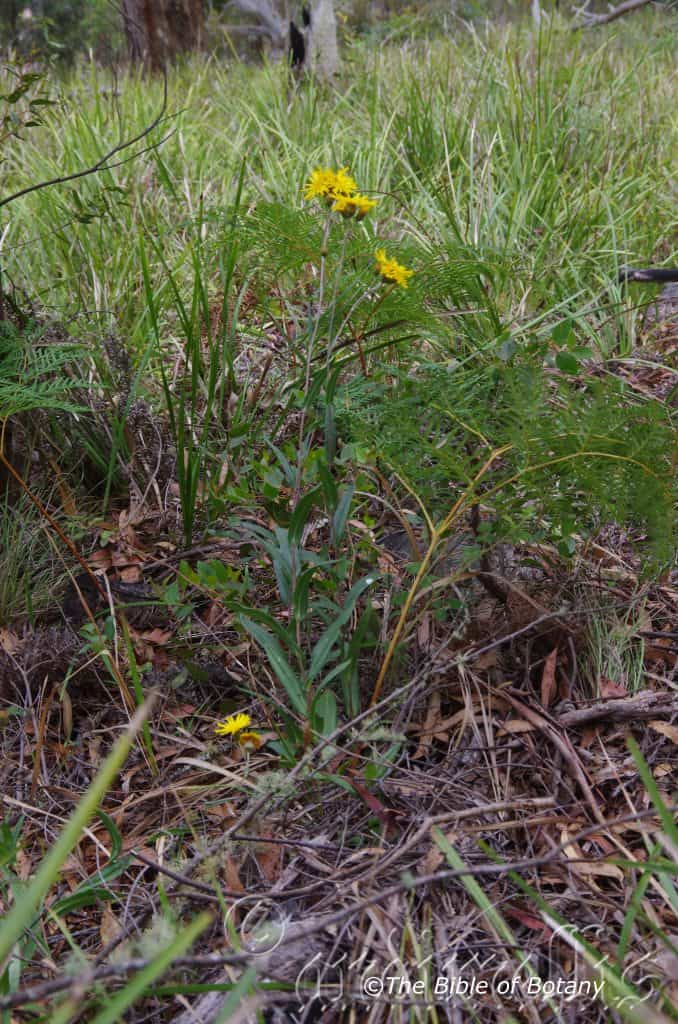
Ebor NSW
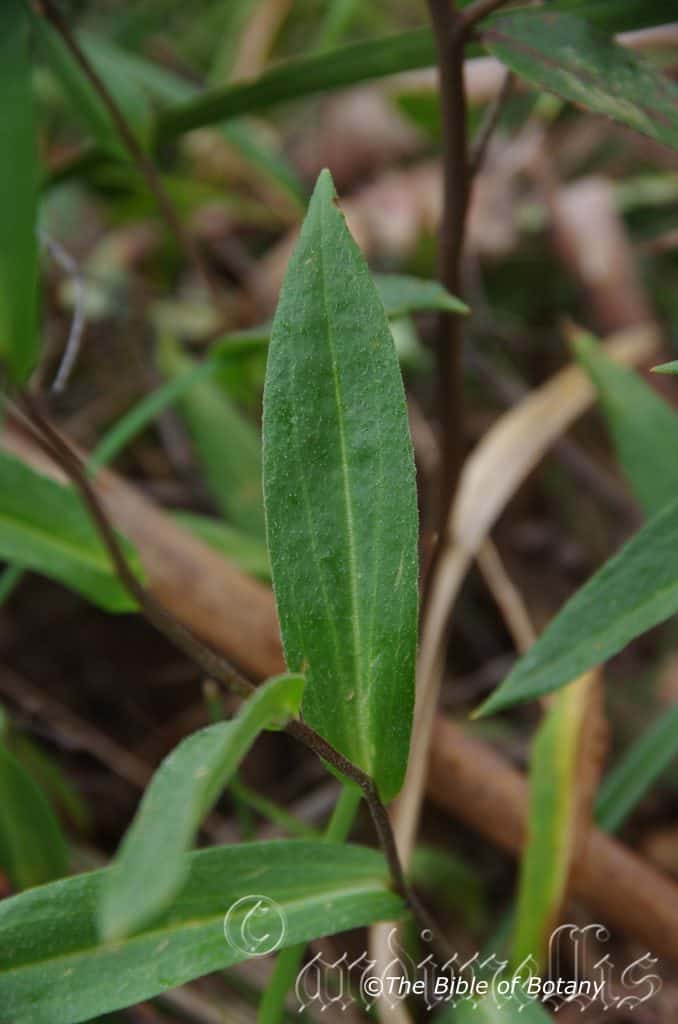
Ebor NSW
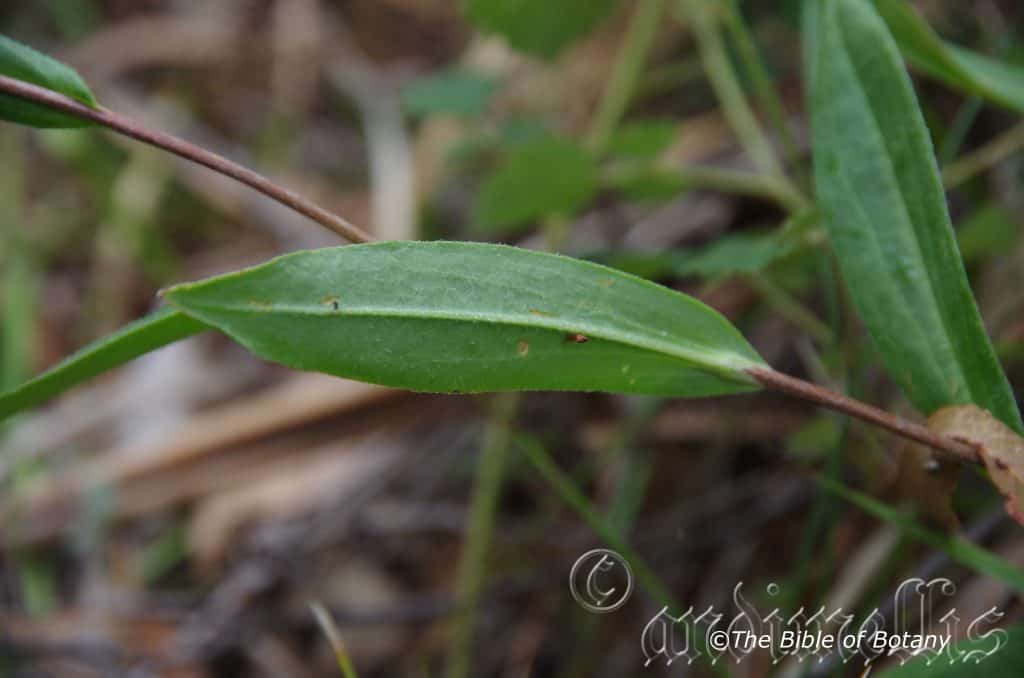
Ebor NSW

Ebor NSW
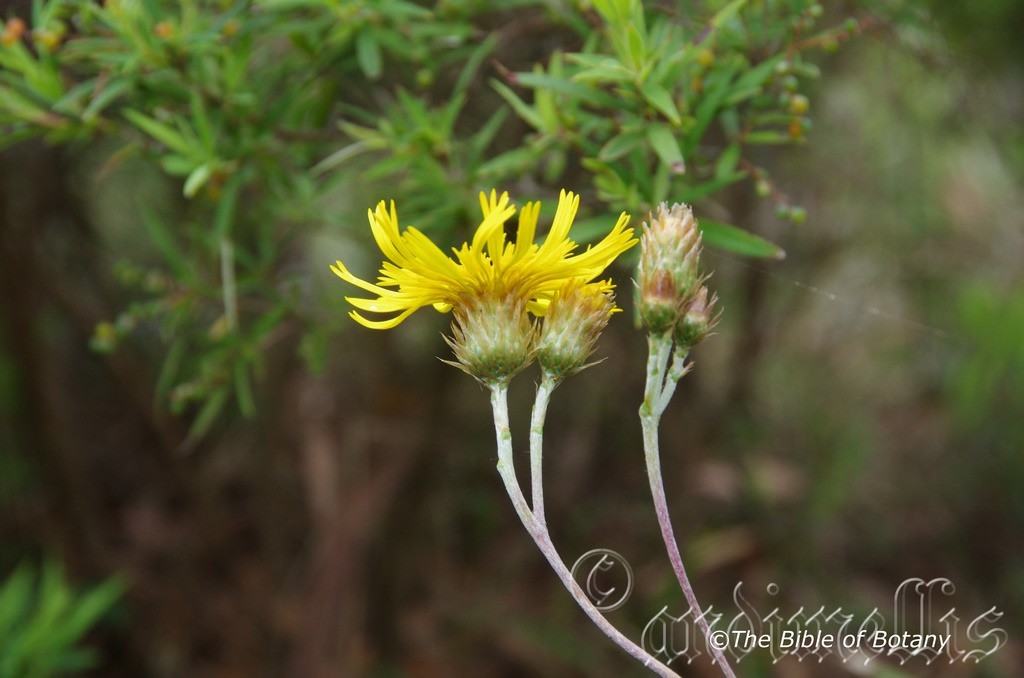
Ebor NSW

Ebor NSW
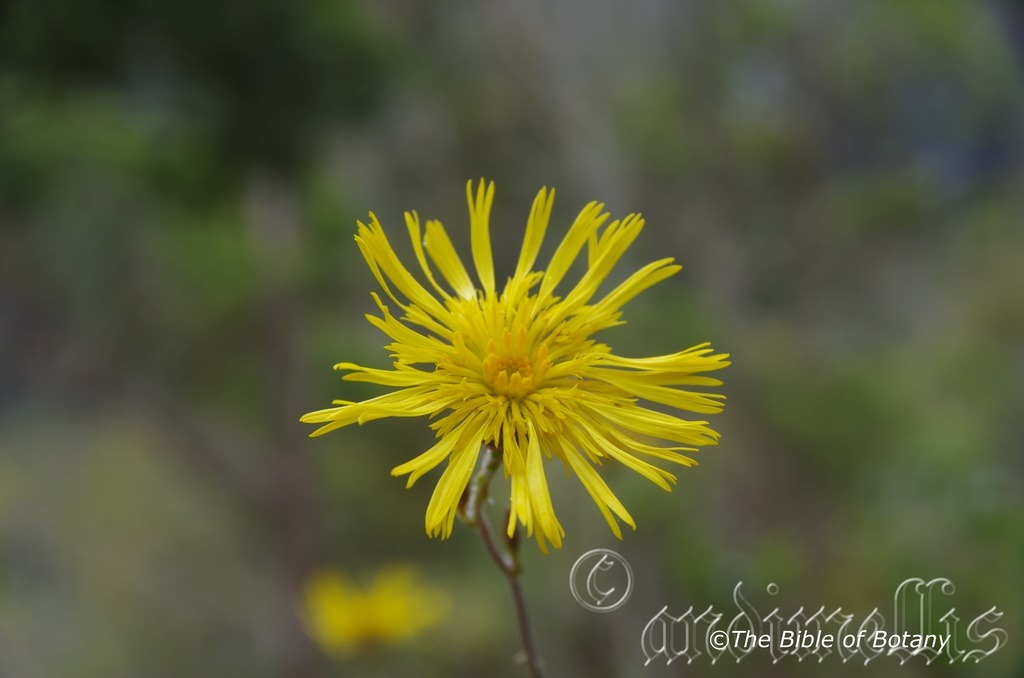
Ebor NSW
Podolepis jaceoides
Classification:
Unranked: Eudicots
Unranked: Asterids
Order: Asterales
Family: Asteraceae
Subfamily: Asteroideae
Tribe: Gnaphaliae
Genus: From Pous/Podos, which is Ancient Greek or Pedi, which is Latin for a foot or feet and Lepís which is Ancient Greek for a scale. It refers to phyllaries, which overlap and resemble fish scales or laid roofing tiles.
Specie: From Jacens, which is Latin for being sick, dying or lying down and Eîdos/Oides, which is Ancient Greek for alike or similar to. It probably refers to the leaves, which lay flat on the ground.
Sub species:
Common Name: Showy copper-wire daisy, showy podolepis.
Distribution:
Podolepis jaceoides is found west from Clermont in central eastern Queensland to Macdonald in southern central Northern Territory and south to Fowlers Bay in far southern central South Australia.
It is also found on Flinders Island group and mainland Tasmania.
https://avh.ala.org.au/occurrences/search?taxa=Podolepis+neglecta#tab_mapView
Habitat Aspect Climate:
Podolepis jaceoides prefers light dappled shade to full sun. It grows in woodlands or open dry Eucalyptus forests. The altitude ranges from 5 meters to 1500 meters ASL.
The temperatures range from minus 7 degrees in August to 44 degrees in January.
The rainfalls range from lows of 200mm to an average of 1200mm.
Soil Requirements:
Podolepis jaceoides prefers skeletal or deep sandy loams to medium gritty clays often with gravely and stony surfaces. The soils are usually derived from decomposed sandstones, granites or accumulated desert sands. The soils pH ranges from 5pH to 6.5pH. It does not tolerate water logged soils. Non saline soils to moderately saline soils are tolerated.
Height & Spread:
Wild Plants: 0.4m to 0.5m by 0.3m to 0.4m.
Characteristics:
Podolepis jaceoides grows as an erect, simple or sparingly branched herb that appears as an annual but reshoots from a thickened persistent rootstock. The stems are sparsely to densely covered in floccose hairs or at times are glabrous.
The scabrous to glabrescent, lanceolate to oblanceolate leaves are basally arranged and measure 30mm to 200mm in length by 5mm to 20mm in width. The leaves are petiolate with an amplexicaul base, while the apex is acute. The margins are flat to revolute and entire. The cauline leaves are sessile, clasping the stems and have an accuminate apex.
The infloresecence are capitula hemispherical heads that are born solitary or in a few in loose cymes. The individual heads measure 20mm to 40mm in diameter.
The spikes contain 1 to 16 heads measure 36mm to 45mm in diameter. The composite heads contain numerous individual florets of which 60 to 120 may open fully and mature.
The terete peduncles measure 40mm to 150mm in length. The linear involucral bracts are claw like and moderately covered in glandular hairs. The ovate laminas are scarious, virtually flat, glabrous and glossy with an acute to acuminate apex. The intermediate bracts claws are shorter than the laminas and measure 10mm to 18mm in length. The inner bracts have long claws.
The 20 to 50 bright yellow ray florets measure 15mm to 30mm in length. The disc florets are numerous.
The linear cypselas measure 2mm to 3mm in length, while the 20–40 pappus bristles are are short, connate at the base and measure 6mm to 10mm in length. The flowers appear from August to December.
Confusing Species:
Podolepis decipiens. Has retuse to obtuse laminas on the intermediate involucral bracts.
Podolepis jaceoides. Usually has broader basal leaves, larger capitula, broader claws and shorter pointed apices on the intermediate involucral bracts.
Podolepis linearifolia. Usually has narrower basal leaves, shorter capitula, broader claws and longer pointed apices on the intermediate involucral bracts.
Wildlife:
Podolepis jaceoides attracts many of the insects that are common to many of the Helichrysum species like the Painted Lady Butterfly (Vanessa kershawi) and many of the native bees like the small hive bee, Tetragonula carbonaria and the Blue banded bee Amegilla cingulata.
Cultivation:
Podolepis jaceoides would make an ideal subject and colourful addition to cottage gardens. Here it could be planted along manicured path borders or floral bedding displays. The bright yellow flowers would contrast wee with either red and pink Helipterum roseum or the red or white forms of Xerochrysum bracteatum.
This is a tremendous accent plant with its soft leaves. It always looks fresh especially where a little water is added during the dry season or ground moisture is retained. It is most suitable for small, medium and large gardens close to the coast or high in the mountains in warm temperate or sub-tropical gardens. They do well beneath tall trees including Tristania and Eucalyptus. Keep them away from other similar growing prostrate plants as they can be over taken and smothered under ideal conditions. The flowers are produced in profusion over a very long period which makes them a beautiful addition to the garden.
It is great in small rockeries as a fill in plant or bush gardens. Here they can be planted in small groups of 2 or 3 or as a standalone plant to create a harsh barren look with other arid plants. If they surrounded by smaller plants with fine or large foliages that are pale green or deep green then year round contrasts can be created with a strong accent in the center of the bed. Deep red or orange flowers will also create that dominate affect at the center giving height and strength to the bed whether It is in flower or not in flower the dominance in foliage will stand unchallenged. On the other hand creams and lilacs will give a softer, calmer look to the garden
Mass plantings or borders can be achieved by planting them at 250mm to 400mm centres.
Plants should be replaced every 12 months to maintain vigour and all year uninterrupted beauty.
Propagation:
Seeds: Podolepis jaceoides seeds can be sown directly into a seed raising mix, keeping them moist not wet. Place the trays in full sun or beneath 20mm shade cloth and keep moist not wet. When the seedlings are 20mm to 25mm tall, prick them out and plant them into 50mm native tubes using a good organic mix.
As the seedlings roots reach the bottom of the tubes plant them out into their permanent position. Keep seedlings moist and allow them to dry out between watering until established.
Further Comments from Readers:
“Hi reader, it seems you use The Bible of Botany a lot. That’s great as we have great pleasure in bringing it to you! It’s a little awkward for us to ask, but our first aim is to purchase land approximately 1,600 hectares to link several parcels of N.P. into one at The Pinnacles NSW Australia, but we need your help. We’re not salespeople. We’re amateur botanists who have dedicated over 30 years to saving the environment in a practical way. We depend on donations to reach our goal. If you donate just $5, the price of your coffee this Sunday, We can help to keep the planet alive in a real way and continue to bring you regular updates and features on Australian plants all in one Botanical Bible. Any support is greatly appreciated. Thank you.”
In the spirit of reconciliation we acknowledge the Bundjalung, Gumbaynggirr and Yaegl and all aboriginal nations throughout Australia and their connections to land, sea and community. We pay our respect to their Elders past, present and future for the pleasures we have gained.
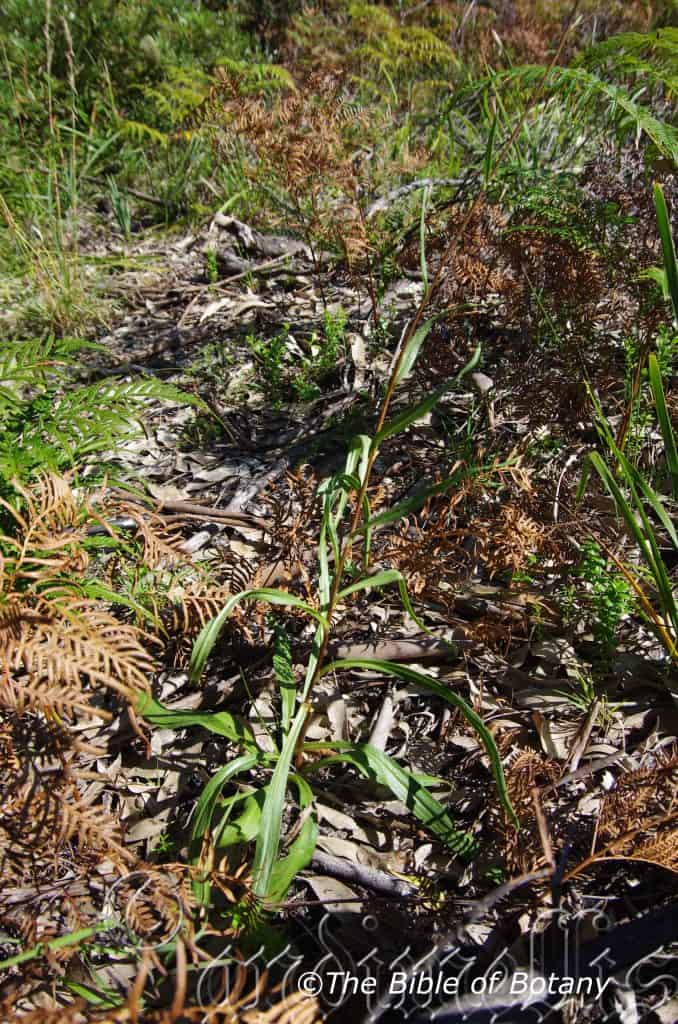
Wooli NSW

Wooli NSW
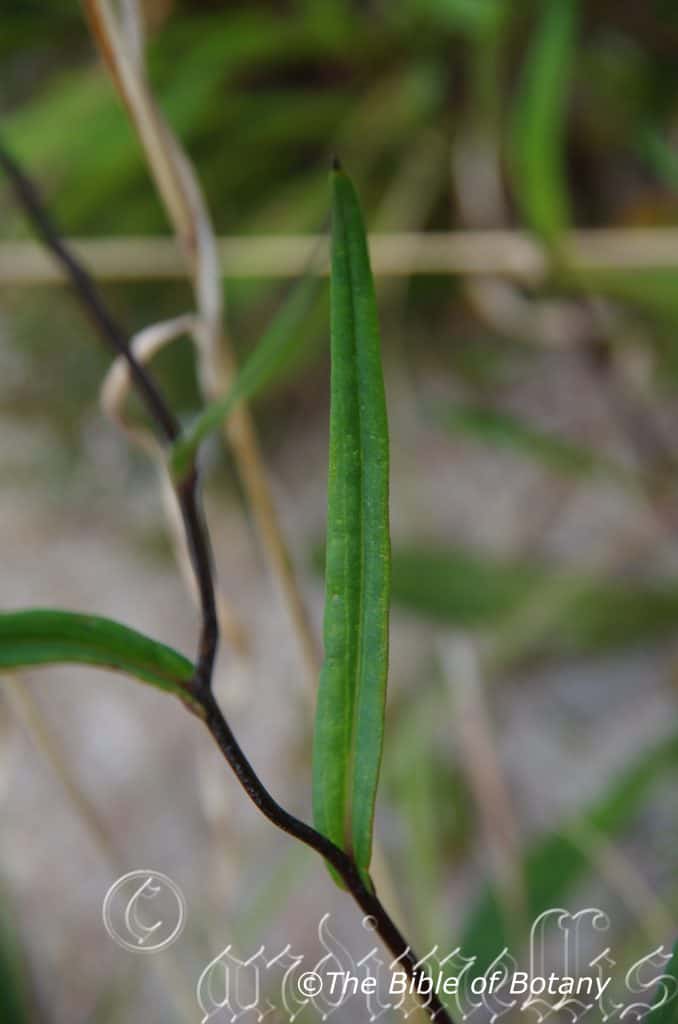
Wooli NSW

Wooli NSW
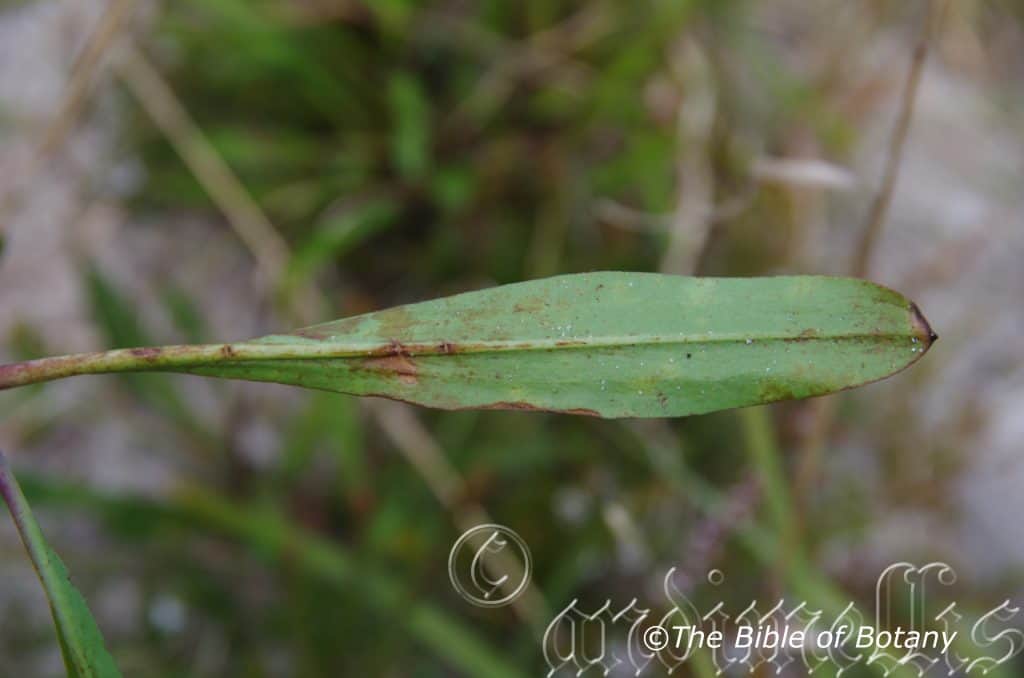
Wooli NSW
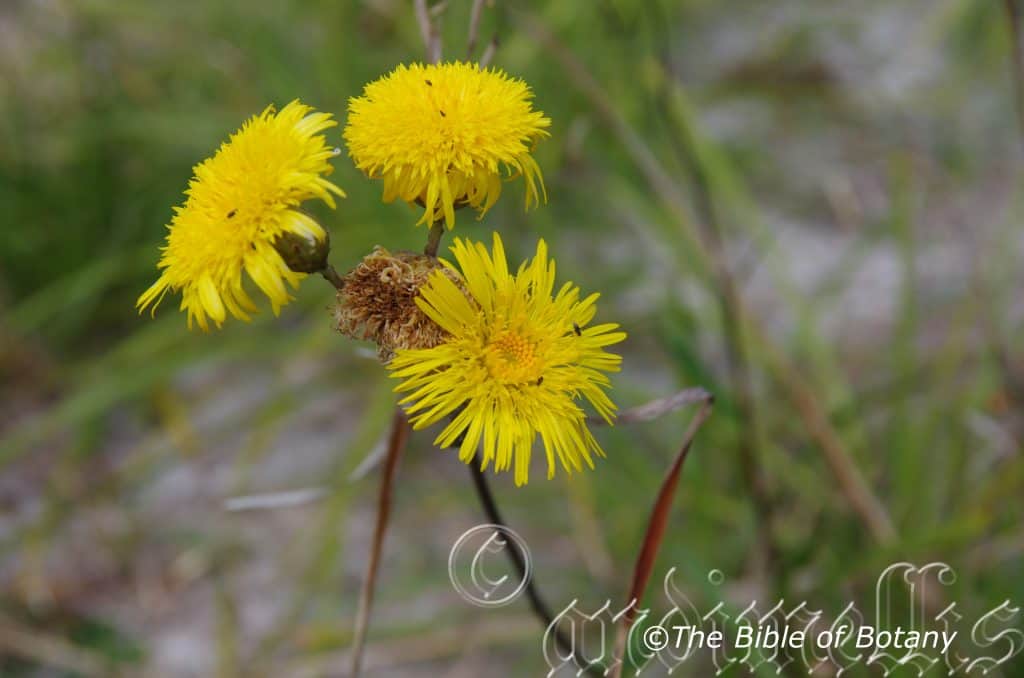
Wooli NSW

Wooli NSW
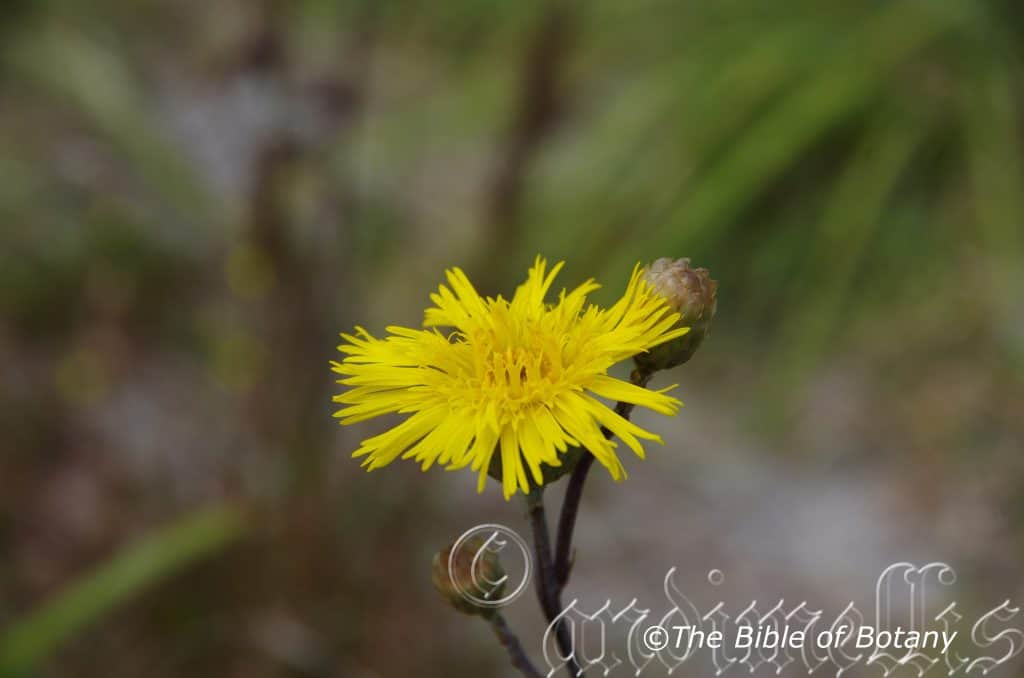
Wooli NSW

Wooli NSW
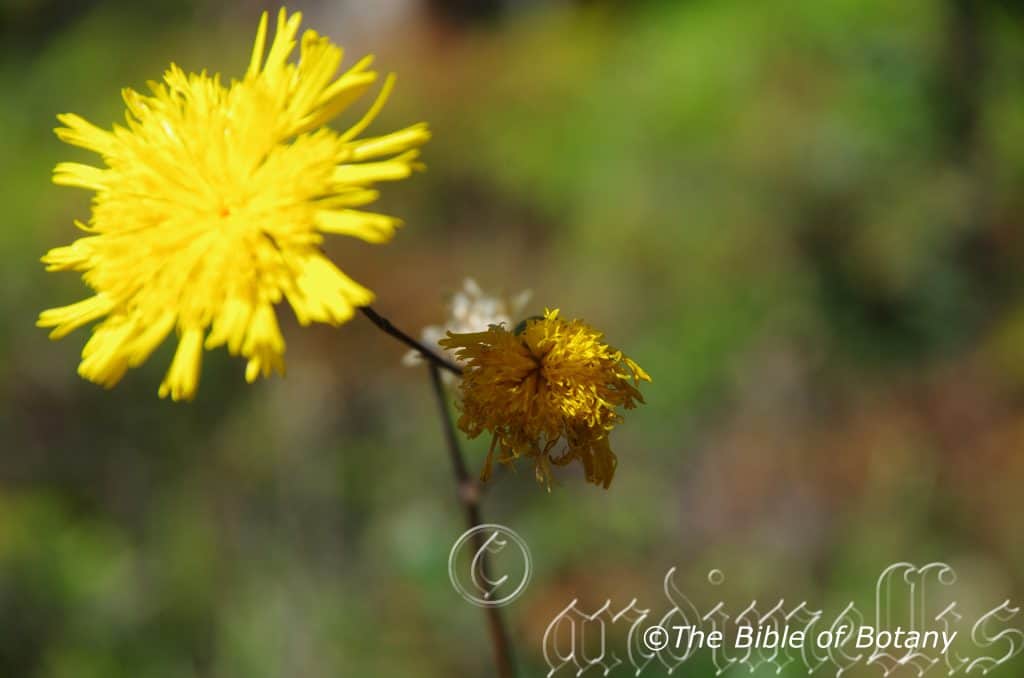
Wooli NSW
Podolepis neglecta
Classification:
Unranked: Asterids
Order: Asterales
Family: Asteraceae
Subfamily: Asteroideae
Tribe: Gnaphaliae
Genus: From Pous/Podos, which is Ancient Greek or Pedi, which is Latin for a foot or feet and Lepís which is Ancient Greek for a scale. It refers to phyllaries, which overlap and resemble fish scales or laid roofing tiles.
Specie: From Negl?cta/Necl?cta, which is Latin for to pay no attention to. It refers to the plants, which are often being over looked because they have no or few stand out qualities.
Sub species:
Common Name:
Distribution:
Podolepis neglecta is found south from Five Rocks Byfield in southern Queensland to Bland in central New South Wales. It is found on the Western Slopes, on and east of the Great Dividing Range to the coast except for 2 population further west in the Carnarvon Gorge National Park and at Gnalta Peak near White Cliffs.
https://avh.ala.org.au/occurrences/search?taxa=Podolepis+neglecta#tab_mapView
Habitat Aspect Climate:
Podolepis neglecta prefers light dappled shade to full sun. It grows in woodlands or open dry Eucalyptus forests. The altitude ranges from 5 meters to 950 meters ASL.
The temperatures range from minus 2 degrees in August to 38 degrees in January.
The rainfalls range from lows of 500mm to an average of 2000mm.
Soil Requirements:
Podolepis neglecta prefers skeletal or deep sandy loams to medium gritty clays often with gravely and stony surfaces. The soils are usually derived from decomposed sandstones, granites or accumulated beach sands. The soils pH ranges from 5pH to 6.5pH. It does not tolerate water logged soils. Non saline soils to moderately saline soils are tolerated.
Height & Spread:
Wild Plants: 0.45m to 0.65m by 0.3m to 0.4m.
Characteristics:
Podolepis neglecta grows as a decumbent perennial herb. The older stems are deep brown to deep olive-green or deep olive-brown with longitudinal striations and are covered in white floccose hairs. The younger stems are pale grey-green and are densely covered in white spreading hirsute and floccose hairs.
The broad lanceolate to oblong-elliptical basal leaves die early. The oblong to narrow-lanceolate, cauline stem leaves measure 80mm to 125mm in length by 10mm to 14mm in width. The bases are narrow cordate, while the apexes are acute, obtuse or acuminate. The discolourous laminas are pale grass-green to mid grass-green and sparsely covered in white hirtellous hairs on the upper laminas while the lower laminas are paler and covered in white hirtellous hairs. The laminas are slightly convex on the upper surface, straight or twisted while the margins are entire and moderately covered in white ciliate hairs. The obtuse mid vein is prominent on the lower lamina and is distinctly visible on the upper lamina.
The infloresecence are contracted heads born at the end of a spike. The spikes contain 1 to 16 heads measure 36mm to 45mm in diameter. The composite heads contain numerous individual florets of which 60 to 120 may open fully and mature.
The stiff, acuminate, erect, membranous involucral bracts are greenish-ochre, smooth with spreading laminas. The keels are leathery and covered in small, fine spines. The involucral bracts measure 8mm to 10mm in length while the intermediate bracts are similar.
The 30 to 36 bright yellow, ray florets measure 16mm to 20mm in length including the deep linear lacerated lobes by 2.5mm to 3mm in width.
The disc florets straw coloured to yellow or yellow-ochre open from the outside and lengthen as they spread laterally. The bright yellow corolla tubes have 5 obtuse lobes that measure 7mm to 10mm in length. The corolla and lobes are very sparsely covered in yellow hirsute hairs.
The yellow stamens are inserted or very slightly exserted. The bright yellow style is strongly bifid with divaricate, bright yellow, filiformis stigmas which measure 2.5mm to 3.5mm in length. The flowers appear from December to February.
The fruits are fusiform terete achenes. The achenes surface is finely papillose. The pappus is covered in barbellate bristles and is shortly plumose at the apex. The achenes measure 2.5mm to 3mm in length by 0.7mm to 1.2mm in diameter while the pappus measure 3mm to 4mm in length.
Wildlife:
Podolepis neglecta attracts many of the insects that are common to many of the Helichrysum species like the Painted Lady Butterfly, Vanessa kershawi and many of the pollen flies including Melangyna viridiceps. The flowers have developed a form that attracts pollen flies for fertilization. The flies have a large landing area in the center of the head then scout around the edges looking for the open flowers with nectar before heading off to the next flower to alight. Many of the pollen flies are striped in yellow and black and resembling the flowers or wasps, which include many species in the Melangyna genus. They are often seen gesturing, courting and mating on the flower heads.
Cultivation:
Podolepis neglecta is a tremendous accent plant with its soft leaves. It always looks fresh especially where a little water is added during the dry season or ground moisture is retained. It is most suitable for small, medium and large gardens close to the coast or high in the mountains in warm temperate or sub-tropical gardens. They do well beneath tall trees including Tristania and Eucalyptus. Keep them away from other similar growing prostrate plants as they can be over taken and smothered under ideal conditions. The flowers are produced in profusion over a very long period which makes them a beautiful addition to the garden.
It is great in small rockeries as a fill in plant or bush gardens. Here they can be planted in small groups of 2 or 3 or as a standalone plant to create a harsh barren look with other arid plants. If they surrounded by smaller plants with fine or large foliages that are pale green or deep green then year round contrasts can be created with a strong accent in the center of the bed. Deep red or orange flowers will also create that dominate affect at the center giving height and strength to the bed whether It is in flower or not in flower the dominance in foliage will stand unchallenged. On the other hand creams and lilacs will give a softer, calmer look to the garden
Mass plantings or borders can be achieved by planting them at 250mm to 400mm centres.
Plants should be replaced every 12 months to maintain vigour and all year uninterrupted beauty.
Propagation:
Seeds: Podolepis neglectaseeds can be sown directly into a seed raising mix, keeping them moist not wet. Place the trays in full sun or beneath 20mm shade cloth and keep moist not wet. When the seedlings are 20mm to 25mm tall, prick them out and plant them into 50mm native tubes using a good organic mix.
As the seedlings roots reach the bottom of the tubes plant them out into their permanent position. Keep seedlings moist and allow them to dry out between watering until established.
Further Comments from Readers:
“Hi reader, it seems you use The Bible of Botany a lot. That’s great as we have great pleasure in bringing it to you! It’s a little awkward for us to ask, but our first aim is to purchase land approximately 1,600 hectares to link several parcels of N.P. into one at The Pinnacles NSW Australia, but we need your help. We’re not salespeople. We’re amateur botanists who have dedicated over 30 years to saving the environment in a practical way. We depend on donations to reach our goal. If you donate just $5, the price of your coffee this Sunday, We can help to keep the planet alive in a real way and continue to bring you regular updates and features on Australian plants all in one Botanical Bible. Any support is greatly appreciated. Thank you.”
In the spirit of reconciliation we acknowledge the Bundjalung, Gumbaynggirr and Yaegl and all aboriginal nations throughout Australia and their connections to land, sea and community. We pay our respect to their Elders past, present and future for the pleasures we have gained.
Podolobium aciculiferum
Classification:
Unranked: Eudicots
Unranked: Rosids
Order: Fabales
Family: Fabaceae
Genus: From Pous/Podos, which is Ancient Greek or Pedi, which is Latin for a foot or feet and lobus/Lob?, which is Ancient Greek for an ear lobe. It refers to pods which have longer pedicels than other species in the genus.
Specie: From Acus/Acicula, which is Latin for needle or sharp and Ferae/Fer?rum, which is Latin for to bear or bearing. It refers to structures or organs, which have needle like appendages.
Sub species:
Common Name: Needle Shaggy Pea.
Distribution:
Podolobium aciculiferum is found south of West Ithica Creek on Taylor Range near Mackay in central coastal Queensland to Nerrigundah in southern coastal New South Wales. It is found on and east of the Great Dividing Range to the coast except for a single population on the Blackhall Range.
https://avh.ala.org.au/occurrences/search?taxa=Podolobium+aciculiferum#tab_mapView
Habitat Aspect Climate:
Podolobium aciculiferum prefers light dappled shade to full sun. It grows on rocky ledges in crevices on cliffs, adjacent to and in dry rainforests, dry Eucalyptus forests as well as dry sclerophyll forests near the coast. The altitude ranges from 250 meters to 1150 meters ASL.
The temperatures range from 2 degrees in August to 38 degrees in January.
The rainfalls range from lows of 450mm to an average of 2200mm.
Soil Requirements:
Podolobium aciculiferum prefers skeletal sandy clays to medium gritty clays often with copious quantities of leaf litter or on bare rock close to the parent rocks. The soils are usually derived from decomposed granites or at times brown basalts or black basalts. The soils pH ranges from 5pH to 6.5pH. It does not tolerate water logged soils. Non saline soils to moderately saline soils are tolerated.
Height & Spread:
Wild Plants: 1m to 3m by 1m to 2.5m.
Characteristics:
Podolobium aciculiferum grows as an erect or ascending prostrate shrub or tall shrub. The older stems are pale fawn to pale grey, terete and glabrous. The younger stems are pale green to pale lime-green and are sparsely to moderately covered in white or fawn, matted, erect or spreading hirsute hairs.
Podolobium aciculiferum’s usually opposite or in whirls of 3 or at times sub opposite or rarely alternate broad ovate to narrow ovate leaves measure 10mm to 25mm in length by 3mm to 12mm in width. The persistent stipules are spinose and measure 5mm to 7mm in length. The leaves are sessile. The bases are rounded while the apexes are acuminate with a deep brown or black pungent spine. The discolourous laminas are deep grass green to mid green, glabrous and glossy on the upper laminas while the lower laminas are paler and dull and are sparsely covered in short, fawn puberulent hairs. The laminas recurve upwards from the mid vein to the margins and are straight while the margins are entire. The obtuse mid vein is prominent on the lower lamina and is visible on the upper lamina while the lateral reticulate veins are slightly prominent on the upper laminas.
The infloresecence are born singularly or on short raceme of 2 to 4 individual flowers from the leaf axils. The lanceolate to acicular bracts are at sometimes toothed. The rachis and pedicels are covered in soft, white sericeous hairs. The rachis measure 9mm to 15mm in length while the pedicels measure 3mm to 5mm in length.
The pale green, reflexed calyxes are sparsely to moderately covered in white sericeous hairs and measure 2.5mm to 4mm in length while the 5 elliptical lobes measure 0.7mm to 1 mm in length. The pale green calyxes are covered white to silvery pulverulent hairs. The yellow corollas measure 5mm to 9mm in length. The yellow–orange standards are glabrous and have a splash of red near the base. The standard measures 8mm to 10mm in height and 11mm to 13mm in width. The yellow-orange, oblong wing petals measure 7mm to 10mm in length by 5mm to 8mm in height. The yellow-orange, oblong-spathulate keel petals measure 6mm to 9mm in length by 6mm to 9mm in height.
The yellow-orange stamens are inserted while the pastel greenish style measures 4mm to 6mm in length. The ovaries are stipitate and have 8 ovules. The flowers appear from October to January.
Podolobium aciculiferum’s fruit are curved obloidal to ovoidal pods. The pods measure 6mm to 10mm in length by 3mm to 5mm in diameter. The calyx and style are persistent on the pods which turn deep grey when ripe. The pods are glabrous to moderately covered in white to fawnish pulverulent hairs.
Wildlife:
Podolobium aciculiferum’s wildlife is unknown to the author.
Cultivation:
Podolobium aciculiferum is a small bushy shrub that should be more widely grown in temperate to subtropical gardens. It is ideal at the edge of a bush or heath garden or even used in the establishment of a new garden. It also makes a great rockery displays in hot exposed positions or confined sunny spots. In cultivation it will grow from 2 meter to 2.5 meters in height by 2 meters to 2.5meters in diameter when grown in the open. It can be lightly tip pruned to induce bushiness and flowering in the following flowering season.
It grows exceptionally well on light clays to medium clay soils. It can cope with temperatures as low as minus 2 degrees and up to 40 degrees without any problems or set back.
Podolobium aciculiferum would make a good contribution to a dry heath garden. Here it can be used as the main feature plant, scattered throughout a tall heath scene or as the taller feature plant in a low growing heath. When you design a flat heath garden, which it is well suited don’t use contours to display the plants as heath lands are almost always flat or have a slight rise. Plants must be planted close together but far enough apart as not to crowd them and be short so you can see over the tallest ones with the exception of one or two plants at the most. The idea is to achieve a feeling of expansive flatness. This can be achieved with using the Podolobium aciculiferum’s deep sea-green glossy leaves contrasting with finer pale grey-green or soft grey to glaucous coloured foliages. Use a lot of procumbent plants like Carpobrotus edulis or Hibbertia obtusifolia or even Grevillea thelemanniana grey form would look brilliant together. Mix them with other smaller shrubs so none of them dominate the scene but blend in to give a mosaic of foliage colours that you oversee. Here I immediately think of Actinotis helianthi Kunzea capitata for two great contrasting foliages and extremes in flower colour and form. Look around your district to find local natives that are thriving in gardens.
Propagation:
Seeds: Podolobium aciculiferum can be removed easily from the fruits that have already turned brown and begun to open. Remove the seeds and place them in hot water not boiling water and leave them to soak overnight. Seeds that have not swollen repeat the exercise.
Scarifying seeds will also assist in germination. This can be done by lightly rubbing the seeds over a piece of very fine emery paper.
Sow freshly treated seeds directly into a seed raising mix, keeping them moist not wet. When the seedlings are 20mm to 25mm tall, prick them out and plant them into 50mm native tubes using a good organic mix.
As the seedlings roots reach the bottom of the tubes plant them out into their permanent position.
Cuttings: Fortunately Podolobium aciculiferum‘s cuttings are relatively easy to strike. Use 100mm to 200mm long tip cuttings or lateral shoots from the present season’s growth. Take them in warmer months of the year. Remove half the leaves from the bottom section being careful not to tear the bark.
1 Prepare the cutting mix by adding two thirds sharp clean river sand, one third peat or one third perlite. These ingredients must be sterilized,
2 Select good material from non diseased plants,
3 Select semi green stems for cuttings. Look for a stem with two or three nodes,
4 Place the cutting on a flat, hard surface, and make a clean cut down one side of the cutting at the base for 10mm with a sharp sterile knife or razor blade. – This scarification of the node will increase the chances of roots emerging from this spot. Now remove all but one or two the leaves, leaving the apex leaves in tact. If the leaves are very large in proportion to the stem, cut off the apical halves.
5 Fill a saucer with water, and place a little medium strength rooting hormone into another container like a milk bottle top. Dip the node end of the cutting into the water and then into the rooting hormone. Tap off any excess hormone,
6 Use a small dipple stick or old pencil to poke a hole into the soilless potting mix. Ensure the hole is slightly larger than the stem diameter and be careful not to wipe the rooting hormone off the cuttings base. Place 2 to 4 cuttings in each of the 50mm native tubes,
7 I like to place the tubes in bucket with holes drilled in the bottom to allow excess water to drain out. A plastic bag that fits over the bucket is ideal to help maintain temperature and moisture. Place in a semi shaded, warm position like under 50mm shade cloth.
8 When the cuttings have struck, open the bag to allow air circulation for a few days to a week,
9 Once hardened off remove the cuttings from the bag and allow to further hardening for a few more days to a week,
10 Transplant into a good potting mix to grow on.
Fertilize using seaweed, fish emulsion or organic chicken pellets soaked in water on an alternate basis. Fertilize every two months until the plants are established then twice annually in early September or March to maintain health, vitality and better flowering.
“Hi reader, it seems you use The Bible of Botany a lot. That’s great as we have great pleasure in bringing it to you! It’s a little awkward for us to ask, but our first aim is to purchase land approximately 1,600 hectares to link several parcels of N.P. into one at The Pinnacles NSW Australia, but we need your help. We’re not salespeople. We’re amateur botanists who have dedicated over 30 years to saving the environment in a practical way. We depend on donations to reach our goal. If you donate just $5, the price of your coffee this Sunday, We can help to keep the planet alive in a real way and continue to bring you regular updates and features on Australian plants all in one Botanical Bible. Any support is greatly appreciated. Thank you.”
In the spirit of reconciliation we acknowledge the Bundjalung, Gumbaynggirr and Yaegl and all aboriginal nations throughout Australia and their connections to land, sea and community. We pay our respect to their Elders past, present and future for the pleasures we have gained.
Podolobium aestivum
Classification:
Class: Equisetopsida
Subclass: Magnoliidae
Superorder: Rosanae
Order: Fabales
Family: Fabaceae
Genus: From Pous/Podos, which is Ancient Greek or Pedi, which is Latin for a foot or feet and lobus/Lob?, which is Ancient Greek for an ear lobe. It refers to pods which have longer pedicels than other species in the genus.
Specie: From Aestivalis, which is Latin for a summer. It refers to plants, which flower at the height of the summer months.
Common Name:
Distribution:
Podolobium aestivum is found in 2 disjunct populations on the Great Dividing in northern New South Wales. It is found south from Mount Warning to between Pheasant Creek, Glen Elgin, Severn and Dandahra Falls on the New England Tablelands.
https://avh.ala.org.au/occurrences/search?taxa=Podolobium+aestivum#tab_mapView
Habitat Aspect Climate:
Podolobium aestivum prefers light dappled shade to full sun. It grows on rocky ground and rocky ledges, in crevices, cliffs and rocky slopes in dry sclerophyll forest, heaths and woodlands. The altitude ranges from 800 meters to 1100 meters ASL.
The temperatures range from minus 3 degrees in August to 38 degrees in January.
The rainfalls range from lows of 820mm to an average of 2000mm.
Soil Requirements:
Podolobium aestivum prefers to grow on sandy loams to medium clays often with copious quantities of stones, gravel or rock close to the parent rocks. The soils are usually derived from partially decomposed granites or black basalts. The soils pH ranges from 5pH to 6.5pH. It does not tolerate water logged soils. Non saline soils to moderately saline soils are tolerated.
Height & Spread:
Wild Plants: 1.2m to 2.5m by 1m to 1.5m.
Characteristics:
Podolobium aestivum grows as a medium erect shrub. The older stems are greyish-fawn, terete and glossy. The younger stems are grass-green to olive-green and are moderately to densely covered in white spreading hirsute hairs or appressed sericeous hairs.
Podolobium aestivum’s opposite, broadly elliptical-oblong leaves are coriaceous and measure 25mm to 80mm in length by 10mm to 20mm in width. The spinose stipules are curved and measure 2mm to 3mm in length. The petioles measure 2.5mm to 5mm in length. The bases are truncate, while the apex is acute. The discolourous laminas are deep grey-green to deep sea-green, dull to semi glossy and glabrous. The laminas are flat and undulate near the lobes while the margins are regularly lobed with 10 to 20 broad shallow lobes which have a pungent off white rigid spine. The mid vein and lateral veins are prominent on the lower lamina while the reticulate veins are slightly prominent on the upper lamina.
The infloresecence are racemes born from the leaf axils. The racemes measure 20mm to 90mm in length. The ovate bracts are small. The pedicels are moderately to densely covered in off white sericeous hairs and measure 1mm to 2mm in length.
The calyxes are moderately to densely covered in off white sericeous hairs and measures 5mm to 6mm in length. The bright yellow-orange, broad ovate standards have a reddish blotch at the base with as reddish ring near the base and measures 8mm to 11mm in height by 12mm to 17mm in width. The bright yellow-orange, broad spathulate wing petals measure 8mm to 10mm in length by 7mm to 9mm in height. The bright yellow-orange keel petals are oblong and measure 6mm to 8mm in length.
The stipitate ovary usually has 4 ovules. The stamens are yellow and inserted while the yellow style measures 4mm to 5mm in length. The flowers appear from October to January.
Podolobium aestivum’s fruits are terete, oblong pods. The pods are covered in white sericeous hairs and measure 20mm to 14mm in length by 3mm to 3.5mm in diameter. The grass-green persistent calyxes and pods turn greyish-brown when ripe as does the persistent style.
Wildlife:
Podolobium aestivum wildlife is unknown to the author.
Cultivation:
Podolobium aestivum is a tremendous accent plant with its stiff coriaceous leaves. The leaves spines and undulations make Podolobium ilicifolium particularly unsuitable for planting near paths. Gardeners with adventurous children or pets would also be advised to plant them in an area that is safe for them to play. It is for this reason that it is ideal for hedges and barriers where dogs and cats are a problem. Keep it back from paths and where children play as the fallen leaves are needle like.
It is most suitable for small, medium and large gardens close to the coast or high in the mountains in warm temperate or sub-tropical gardens. It does well beneath tall trees including Tristania and Eucalyptus and better in the open in a shrub garden or in a drier heath setting. In cultivation the plants grow from 1.5 meters to 2 meters in height by 1.5 meters to 2 meters in diameter.
The flowers contrast beautifully against the foliage while the leaves contrast well against most other foliages especially those that are finer and bright lime greens.
It is great in medium to large rockeries as the feature shrub. Here it can be planted in small groups of 2 or 3 or as a standalone plant to create a harsh barren look with other arid plants. If it is surrounded by smaller prostrate plants with paler foliages and deep red or orange flowers create a strong affect in the bed whereas pale cream, lilac flowers will add to its dominance at the center giving height and strength to the bed.
Podolobium aestivum is able to be used as a bonsai plant and offers a challenge to the collector because of the strong, rigid branching.
Propagation:
Seeds: Podolobium aestivum seeds can be sown directly into a seed raising mix after treatment. Treat the seeds by placing them in hot water not boiling and allow them to soak for 10 to 12 hours. Additional scarification by lightly rubbing the seeds over fine emery paper will also assist in more even germination. Place the trays beneath 30mm shade cloth and keep moist not wet. When the seedlings are 20mm to 25mm tall, prick them out and plant them into 50mm native tubes using a good organic mix.
As the seedlings roots reach the bottom of the tubes plant them out into their permanent position. Keep seedlings moist and allow them to dry out between watering until established.
Cuttings: Podolobium aestivum cuttings are relatively easy to strike. Use 120mm to 200mm long tip cuttings or lateral shoots from the present season’s growth. Take them in warmer months of the year. Remove half the leaves from the bottom section being careful not to tear the bark.
1 Prepare the cutting mix by adding two thirds sharp clean river sand, one third peat or one third perlite. These ingredients must be sterilized,
2 Select good material from non diseased plants,
3 Select semi green stems for cuttings. Look for a stem with two or three nodes,
4 Place the cutting on a flat, hard surface, and make a clean cut down one side of the cutting at the base for 10mm with a sharp sterile knife or razor blade. – This scarification of the node will increase the chances of roots emerging from this spot. Now remove all but one or two the leaves, leaving the apex leaves in tact. If the leaves are very large in proportion to the stem, cut off the apical halves.
5 Fill a saucer with water, and place a little medium strength rooting hormone into another container like a milk bottle top. Dip the node end of the cutting into the water and then into the rooting hormone. Tap off any excess hormone,
6 Use a small dipple stick or old pencil to poke a hole into the soilless potting mix. Ensure the hole is slightly larger than the stem diameter and be careful not to wipe the rooting hormone off the cuttings base. Place 2 to 4 cuttings in each of the 50mm native tubes,
7 I like to place the tubes in bucket with holes drilled in the bottom to allow excess water to drain out. A plastic bag that fits over the bucket is ideal to help maintain temperature and moisture. Place in a semi shaded, warm position like under 50mm shade cloth.
8 When the cuttings have struck, open the bag to allow air circulation for a few days to a week,
9 Once hardened off remove the cuttings from the bag and allow to further hardening for a few more days to a week,
10 Transplant into a good potting mix to grow on.
Fertilize using seaweed, fish emulsion or organic chicken pellets soaked in water on an alternate basis. Fertilize every two months until the plants are established then twice annually in early September or March to maintain health, vitality and better flowering.
Further Comments from Readers:
“Hi reader, it seems you use The Bible of Botany a lot. That’s great as we have great pleasure in bringing it to you! It’s a little awkward for us to ask, but our first aim is to purchase land approximately 1,600 hectares to link several parcels of N.P. into one at The Pinnacles NSW Australia, but we need your help. We’re not salespeople. We’re amateur botanists who have dedicated over 30 years to saving the environment in a practical way. We depend on donations to reach our goal. If you donate just $5, the price of your coffee this Sunday, We can help to keep the planet alive in a real way and continue to bring you regular updates and features on Australian plants all in one Botanical Bible. Any support is greatly appreciated. Thank you.”
In the spirit of reconciliation we acknowledge the Bundjalung, Gumbaynggirr and Yaegl and all aboriginal nations throughout Australia and their connections to land, sea and community. We pay our respect to their Elders past, present and future for the pleasures we have gained.
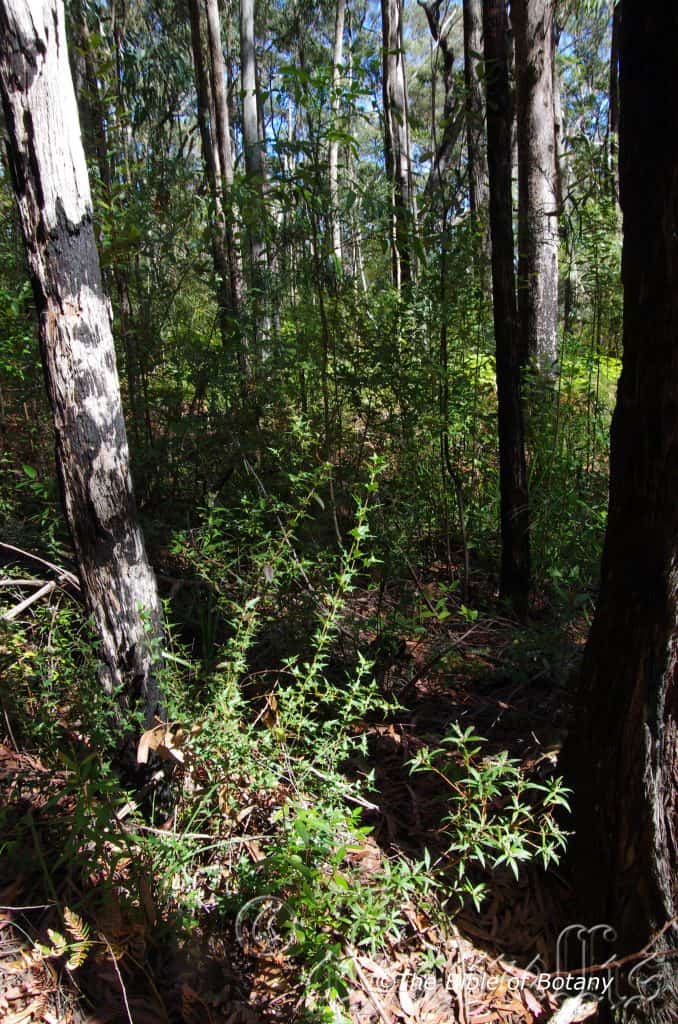
Washpool National Park NSW
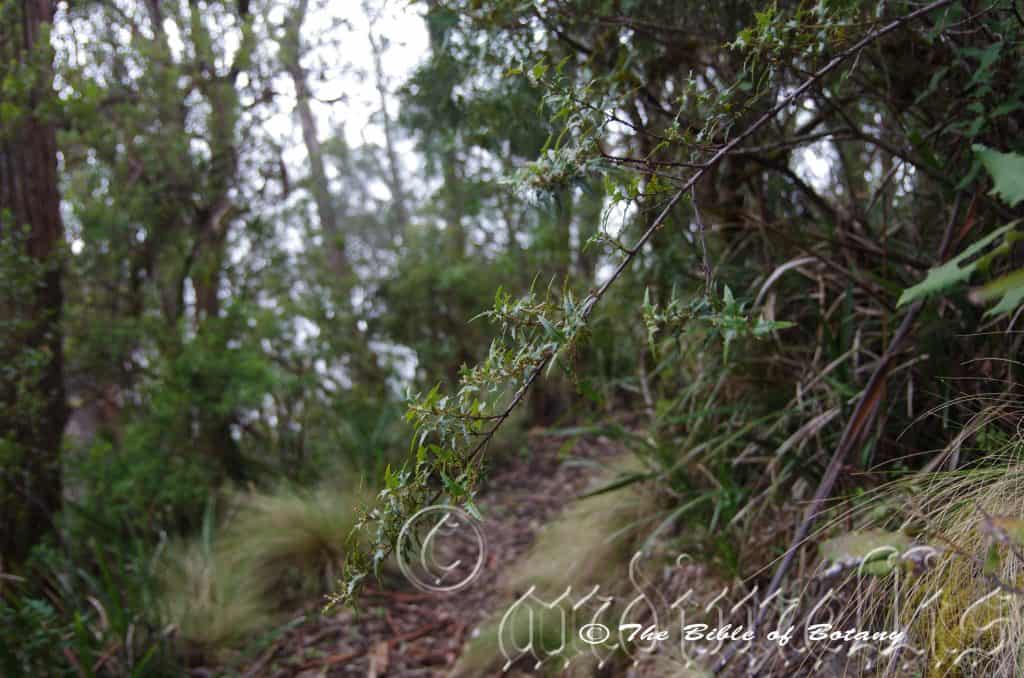
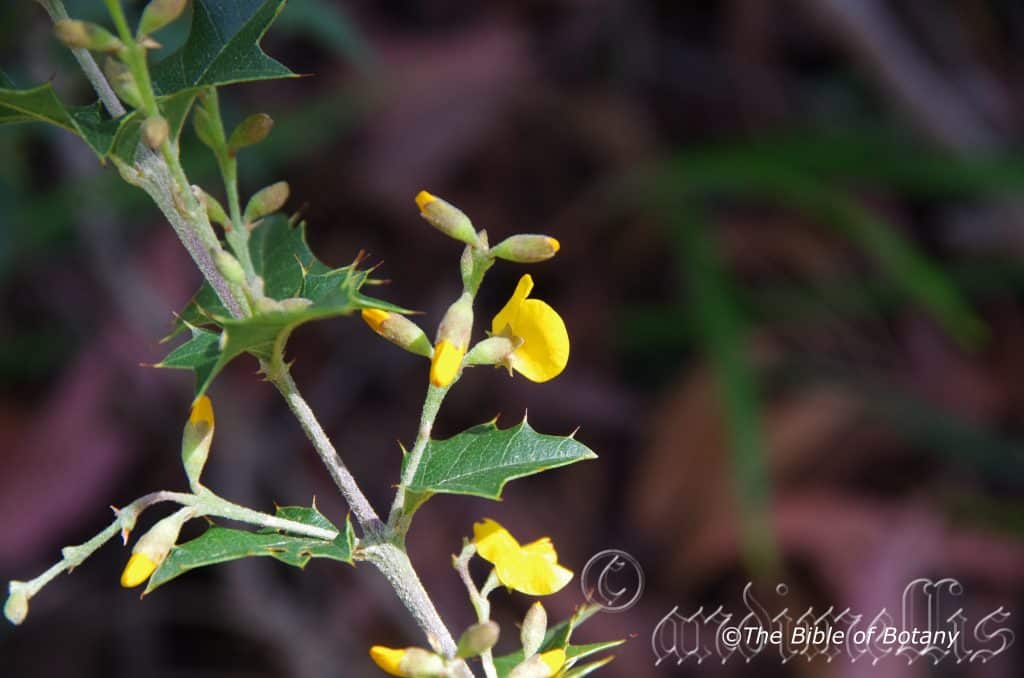
Washpool National Park NSW


Washpool National Park NSW

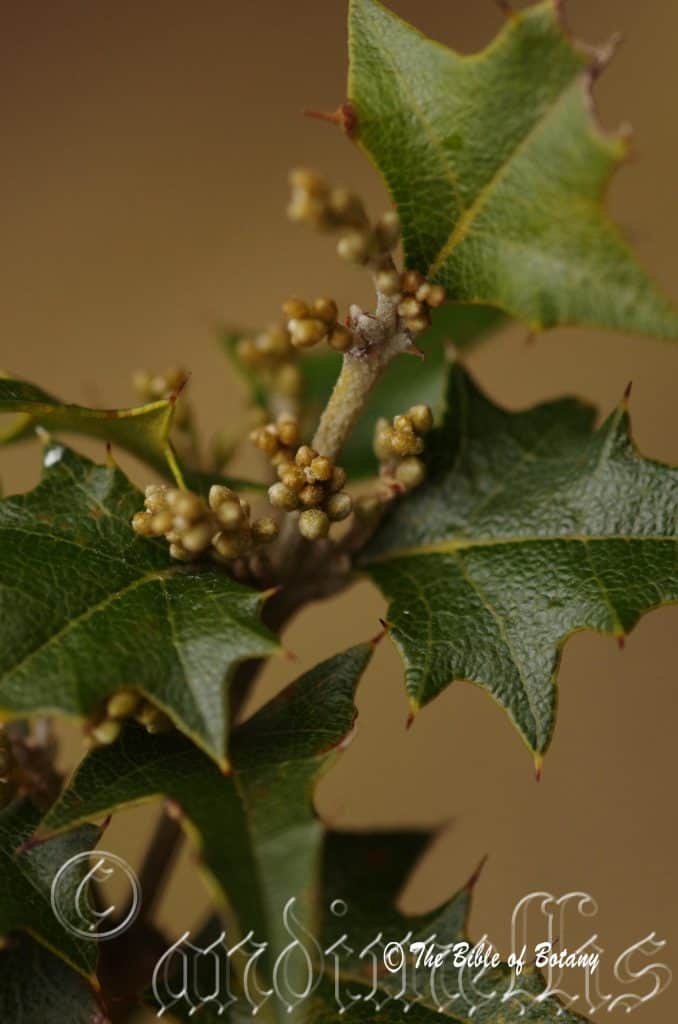
Point Lookout National Park Ebor NSW

Washpool National Park NSW

Washpool National Park NSW

Point Lookout National Park Ebor NSW
Podolobium ilicifolium
Classification:
Class: Equisetopsida
Subclass: Magnoliidae
Superorder: Rosanae
Order: Fabales
Family: Fabaceae
Genus: From Pous/Podos, which is Ancient Greek or Pedi, which is Latin for a foot or feet and lobus/Lob?, which is Ancient Greek for an ear lobe. It refers to pods which have longer pedicels than other species in the genus.
Specie: From Ilex, which is Ancient Greek for holly oak and Folium, which is Latin for foliage. It refers to leaves, which resemble the European holly oak.
Sub species:
Common Name: Prickly Shaggy Pea.
Distribution:
Podolobium ilicifolium is found south from Rockhampton in central coastal Queensland to Orbost in north eastern Victoria. It is mainly found on and east the Great Dividing Range to the coast and on the higher slopes of the Western Slopes.
https://avh.ala.org.au/occurrences/search?taxa=Podolobium+ilicifolium#tab_mapView
Habitat Aspect Climate:
Podolobium ilicifolium prefers light dappled shade to full sun. It grows on rocky ledges in crevices on cliffs, adjacent to rainforests. Moist Eucalyptus forests coastal woodland heaths. The altitude ranges from 250 meters to 1350 meters ASL.
The temperatures range from minus 2 degrees in August to 38 degrees in January.
The rainfalls range from lows of 420mm to an average of 2000mm.
Soil Requirements:
Podolobium ilicifolium prefers to grow on skeletal to deep coarse sands, fine sands, and gritty clays to medium clays often with copious quantities of forest litter or on bare parent rocks. The soils are usually derived from decomposed granites, brown basalts, black basalts, or at times accumulated peaty beach sands. The soils pH ranges from 4.5pH to 7pH. It does not tolerate water logged soils. Non saline soils to moderately saline soils are tolerated.
Height & Spread:
Wild Plants: 2m to 3m by 2m to 3m.
Characteristics:
Podolobium ilicifolium grows as a medium shrub with terete, glabrous, grey stems. The younger stems are deep green to sea-green and glabrous to sparsely covered in pale grey puberulent hairs.
Podolobium ilicifolium’s opposite or sub opposite, ovate to narrow ovate leaves measure 20mm to 100mm in length by 10mm to 30mm in width. The spinose stipules are curved and measure 1mm to 3mm in length. The petioles measure 3mm to 6mm in length. The bases are cuneate, broad cuneate to sub rounded while the apexes are acute. The concolourous laminas are deep green to sea-green, glabrous and glossy on the upper laminas while the lower laminas are glabrous or usually slightly covered in soft off white puberulent hairs and dull. The laminas are flat and recurve slightly upwards at the lobes and decurve on the apical half. The margins are irregularly lobed with the basal pair of lobes are the largest while the apical 2 to 6 shallow lobes are broadly triangular. The lobe’s apexes have a rigid, pungent spine. The mid vein and lateral veins are prominent on the lower lamina and are visible on the upper lamina. The laminas are flat or curve slightly upwards from the mid vein. The mid vein and lateral veins are prominent on the lower lamina while the reticulate veins are slightly prominent on the upper lamina.
The infloresecence are racemes born from the leaf axils and from the terminals. The racemes measure 15mm to 110mm in length. The pedicels measure 5mm to 6mm in length. The green, ovate to lanceolate, caduceous, bracts are small. The calyxes are sparsely to moderately covered in white pulverulent hairs and measures 3mm to 4.5mm in length. The bright yellow-orange, broad ovate standards have a reddish blotch at the base and measures 7mm to 10mm in height by 12mm to 16mm in width. The bright yellow-orange, broad spathulate wing petals measure 7mm to 9mm in length by 7mm to 9mm in height. The bright orange-red keel petals are spathulate and measure 9mm to 12mm in length following anthesis.
The stipitate ovary usually has 4 ovules and is white. The 6 white stamens are inserted and measure 6.5mm to 8mm in length. The orange-yellow style measures 8mm to 10mm in length. The flowers appear from September to December.
The fruits are ovoidal to obloidal pods. The pods measure 8mm to 10mm in length by 2mm to 3mm in diameter. The pale green persistent calyxes and pods turn greyish-brown when ripe. The style is persistent on the ripe pods which are sparsely to moderately covered in off white pulverulent hairs.
Wildlife:
Podolobium ilicifolium’s wildlife is unknown to the author however the seeds are often eaten from within the pods prior to ripening.
Cultivation:
Podolobium ilicifolium is another fantastic accent plant with its stiff coriaceous leaves. The leaves spines and undulations make it is unsuitable for planting near paths. Gardeners with adventurous children or pets would also be advised to plant them in an area that is safe for them to play. It is for this reason that it is ideal for hedges and barriers where dogs and cats are a problem. Keep it back from paths and where children play as the fallen leaves are needle like.
It is most suitable for small, medium and large gardens close to the coast or high in the mountains in warm temperate or sub-tropical gardens. It does well beneath tall trees including Tristania and Eucalyptus and better in the open in a shrub garden or in a drier heath setting. In cultivation the plants grow from 2 meters to 2.5 meters in height by 2 meters to 2.5 meters in diameter.
The flowers contrast beautifully against the foliage while the leaves contrast well against most other foliages especially those that are finer and bright lime greens.
It is great in medium to large rockeries as the feature shrub. Here it can be planted in small groups of 2 or 3 or as a standalone plant to create a harsh barren look with other arid plants. If it is surrounded by smaller prostrate plants with paler foliages and deep red or orange flowers create a strong affect in the bed whereas pale cream, lilac flowers will add to its dominance at the center giving height and strength to the bed.
Podolobium ilicifolium is able to be used as a bonsai plant and offers a challenge to the collector because of the strong, rigid branching.
Propagation:
Seeds: Podolobium ilicifolium seeds can be sown directly into a seed raising mix after treatment. Treat the seeds by placing them in hot water not boiling and allow them to soak for 10 to 12 hours. Additional scarification by lightly rubbing the seeds over fine emery paper will also assist in more even germination. Place the trays beneath 30mm shade cloth and keep moist not wet. When the seedlings are 20mm to 25mm tall, prick them out and plant them into 50mm native tubes using a good organic mix.
As the seedlings roots reach the bottom of the tubes plant them out into their permanent position. Keep seedlings moist and allow them to dry out between watering until established.
Cuttings: Podolobium ilicifolium cuttings are relatively easy to strike. Use 120mm to 200mm long tip cuttings or lateral shoots from the present season’s growth. Take them in warmer months of the year. Remove half the leaves from the bottom section being careful not to tear the bark.
1 Prepare the cutting mix by adding two thirds sharp clean river sand, one third peat or one third perlite. These ingredients must be sterilized,
2 Select good material from non diseased plants,
3 Select semi green stems for cuttings. Look for a stem with two or three nodes,
4 Place the cutting on a flat, hard surface, and make a clean cut down one side of the cutting at the base for 10mm with a sharp sterile knife or razor blade. – This scarification of the node will increase the chances of roots emerging from this spot. Now remove all but one or two the leaves, leaving the apex leaves in tact. If the leaves are very large in proportion to the stem, cut off the apical halves.
5 Fill a saucer with water, and place a little medium strength rooting hormone into another container like a milk bottle top. Dip the node end of the cutting into the water and then into the rooting hormone. Tap off any excess hormone,
6 Use a small dipple stick or old pencil to poke a hole into the soilless potting mix. Ensure the hole is slightly larger than the stem diameter and be careful not to wipe the rooting hormone off the cuttings base. Place 2 to 4 cuttings in each of the 50mm native tubes,
7 I like to place the tubes in bucket with holes drilled in the bottom to allow excess water to drain out. A plastic bag that fits over the bucket is ideal to help maintain temperature and moisture. Place in a semi shaded, warm position like under 50mm shade cloth.
8 When the cuttings have struck, open the bag to allow air circulation for a few days to a week,
9 Once hardened off remove the cuttings from the bag and allow to further hardening for a few more days to a week,
10 Transplant into a good potting mix to grow on.
Fertilize using seaweed, fish emulsion or organic chicken pellets soaked in water on an alternate basis. Fertilize every two months until the plants are established then twice annually in early September or March to maintain health, vitality and better flowering.
Further Comments from Readers:
“Hi reader, it seems you use The Bible of Botany a lot. That’s great as we have great pleasure in bringing it to you! It’s a little awkward for us to ask, but our first aim is to purchase land approximately 1,600 hectares to link several parcels of N.P. into one at The Pinnacles NSW Australia, but we need your help. We’re not salespeople. We’re amateur botanists who have dedicated over 30 years to saving the environment in a practical way. We depend on donations to reach our goal. If you donate just $5, the price of your coffee this Sunday, We can help to keep the planet alive in a real way and continue to bring you regular updates and features on Australian plants all in one Botanical Bible. Any support is greatly appreciated. Thank you.”
In the spirit of reconciliation we acknowledge the Bundjalung, Gumbaynggirr and Yaegl and all aboriginal nations throughout Australia and their connections to land, sea and community. We pay our respect to their Elders past, present and future for the pleasures we have gained.
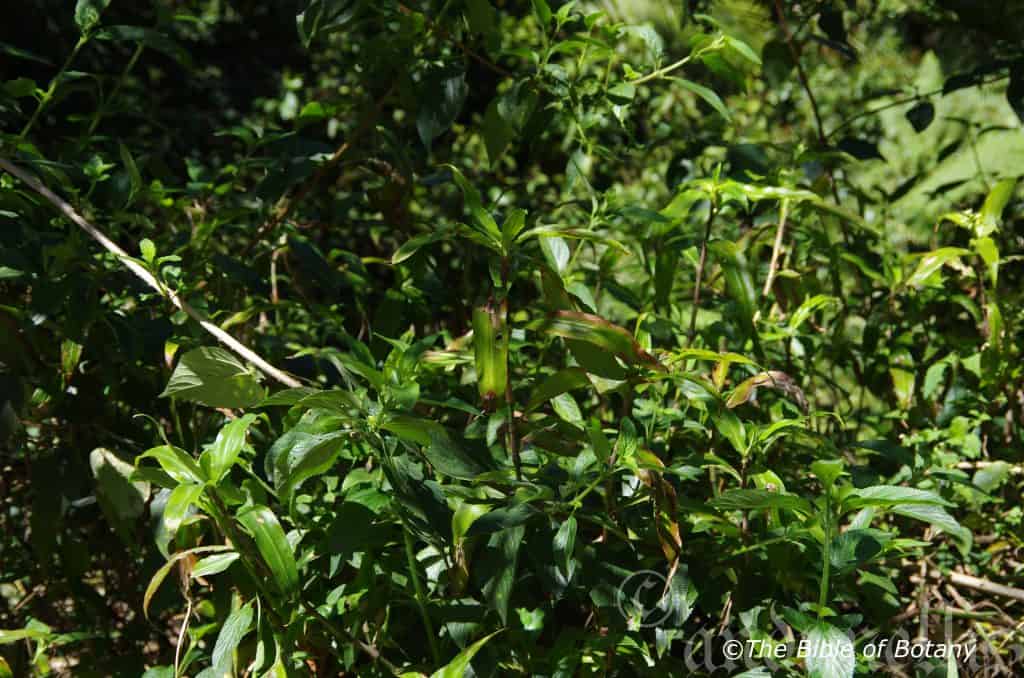
Washpool National Park NSW
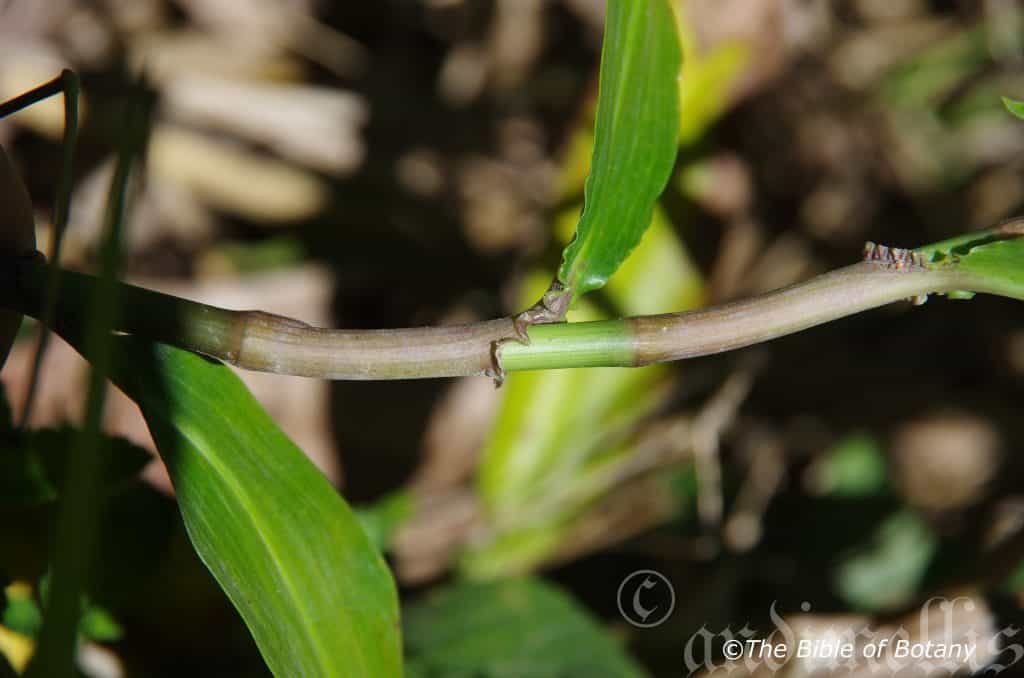
Washpool National Park NSW

Washpool National Park NSW
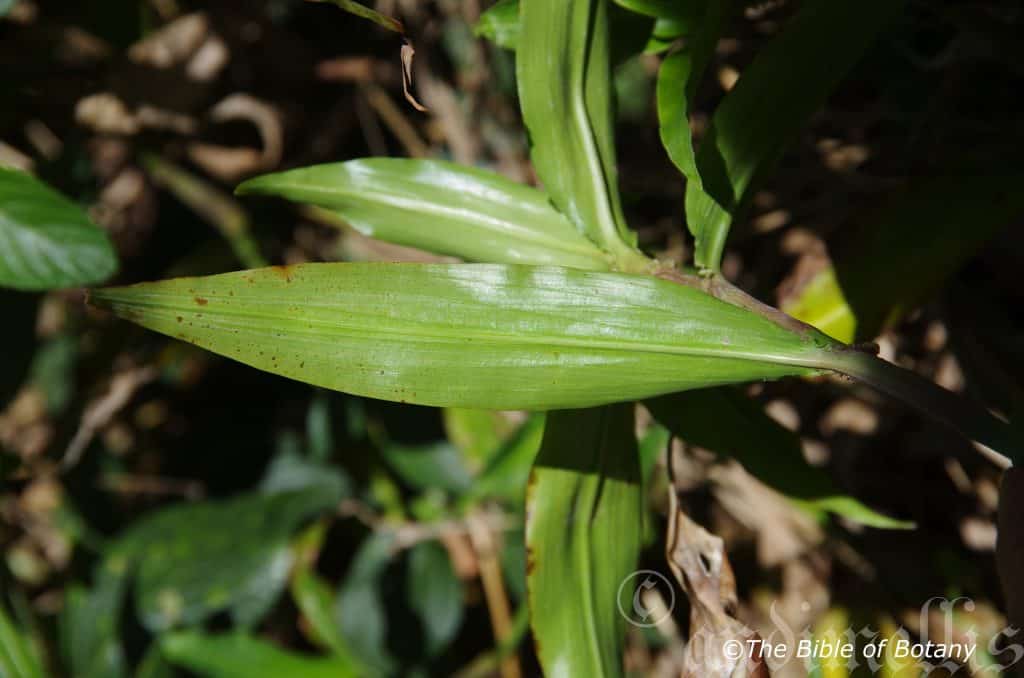
Washpool National Park NSW
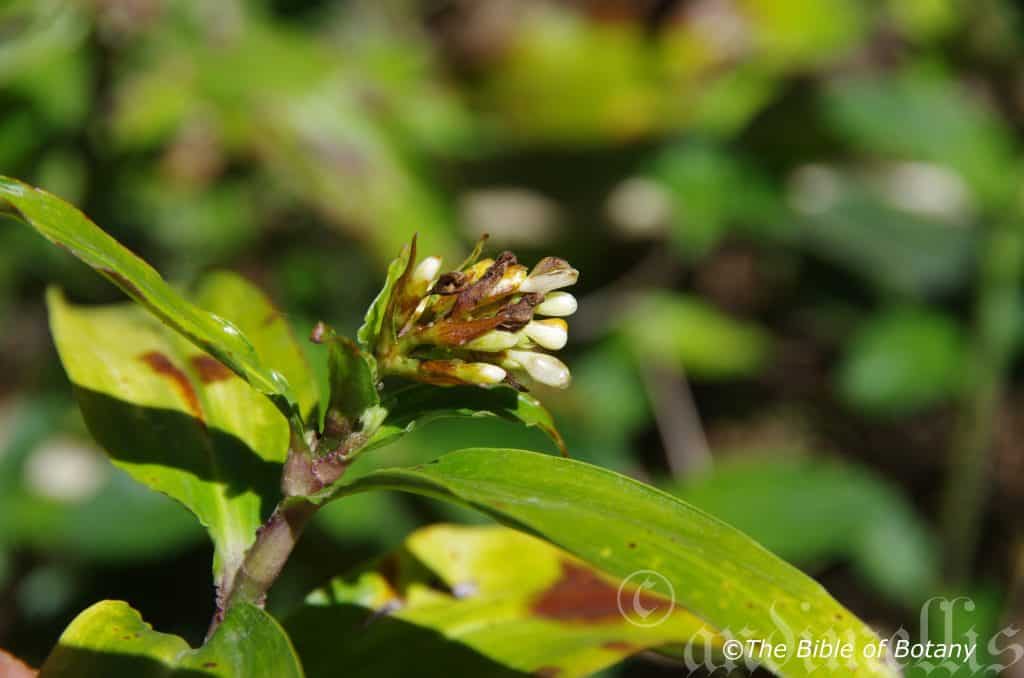
Washpool National Park NSW
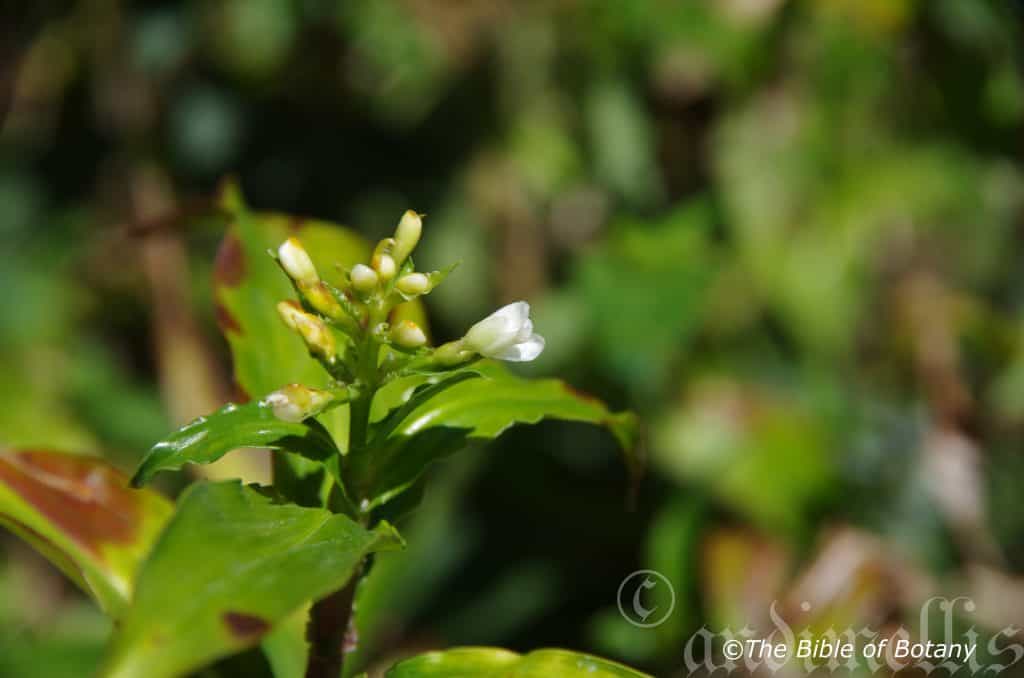
Washpool National Park NSW
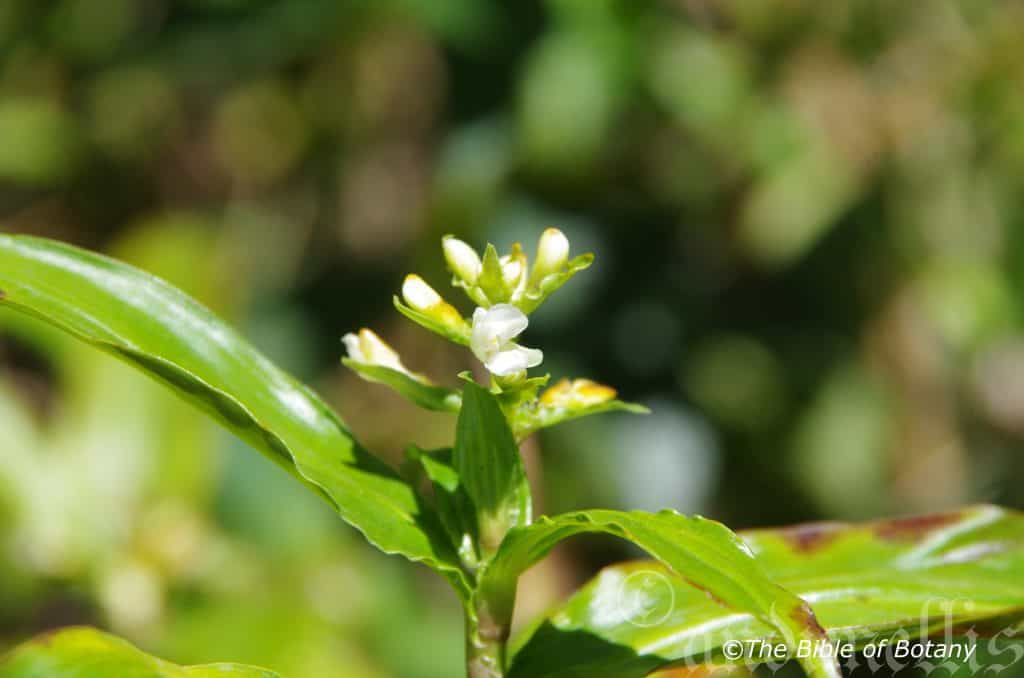
Washpool National Park NSW
Pollia crispata
Classification:
Unranked: Monocots
Unranked: Commelinids
Order: Commelinales
Family: Commelinaceae
Genus: Is named in honour of Jan van der Poll who was a Dutch botanist.
Specie: From Crispus, which is Latin for a curl, curly or wavy. It refers to organs especially the sheaths which have curly, wavy or ruffled surface or margin.
Sub species:
Common Name: Pollia
Distribution:
Pollia crispata is found in 2 disjunct populations south from the Windsor Tablelands to The Paluma National Park in north eastern coastal Queensland while the southern populations are found from Granite Creek near Miriam Vale to Belmore Falls south of Sydney. It is found on and east of the Great Dividing Range.
https://avh.ala.org.au/occurrences/search?taxa=Pollia+crispata#tab_mapView
Habitat Aspect Climate:
Pollia crispata prefers light dappled shade to dense shade. It grows on moist rocky ledges in crevices on cliffs, adjacent to and in rainforests or at times in moist sheltered Eucalyptus forests. The altitude ranges from 50 meters to 940 meters ASL.
The temperatures range from 1 degree in August to 36 degrees in January.
The rainfalls range from lows of 700mm to an average of 3200mm. The drier rainfall areas are associated with creeks, cascades, waterfalls where humid microclimates exist or water spray and mists are common factors in the environment.
Soil Requirements:
Pollia crispata prefers sandy loams to medium gritty clays often with copious quantities of leaf litter. The soils are usually derived from decomposed granites, brown basalts, black basalts or at times sandstones. The soils pH ranges from 5pH to 6.5pH. It does not tolerate water logged soils however the soils are continually damp throughout the year. Non saline soils to moderately saline soils are tolerated.
Height & Spread:
Wild Plants: 0.6m to 1m by 0.6m to 0.8m.
Characteristics:
Pollia crispata grows as a perennial terrestrial or lithophytic herb with ascending deep green, succulent stems. The younger stems are grass-green, often tinged reddish and glabrous. The stems often root and shoot at the nodes under ideal conditions.
The opposite leaves are fleshy, narrow ovate and measure 100mm to 190mm in length by 20mm to 35mm in width. The petioles are sheathing and measure 2mm to 4mm in length. The sheaths are grass-green with reddish markings and dry off white to fawnish after the leaf has been discarded. The sheaths are undulating and crispate around the orifice and measure 25mm to 35mm in length. The bases taper to the petiole while the apexes are acuminate. The concolourous laminas are grass-green, semi glossy and glabrous. The laminas are flat or recurve upwards from the midvein to the margins and decurve downwards sharply near the apexes and are undulating. The margins are entire. The midvein is strongly prominent on the lower lamina while the lateral parallel veins are slightly prominent.
The infloresecence are short, racemes born from the terminals. The racemes measure 35mm to 50mm in length. The pedicels measure 2mm to 5mm in length. The narrow oblong bract is pale, opaque, green. The 3 white or at times pastel blue or lilac, cupuliform outer tepals are imbricate and measure 3mm to 4.5mm in length by in 1mm to 1.5mm width. The 3 white or at times pastel blue or lilac, cupuliform inner tepals are broad ovate and measure 4mm to 6mm in length by in 4mm to 6mm width.
The 3 white fertile anterior stamens and 3 white posterior staminodes have filiform filaments. The erect, white style measures 4.5mm to 6mm in length. The flowers appear from September to May.
The fruits are globose, glossy capsules. The capsules are enclosed in the persistent tepals and measure 5mm to 6mm in length by 4mm to 5mm in diameter. The pale green persistent calyxes turn pale brown when ripe. The seeds are deep grey.
Wildlife:
Pollia crispata supports many pollinators and insects including Syrphini species, Betasyrphus sp. which preferred sunlit flowers. The Syrphid Episyrphus sp. was common most seasons but generally restricted its visits to shaded and dapple-lit flowers. Most Halictid bees were very timid and easily disturbed. On one occasion the large trap-lining anthophorine bee, Amegilla bombiformis approached flowers at the Lorien site. In all at the above site 25 different species were seen visiting the flowers for nectar or pollen.
https://citeseerx.ist.psu.edu/viewdoc/download?doi=10.1.1.525.8238&rep=rep1&type=pdf
Cultivation:
Pollia crispata is a great ground cover for rainforest or shaded positions in the garden. It always looks fresh provided ground moisture is retained throughout the year. It is most suitable for small, medium and large gardens close to the coast or high in the mountains in warm frost areas in temperate zones or sub-tropical gardens. It does well beneath the canopy or rainforest type trees especially alongside paths where a little additional light carries to the rainforest floor.
It is great in small, moist, shaded rockeries as a fill in plants or along riparian zones and drainage lines in the garden. Here they can be planted in small groups to create a lush tropical look. If they surrounded by taller plants with fine or large foliages that are pale green, deep green, red, pink or yellow foliages then year round contrasts can be created with a strong accent on the on the floor and vertical lines.
Plants should be replaced every 12 months to maintain vigour and all year uninterrupted beauty.
Propagation:
Seeds: Pollia crispata are best grown from cuttings rather than seed especially when a particular form or leaf colour is required. Seeds can be placed directly into a seed tray with a good organic seed raising mix and kept moist or wet.
When the seedlings are 40mm to 60mm tall they can be repotted into 50mm native tubes. As they reach 150mm to 200mm in height they can be planted out into a shaded area in the garden.
Cuttings: Pollia crispata strike very easy from cuttings and this method is the easiest way to increase small plant numbers or to replace aged plants every 12 months.
Use 100mm to 120mm long cuttings from the previous or present season’s growth after they have hardened off. They can be taken at any time of the year in warmer climates where frosts do not occur. Remove half the leaves from the lower section and stand the cuttings in the mix in individual 50mm native tubes, with one pair of nodes just below the surface of the mix. Place the tubes in a warm not hot position under 50mm to 70mm shade and keep moist not wet. When the cuttings have obviously struck and have developed good roots, harden them off before moving them to a new location and or planting out in full shade.
Fertilize using seaweed, fish emulsion or organic chicken pellets soaked in water on an alternate basis. Fertilize every two months until the plants are established then twice annually in early September and March to maintain better colour, health, vitality and flowering
Further Comments from Readers:
“Hi reader, it seems you use The Bible of Botany a lot. That’s great as we have great pleasure in bringing it to you! It’s a little awkward for us to ask, but our first aim is to purchase land approximately 1,600 hectares to link several parcels of N.P. into one at The Pinnacles NSW Australia, but we need your help. We’re not salespeople. We’re amateur botanists who have dedicated over 30 years to saving the environment in a practical way. We depend on donations to reach our goal. If you donate just $5, the price of your coffee this Sunday, We can help to keep the planet alive in a real way and continue to bring you regular updates and features on Australian plants all in one Botanical Bible. Any support is greatly appreciated. Thank you.”
In the spirit of reconciliation we acknowledge the Bundjalung, Gumbaynggirr and Yaegl and all aboriginal nations throughout Australia and their connections to land, sea and community. We pay our respect to their Elders past, present and future for the pleasures we have gained.
Polyalthia nitidissima
Classification:
Unranked: Magnoliids
Order: Magnoliales
Family: Annonaceae
Genus: From Poly, which is Ancient Greek for many and Althía, which is Ancient Greek to cure. It refers to some of the plants, which were used for curing many different ailments.
Specie: From Nitere/Nitidus, which is Latin for shiny, bright or polished and -Issima, which is Latin for very or the most – “-est”. It refers to leaves and or stems which are the brightest and shiniest.
Sub species:
Common Name Shinny Leaf Tree or Canary Beech.
Distribution:
Polyalthia nitidissima is found in 2 isolated populations. The western population is found north of a line from Macadam Range on the west coast of the Northern Territory to the Upper Liverpool River and Chester Creek, Kulnguki with further populations at Mirryatja, Cove Peninsular, Blue Mud Bay and Groote Eyelandt on the east coast.
In the east it is found south from the tip of Cape York Peninsular to Big Lake on the west coast of the Peninsular in Far North Queensland to Woody Head near Iluka in far north eastern coastal New South Wales and many of the off shore Islands. It is found on and east of the Great Dividing Range to the coast except for a population on Warrigal Creek near Charters Towers.
https://avh.ala.org.au/occurrences/search?taxa=Polyalthia+nitidissima#tab_mapView
Habitat Aspect Climate:
Polyalthia nitidissima prefers light dappled shade to full sun. It grows in and adjacent to dry rainforests, littoral rainforests, monsoonal forests and vine forests close to the coast usually at the lower altitude levels. The altitude ranges from 2 meters to 800 meters ASL.
The temperatures range from 2 degrees in August to 42 degrees in January.
The rainfalls range from lows of 1000mm to an average of 3200mm.
Soil Requirements:
Polyalthia nitidissima prefers sandy clays to heavy gritty clays, medium silts to heavy silts or mud often with copious quantities of forest litter or decaying vegetable matter. The soils are usually derived from decomposed granites, sandstones, metamorphic rocks, brown basalts, black basalts, alluvial deposits or accumulated sandy loams. The soils pH ranges from 4.5pH to 6pH. It does not tolerate water logged soils but prefers soils that are moist throughout the year while seasonal inundations for short periods are tolerated. Non saline soils to extremely saline soils are tolerated.
Height & Spread:
Wild Plants: 8m to 12m by 5m to 7m.
Characteristics:
Polyalthia nitidissima grows as a spreading small tree with deep grey almost black bark. The bark is somewhat fibrous with a boot lace like pattern. The older stems are mid grey to deep grey and smooth to slightly rough or glabrous and covered in paler coloured lenticels. The younger zig zagging stems are green to bluish-green or greyish-green and glabrous to moderately covered in pale brown or fawn sericeous hairs.
Polyalthia nitidissima’s alternate, elliptic, lanceolate or oblanceolate leaves measure 40mm to 145mm in length by 14mm to 55mm in width. The petioles measure 2.5mm to 6mm in length. The bases are rounded, cuneate and at times decurrent while the apexes are acuminate or rarely acute or obtuse. The discolourous laminas are deep green to sea-green, glabrous and glossy on the upper laminas while the lower laminas are paler with 1 to 10, fawn, hairy domatia and dull. The laminas are flat to slightly recurve upwards from the midvein to the margins and de curve at the apexes. The laminas are convex between the main vein and lateral veins while the margins are entire. The mid vein and 6 to 9 sub opposite lateral veins are prominent on both laminas while the reticulated veins are faintly prominent.
The infloresecence are born solitary or in pairs from the leaf axils. The basal bract is ovate and measures 1.5mm to 2.5mm in length. The pedicels are sparsely covered in fawn sericeous hairs and measure 10mm to 25mm in length. The free sepals are depressed-ovate and glabrous except for the margins which are covered in fawn ciliate hairs. The sepals measure 0.8mm to 2mm in length by 2mm to 2.3mm in width. The 3 yellowish-green to yellow or rarely white inner and 3 yellowish-green to yellow or rarely white outer petals are similar. The recurved or flat, oblong petals are glabrous and have a slight medial ridge on the inner surface. They measure 10mm to 16mm in length by 4mm to 5mm in width.
The calyxes measure 1.4mm to 1.8mm in length while the 5 elliptical lobes measure 0.7mm to 1 mm in length. The green calyxes are covered white to silvery hirtellous hairs. The deep blue or deep purple corollas measure 9mm to 12mm in length. The decurve corolla is sparsely covered in white hirtellous hairs while the lobes are sparsely covered in shorter gland tipped hairs and at times sessile glands. The 2 upper lobes are united, erect and measure 6mm to 8mm in length. The three lower lobes extend downwards and measure 3mm to 4mm in length.
The 30 to 40 or rarely more, pale yellow or white stamens measure 0.8mm to 1mm in length. The ovary measures 2mm to 2.2mm in length and is sparsely covered in fawn puberulent hairs. The sub globular stigma is sessile and covered in fawn puberulent hairs around the edges.
Polyalthia nitidissima’s fruits are globose or ovoid berries. The berries measure 8mm to 12mm in length by 6mm to 10mm in diameter. The green persistent lengthen around the base of the red to orange-red berries. The stipes measure 2.5mm to 5mm in length and radiate out from the apex of the pedicel. The seed’s testa is smooth and is glabrous at maturity.
Wildlife:
Polyalthia nitidissima leaves are the preferred food source for the Green Spotted Triangle Butterfly or Green Triangle Butterfly Graphium Agamemnon and the Pale Green Triangle Butterfly Graphium eurypylus.
Cultivation:
Polyalthia nitidissima is a beautiful small bushy tree for small and medium size gardens. It always looks fresh especially where a little water is added during the dry season or ground moisture is retained. It is most suitable for warm temperate or sub-tropical gardens. In cultivation the trees grow 8 meters to 10 meters in height by 5 meters to 8 meters in diameter when grown in the open to taller and narrower if grown in a more enclosed rainforest environment.
It does well in mixed small rainforest gardens where the deep grey almost black trunk can be used as a contrasting feature against paler trunked trees like Tristaniopsis collina, Tristaniopsis laurina Brachychiton acerifolium or some of the Syzygium specie like Syzygium australe, Syzygium moorei, Syzygium cormiflorum or Syzygium malaccense.
The trees would make very good accent trees in front of low set commercial, industrial sheds or single story school classrooms where they will break up hard rigid architectural lines and give warmth and breadth to a building. In front of high rise buildings they give balance down the street especially where there are a lot of pale colours used.
The trees are suitable for small to medium orchids and ferns once a suitable microclimate has been established.
Propagation:
Seeds: Polyalthia nitidissima seeds can be sown directly into a deep seed raising mix after treatment. Treat the seeds by removing all the pulp from the berries and washing well. Place the trays beneath 30mm to 50mm shade cloth and keep moist not wet. When the seedlings are 20mm to 25mm tall, prick them out and plant them into 50mm native tubes using a good organic mix.
As the seedlings roots reach the bottom of the tubes plant them out into their permanent position. Keep seedlings moist and allow them to dry out between watering until established.
Fertilize using seaweed, fish emulsion or organic chicken pellets soaked in water on an alternate basis. Fertilize every two months until the plants are established then twice annually in early September and March to maintain better colour, health, vitality and flowering
Further Comments from Readers:
“Hi reader, it seems you use The Bible of Botany a lot. That’s great as we have great pleasure in bringing it to you! It’s a little awkward for us to ask, but our first aim is to purchase land approximately 1,600 hectares to link several parcels of N.P. into one at The Pinnacles NSW Australia, but we need your help. We’re not salespeople. We’re amateur botanists who have dedicated over 30 years to saving the environment in a practical way. We depend on donations to reach our goal. If you donate just $5, the price of your coffee this Sunday, We can help to keep the planet alive in a real way and continue to bring you regular updates and features on Australian plants all in one Botanical Bible. Any support is greatly appreciated. Thank you.”
In the spirit of reconciliation we acknowledge the Bundjalung, Gumbaynggirr and Yaegl and all aboriginal nations throughout Australia and their connections to land, sea and community. We pay our respect to their Elders past, present and future for the pleasures we have gained.
Polycarpaea corymbosa
Classification:
Class: Equisetopsida
Subclass: Magnoliidae
Superorder: Caryophyllanae
Order: Caryophyllales
Family: Caryophyllaceae
Genus: From Polús, which is Ancient Greek for many and Karpós, which is Ancient Greek for a fruit. It refers to plants, which have many fruits.
Specie: From Korymb?s, which is Ancient Greek or Corymb?sa, which is Latin for a cluster of flowers. It refers to flowers, where the stems branch from different levels on the stalk’s axis but ultimately terminate at the same level.
Variety: Polycarpaea corymbosa var. breviflora. From Brevis, which is Latin for short and Fl?ris which is Latin for a flower or Fl?s, which is Roman for the goddess of spring and flowers. It refers to the petals which are much shorter than other species in the genus.
Variety: Polycarpaea corymbosa var. corymbosa. From Korymb?s, which is Ancient Greek or Corymb?sa, which is Latin for a cluster of flowers. It refers to flowers, where the stems branch from different levels on the stalk’s axis but ultimately terminate at the same level.
Variety: Polycarpaea corymbosa var. minor. From Korymb?s, which is Ancient Greek or Corymb?sa, which is Latin for a cluster of flowers. It refers to flowers, where the stems branch from different levels on the stalk’s axis but ultimately terminate at the same level.
Variety: Polycarpaea corymbosa var. torrensis. From Torrentis, which is Latin for flowing or seething and Anum/Ensis, which is Latin for to originate from. It refers to plants which were first discovered on the Torres Strait Islands in far north Queensland.
Variety: Polycarpaea corymbosa var. typica. From Typikós, which is the Ancient Greek or Typic?lis, which is Ancient Latin or later Typicus, which is Modern Latin for typical, average looking or normal. It refers to characteristics of species, which are very typical of the genus or a subspecies or variety that is typical of the species.
Common Name:
Distribution:
Polycarpaea corymbosa var. breviflora is found from the Kymberley range in north western Western Australia in a line south east to Milparinka in far north western New South Wales and then north east to Gladstone in south Queensland.
Polycarpaea corymbosa var. corymbosa is found in the northern half of Australia from Sharks Bay in central western, Western Australia east to the Fraser Coast in southern.
Polycarpaea corymbosa var. minor is found in a line east from Hell’s gate in far north western Queensland to Broken Hill in south western New South Wales. It also occurs in two isolated regions in the Northern Territory at Mount Brockman and Tennent Creek and one in Western Australia at Prince Regent Nature Reserve.
Polycarpaea corymbosa var. torrensis is found on the Torres Straight Islands and Cape York Peninsular in far north eastern Queensland.
Polycarpaea corymbosa var. typical is found in the northern half of Australia from Sharks Bay in central western, Western Australia east to the Fraser Coast in southern.
https://avh.ala.org.au/occurrences/search?taxa=Polycarpaea+corymbosa#tab_mapView
Habitat Aspect Climate:
Polycarpaea corymbosa prefers light dappled shade to full sun. It grows in savannah woodlands, open Eucalyptus forests, open Eucalyptus woodlands and at times coastal woodland heaths or coral islands. The altitude ranges from 2 meters to 1350 meters ASL.
The temperatures range from minus 4 degrees in August to 44 degrees in January.
The rainfalls range from lows of 150mm to an average of 2800mm.
Soil Requirements:
Polycarpaea corymbosa prefers to grow on skeletal and deep sandy loams to medium gritty clays often with copious quantities of leaf litter. The soils are usually derived from decomposed sandstones, alluvial deposits or at times granites, metamorphic rocks, brown basalts, basalts or accumulated coral sands. The soils pH ranges from 5pH to 8pH. It does not tolerate water logged soils. Non saline soils to moderately saline soils are tolerated.
Height & Spread: Wild Plants: 0.15m to 0.3m by 0.1m to 2m.
Characteristics:
Polycarpaea corymbosa is an erect herb with dichotomous branching. The branches are usually slender, hard and covered in white puberulent or floccose hairs or are rarely glabrous.
Polycarpaea corymbosa’s linear leaves are in whirls of 3 to 6 and measure 3mm to 20mm in length by 0.5mm to 1mm in width. The stipules measure 2mm to 4mm in length. The bases taper to the stems while the apexes are mucronate to aristate. The concolourous laminas are pale soft bluish-green to pale blue-green and are glabrous or sparsely covered in soft white puberulent hairs. The laminas are flat to involute at the margins while the margins are entire. The mid vein and lateral veins are slightly prominent on the lower laminas and are visible on the upper laminas.
The inflorescences are born on dense apical cymose. The leafless spikes measure 80mm to 100mm in length by 30mm to 40mm in diameter. There are often 2 lesser secondary spikes which are born between the base and the first whirl of flowers on the main spike. The wiry pedicels measure 5mm to 6mm in length.
The linear bracts are scarious and measure 2mm to 4mm in length. The 5 white chartaceous sepals measure 2mm to 3mm in length. The lanceolate, transparent sepal’s margins are glabrous to sparsely covered in white ciliate hairs. The sepals are thickened with a reddish to reddish-brown triangular patch at the base. The 5 transparent, ovate petal’s apexes are acute-obtuse, are free and measure 1mm to 1.5mm in length.
The 5 stamens are white and measure 0.5mm to 1mm in length. The ovoid ovary supports a short style. The trilobed stigma is white. The flowers appear throughout the year but mainly during spring and summer.
Polycarpaea corymbosa’s fruits are trilobed, ovoid capsules. The capsules measure 1.1mm to 1.6mm in length by 1mm to 1.3mm in diameter. The pale green persistent calyxes and capsules turn brown when ripe. The seeds are orbicular.
Note the above description has been observed from introduced weeds in southern Sichuan province in China. The origin of these plants is unknown to the author so they may or may not have originated from Australian stock.
Subspecie differences:
Polycarpaea corymbose var. minor’s stems and leaves are sparsely covered in white puberulent hairs.
Polycarpaea corymbose var. corymbosa’s stems and leaves are covered in white floccose hairs.
Wildlife:
Polycarpaea corymbosa appears not to have any predators on a regular basis. It is a preferred food for domestic mammals and kangaroos including the Swamp Wallaby (Wallabia bicolor) and the Pretty Face Wallaby (Macropus parryi).
Cultivation:
Polycarpaea corymbosa is a small weedy looking herb that doesn’t hold much horticultural potential but is rather quaint in its own particular way. It always looks fresh especially where a little water is added during the dry season or ground moisture is retained. It may find a place if mass planted with gaps between small clumps of 5 to 7 are grouped and intermingled with other very small colourful annuals where it’s almost translucent flowers would contrast nicely and offer a small cut flower. The flowers are produced in profusion over a short period which could make them an attractive addition to the garden amongst reds, blues or even deep orange annuals.
Plants should be replaced every 6 months to maintain vigour and all year uninterrupted colour. As they will flower all year under favourable conditions it makes them easy to plan for when an additional soft coloured annual is required in a fill in spot.
Propagation:
Seeds: Polycarpaea corymbosa seeds can be sown directly into a deep seed raising mix. Place seeds onto the mix and press into the surface. Place the trays beneath 20mm shade cloth and keep moist not wet.
When the seedlings are 20mm to 25mm tall, prick them out and plant them into 50mm native tubes using a good organic mix.
As the seedlings roots reach the bottom of the tubes plant them out into their permanent position. Keep seedlings moist and allow them to dry out between watering until established.
Fertilize using Seaweed, fish emulsion or organic chicken pellets soaked in water and apply the liquid on an alternate basis. Fertilize every 2 months until the plants are established then once a year there after in spring or autumn to maintain better colour, health and vigour.
Further Comments from Readers:
“Hi reader, it seems you use The Bible of Botany a lot. That’s great as we have great pleasure in bringing it to you! It’s a little awkward for us to ask, but our first aim is to purchase land approximately 1,600 hectares to link several parcels of N.P. into one at The Pinnacles NSW Australia, but we need your help. We’re not salespeople. We’re amateur botanists who have dedicated over 30 years to saving the environment in a practical way. We depend on donations to reach our goal. If you donate just $5, the price of your coffee this Sunday, We can help to keep the planet alive in a real way and continue to bring you regular updates and features on Australian plants all in one Botanical Bible. Any support is greatly appreciated. Thank you.”
In the spirit of reconciliation we acknowledge the Bundjalung, Gumbaynggirr and Yaegl and all aboriginal nations throughout Australia and their connections to land, sea and community. We pay our respect to their Elders past, present and future for the pleasures we have gained.
Polygala japonica
Classification:
Class: Equisetopsida
Subclass: Magnoliidae
Superorder: Rosanae
Order: Fabales
Family: Polygalaceae
Genus: From Polús, which is Ancient Greek for many or much and Galon/Gála, which are Greek for milk. It refers to the belief people had for years that mammals which consumed these plants produced more milk.
Specie: From Japanese, which is Latinized for Japan. It refers to plants, which were first discovered in Japan.
Sub species:
Common Name: Dwarf Milkwort
Distribution:
Polygala japonica is found south from Banana in central eastern Queensland to the south eastern highlands east of Melbourne and south eastern Gippsland in southern coastal Victoria with a population further north at Diamond Cliffs near Credition. The Melbourne populations may not exist anymore as the findings were from 1904 with no recent mentions of the plants in this locality. It is found on the Western Slopes, on and east of the Great Dividing Range to the coast.
It is also found in Assam, China North-Central, China South-Central, China Southeast, Japan, Khabarovsk, Korea, Laos, Maluku, Manchuria, Myanmar, Nansei-shoto, New Guinea, Papua, Philippines, Primorye, Taiwan, Thailand, Tibet and Vietnam
https://avh.ala.org.au/occurrences/search?taxa=Polygala+japonica#tab_mapView
Habitat Aspect Climate:
Polygala japonica prefers light dappled shade to full sun. It grows in grasslands, beneath open Eucalyptus forests, open woodlands or at times coastal woodland heaths. The altitude ranges from 5 meters to 1150 meters ASL.
The temperatures range from minus 5 degrees in August to 38 degrees in January.
The rainfalls range from lows of 350mm to an average of 2000mm.
Soil Requirements:
Polygala japonica prefers to grow on skeletal to deep sandy loams to medium gritty clays often with copious quantities of leaf litter. The soils are usually derived from decomposed granites, metamorphic rocks or accumulated peaty beach sands. The soils pH ranges from 5pH to 6.5pH. It does not tolerate water logged soils. Non saline soils to moderately saline soils are tolerated.
Height & Spread:
Wild Plants: 0.15m to 0.2m by 0.1m to 0.2m.
Characteristics:
Polygala japonica grows as a prostrate or ascending annual with the stems being covered in white pilose hairs. The new growth is pinkish-maroon.
The alternate variable ovate to elliptic leaves measure 5mm to 20mm in length by 3mm to 8mm in width. The petioles measure 1mm to 2mm in length. The bases are cuneate to rounded while the apexes are acute. The discolourous laminas are grey-green to deep grey-green and glabrous on the upper laminas while the lower laminas are slightly paler. The laminas are flat to slightly recurve upwards from the mid vein to the margins and decurve downwards on the apical third. The margins are entire. The mid vein is strongly prominent on the lower lamina and is covered in hirtellous hairs. The lateral veins are faintly prominent on both laminas and the reticulated veins are faintly prominent on the upper lamina.
The infloresecence are racemes born from the leaf axils. The racemes measure 10mm to 30mm in length. The pedicels measure 2mm to 6mm in length. The greyish-pink, narrow oblong to lanceolate sepals are covered in white sericeous hairs and measure 2mm to 2.2mm in length. The mauve to purple outer lateral petals are ovate to oblong-ovate and measure 5mm to 6mm in length by 4mm to 6mm in width. The lanceolate wing petals measure 3mm to 4mm in length. The keel is as long as or slightly longer than the lateral petals and has a much branched appendages at the apex.
The flowers appear throughout the year with a peak from October to December.
Polygala japonica’s fruits are broad obcordate capsules. The capsules measure 4mm to 5mm in length by 3mm to 4mm in diameter. The pale green persistent calyxes and capsules turn grey when ripe.
Wildlife:
Polygala japonica’s wildlife is unknown to the author.
Cultivation:
Polygala japonica is a beautiful small accent plant with its unusual flowers. It always looks fresh especially where a little water is added during the dry season or ground moisture is retained. It is most suitable for small, medium and large gardens close to the coast or high in the mountains in warm temperate or sub-tropical gardens. It does well beneath tall trees including Tristania and Eucalyptus. The flowers are produced in profusion over a very long period which makes them a beautiful addition to the garden. In cultivation it grows from 0.2 meters to 0.3 meters in height by 0.3 meters to 0.4 meters in diameter.
It is great in small rockeries as a fill in plant. Here it can be planted in small groups of 5 or 7 for the best displays. If it is surrounded by taller plants with fine foliages that are pale green then a strong all year round contrast can be created with a strong accent in the areas between the main shrubs within the bed. Pale yellow, cream or white flowers will also create that dominate affect between the shrubs giving height and strength to the bed.
The plants should be replaced every 12 months to maintain vigour and all year uninterrupted beauty. When mass planting, plant the seedlings out at 0.1 meter to 0.2 meter centers.
Propagation:
Seeds: Polygala japonica seeds can be sown directly into a seed raising mix. Place seeds onto the mix and press into the surface. Place the trays beneath 20mm shade cloth and keep moist not wet. When the seedlings are 20mm to 25mm tall, prick them out and plant them into 50mm native tubes using a good organic mix.
As the seedlings roots reach the bottom of the tubes plant them out into their permanent position. Keep seedlings moist and allow them to dry out between watering until established.
Fertilize using seaweed, fish emulsion or organic chicken pellets soaked in water on an alternate basis. Fertilize every two months until the plants are established then twice annually in early September and March to maintain better colour, health, vitality and flowering
Further Comments from Readers:
“Hi reader, it seems you use The Bible of Botany a lot. That’s great as we have great pleasure in bringing it to you! It’s a little awkward for us to ask, but our first aim is to purchase land approximately 1,600 hectares to link several parcels of N.P. into one at The Pinnacles NSW Australia, but we need your help. We’re not salespeople. We’re amateur botanists who have dedicated over 30 years to saving the environment in a practical way. We depend on donations to reach our goal. If you donate just $5, the price of your coffee this Sunday, We can help to keep the planet alive in a real way and continue to bring you regular updates and features on Australian plants all in one Botanical Bible. Any support is greatly appreciated. Thank you.”
In the spirit of reconciliation we acknowledge the Bundjalung, Gumbaynggirr and Yaegl and all aboriginal nations throughout Australia and their connections to land, sea and community. We pay our respect to their Elders past, present and future for the pleasures we have gained.
Polygala linariifolia
Classification:
Class: Equisetopsida
Subclass: Magnoliidae
Superorder: Rosanae
Order: Fabales
Family: Polygalaceae
Genus: From Polús, which is Ancient Greek for many or much and Galon/Gála, which are Greek for milk. It refers to the belief people had for years that mammals which consumed these plants produced more milk.
Specie: From Linearis, which is Latin for straight lines. It usually refers to leaves, which are narrow and where the veins appear in straight lines.
Sub species:
Common Name:
Distribution:
Polygala linariifolia is found in 2 isolated populations and several disjunct populations. In the north coast of Western Australia it is found on the Ord River Plain and on the head waters of the King Edward River while in the Northern Territory it is found along the Darwin coast and on the Adelaide River.
In the east it is found north and east of a line from north east of Burketown, the Diamantina National Park east to Injune and south to Dirranbandi in Queensland and Narrabri then east to Coutes Crossing in New South Wales. It is found further west along the Condamine and Warrego Rivers as well as from Currawinya National Park to Weeba Gate. It is found on the Western Plains, Western Slopes, on and east of the Great Dividing Range.
https://avh.ala.org.au/occurrences/search?taxa=Polygala+linariifolia#tab_mapView
Habitat Aspect Climate:
Polygala linariifolia prefers light dappled shade to full sun. It grows dry, open sclerophyll forests, open savannah woodlands, open Eucalyptus woodlands or open Eucalyptus forests. The altitude ranges from 5 meters to 750 meters ASL.
The temperatures range from minus 3 degrees in August to 41 degrees in January.
The rainfalls range from lows of 300mm to an average of 2800mm.
Soil Requirements:
Polygala linariifolia prefers to grow on skeletal to deep sandy loams to medium clays often with or without copious quantities of forest litter. The soils are usually derived from decomposed sandstones, granites, metamorphic rocks or accumulated sands. The soils pH ranges from 5pH to 6pH. It does not tolerate water logged soils. Non saline soils to moderately saline soils are tolerated.
Height & Spread:
Wild Plants: 0.1m to 0.2m by 0.2m to 3m.
Characteristics:
Polygala linariifolia is an annual or perennial herb with erect to ascending branches. The stems are pale green to pale grass-green sparsely covered in white pilose or hirsute hairs.
The variable alternate obovate, linear-oblong or narrow elliptic leaves measure 5mm to 45mm in length by 1mm to 10mm in width. The petioles measure 0.5mm to 1.5mm in length. The bases taper to the petiole while the apexes are acute. The concolourous laminas are pale soft green to pale soft blue-green, and are sparsely covered in soft white pilose hairs. The laminas are flat and straight or recurve from the mid vein to the margins while the margins are entire and thickened. The mid vein is slightly prominent on the lower lamina and is visible on the upper lamina.
The infloresecence are racemes born from the leaf axils. The racemes measure 10mm to 90mm in length. The pedicels measure 2mm to 6mm in length. The greyish-pink, narrow oblong to lanceolate sepals are sparsely covered in white pilose hairs and measure 1mm to 2mm in length. The mauve to pale lavender outer lateral petals are ovate to orbicular with a broad emarginate apex and measure 1.2mm to 2.2mm in length by 1.2mm to 2.2mm in width. The lanceolate wing petals measure 3mm to 4mm in length. The keel is as long as or slightly longer than the lateral petals with 2 forked appendages at the apex.
The flowers appear from September to February.
The fruits are broad oblong capsules. The capsules measure 3mm to 4mm in length by 2.5mm to 3.5mm in diameter. The pale green persistent calyxes and capsules turn grey when ripe.
Wildlife:
Polygala linariifolia’s wildlife is unknown to the author.
Cultivation:
Polygala linariifolia is a beautiful small accent plant with its unusual flowers. It always looks fresh especially where a little water is added during the dry season or ground moisture is retained. It is most suitable for small, medium and large gardens close to the coast or high in the mountains in warm temperate or sub-tropical gardens. It does well beneath tall trees including Tristania and Eucalyptus. The flowers are produced in profusion over a very long period which makes them a beautiful addition to the garden. In cultivation it grows from 0.2 meters to 0.3 meters in height by 0.3 meters to 0.4 meters in diameter.
It is great in small rockeries as a fill in plant. Here it can be planted in small groups of 5 or 7 for the best displays. If it is surrounded by taller plants with fine foliages that are pale green then a strong all year round contrast can be created with a strong accent in the areas between the main shrubs within the bed. Pale yellow, cream or white flowers will also create that dominate affect between the shrubs giving height and strength to the bed.
The plants should be replaced every 12 months to maintain vigour and all year uninterrupted beauty. When mass planting, plant the seedlings out at 0.1 meter to 0.2 meter centers.
Propagation:
Seeds: Polygala linariifolia seeds can be sown directly into a deep seed raising mix. Place seeds onto the mix and press into the surface. Place the trays beneath 20mm shade cloth and keep moist not wet. When the seedlings are 20mm to 25mm tall, prick them out and plant them into 50mm native tubes using a good organic mix.
As the seedlings roots reach the bottom of the tubes plant them out into their permanent position. Keep seedlings moist and allow them to dry out between watering until established.
Fertilize using seaweed, fish emulsion or organic chicken pellets soaked in water on an alternate basis. Fertilize every two months until the plants are established then twice annually in early September and March to maintain better colour, health, vitality and flowering
Further Comments from Readers:
“Hi reader, it seems you use The Bible of Botany a lot. That’s great as we have great pleasure in bringing it to you! It’s a little awkward for us to ask, but our first aim is to purchase land approximately 1,600 hectares to link several parcels of N.P. into one at The Pinnacles NSW Australia, but we need your help. We’re not salespeople. We’re amateur botanists who have dedicated over 30 years to saving the environment in a practical way. We depend on donations to reach our goal. If you donate just $5, the price of your coffee this Sunday, We can help to keep the planet alive in a real way and continue to bring you regular updates and features on Australian plants all in one Botanical Bible. Any support is greatly appreciated. Thank you.”
In the spirit of reconciliation we acknowledge the Bundjalung, Gumbaynggirr and Yaegl and all aboriginal nations throughout Australia and their connections to land, sea and community. We pay our respect to their Elders past, present and future for the pleasures we have gained.

The Pinnacles NSW
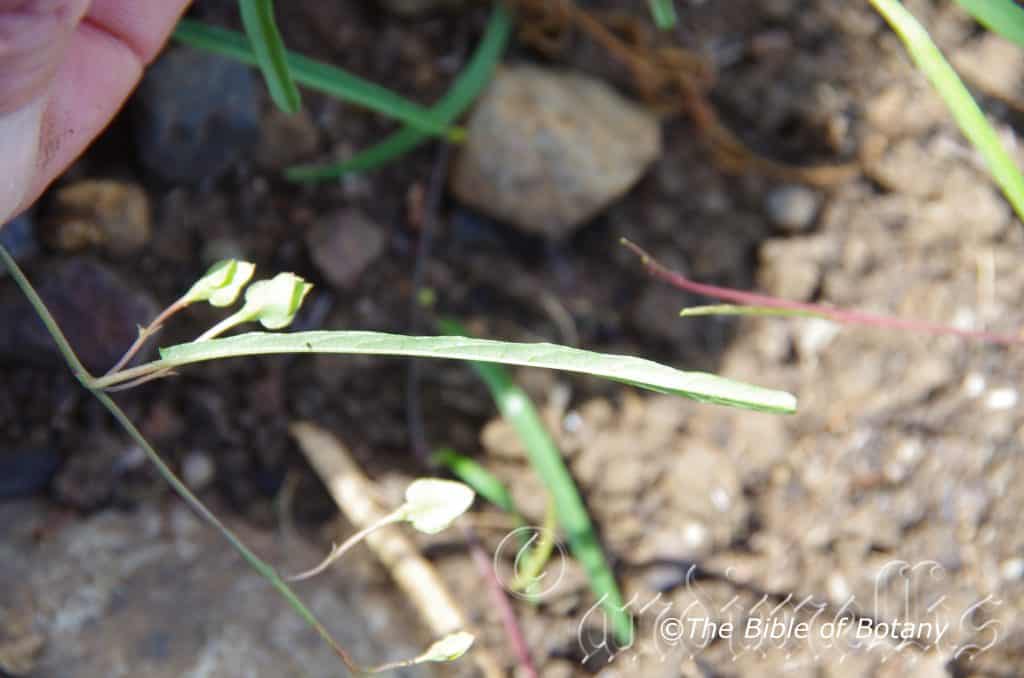
Baryugal NSW

Baryugal NSW

The Pinnacles NSW

The Pinnacles NSW
Polymeria calycina
Classification:
Class: Equisetopsida
Subclass: Magnoliidae
Superorder: Asteranae
Order: Solanales
Family: Convulaceae
Genus: From Polús, which is Ancient Greek for many and Méris, which is Ancient Greek for a part. It refers to organs, which have several distinct parts.
Specie: From Kályx/Kalýptein, which are Greek for a husk or covering. It refers to plants, having a conspicuous cup shaped calyx and or sepals.
Sub species:
Common Name: Slender Bindweed or Common Bindweed.
Distribution:
Polymeria calycina is found in 3 isolated populations. In central western, Western Australia it is bounded by Karratha, Oakover River Crossing at Marble Bar, Mount Newman and Carnarvon. To the north it is found along the Ord River and its tributaries and the Bungle National Park and in north eastern Western Australia and along the Keep River in north western, Northern Territory.
In the east it is found south from Fairlight in Queensland to Long Swamp near Bermagui in south eastern coastal New South Wales. It is found on the western Plains, on and east of the Great Dividing Range in Queensland while the southern populations south of Coffs Harbour are found along the coastal plains and lower altitudes of the coastal ranges.
https://avh.ala.org.au/occurrences/search?taxa=Polymeria+calycina#tab_mapView
Habitat Aspect Climate:
Polymeria calycina prefers light dappled shade to full sun. It grows in moist open woodlands, moist woodland grasslands, moist Eucalyptus forests, moist coastal heaths or especially on creek and stream meanders. The altitude ranges from 5 meters to 1150 meters ASL.
The temperatures range from minus 2 degrees in August to 45 degrees in January.
The rainfalls range from lows of 300mm to an average of 2400mm.
Soil Requirements:
Polymeria calycina prefers to grow on sandy loams to medium clays or medium silts to heavy silts often with copious quantities of leaf litter. The soils are usually derived from decomposed sandstones, granites metamorphic rocks, brown basalts, black basalts, podsolic soils, alluvial deposits along creek or stream flats and deltas. The soils pH ranges from 4.5pH to 7.5pH. It does not tolerate water logged soils however the soils are usually retain moisture throughout the year. Non saline soils to very saline soils are tolerated as are salt laden winds.
Height & Spread:
Wild Plants: 0.1m to 0.2m by 0.6m to 1m.
Characteristics:
Polymeria calycina grows as a prostrate trailing perennial with somewhat twinning stems. The stems are grass-green to greyish-green and terete. The younger stems are moderately covered in white pulverulent hairs.
The alternate linear, elliptic to ovate-oblong leaves measure 10mm to 65mm in length by 3mm to 20mm in width. The petioles measure 5mm to 35mm in length. The bases are cordate to sagittate to auriculate while the apexes are rounded to round-broad acute often with an emarginate tip. The discolourous laminas are deep green to deep bluish-green and sparsely to moderately covered in soft white pubescent hairs especially when young. The laminas recurve upwards from the mid vein to the margins and are at times convex between the mid vein and the lateral veins. The mid vein and lateral veins are slightly prominent on the lower lamina and are visible on the upper lamina.
The inflorescences are born singularly or in small clusters of 2 or 3 flowers from the leaf axils. The pedicels measure 15mm to 30mm in length. The sepals are unequal. The outer broad ovate to cordate sepals measure 6mm to 12mm in length by 5mm to 8mm in width. The inner sepals are shorter, narrower and acuminate. The broad funnel form corolla measures 7mm to 15mm in length with the 5 united lobes spreading widely and measure 8mm to 18mm in diameter. The corolla tube and lobes are pink, pinkish-purple to violet with paler mid petaline bands that are sparsely covered in white puberulent hairs externally and internally. The corolla tube is yellowish-green on the throat and internally. The apexes are emarginate and lacerated.
The 5 white filaments are slightly exserted while the oblong anthers are white. The 1mm to 1.2mm long basifixed anthers dehisces longitudinally on the anterior surface. It is at first erect then become divaricate at anthesis. The white styles are exserted. The flowers appear throughout the year with a peak during the warmer months.
The fruits are obovoid to globose, laterally compressed capsules. The capsules measure 4.5mm to 6.5mm in length by 04mm to 6mm in diameter. The pale green persistent calyxes turn deep grey when ripe. The seeds are deep grey to almost black and are sparsely to moderately covered in white pulverulent hairs.
Wildlife:
Polymeria calycina’s flowers are very attractive to pollen flies, native bees and supply an all year round source of protein.
Cultivation:
Polymeria calycina is an often overlooked accent plant with attractive flowers for the garden. It always looks fresh especially where a little water is added during the dry season or ground moisture is retained. It is most suitable for small, medium and large gardens close to the coast or high in the mountains in warm temperate or sub-tropical gardens. It does well beneath tall trees including Tristania and Eucalyptus or in open exposed situations on headlands and beach front properties. The flowers are produced in profusion over a very long period which makes them a beautiful addition to the garden.
In cultivation it will grow from 0.1 meter to 0.2 meters in height by 0.5 meters to 0.7 meters in diameter. It may need some tip pruning to make it bushier in the earlier stages.
It is great in small rockeries as a fill in plant but ensure it is not planted too close too other small sub shrubs or it will have a preference to climb over its neighbours. Here it can be planted in small groups of 2 or 3 to make it look bushier. If it is surrounded by taller plants with fine foliage that are pale green then year round contrasts can be created with strong accents between the ground cover and the upright plants. Deep red or orange flowers will also create that dominate affect at the center giving a more squat appearance and strength to the bed when It is in flower or if cream or white flowers are used a more upright affect will be created.
Plants should be replaced every 12 months to maintain vigour and all year uninterrupted beauty. When mass planting, plant the seedlings out at 0.4 meter to 0.5 meter centers.
Propagation:
Seeds: Polymeria calycina seeds can be sown directly into a deep seed raising mix. Place seeds onto the mix and press into the surface. Place the trays beneath 20mm shade cloth and keep moist not wet. When the seedlings are 20mm to 25mm tall, prick them out and plant them into 50mm native tubes using a good organic mix.
As the seedlings roots reach the bottom of the tubes nip the tips out and plant them out into their permanent position. Keep seedlings moist and allow them to dry out between watering until established.
Cuttings: Polymeria calycina strike very easy from cuttings and this method is the easiest way to increase small plant numbers or to replace aged plants every few years.
Use 100mm to 120mm long cuttings from the previous or present season’s growth after it has hardened off. They can be taken at any time of the year in warmer climates where frosts do not occur. Remove half the leaves from the lower section and stand the cuttings in the mix with one pair of nodes just below the surface of the mix. Place the trays in a warm not hot position under 30mm to 60mm shade and keep moist not wet. When the cuttings have obviously struck and have developed good roots prick them out and plant them into 50mm native tubes. Return the tubes where they have been growing to further harden off before moving them to a new location and or planting out.
Fertilize using seaweed, fish emulsion or organic chicken pellets soaked in water on an alternate basis. Fertilize every two months until the plants are established then twice annually in early September and March to maintain better colour, health, vitality and flowering
Further Comments from Readers:
“Hi reader, it seems you use The Bible of Botany a lot. That’s great as we have great pleasure in bringing it to you! It’s a little awkward for us to ask, but our first aim is to purchase land approximately 1,600 hectares to link several parcels of N.P. into one at The Pinnacles NSW Australia, but we need your help. We’re not salespeople. We’re amateur botanists who have dedicated over 30 years to saving the environment in a practical way. We depend on donations to reach our goal. If you donate just $5, the price of your coffee this Sunday, We can help to keep the planet alive in a real way and continue to bring you regular updates and features on Australian plants all in one Botanical Bible. Any support is greatly appreciated. Thank you.”
In the spirit of reconciliation we acknowledge the Bundjalung, Gumbaynggirr and Yaegl and all aboriginal nations throughout Australia and their connections to land, sea and community. We pay our respect to their Elders past, present and future for the pleasures we have gained.